

![]()
![]()
| Montague Street Cab Line Mr. J. V. Dubernell, Clothier, was at this dual address from 1882-1886 |
||
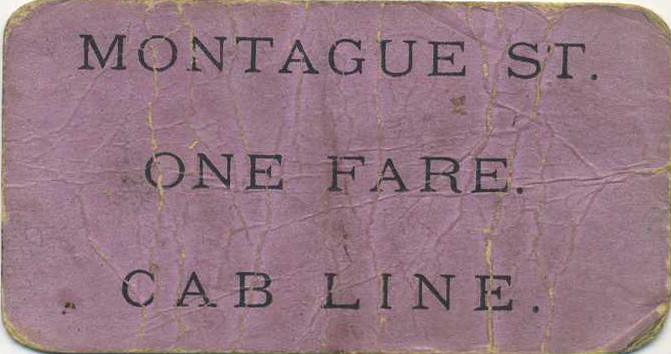 |
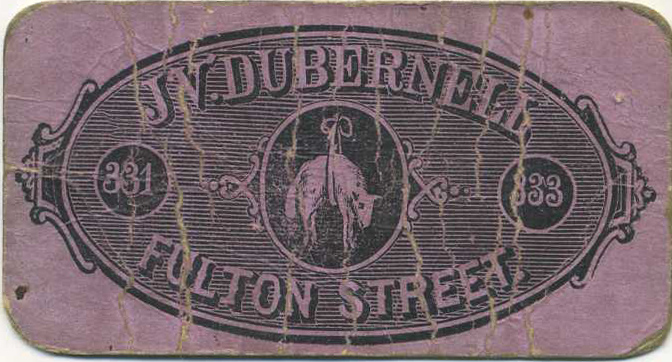 |
|
| 2 1/4" x 1 3/16" extremely rare; $125.00 to $150.00 |
||
| Grand Street, Prospect Park and Flatbush Railroad Co. 1870-1877 |
||
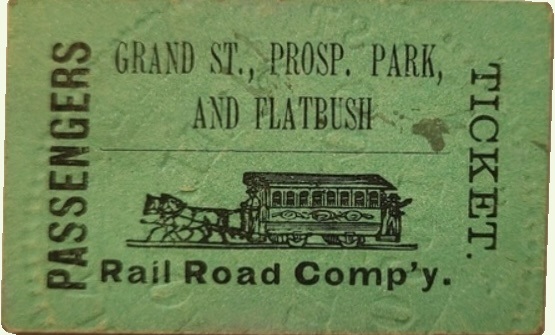 |
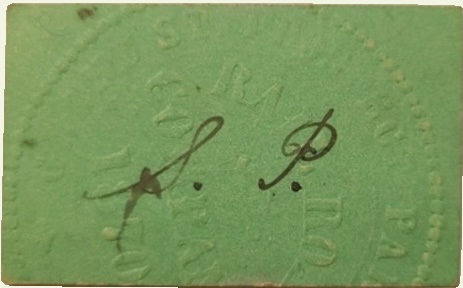 |
|
| initials S. P. are Samuel Parkhill, secretary. extremely rare; $125.00 to $150.00 |
||
| The Broadway Rail Road Co. 1858 - 1890s |
|
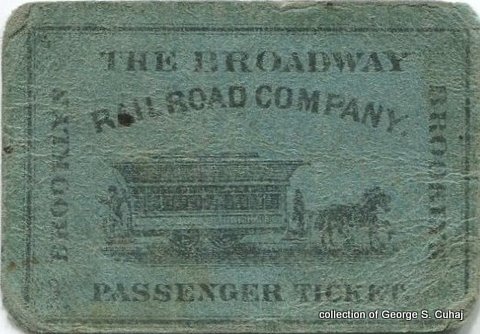 |
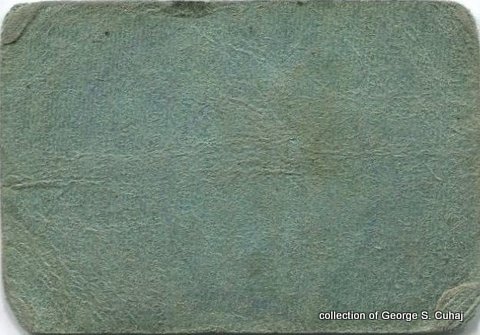 |
| 1 11/16" x 1 1/4" rare; $75.00 to $100.00 |
|
| Brooklyn City Railroad Company 1853 - 1896 |
||||||
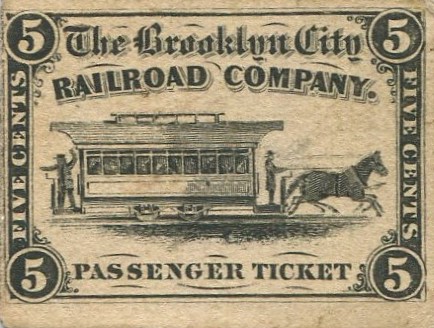 |
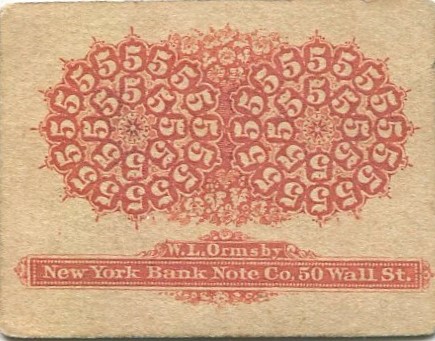 |
. . | 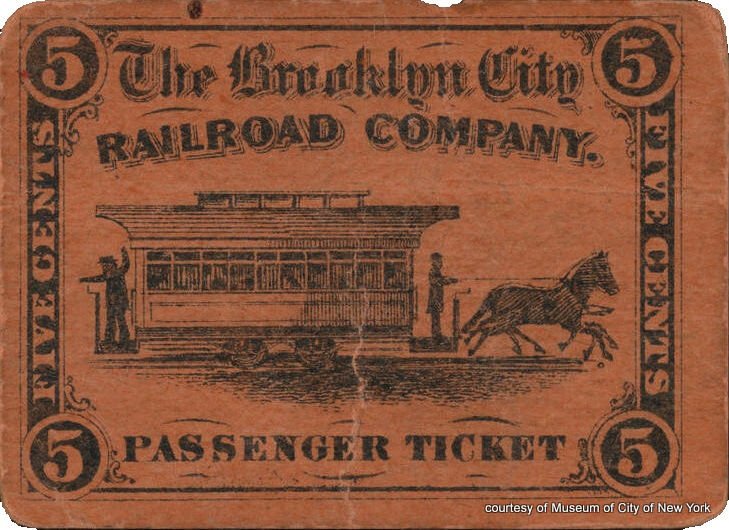 |
. . | 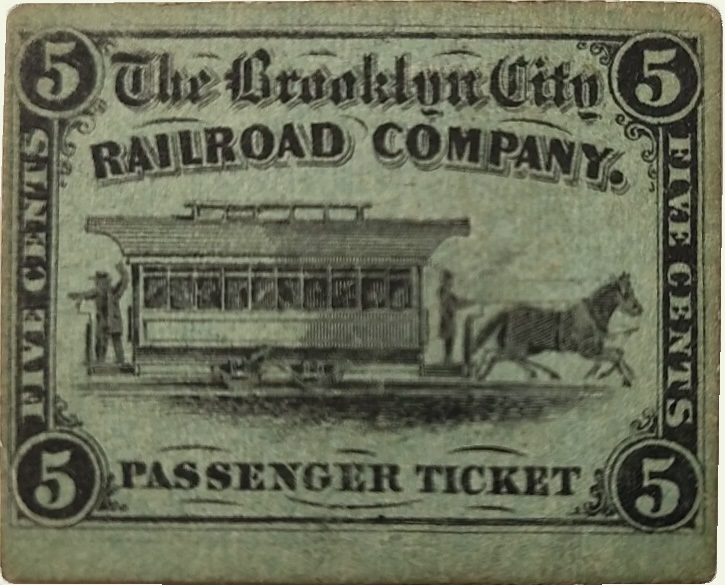 |
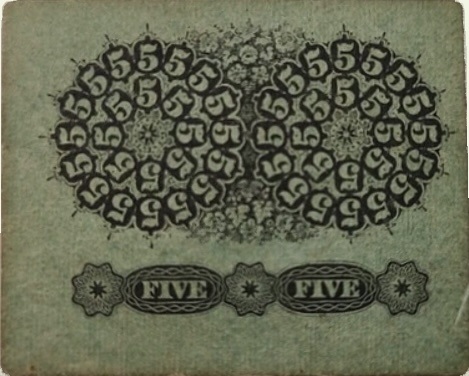 |
| New York Bank Note Co. | unknown printer | laid paper unknown printer |
||||
| 1 5/8" x 1" rare; several examples known in varying colors; $75.00 to $100.00 |
||||||
| Brooklyn City & Newtown Railroad Company 1860 - 1910 |
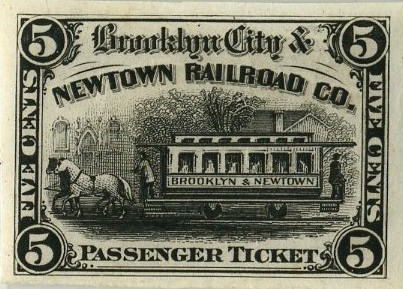 |
| 1 7/16" x 1 1/8" rare; several known $75.00 to $100.00 |
| Brooklyn City, Hunter's Point & Prospect Rail Road Co. (overprint on Greenpoint & Williamsburg Rail Road Co) 1864 - 1872 |
|
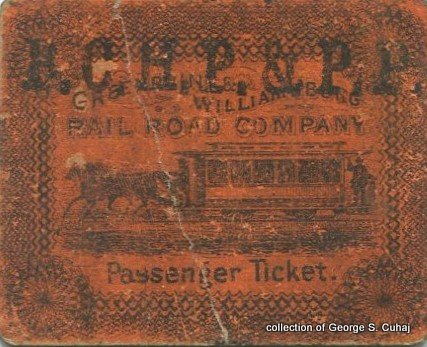 |
|
| 1 7/16" x 1 3/16" rare; $60.00 to $75.00 |
|
| New Williamsburgh & Flatbush Rail Road Co. 1873 - 1896 |
|||
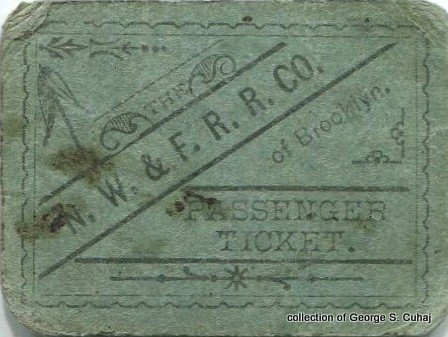 |
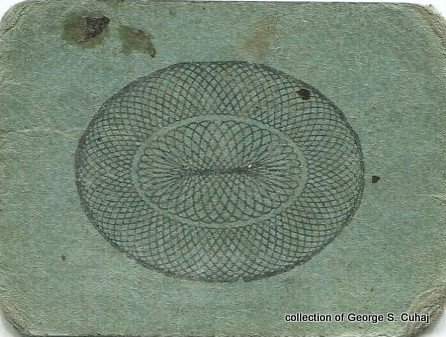 |
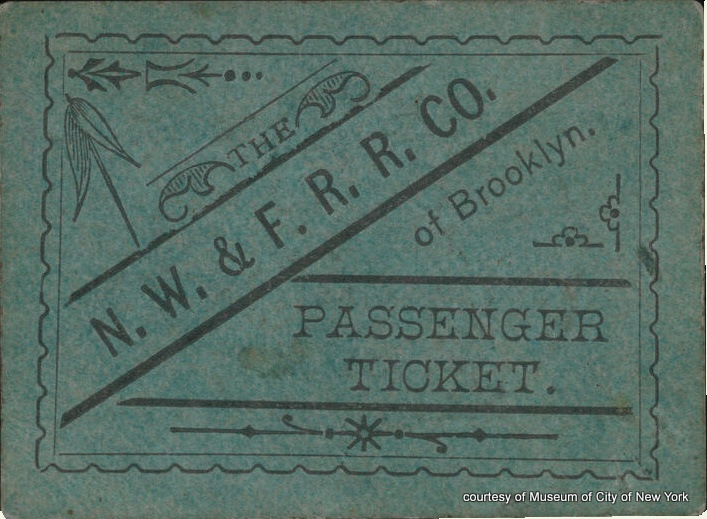 |
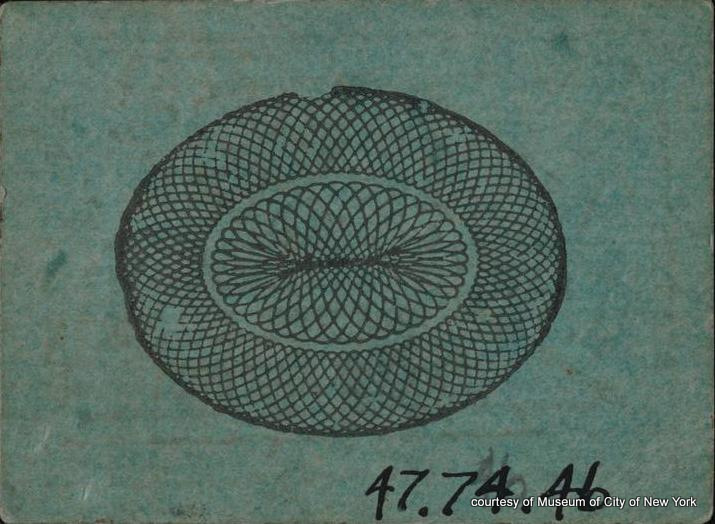 |
| 1 1/2" x 1 1/8" rare; $40.00 to $50.00 |
|||
| Croton Line The
Croton Line went from South Ferry to 43rd Street, and was so named to
honor the new water supply system and the holding reservoir at 42nd
Street.
|
||||
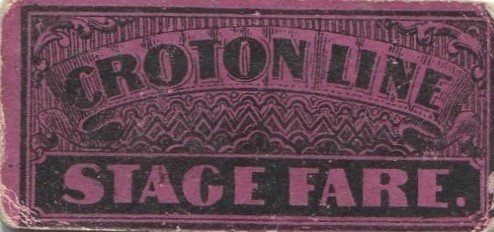 |
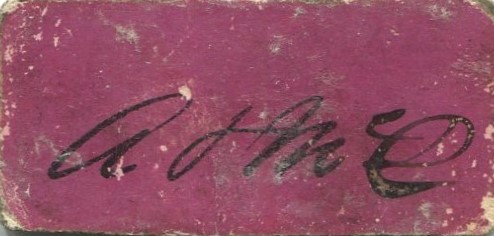 |
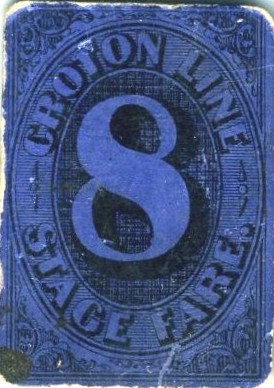 |
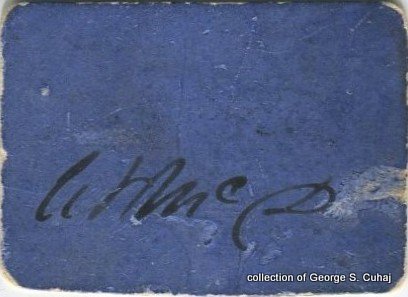 |
|
|
1 11/16" x 13/16"
|
15/16" x 1 1/4" |
|||
| extremely rare; $125.00 to $150.00 |
||||
| Broadway, Fourteenth Street and South Ferry Stage Line . |
|
|
|
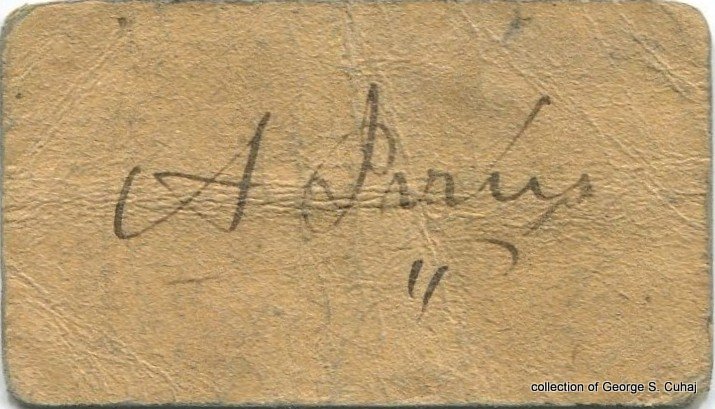 |
| 1 7/8" x 1 1/8" extremely rare; $125.00 to $150.00 |
|
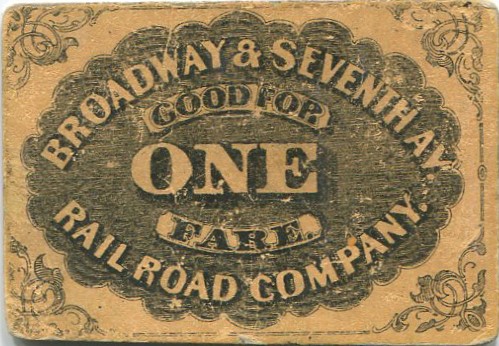 |
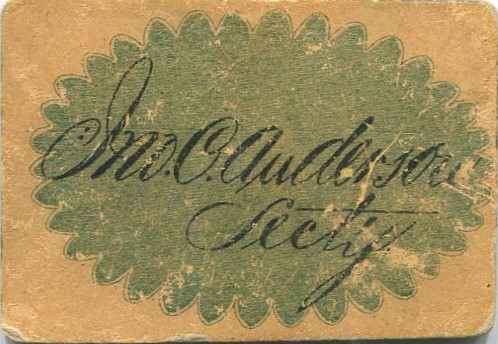 |
| 1 5/8" x 1 3/16" extremely rare; $125.00 to $150.00 |
|
| Central Crosstown Railroad 1875 - 1913 . |
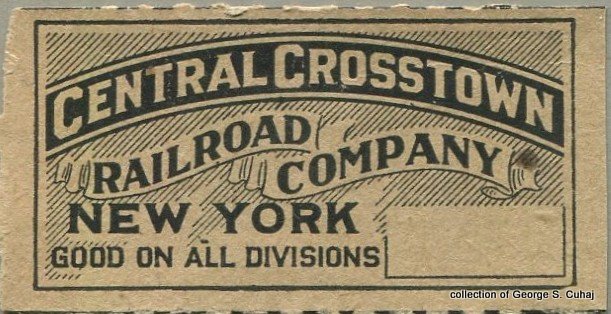 |
| 17th and 18th Streets Crosstown Streetcar Christopher St. Ferry (Hudson River) to 23rd Street Ferry (East River) 1 7/8" x 1" |
| rare; $90.00 to $100.00 |
|
Fifth Avenue Stage Line
|
|||
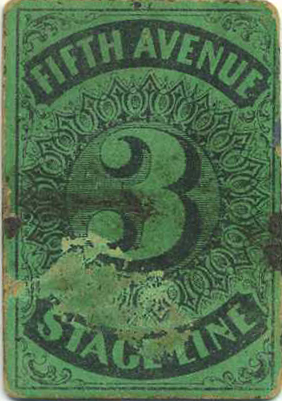 |
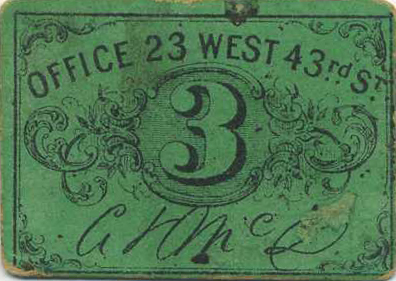 |
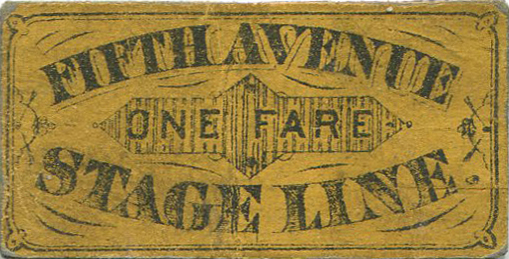 |
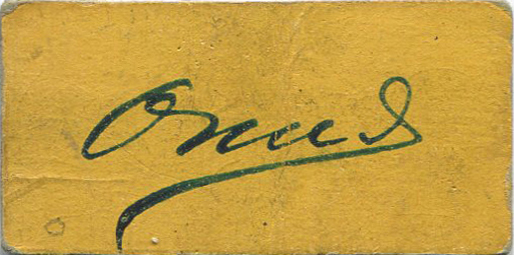 |
| 1 5/16" x 15/16" | 1 5/8" x 7/8 | ||
| . | |||
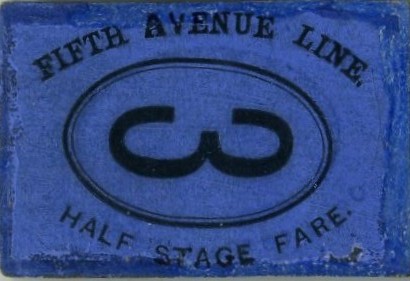 |
 |
||
| 7/8" x 1 3/8" extremely rare; $125.00 to $150.00 |
|||
.
|
Madison Avenue Stage Line
|
|||
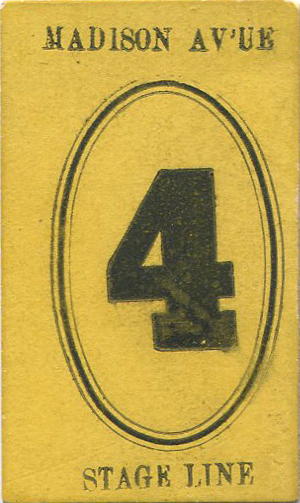 |
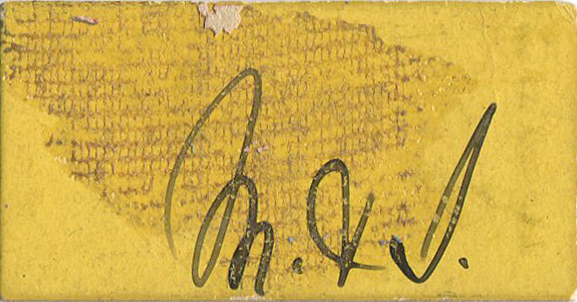 |
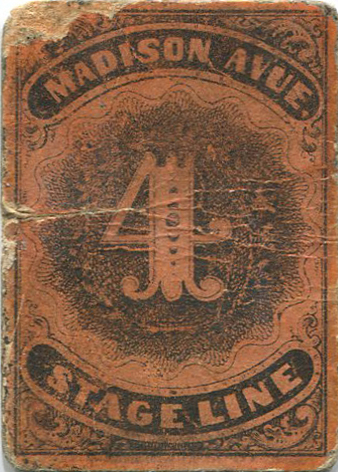 |
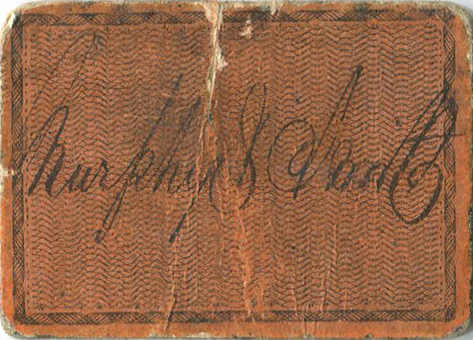 |
| 1" x 1 11/16" | 1 1/8" x 19/16" | ||
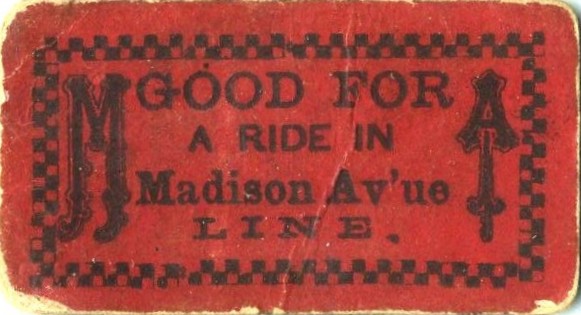 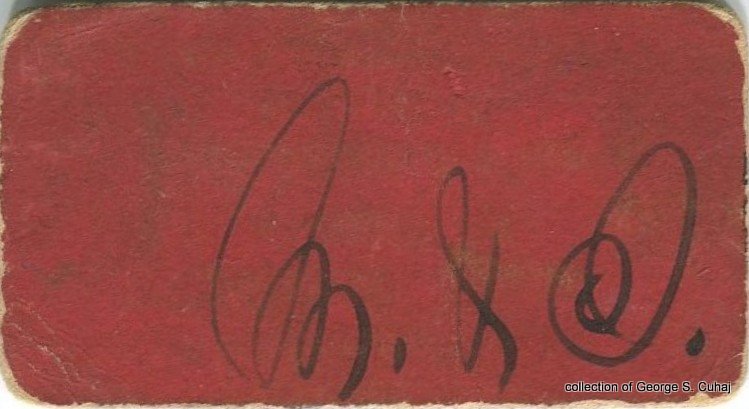 |
|||
| 1 15/16" x 1" extremely rare; $125.00 to $150.00 |
|||
.
| New York Consolidated Stage Company 1855 . |
|
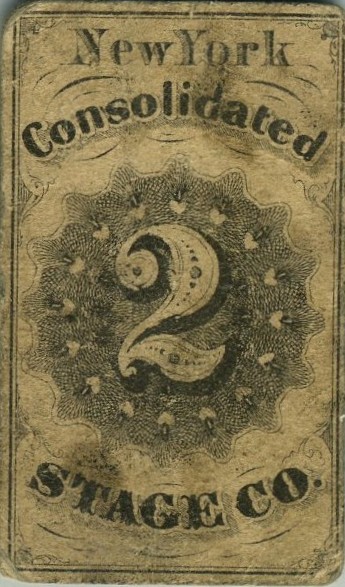 |
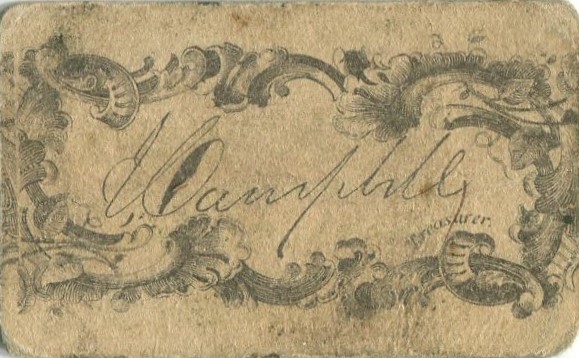 |
| 2" x 1 3/16" extremely rare; $125.00 to $150.00 |
|
| New York & Harlem Railroad 1831 (started as a local line, gradually expanded north and into a commuter railroad.) . |
|
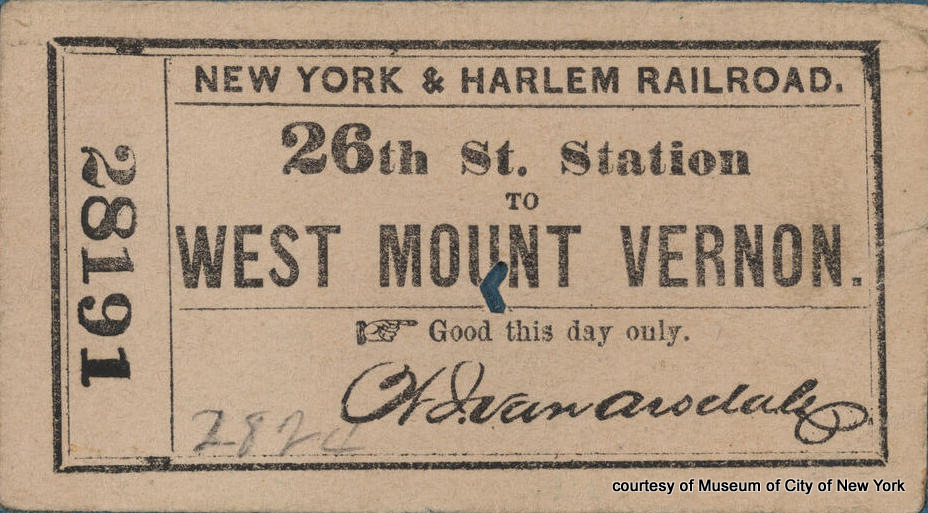 |
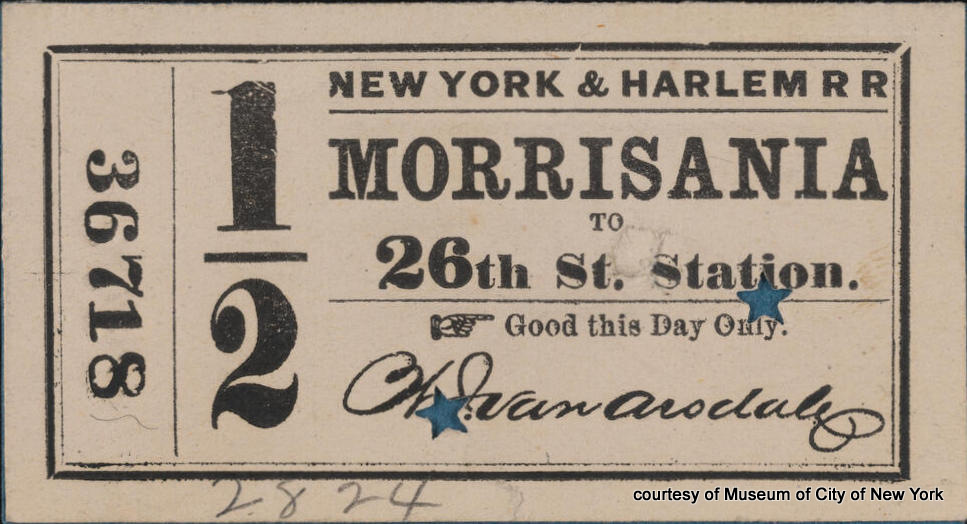 |
| W. I. Vanarsdale | W. I Vanarsdale |
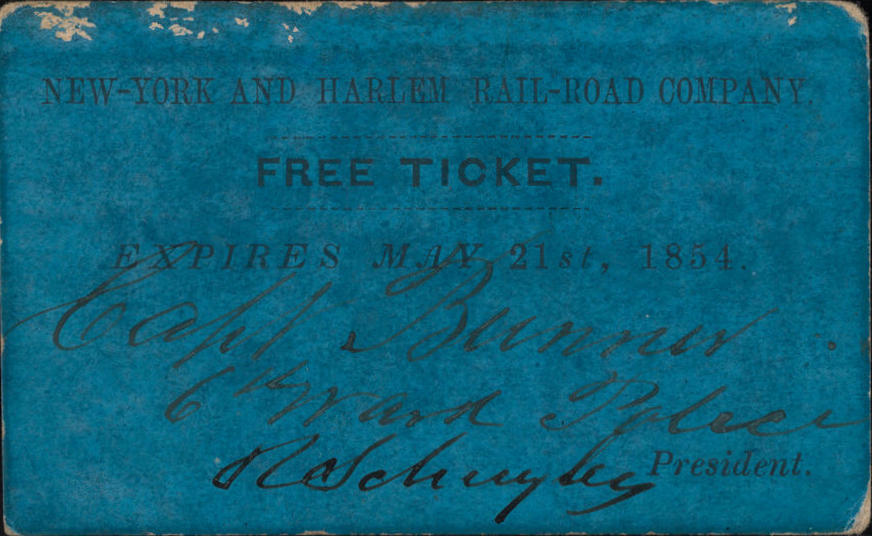 |
|
| R. Schuyler, President | |
| Second Avenue Railroad 1853 - 1908 . |
|
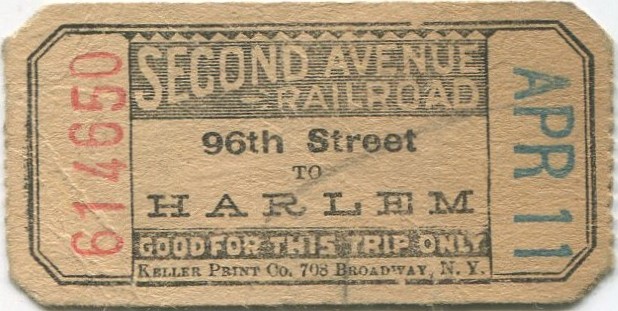 |
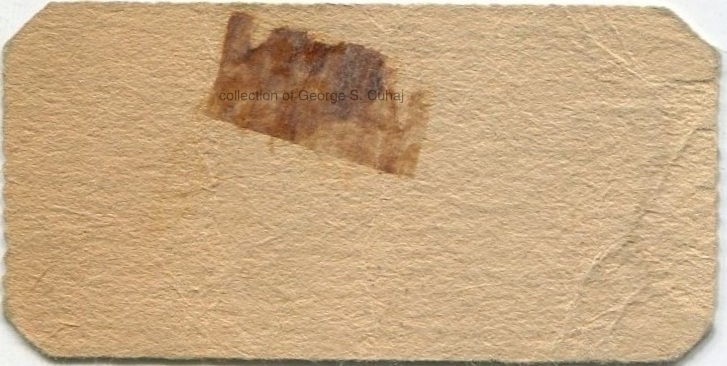 |
|
96th Street to Harlem
Keller Print Co. rare; $60.00 to $75.00 |
|
| Sixth Avenue Line . |
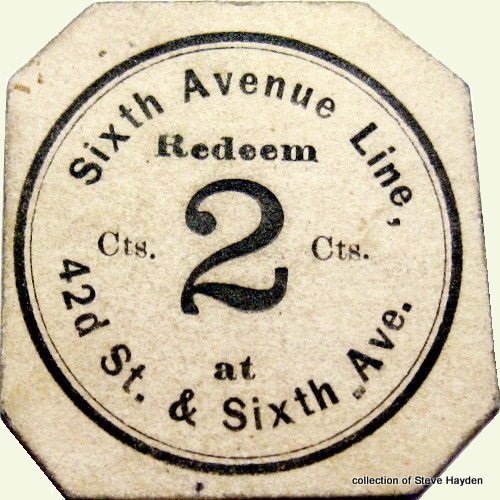 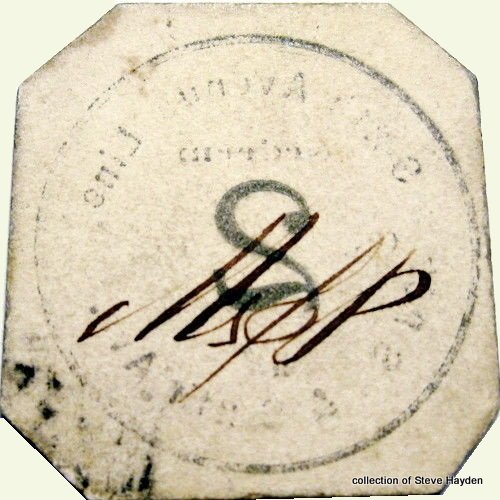 |
| 1 1/4" x 1 1/4" extremely rare; $125.00 to $150.00 |
| Sixth Avenue Railroad 1851 - ? |
||||
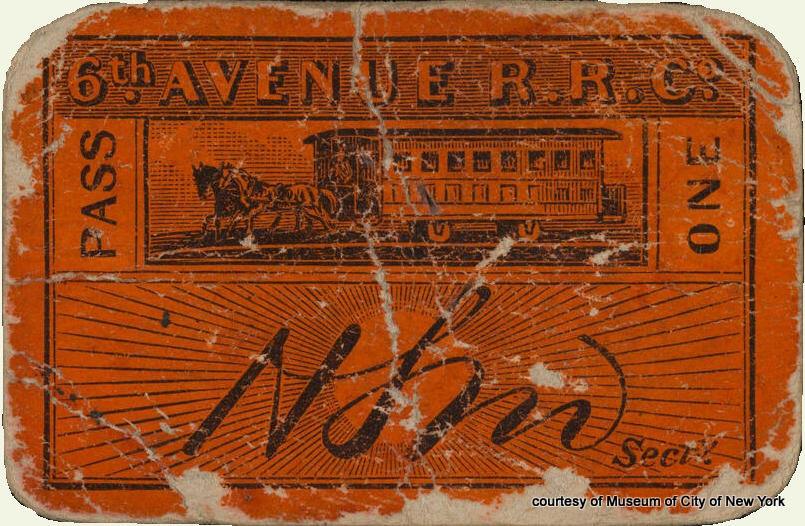 |
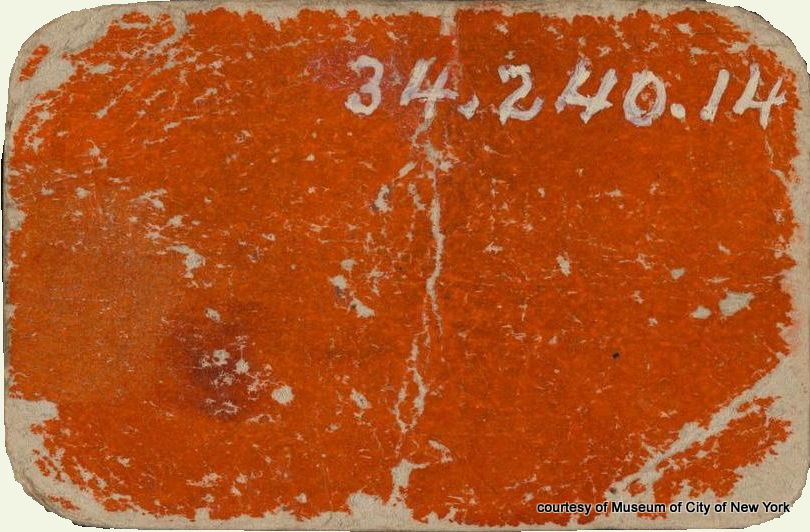 |
. . | 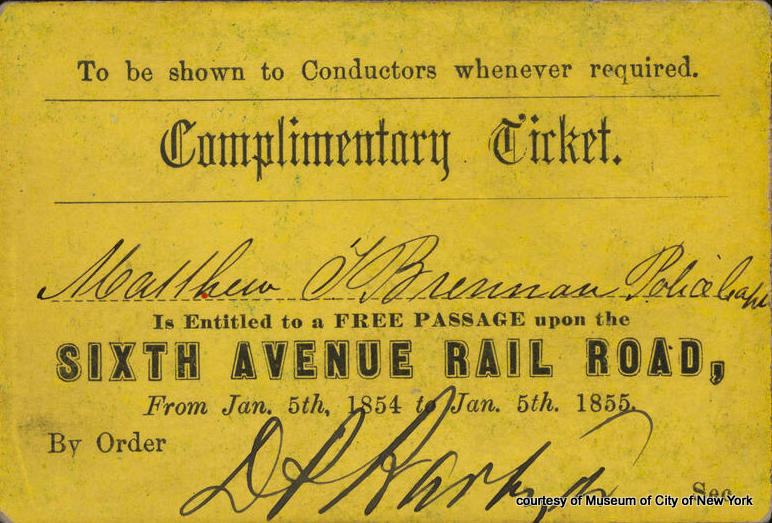 |
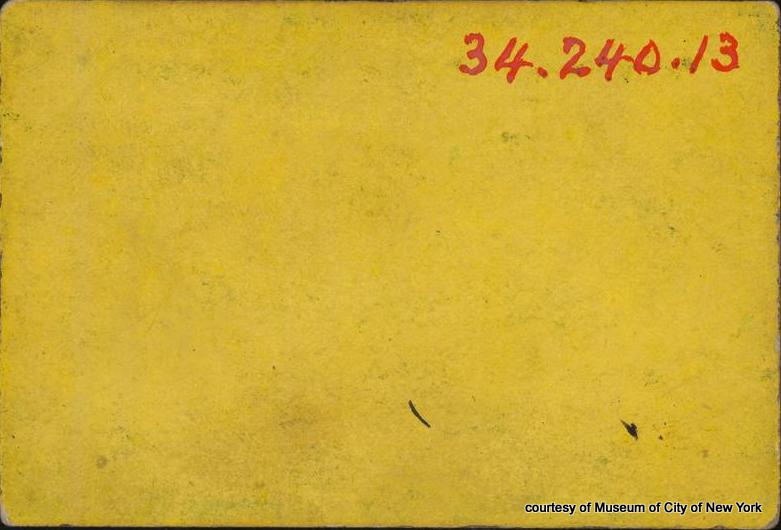 |
| extremely rare; $125.00 to $150.00 | ||||
| Third Avenue Railroad . |
||
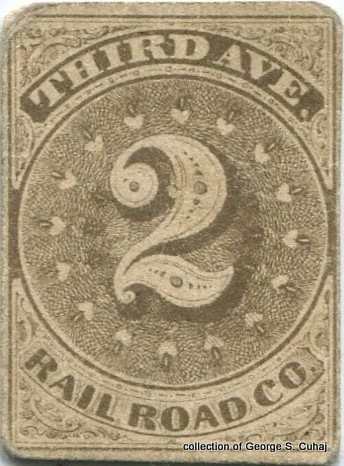 |
 |
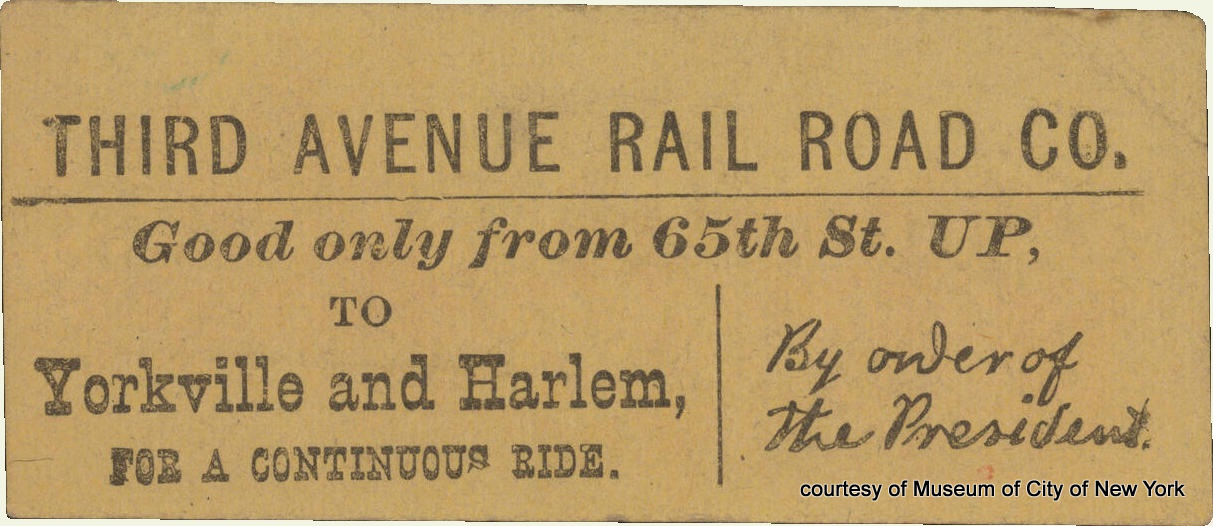 |
| (late 1850s) 2 Cent ticket (often used for change) 1" x 1 7/16" |
Good only from 65th Street UP to Yorkville and Harlem | |
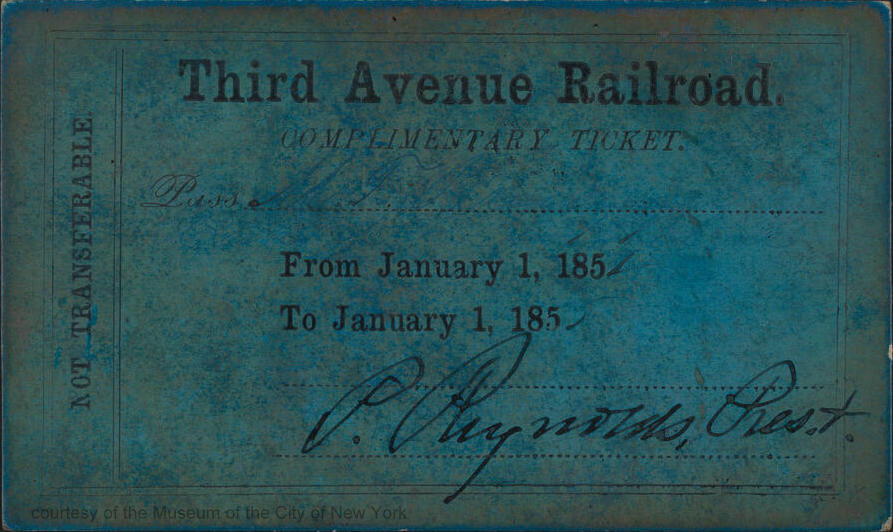 |
||
| extremely rare; $125.00 to $150.00 | ||
| 23rd Street Line . |
|
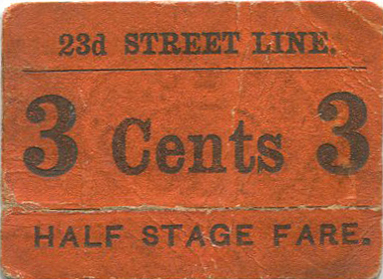 |
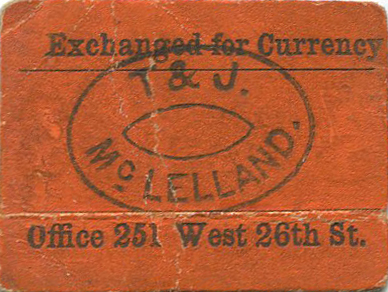 |
| 1 1/4" x 15/16" extremely rare; $125.00 to $150.00 |
|
| 42nd Street and Grand Street Ferry Railroad Company 1862 - 1902 |
|
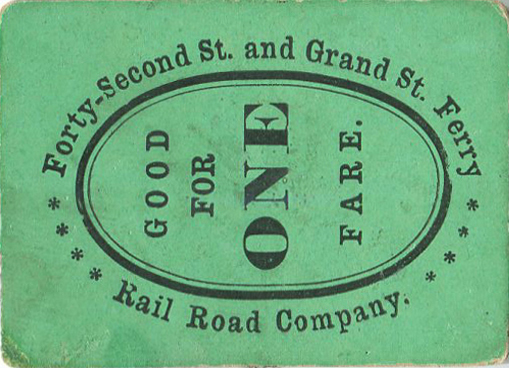 |
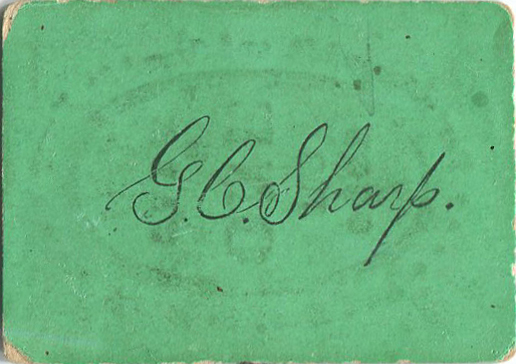 |
| 1 11/16" x 1 3/16" extremely rare; $125.00 to $150.00 |
|
.
.
![]()
Elevated & Subway Operators
1871 - 1940
With pedestrian and vehicular traffic growing exponentially on the streets and choking scheduled movements of streetcars; the next evolution of mass transit transportation took to elevated structures. Only in 1904 did it then progress underground to subways.
The first successful elevated operation (as opposed to experimental constructions) opened to passengers in 1871. This was the Ninth Avenue "El" (short for elevated) which ran along Greenwich Street and Ninth Avenue from downtown Manhattan to Harlem of the New York Elevated Company. The history of the Ninth Avenue El predated this with the West Side and Yonkers Patent Railway, which opened on July 1, 1868 as a cable hauled elevated railway. Technical issues doomed the cable operation. In 1871, the line was converted to steam locomotive also on which date it was reorganized as the New York Elevated Railroad.
The fares as originally proposed were 5 cents for distances less than two miles, and 1 cent each additional mile. However by the time the New York Elevated Company took over, it allowed to exercise its option of a flat 10 cent fare for trips under five miles and 2 cents each additional mile.
So again, the first fares collected for elevated rapid transit service in New York City was 10 cents, not a nickel as so widely believed.
| New York Elevated Railroad 1874 - 1879 (predecessor to Manhattan Railways) |
||||
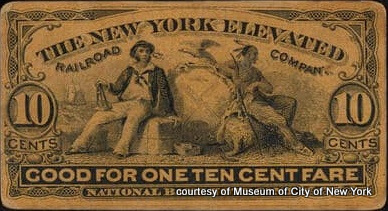 |
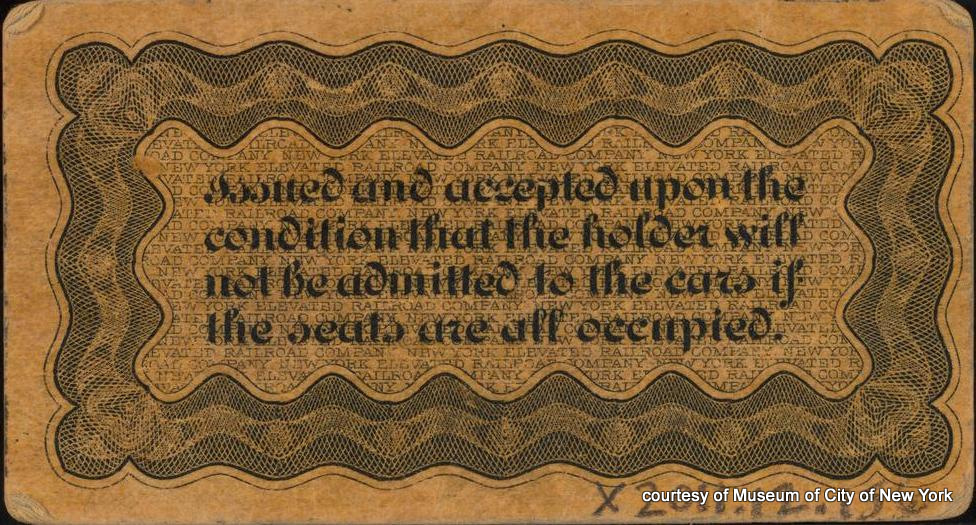 |
|||
| Good for One Ten Cent Fare National Bank Note Co. |
||||
| . | ||||
| ..... | 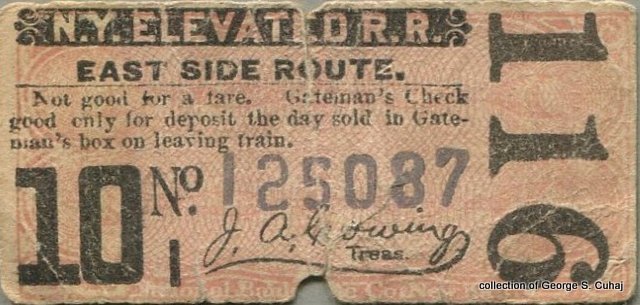 |
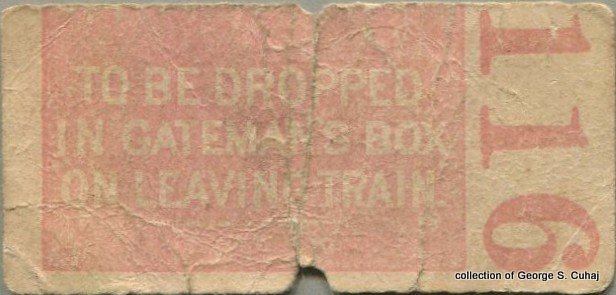 |
||
| Conductors Check - Not good for fare Once the on-train conductor lifted a ticket from the passenger, this check was used as identification that a fare was paid. J. A. Cowing, Treasurer |
116 Street J. A. Cowing, Treasurer 2" x 1" |
|||
| extremely rare; $125.00 to $150.00 | ||||
In direct competition to the New York Elevated, the Metropolitan Elevated Railway Company was organized in 1875.
Because of the incurred costs of constructing and elevated or digging tunnels, organizing a transportation company was no longer open to most entry level investors; i.e.: a modest sum could purchase a few hacks or streetcars; and a lease entered to utilize another companies already constructed trackage; elevated and subway operation required significant investment and planning.
Therefore, there were significantly less companies that issued said tickets for elevated or subway operations. However, as the routes were built out and expanded, and increasing amount of stations provided interchange with another route, you now had issuing stations as opposed to issuing companies.
Most tickets could be purchased individually for a single ride, or in multiples for later use, hence many being of the perforated ticket book type, and were now (almost all) standardized to 2" long by 1" wide.
|
After
purchasing your tickets from the clerk in change / ticket booth (which
was to become the colloquial token booth after 1953); but before
entrance to actual subway or
elevated platforms, you gave your ticket to a gateman, who deposited
the ticket into a "chopper box"
at the gate to the platforms of the
Interborough Rapid Transit subway and main terminals of the surface
cars.
While some transit buffs are aware of the chopper boxes and surrendering your ticket to the gateman before before accessing the trains; that was not always the method for collecting fares on the elevated. In
"The First Elevated Railroads in Manhattan and the Bronx of the City of
New York" by William Fullerton Reeves; he states: "In the early days of
operating elevated roads, tickets were sold to prospective passengers
at the stations, and collected on the trains by conductors. This method
of "taking up tickets" was abolished January 20, 1879. In June 1880
came the canceling boxes where passengers deposited their tickets
before entering a train. The straight all-day five-cent fare was
introduced on all trains in October-November 1886.
|
|
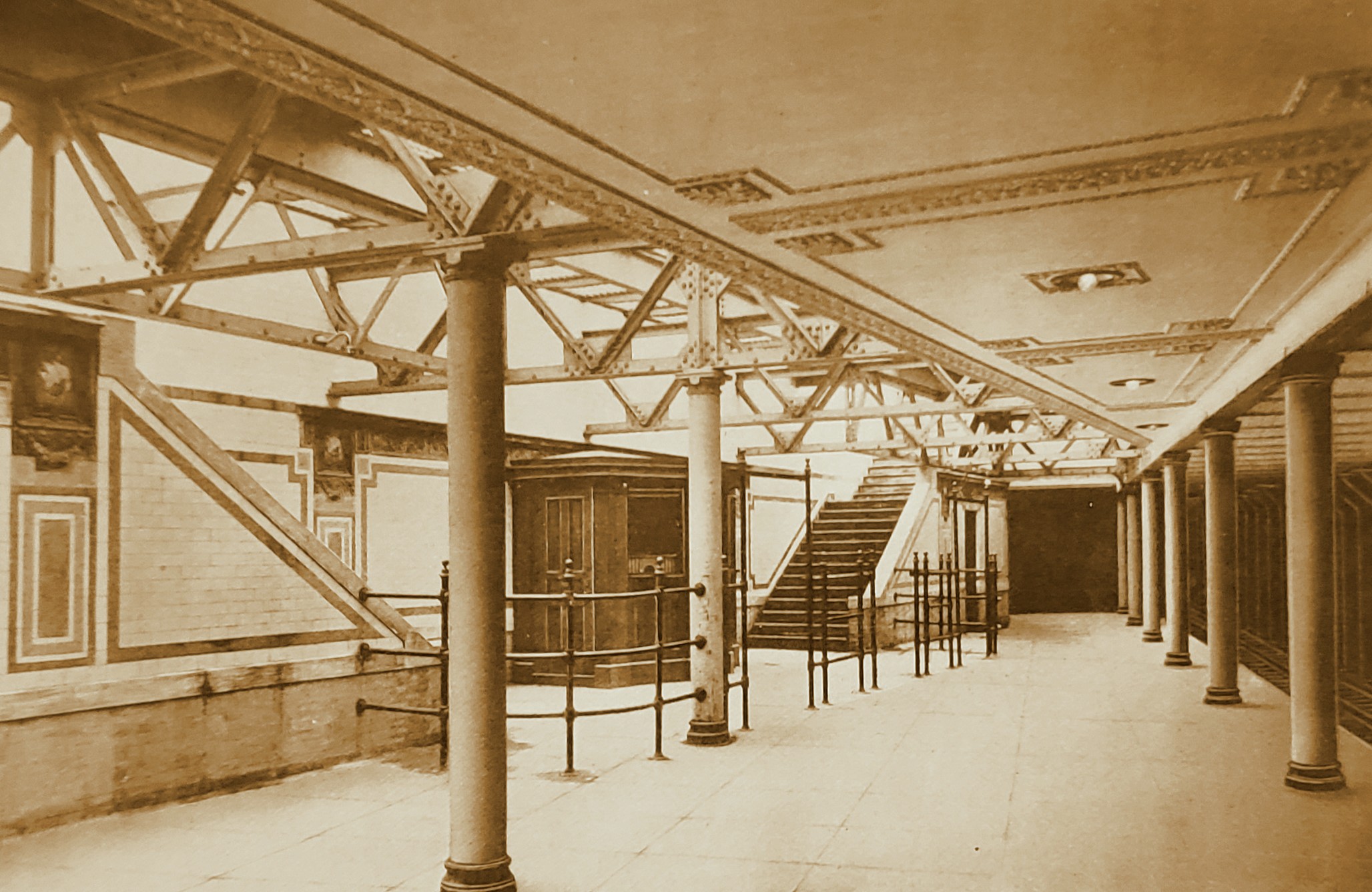 |
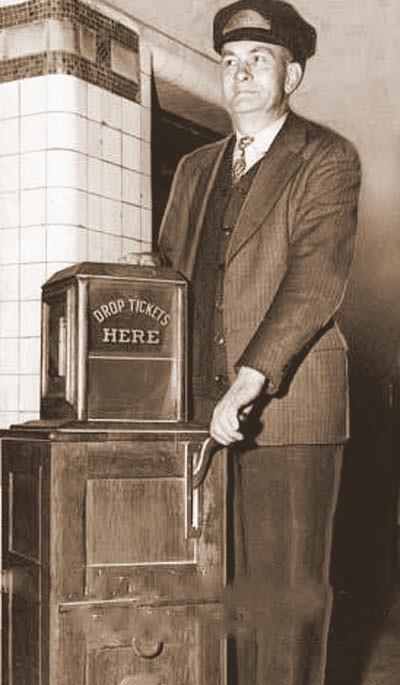 |
|
| Columbus Circle Station; construction photo showing change / ticket booth; and gate separating "unpaid" and "paid" side of areas; chopper boxes not yet in place. |
Gateman with chopper box |
Ticket Chopper Box at IRT Wall Street
Station
image courtesy of ephemeralnewyork |
Incidentally, this gate as I have mentioned, separated the "paid" portion of the subway from the "unpaid" section and can be seen in the image above at left.
Inside the chopper box, and viewable through a glass window, was a set of interlaced metal teeth resembling combs. Connecting to these teeth combs, there was a shaft that connected through the side of the case to the outside. Much like the purpose of a modern paper shredder; only the chopper boxes were manually operated. The tickets deposited into the top portion, were chopped to prevent reuse and the shredded tickets contained in a hopper in the bottom portion of the chopper box pedestal.
| Manhattan Railway (as its own entity) - Elevated Division 1879 - 1903 As discussed at the beginning of this chapter, in
"The First Elevated Railroads in Manhattan and the Bronx of the City of
New York" by William Fullerton Reeves; he states: "In the early days of
operating elevated roads, tickets were sold to prospective passengers
at the stations, and collected on the trains by conductors.
This method of "taking up tickets" was abolished January 20, 1879. In June 1880 came the canceling boxes where passengers deposited their tickets before entering a train. The straight all-day five-cent fare was introduced on all trains in October-November 1886. Described in further detail in the Proceeding of the American Society of Civil Engineers, August 1917; is the following information shown in the previous chapter. This research helps date the 10 cent Metropolitan Railway tickets that follow to between 1879 and 1886. |
|||||||
| 1879 - November 1, 1886 | |||||||
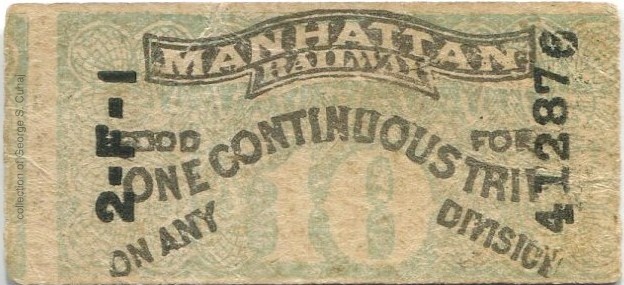 |
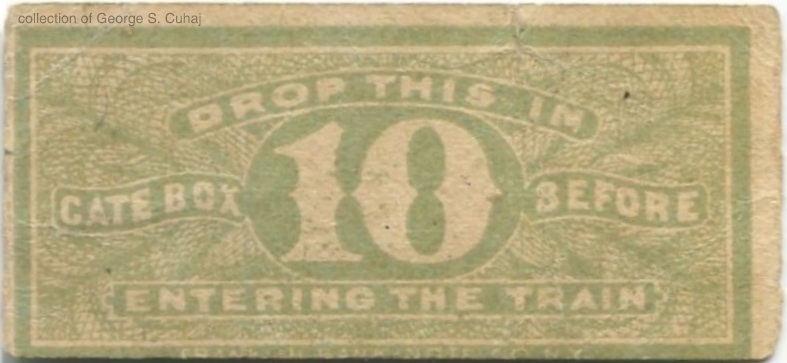 |
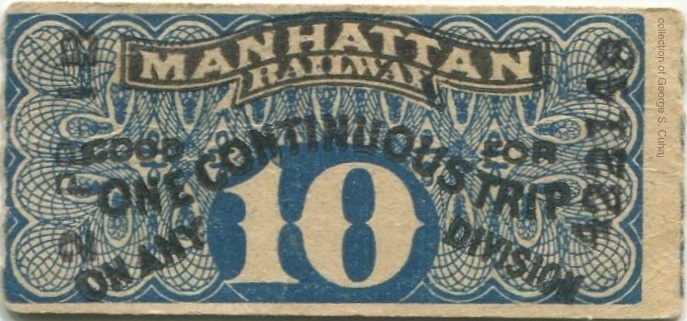 |
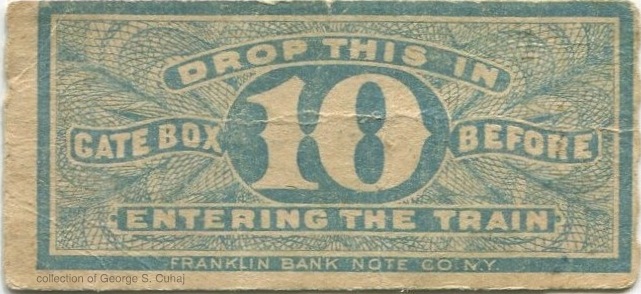 |
||||
| Fulton or Franklin Street Station? Franklin Bank Note |
Park Place Station at Church Street (Sixth Avenue Line) Franklin Bank Note |
||||||
| . | |||||||
| Commission Trains: operating between the hours of 5:20 am to 7:20 am and 5:00 pm to 7:00 pm. |
|||||||
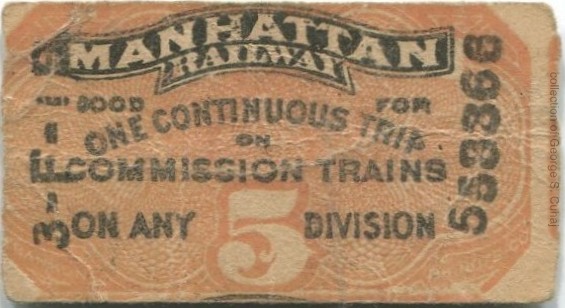 |
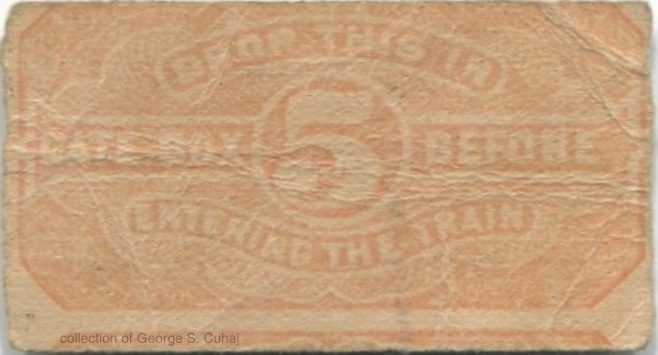 |
. . |  |
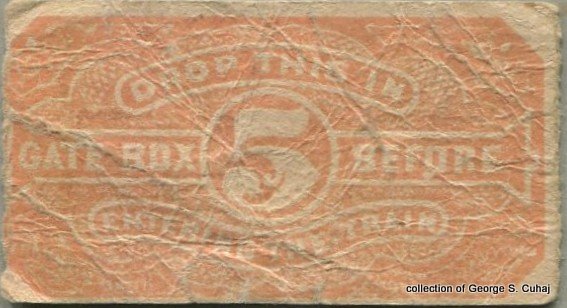 |
. . | 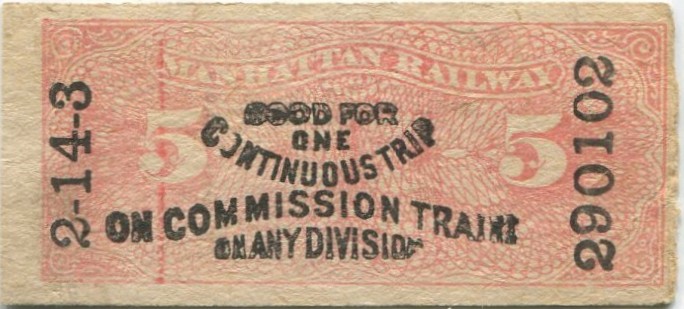 |
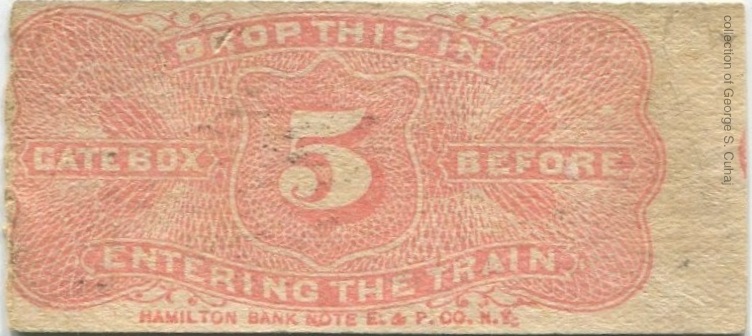 |
| Fulton or Franklin Street Station? black title background, wavy Franklin Bank Note |
57th Street Station black title background, wavy Franklin Bank Note |
14th Street Station (which Line?) pink title background, wavy Hamilton Bank Note Engraving & Printing |
|||||
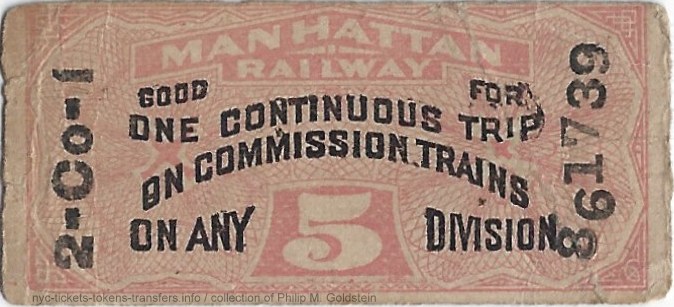 |
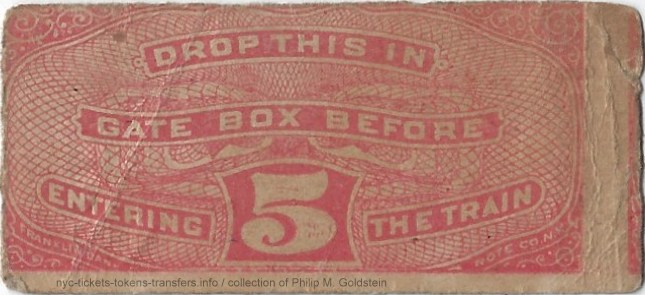 |
||||||
| Cortland Street Station pink title background, chevron Franklin Bank Note Engraving & Printing |
|||||||
| . November 1, 1886 to 1903 (commission trains abolished)
|
|||||||
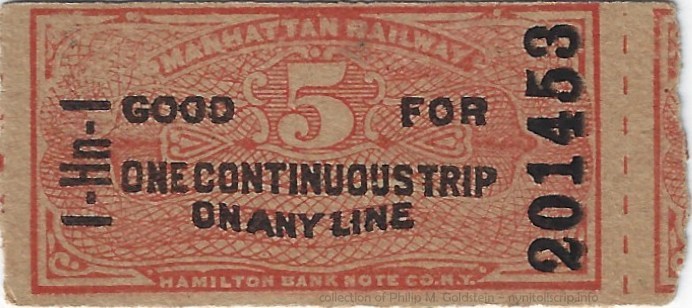 |
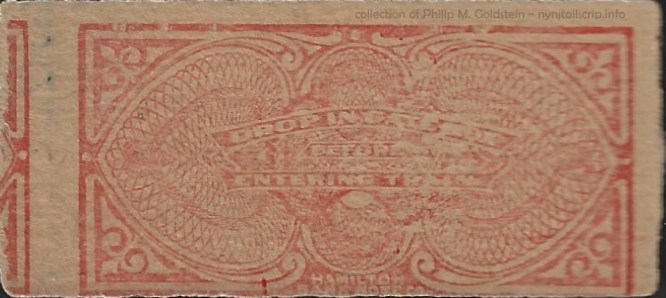 |
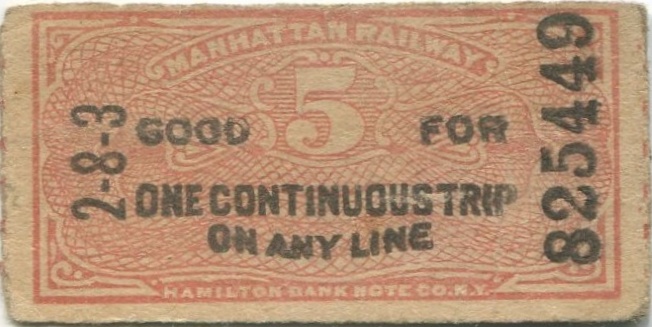 |
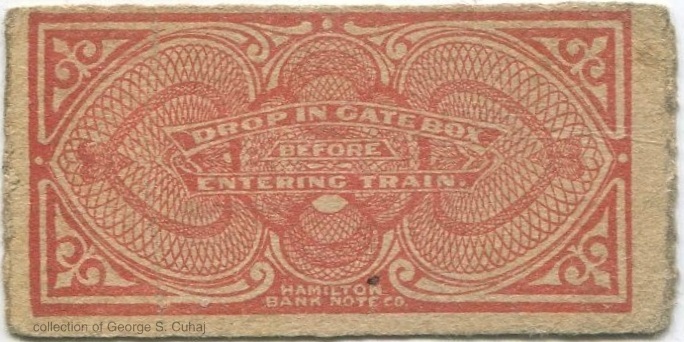 |
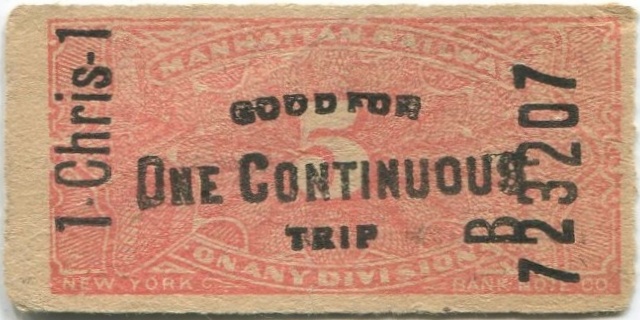 |
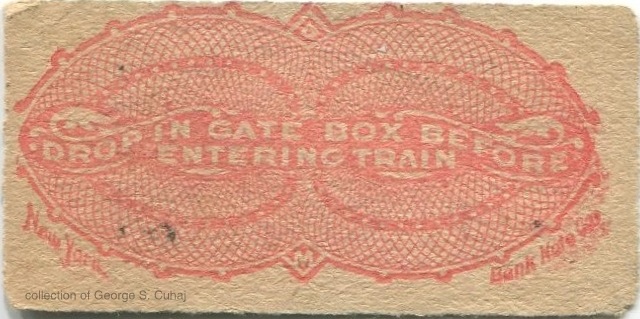 |
||
| Houston Street Station (Ninth Avenue Line) pink title background, arched Hamilton Bank Note Engraving & Printing |
8th Street pink title background, arched Hamilton Bank Note Engraving & Printing |
Christopher Street Station (Ninth Avenue Line) pink title background, arched New York Bank Note |
|||||
| . all issues above, uncommon; $35.00 - $45.00 |
|||||||
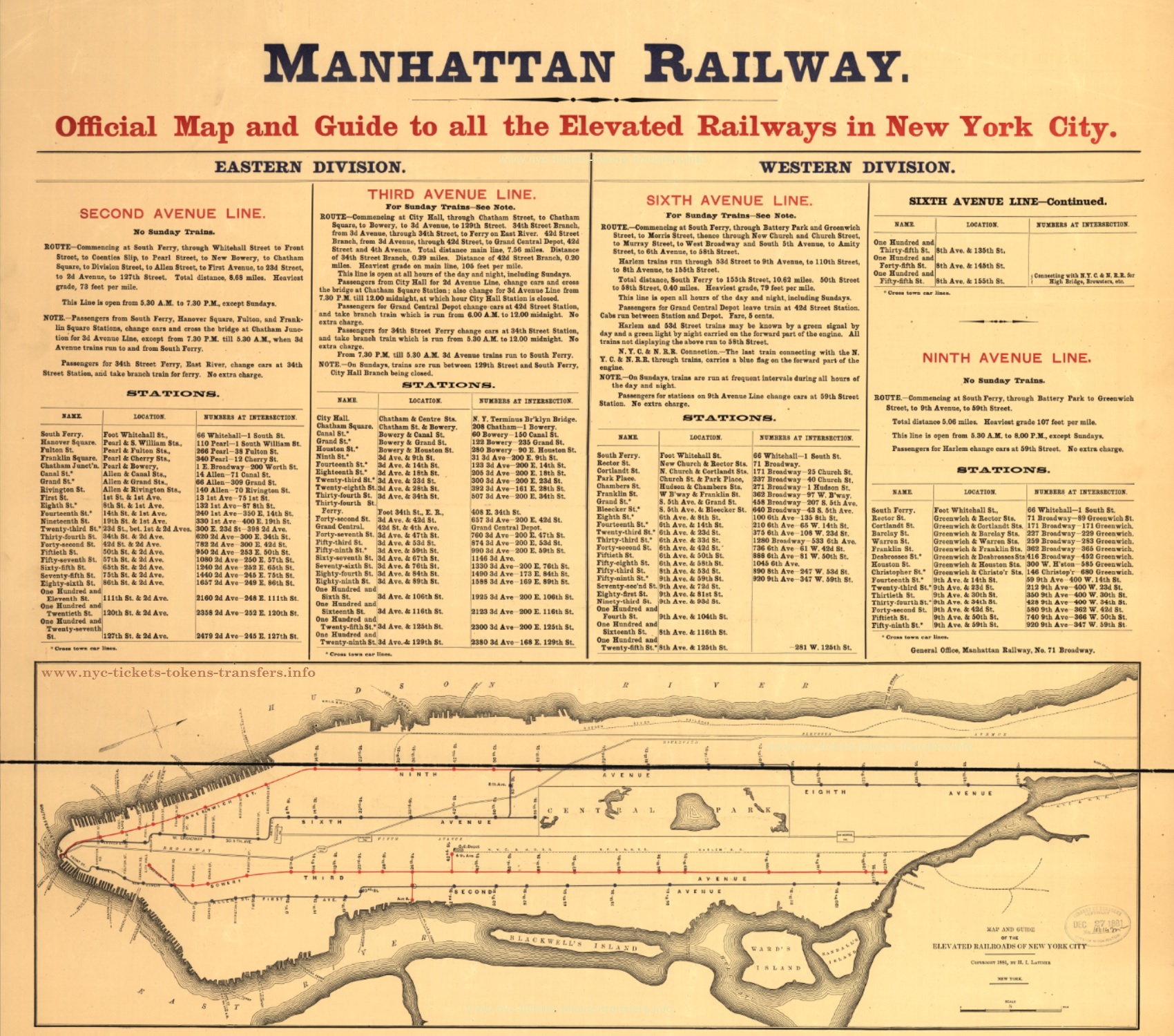 courtesy Library of Congress |
|||||||

courtesy Library of Congress
|
Interborough Rapid Transit - Subway
Division
1903 - 1928 (The tickets below correspond to red routes above - subway division.) |
||||||
| . Manhattan |
||||||
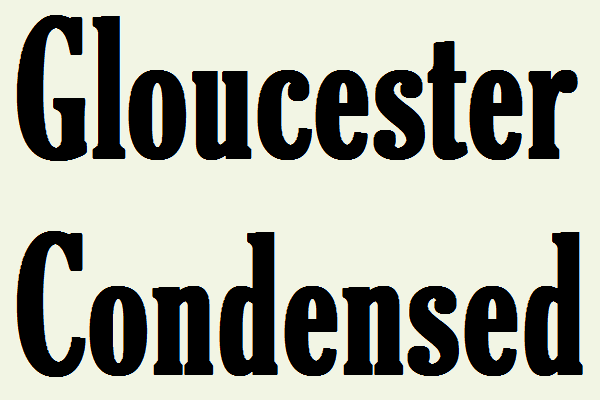 |
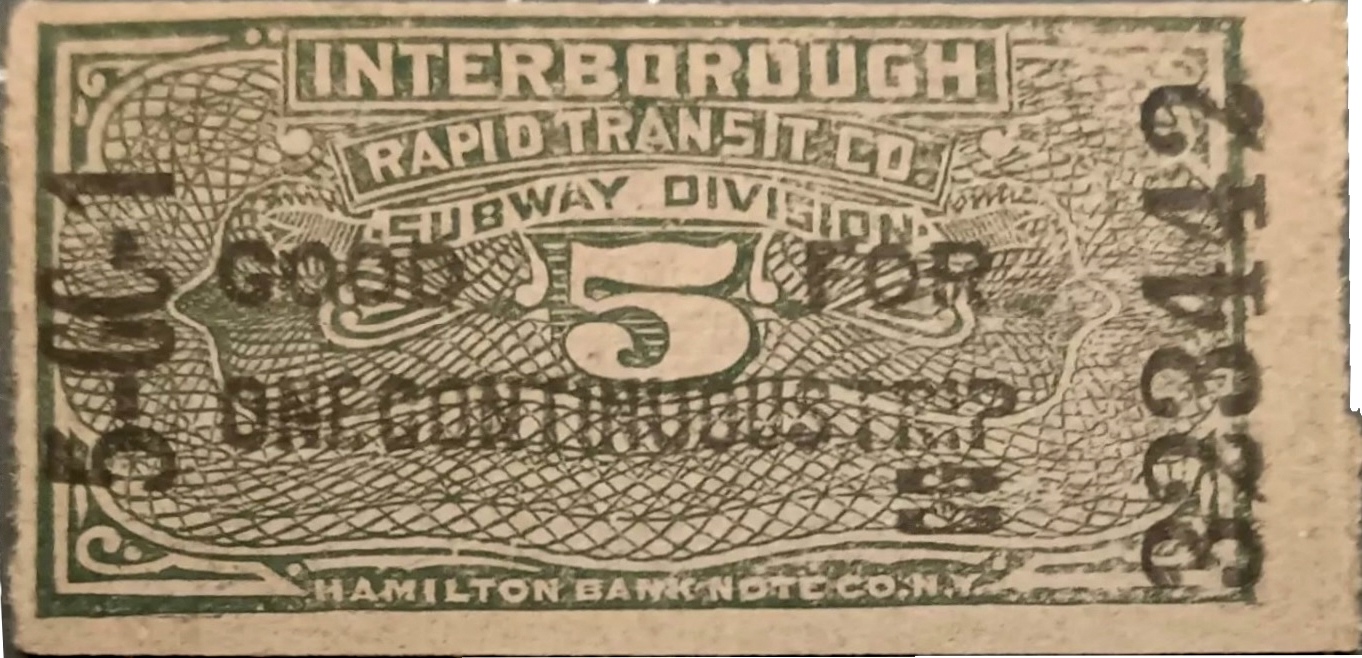 |
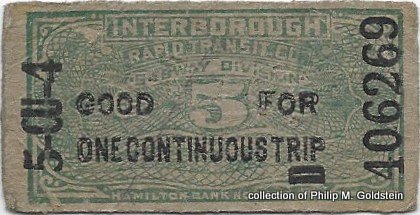 |
||||
| Block Bold |
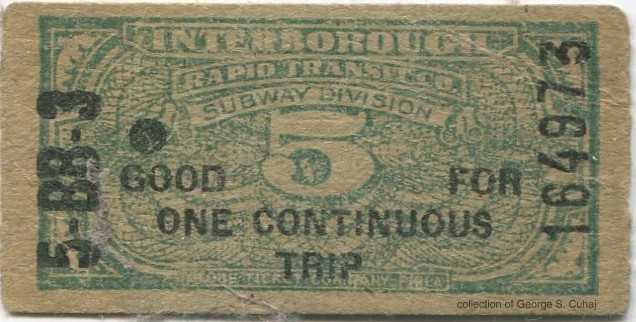 |
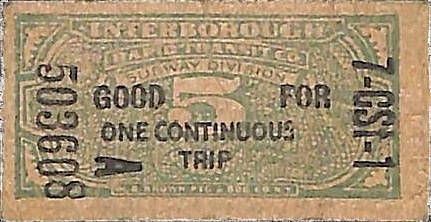 |
||||
| Gothic | 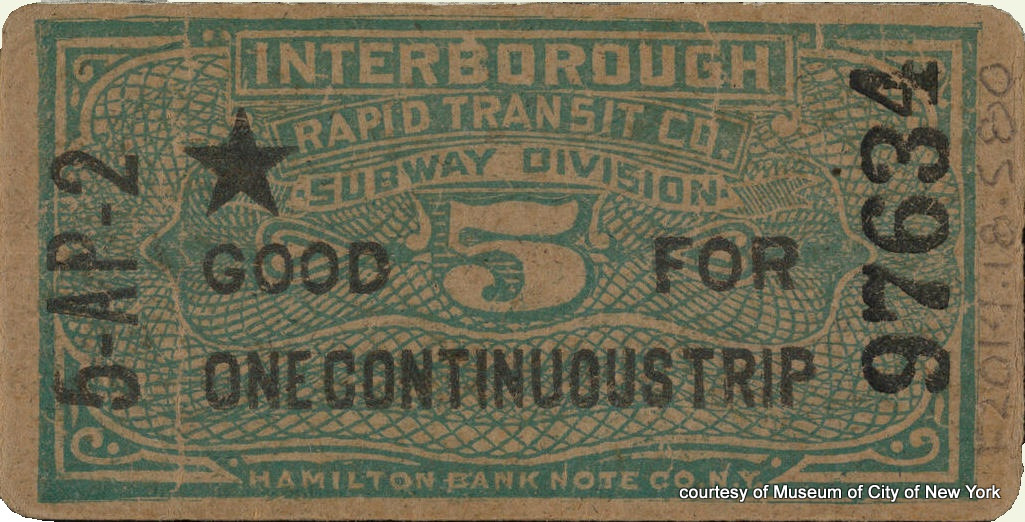 |
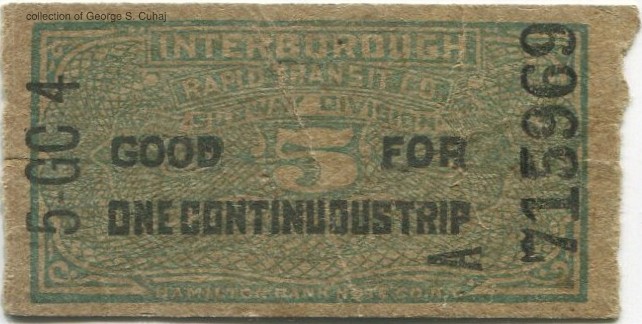 |
||||
| Brooklyn Bridge Station Globe Ticket Co. |
Astor Place Hamilton Bank Note Ticket Co. |
Grand Central Hamilton Bank Note |
Columbia University Hamilton Bank Note |
a difficult one to discern: if a G: Grand St; if a C: Christopher St, Canal St, Cortland St, Chambers St. (Manhattan) or Clark St (Brooklyn) M. B. Brown Ptg & Bdg Co |
||
 |
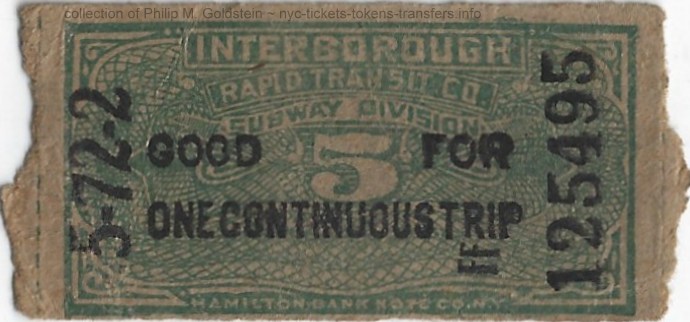 |
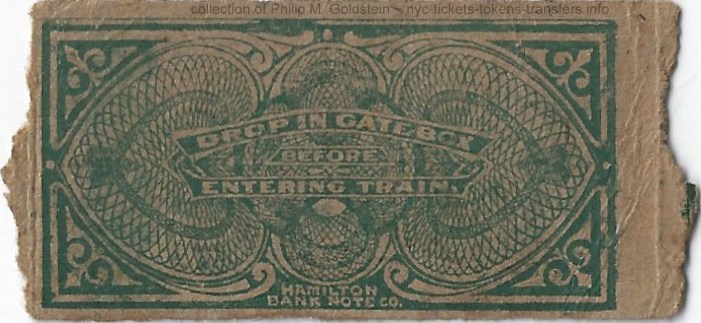 |
||||
| Block Bold | 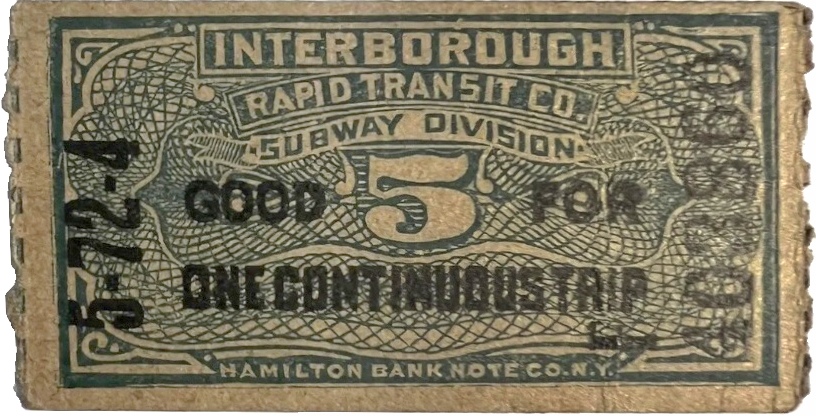 |
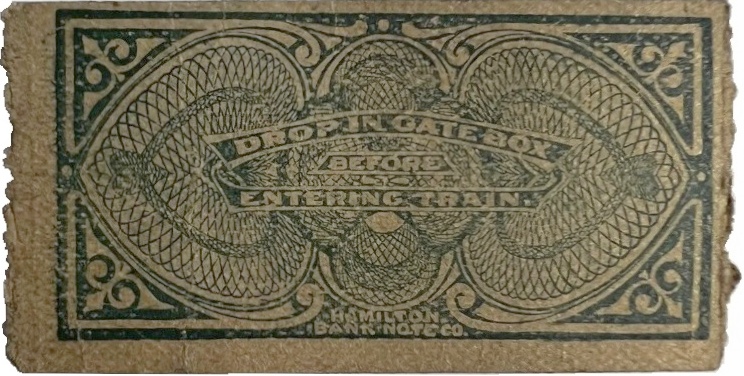 |
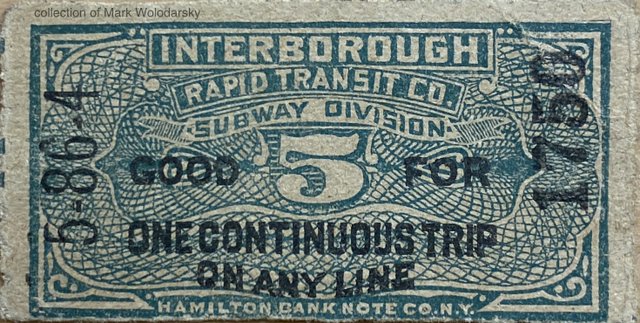 |
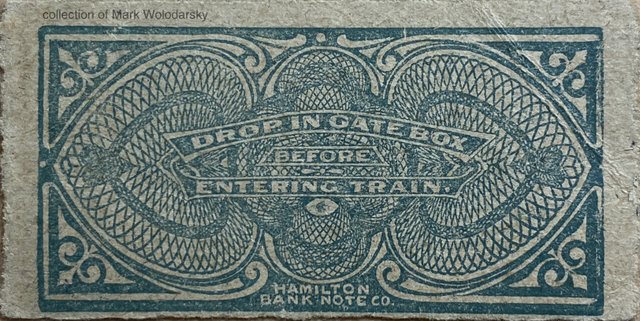 |
||
| 72nd Street Hamilton Bank Note |
 |
|||||
| . | 86th Street (with note on envelope) Hamilton Bank Note |
|||||
| Brooklyn | ||||||
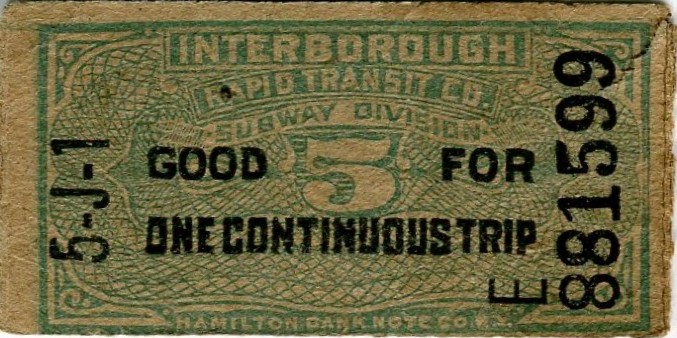 |
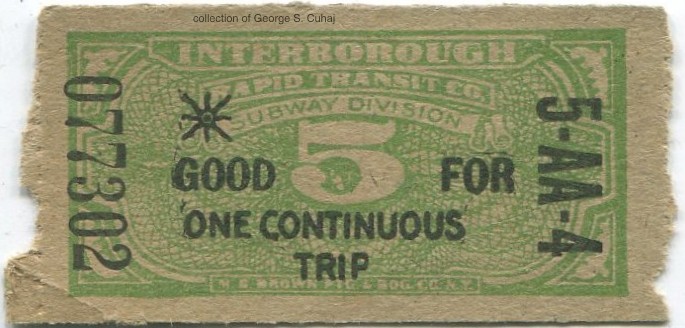 |
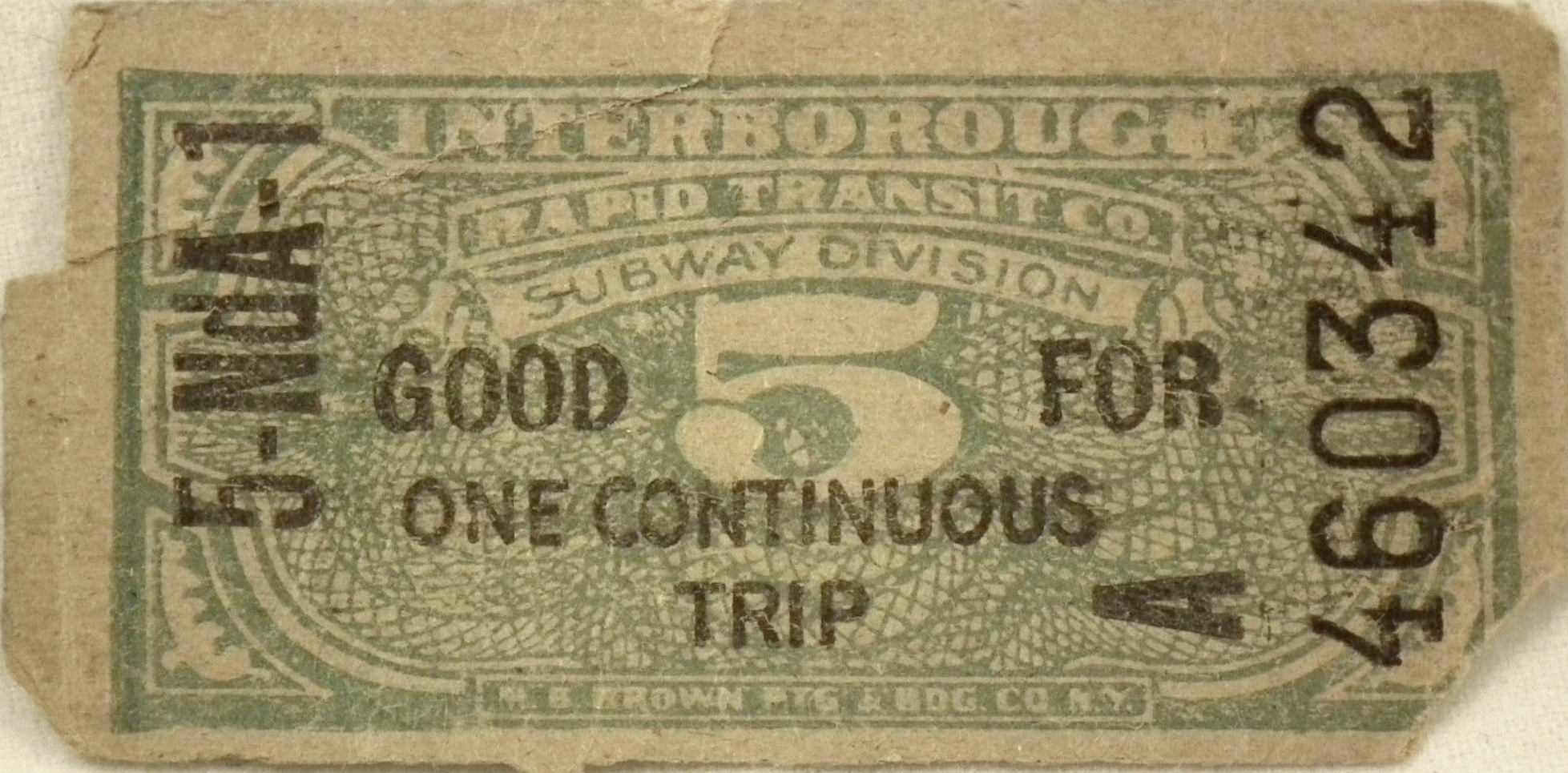 |
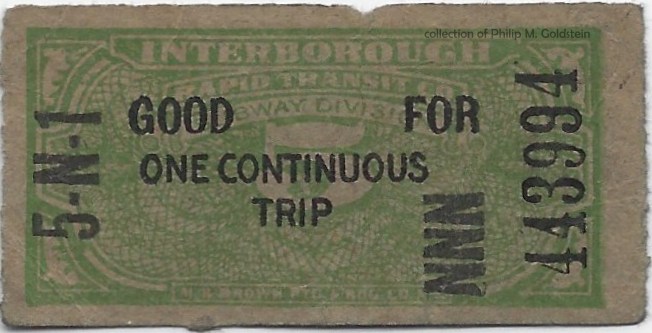 |
|||
| Junius Street Hamilton Bank Note |
Atlantic Avenue? (Brooklyn) Alburtis Avenue? (Queens) Allerton Avenue? (Bronx) M. B. Brown Ptg & Bdg Co |
Nostrand Avenue M. B. Brown Ptg & Bdg Co |
Nevins St M. B. Brown Ptg & Bdg Co |
|||
| . | ||||||
| Bronx | ||||||
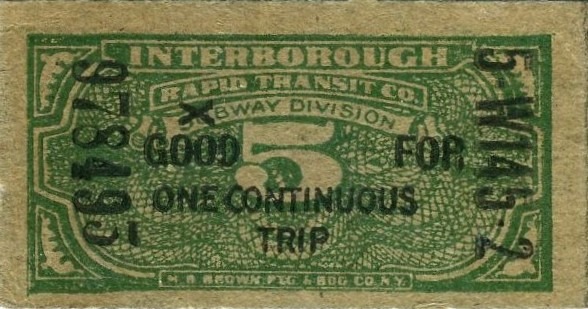 |
||||||
| West 145th Street M. B. Brown Ptg & Bdg Co |
||||||
| . | ||||||
| Miscellaneous Issues | ||||||
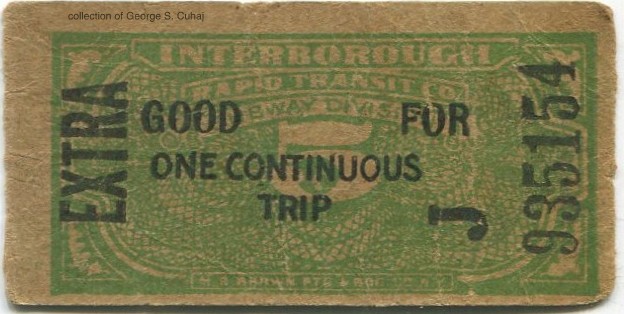 |
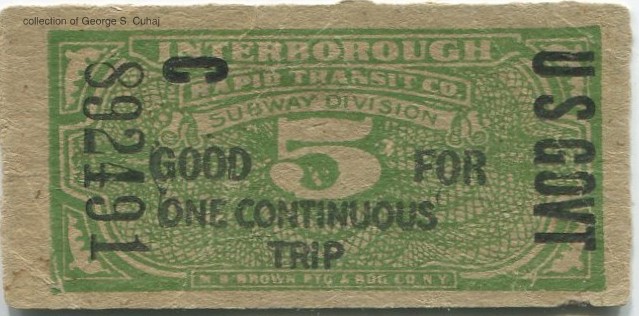 |
|||||
| Extra M. B. Brown Ptg & Bdg Co |
US Government M. B. Brown Ptg & Bdg Co |
|||||
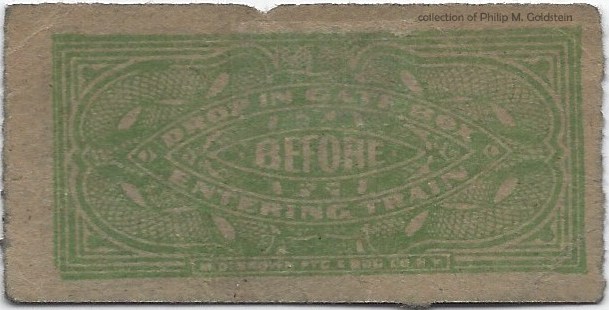 |
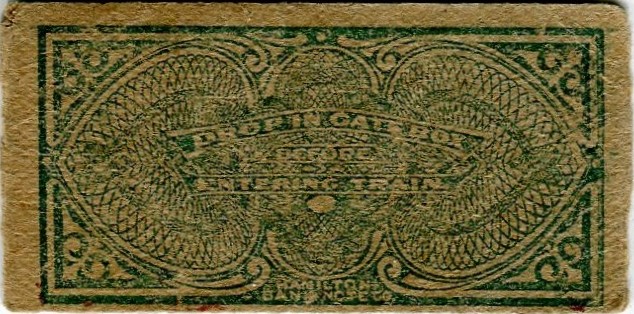 |
|||||
| ticket back | ||||||
These issues are much more common than the 10 cent or Elevated Lines counterparts. $20.00 - $30.00 per ticket
seen printed by Globe Ticket, Hamilton Banknote and M. B. Brown PTG & BDG (Printing & Binding) Co.
| Interborough Rapid Transit .- Manhattan Railway Division (Elevated Lines) 1903 - 1928 (The tickets below correspond to blue routes in the above map - elevated division. |
|||||||
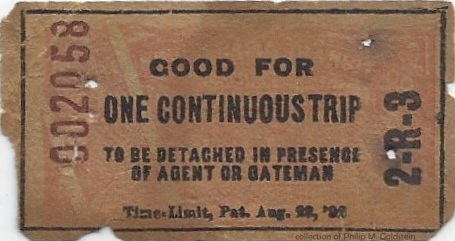 |
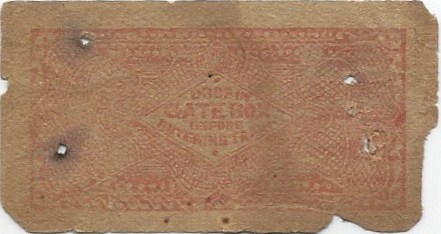 |
||||||
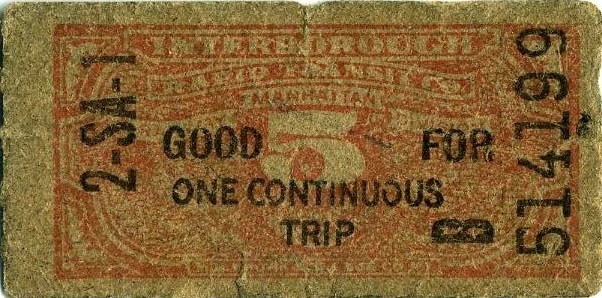 |
Rector Street (Sixth Avenue Line) This piece is printed on paper as opposed to card stock. It also states "to be detached in presence of agent or gateman"; leading us to conclude this was issued in strip or booklet form. The Time Limit Patent Date is from August 23 or 28, 1898 |
||||||
| Sedgwick Avenue (Ninth Avenue Elevated) Hamilton Bank Note |
|||||||
| . | |||||||
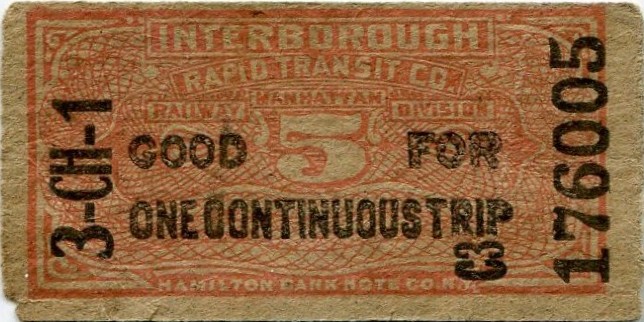 |
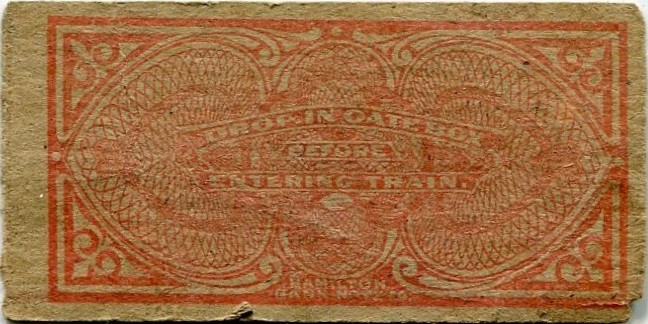 |
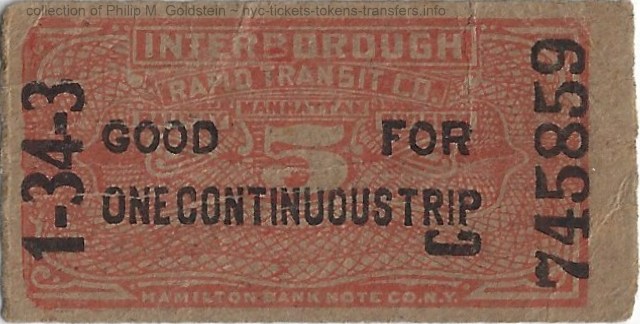 |
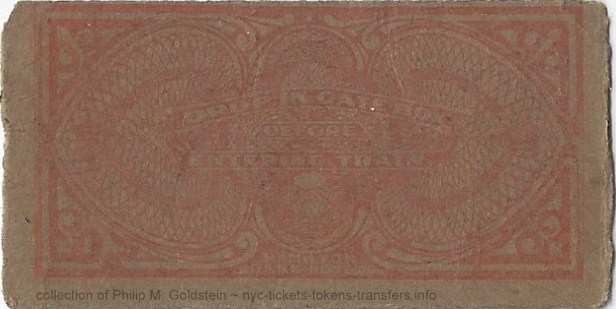 |
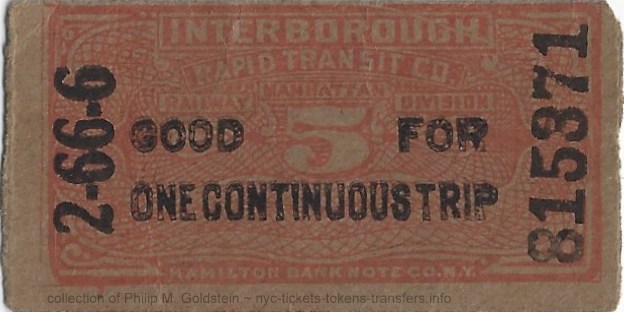 |
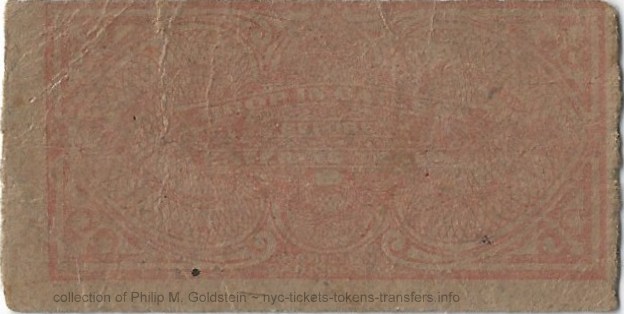
|
||
| .City Hall - (Third Avenue Elevated) Hamilton Bank Note |
34th Street (Second, Third or Ninth Avenue Elevated) Hamilton Bank Note |
66th Street - (Ninth Avenue Elevated) Hamilton Bank Note |
|||||
| . | |||||||
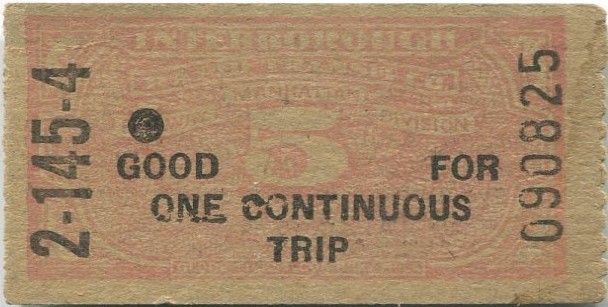 |
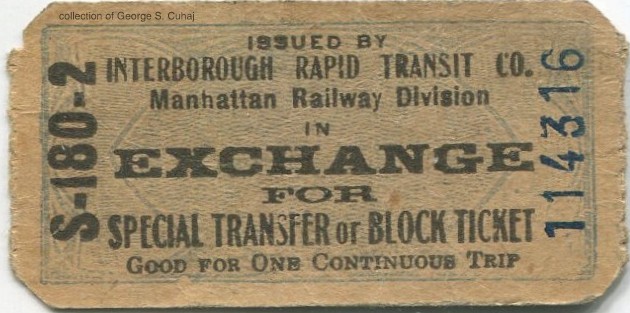 |
||||||
| 145th Street Station at Eighth Avenue (Sixth Avenue Line) Globe Ticket Co. |
Exchange for Special
Transfer or Block Ticket, issued at 180th Street - the Bronx (Third Avenue Line?) |
||||||
| rare; $40.00 to $45.00 | |||||||
![]()
| Brooklyn Heights Railroad (Elevated) 1895 - 1899 |
|||||||
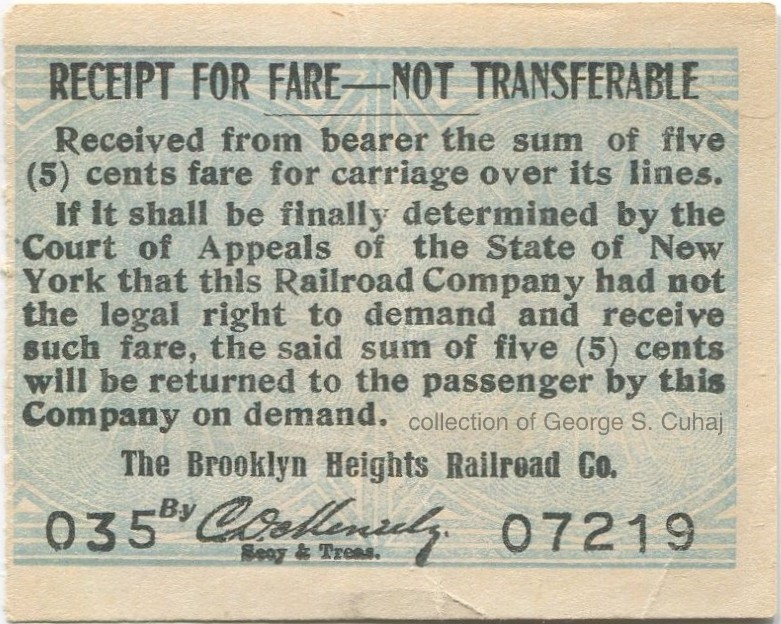 |
|||||||
| Fare Receipt C. D. Meneely, Secretary & Treasurer rare; $40.00 to $50.00 |
|||||||
| . | |||||||
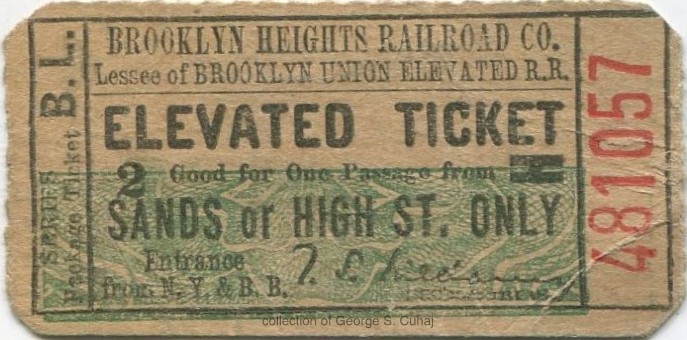 |
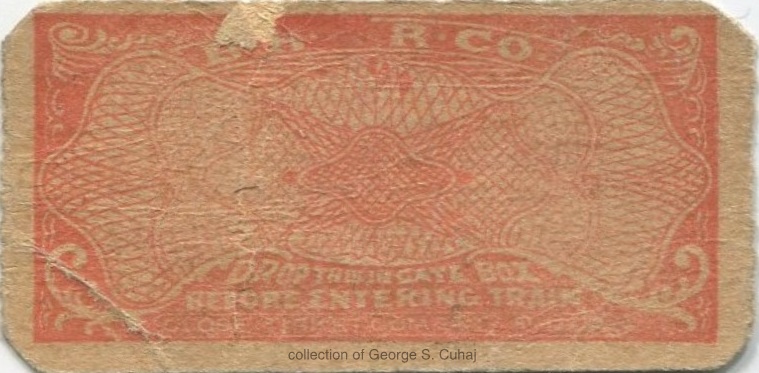 |
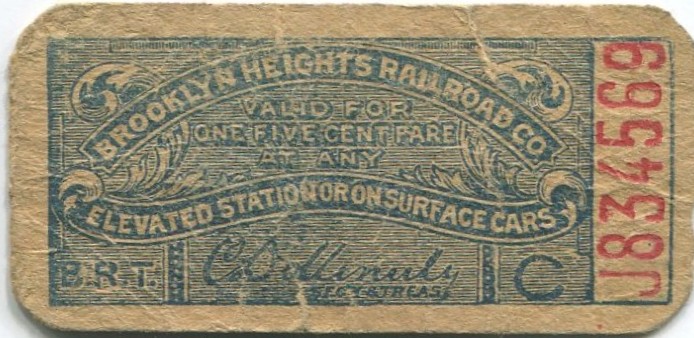 |
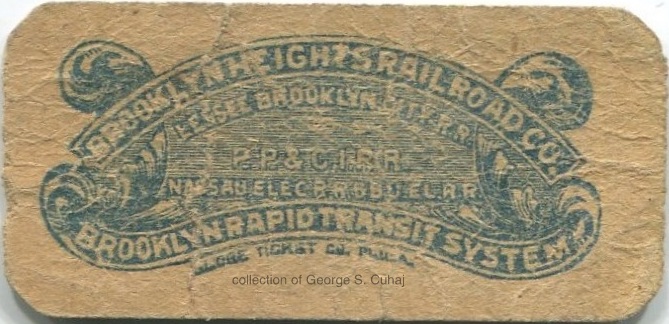 |
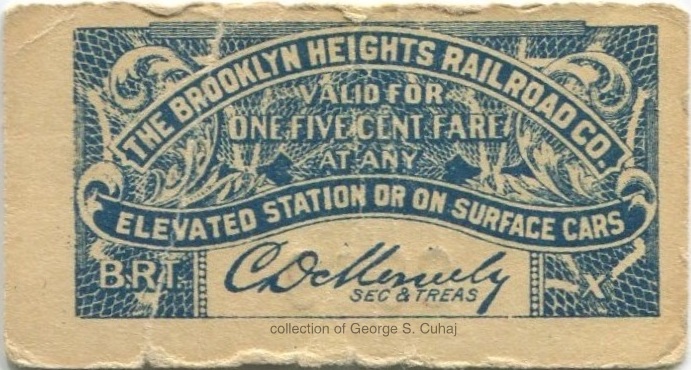 |
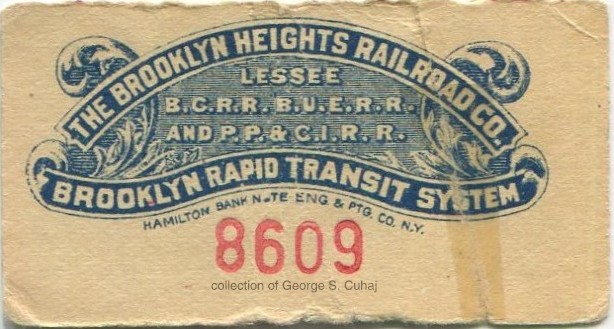 |
||
| BHRR lessee of Brooklyn Union Elevated Elevated Ticket - Sands or High Street (connection from New York & Brooklyn Bridge RR) T. S. Williams, Secretary & Treasurer Hamilton Bank Note |
Valid for One Five Cent Fare C. D. Meneely, Secretary & Treasurer (printed signature field) serial number on front P.P. & C.I. R.R., Nassau Elec R.R. & B. U. Ele R.R. Globe Ticket |
Valid for One Five Cent Fare C. D. Meneely, Secretary & Treasurer (unprinted signature field) serial number on back Lessee B.C. R.R. B.U.E. R.R. & P.P. & C.I. R.R. Hamiton Bank Note Eng & Ptg |
|||||
| rare; $40.00 to $50.00 | uncommon; $15.00 to $20.00 | uncommon; $15.00 to $20.00 | |||||
| . | |||||||
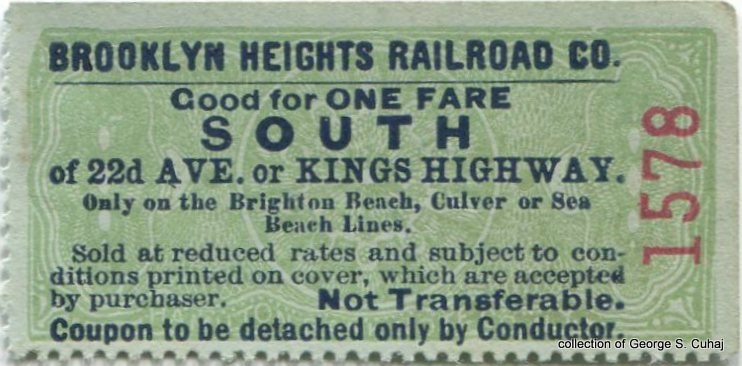 |
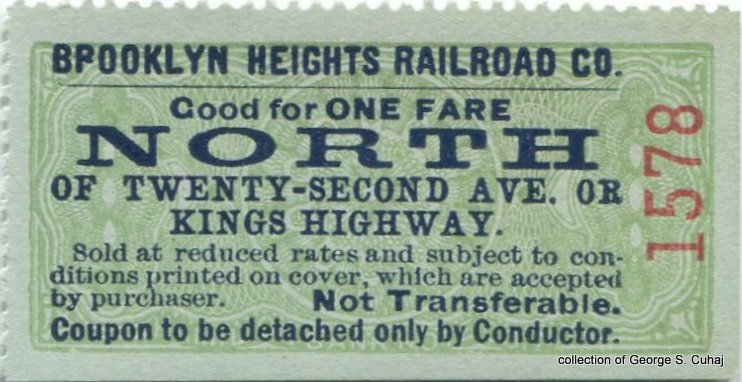 |
||||||
| Excursion Ticket Coney Island to Brooklyn (39th Street) C. D. Meneely, Secretary & Treasurer |
Good for One Fare - (pair south & north) Good For One Fare - South of 22d Ave or Kings Highway Good for One Fare - North of Twenty-Second Ave. or Kings Highway on Brighton Beach, Culver or Sea Beach Lines These are commutation tickets purchased by local residents in the double fare zone that BRT so rigidly and physically enforced from 1900 to 1919 |
||||||
| rare; $40.00 to $50.00 | extremely rare; $75.00 to $90.00 for pair individual tickets $20.00 - $25.00 |
||||||
| Brooklyn & Rockaway Beach Railroad 1863 - 1906 |
||||||
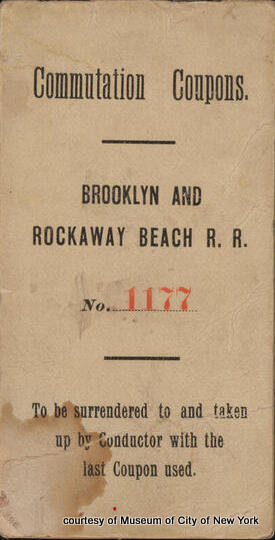 |
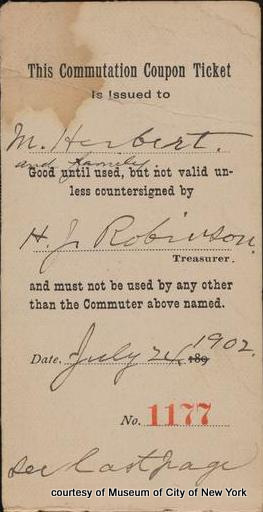 |
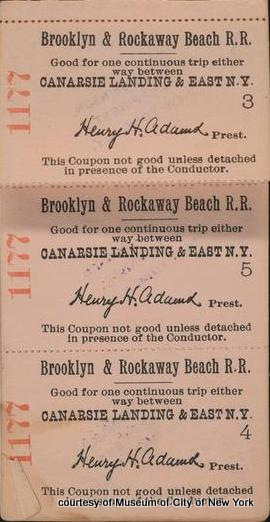 |
intentionally left blank |
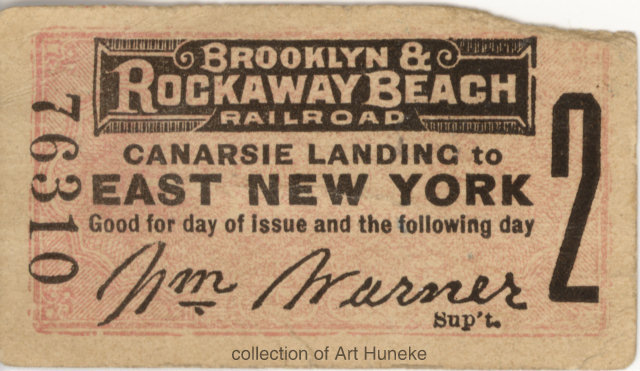 |
||
| Commutation Coupons - July 24, 1902 between Canarsie Landing and East New York Henry H. Adams, President, H. J. Robinson, Treasurer |
Canarsie Landing to East New York William Warner, Superintendent |
|||||
| extremely rare; $75.00 to $100.00 on condition of quantity of tickets remaining. | rare; $45.00 to $60.00 | |||||
| Brooklyn Elevated Railroad 1885 - 1899 (merged into Brooklyn Union Elevated) |
||||
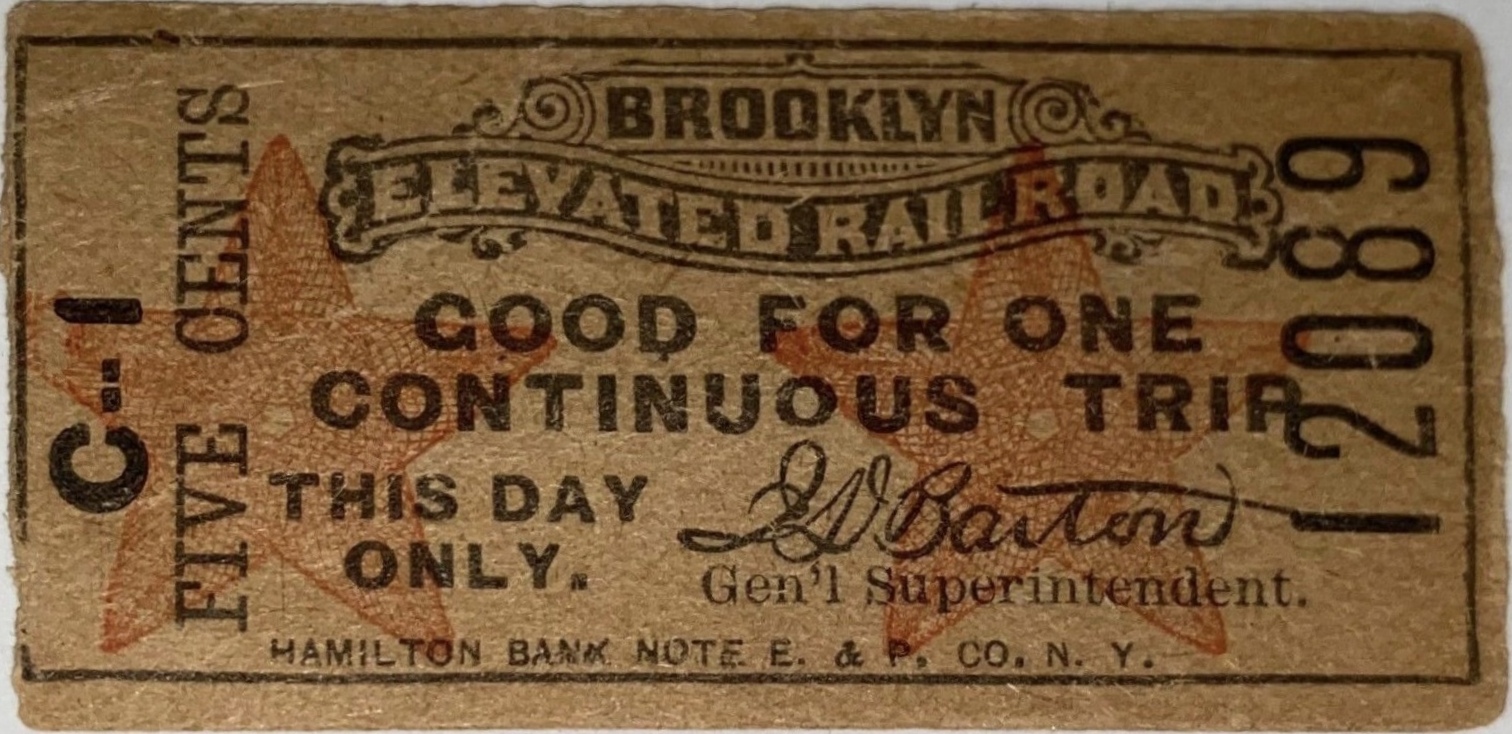 |
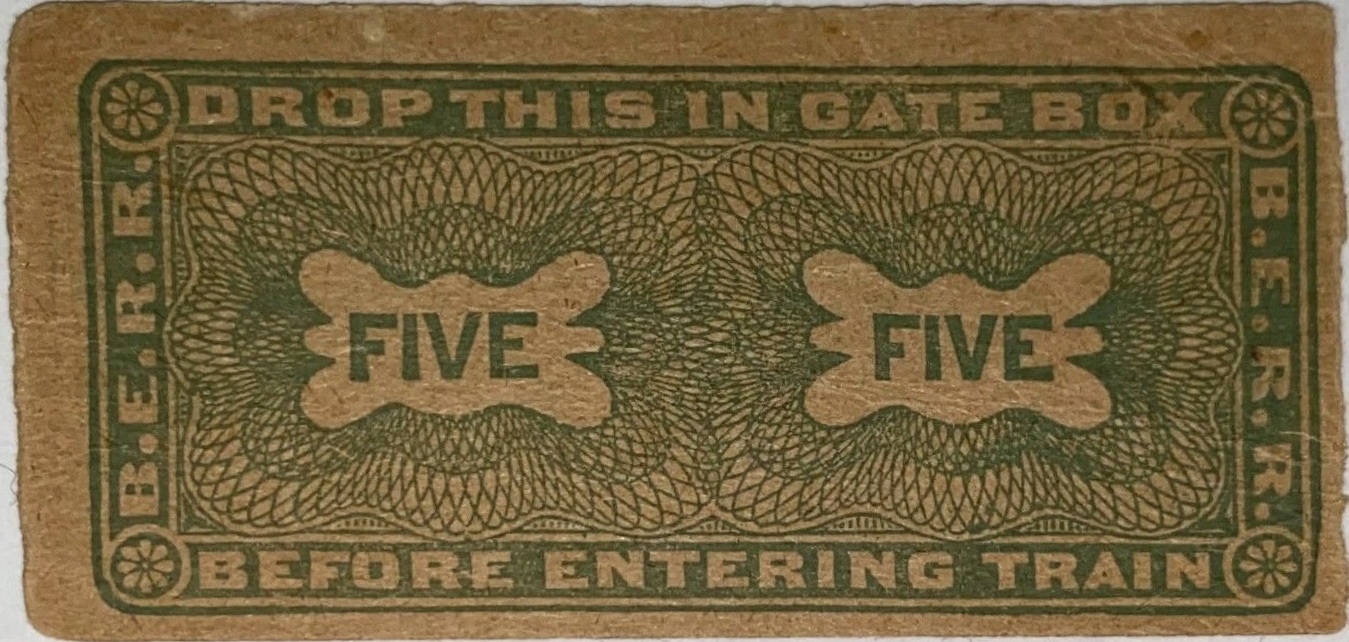 |
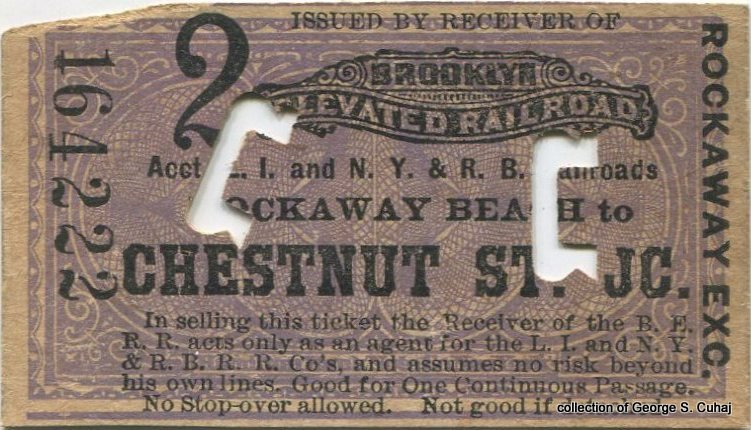 |
||
| Good for One Continuous Trip Hamilton Bank Note Engraving & Printing I. D. Barton, General Superintendant |
Rockaway Beach to Chestnut St. Junction |
|||
| all tickets above rare; $30.00 to $35.00 |
||||
| Brooklyn Union Elevated Railroad 1899 - 1912 |
|
| C. D. Meneely, Secretary & Treasurer Accepted by the Brooklyn Heights RR Co. Nassau Electric RR Co. Brooklyn, Queens County & Suburban RR Co. Coney Island & Gravesend Railway Co. Sea Beach Railway Co. South Brooklyn Ry. Co. 2" x 1" very common; $5.00 to $10.00 based on condition |
|
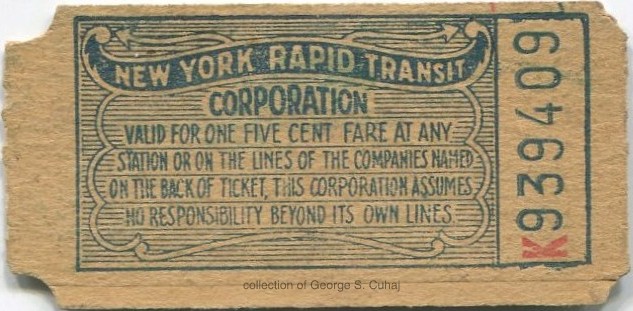 |
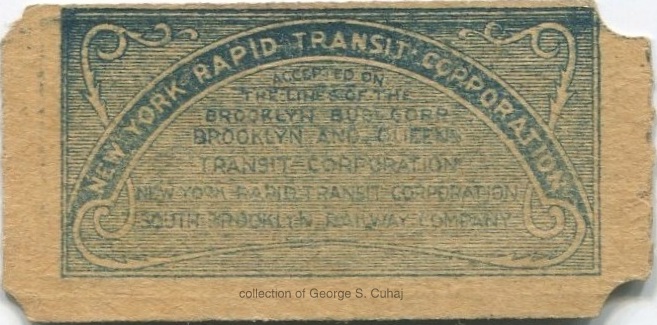 |
| circa 1923 - 1940 common; $7.00 to $10.00 |
|
| Kings County Elevated Railway 1888 - 1899 |
||||
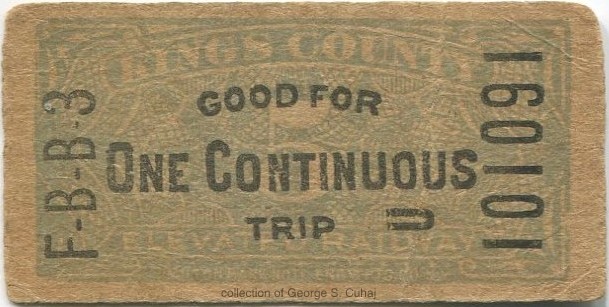 |
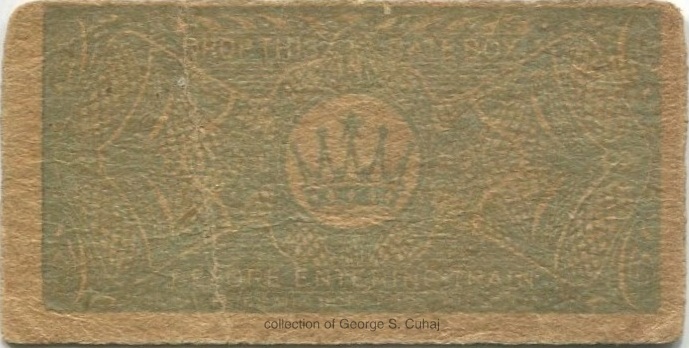 |
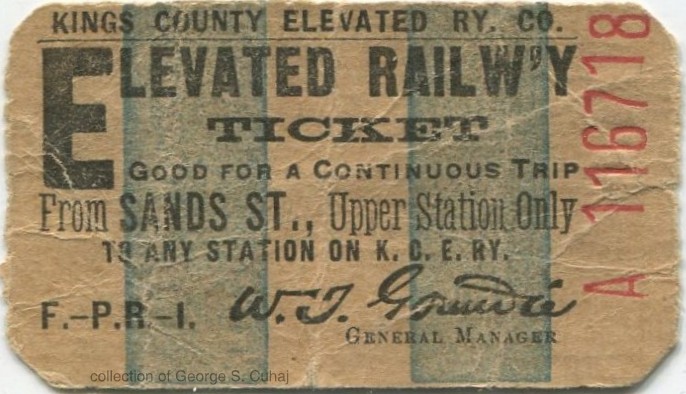 |
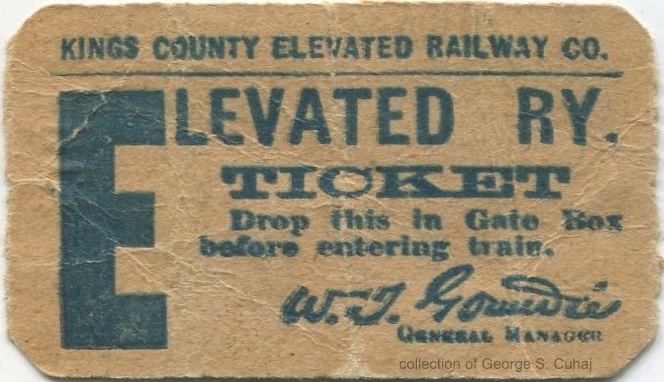 |
|
Hamilton Banknote & Engraving |
From Sands St., Upper Station Only to any station K. C. E. Ry. W. T. Goundie, General Manager F. - P.R. (Park Row) - I. |
|||
all tickets above rare; $30.00 to $35.00 |
||||
 |
 |
||||||
| Coney Island to New York
Whitehall Street to Coney Island 1/2 fare
Coney Island to Whitehall Street connected return trip |
Whitehall Street to Coney Island / Sea Beach Palace to Brighton Beach on William Cappel's Stages or Coney Island Railway |
||||||
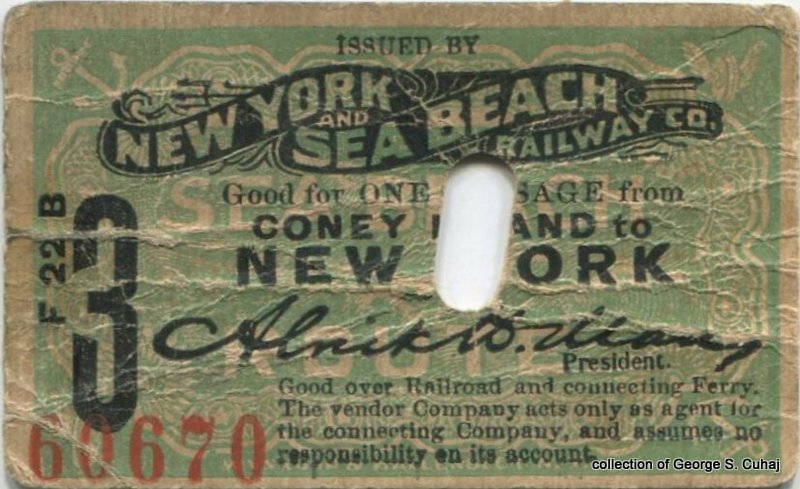 |
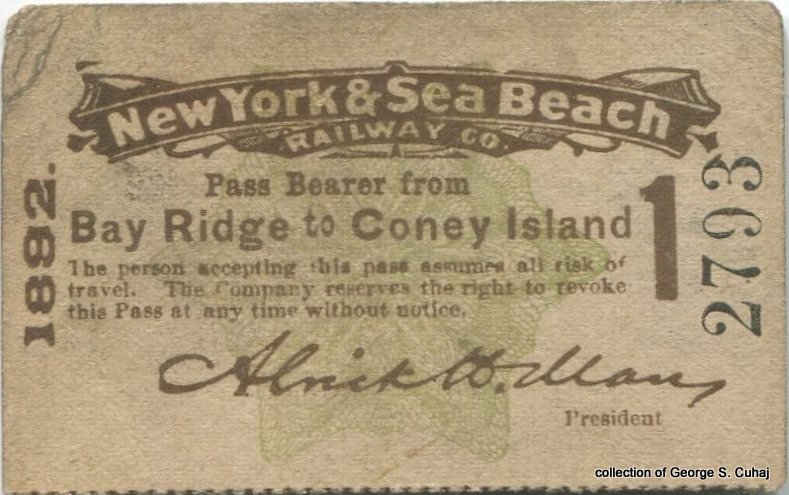 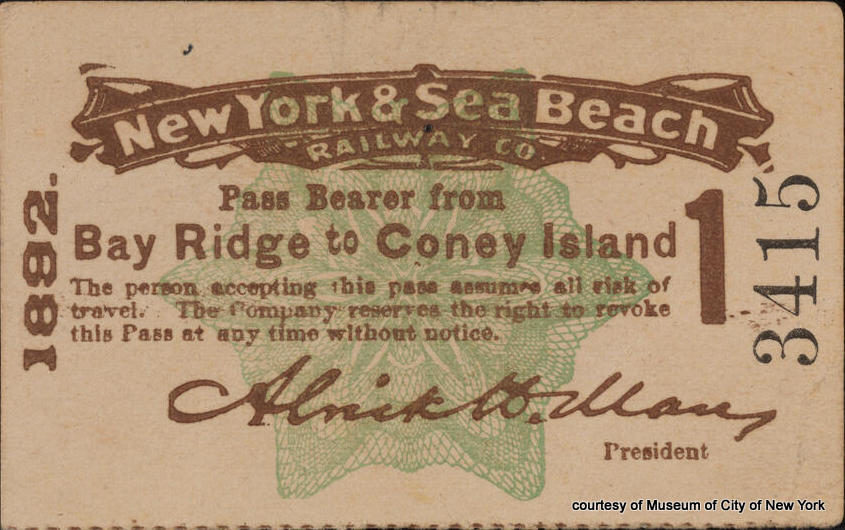 |
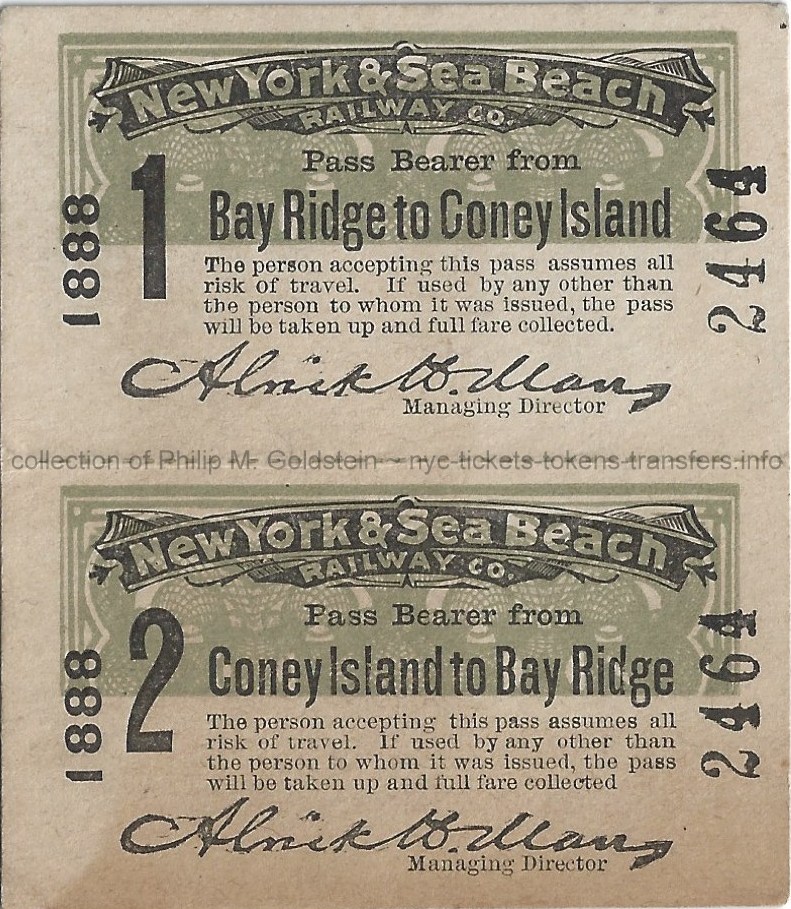 |
|||||
| Coney Island to New York | Bay Ridge to Coney Island - 1892 | Bay Ridge to Coney Island - 1888 connected return trip |
|||||
| Alrick H. Man, Managing Director all above rare; $50.00 to $75.00 |
|||||||
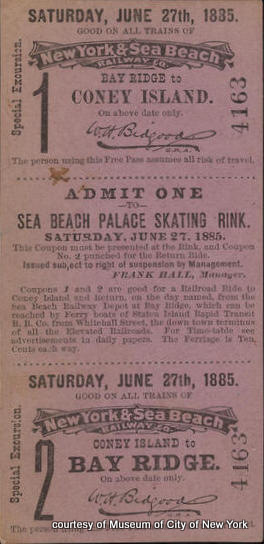 |
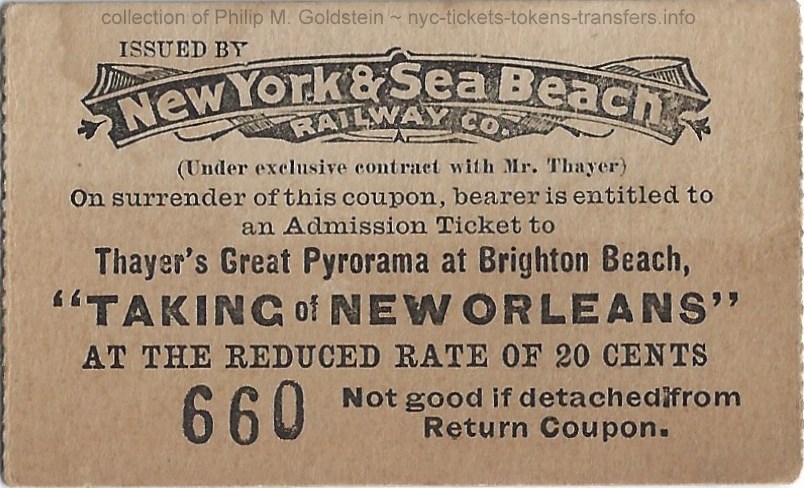 |
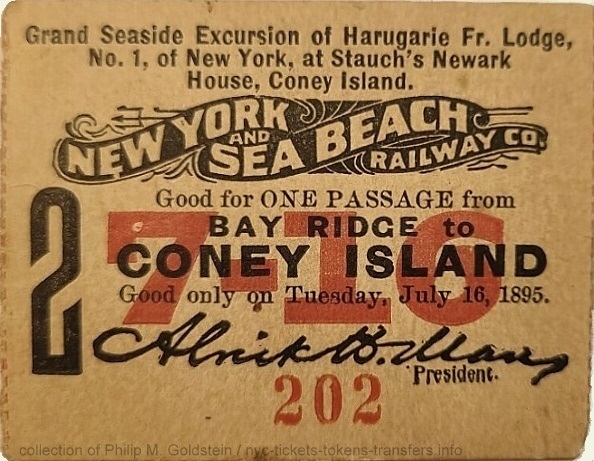 |
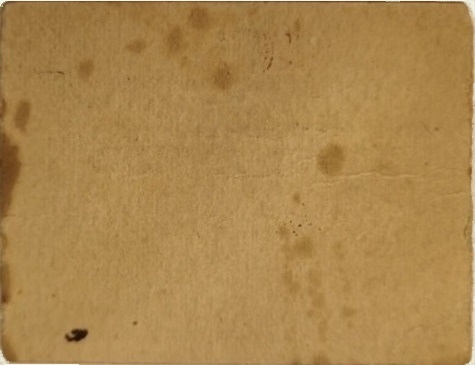 |
||
| Special Excursion - June 27, 1885 Bay Ridge to Coney Island and return with admit one to Sea Beach Palace Skating Rink W. H. Bidgood |
July 11, 1888 coupon - for reduced rate admission ticket to Thayer's Great Pyrorama at Brighton Beach "Taking of New Orleans" |
Grand Seaside Excursion of Harugarie Fraternal Lodge No. 1 of New York at Stauch's Newark House, Coney Island - July 16,1895 Bay Ridge to Coney Island Alrick H. Man, President |
|||
| all above rare; $50.00 to $75.00 | |||||
|
Prospect Park & Coney Island Railroad
1873 - 1896 |
|||
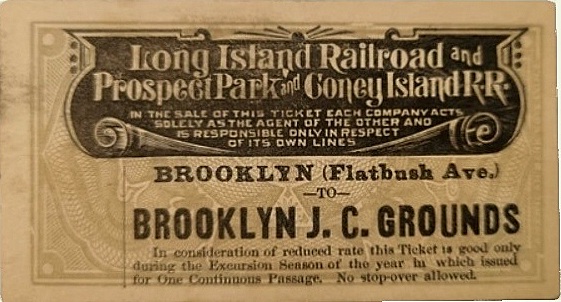 |
|||
| Long Island Railroad and Prospect Park and Coney Island Railroad - Joint Issue Brooklyn (Flatbush Avenue) to Brooklyn Jockey Club Grounds extremely rare - $150.00 to $175.00 |
|||
| . | |||
| Conductors Memorandum (cash fare receipt) - May 23, 1896 Northbound Union Depot to 9th Avenue & 20th Street printed by William H. Campbell extremely rare - $150.00 to $165.00 |
|||
| Miscellaneous Passes & Tickets |
|||||||
| New York & Queens County Railway 1896 - 1932 |
Brooklyn Heights Railroad (Elevated) 1895 - 1899 |
Brooklyn & Queens Transit, New York Rapid Transit and South Brooklyn Railway (BMT) 1923 - 1940 |
|||||
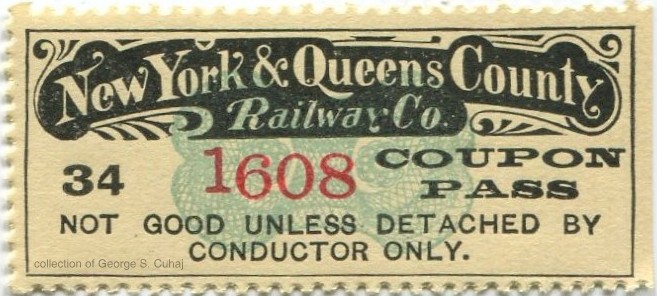 |
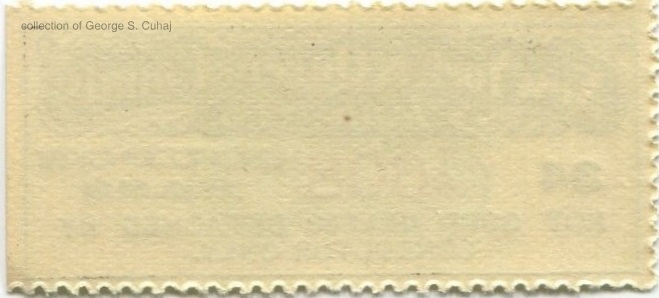 |
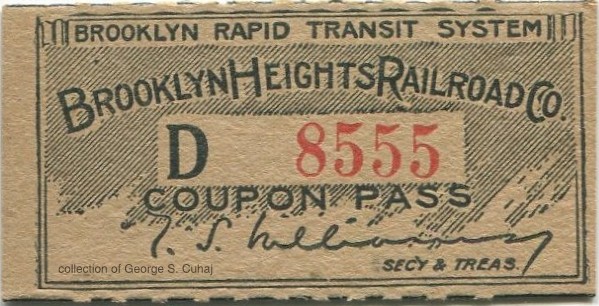 |
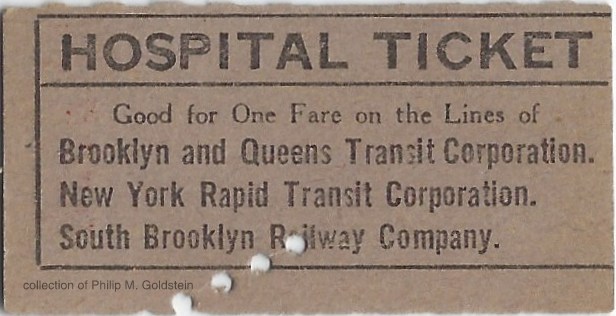 |
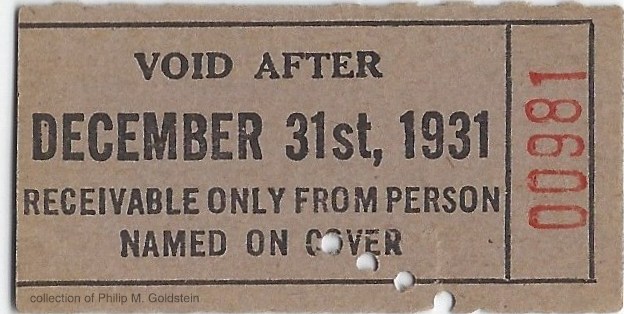 |
|||
| T. S. Williams, Secretary & Treasurer | Hospital Ticket Void after December 31, 1931 |
||||||
| Surface Transit Corporation (subsidiary of Third Avenue Railway) 1941 - 1948 |
|||||||
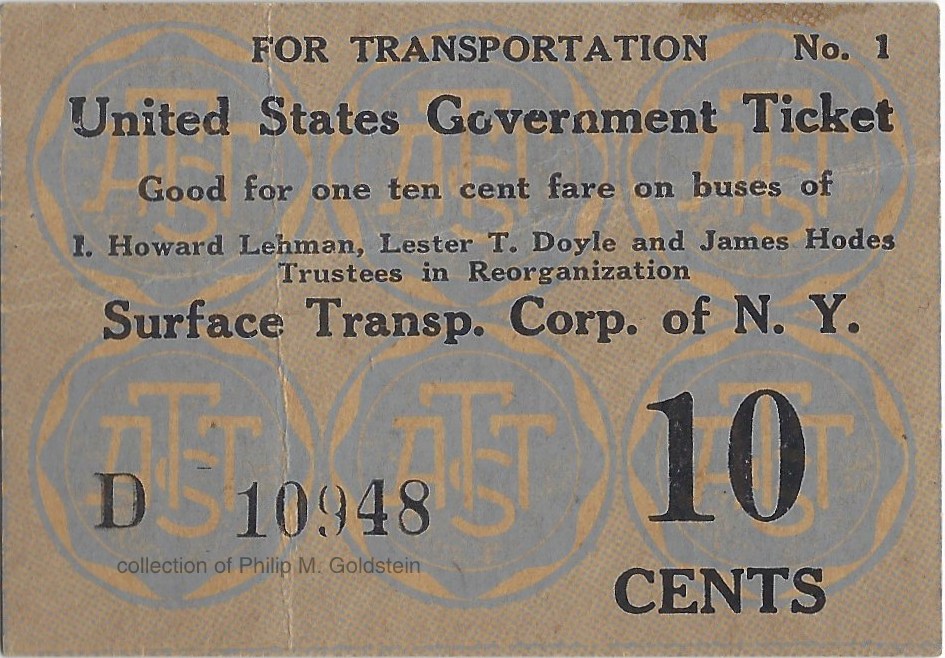 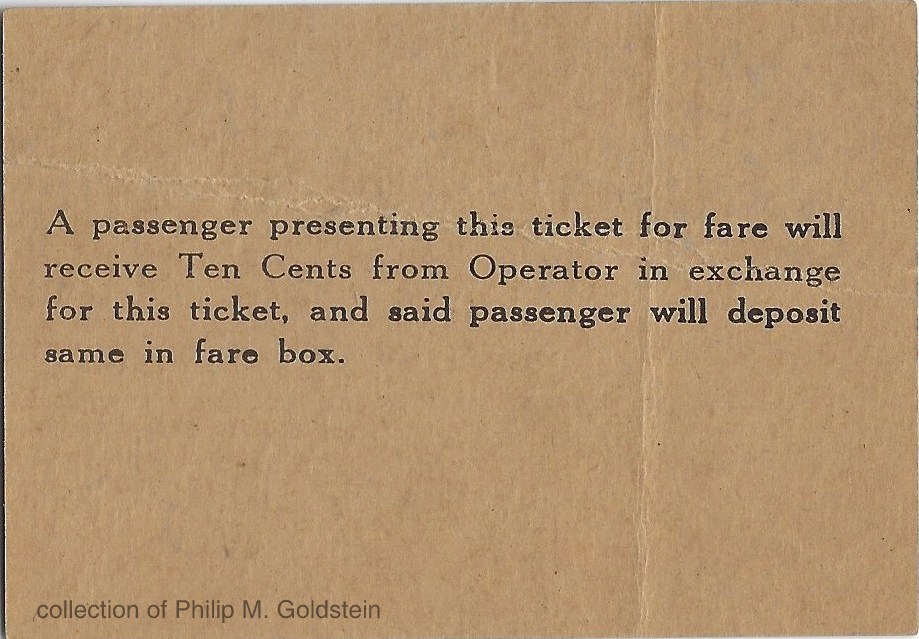 |
|||||||
All tickets above, uncommon. $15.00 to $25.00 each
![]()
. . |
|||
| Far Rockaway Railroad This
trolley line is believed to be one of the predecessors to Long
Island Rail Road operations. Research shows it was consolidated into
the South Side Railroad Company in September 1872. The South Side
Railroad was a competitor to the Long Island, but could not compete in
earnest. This company was in turn acquired by the Long Island Rail Road
Company in January 26, 1876.
|
|||
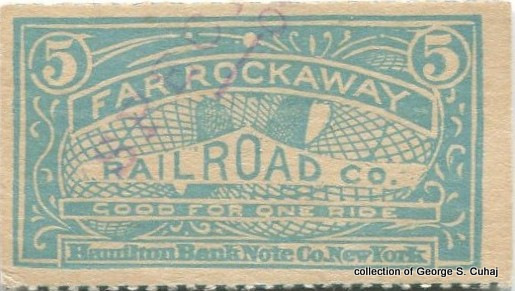 |
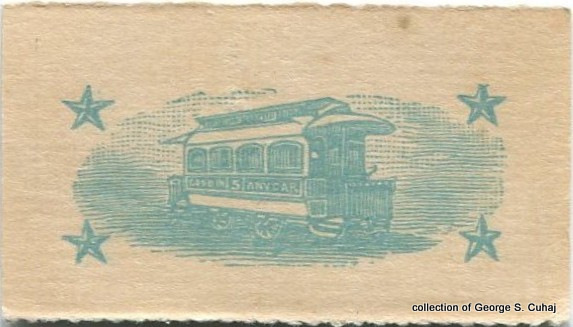 |
||
| 1 5/8" x 15/16" Hamilton Bank Note Co. extremely rare - $45.00 to 60.00 |
|||
![]()
 |
|||
| Brooklyn Bridge - 1883 to 1950 | Williamsburg Bridge - 1904 to 1929 | Queensboro Bridge - 1909 to 1956 | Manhattan Bridge - 1910 to 1929 |
A sub-set to the category of fare tickets, are the so called Bridge Tickets. These tickets were expressly issued for the surface or elevated lines that crossed any one of four bridges over the East River:
Brooklyn Bridge, Manhattan Bridge, Williamsburg Bridge and the Queensboro Bridge (of which was known as Blackwell's Island Bridge and the 59th Street Bridge).
|
|
"Promenade" There is a lot of misunderstanding and misinformation regarding the ticket issue for the Brooklyn
Bridge seen at left. Since they to pertain to transit ephemera (but not trolley / elevated),
I shall include a brief description here. The Brooklyn Bridge opened to pedestrians, horse wagons and carriages on May 24th, 1883. After the initial opening, pedestrians were charged to use the Promenade, or the wood plank walkway in the center of the bridge. These tickets are marked New York and Brooklyn Bridge "PROMENADE". They are NOT cable car or elevated tickets, but a ticket to walk across. A pedestrian toll ticket as it was. The PROMENADE tickets were sold in strips of twenty-five tickets for 5 cents; and were issued from January 31, 1885 through May 31, 1891, when that Promenade toll was abolished. They are unfortunately and erroneously listed as subway or trolley tickets. They are not. |
 2 ½" x 1 ½" |
.
Carriageway Another variety of tickets seen for the Brooklyn Bridge (albeit extremely rarely), were the New York and Brooklyn Bridge carriage way toll ticket. Again, this was NOT a fare ticket for the elevated or surface lines that crossed the Brooklyn Bridge. It was a toll ticket for the horse and carriages. The Promenade Tickets and the Carriageway Toll Tickets are further explained in depth on Page 2 of my companion website: nynjtollscrip.info. But to re-iterate, neither of these two issues were used for the Brooklyn Bridge Railroad in any way shape or form. If the tickets are not specifically marked "New York & Brooklyn Bridge Rail Road", then they were not for the railroad operation upon the bridge. |
The bridge as designed, incorporated cable car lines across the bridge, and located in the inner most lanes of traffic, and directly flanking either side of the Promenade walkway. While it was intended to have the railroad opened for the grand opening of the bridge in May, difficulties concerning the grip mechanisms under the cable cars, meant cable car service could not start until September 25, 1883.
Furthermore, the cable system experienced frequent down time, such as sheave axles breaking; icy weather preventing good grip among other issues and the cable needed to be changed approximately every two to three years due to wear and fraying.
Once up and running, the tickets so marked "New York
& Brooklyn Bridge Rail
Road" (seen in the chapter below, and of which was in actuality a cable
car line at first) are for the actual rail operations upon the bridge:
The Steam Powered Cable Railroad: September 1883 to November 1896

Many factors resulted in the cable car lines ultimately being converted to electricity in November 1896: the troublesome cable and sheaves, the smoke and soot from the steam boilers to power the machinery to power the winches for the cable, as well as ash and cinder removal. The cable and machinery was not immediately removed upon conversion to electricity, but it would be.
The location of the cable car lines in relation to the bridge deck can be seen in the following diagram. This is the original configuration of the lanes upon opening:
| PROMENADE | ||||||||
| CARRIAGEWAY | CARRIAGEWAY | CABLE CAR | CABLE CAR | CARRIAGEWAY | CARRIAGEWAY | |||
the Cable Railroad is out, the Electric Elevated Cars are in: November 1896 to March 5, 1944
On January 26, 1908, Brooklyn Bridge "Local" service using Elevated "El" Cars between the two ends of the bridge was introduced. These electric cars operated in 5 car sets, and replaced the cable cars of the New York and Brooklyn Bridge Rail Road, which were discontinued the following day. Brooklyn Rapid Transit (and its subsidiaries Brooklyn Heights Railroad, ) would assume operation of the bridge railroad from this point on as well.
| EL CARS | PROMENADE | EL CARS | ||||||
CARRIAGEWAY |
CARRIAGEWAY |
CARRIAGEWAY |
CARRIAGEWAY |
|||||
Trolley Lines: January 1898 to March 1950
On January 23, 1898; the tracks of the Graham Avenue Line (a minor line approaching downtown from the east on Sands Street) was tied into tracks installed upon the bridge carriage way. As the line operated on 30 minute intervals, this line was chosen.
After this, multiple trolley lines began offering cross bridge service to and from Brooklyn, and merged into this set of trolley tracks for connection over the bridge to various points in Manhattan; and likewise, trolley lines in Manhattan into Brooklyn. Within a few short years, automobiles would be arriving on scene and become commonplace, they would be assigned to the two outer lanes of traffic to share with both horse drawn vehicles in the outer lane) as well as the trolleys in the inner lane.
| EL CARS | PROMENADE | EL CARS | ||||||
| CARRIAGEWAY / AUTOMOBILE |
TROLLEY & AUTOMOBILE |
TROLLEY & AUTOMOBILE |
CARRIAGEWAY / AUTOMOBILE |
|||||
Also, each bridge would have its own independent "Bridge Local Line" which in essence was a dedicated loop trolley operating from each bridges Manhattan Terminal to its Brooklyn or Queens Terminal.
On March 5, 1944; elevated car service was terminated across the bridge; what with passengers traveling between the boroughs opting to take 'one seat' subway rides across the river. So the trolleys were moved onto those tracks, and now allowing for two dedicated lanes of automobiles in each direction. The very complex Park Row and Sands Street Terminals were razed to allow for automobile on ramps and interchanges.
As such, the Myrtle Avenue Elevated was one of the last Elevated lines to connect to the Bridge railroad, so passengers could now receive a continuing ride ticket from the Myrtle El to BMT subway station at Bridge & Jay Streets and vice versa to continue into and out of Manhattan (Continuing Ride Tickets & Transfers)
TROLLEY |
PROMENADE | TROLLEY |
||||||
AUTOMOBILE |
AUTOMOBILE |
AUTOMOBILE |
AUTOMOBILE |
|||||
Streetcar / trolley use of the bridge ended in March 6, 1950 and the once dedicated rail "lane" was converted to carry automobile traffic.
A dedicated bike lane was added to the promenade September 2021.
| PROMENADE w/ BIKE LANE |
||
| AUTOMOBILE AUTOMOBILE AUTOMOBILE | AUTOMOBILE AUTOMOBILE AUTOMOBILE |
With that not-so-brief explanation of the Brooklyn Bridge rail configurations, we will now proceed (finally!!) to the fare payment methods.
As one can imagine, there are an abundance of tickets used for these bridge services and likewise, transfers
to the extensive Brooklyn streetcar and elevated lines meeting at the
Sands Street station and the Park Row Terminal in Manhattan..
The cable car "Railroad" fare tickets was originally five cents for a single ride when it opened in October 1883. This
fare was reduced in 1885 to three cents for individual tickets, five
cents for two tickets or twenty-five cents for a strip of ten tickets
(thus the different numbers found in the center on the back of single
tickets).
Connecting elevated lines at either terminal offered free transfer to the bridge elevated.
The December 28, 1895 edition of the New York Times carried this very interesting and informative piece on the bridge tickets. A veritable gold mine of technical information is contained.
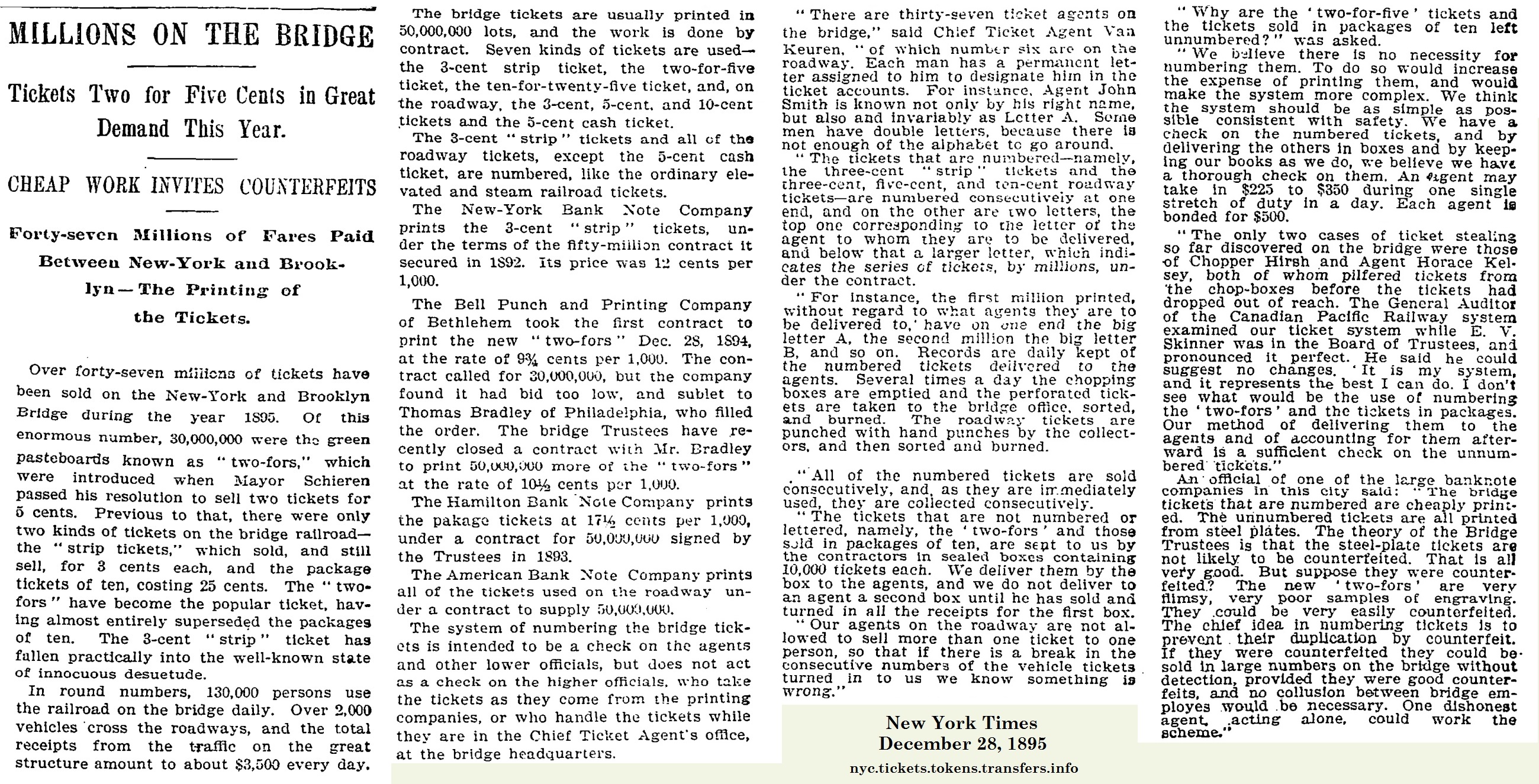
With this article, we learn the types of issues for the railway: 3 cents (or single ride), 2 for 5 cents (2½ cent tickets for round trip tickets) known as "two-fors", and 10 tickets for 25 cents (commutation tickets for frequent crossing).
The companies contracted for the printing, quantities printed; collection and destruction methods. We now know the meaning of the large letters on the 3 cent tickets (the top letter was issued to one particular agent, the larger letter a series letter per each million tickets printed).
2½ cent tickets were issued for both for the Brooklyn Bridge elevated and / or surface lines, and the various companies that operated streetcar or elevated lines across the bridge.
These 2½ cent tickets were sold two for 5 cents and in multiples of two. The Bridge Division tickets were used on the elevated lines over the Brooklyn Bridge, until the elevateds were removed from the bridge in 1944. This elevated bridge line should not be confused with the streetcars / trolleys that also operated over the bridge, (and which remained as a means to cross the Brooklyn Bridge until 1950; at which time it became automobile only.)
pre-Unification
| New York and Brooklyn Bridge Railroad Tickets 1883 to 1908 2" x 1" |
|||
| pack of ten tickets for 25 cents | "two-fors" (two tickets for 5 cents) |
||
 |
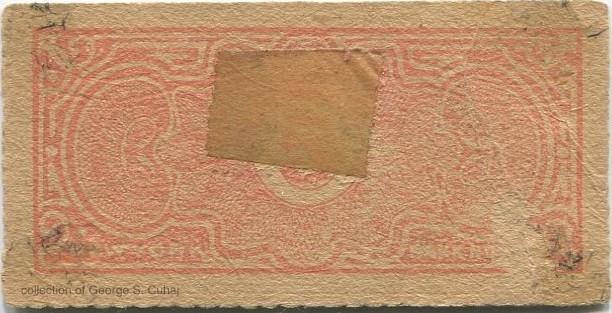 |
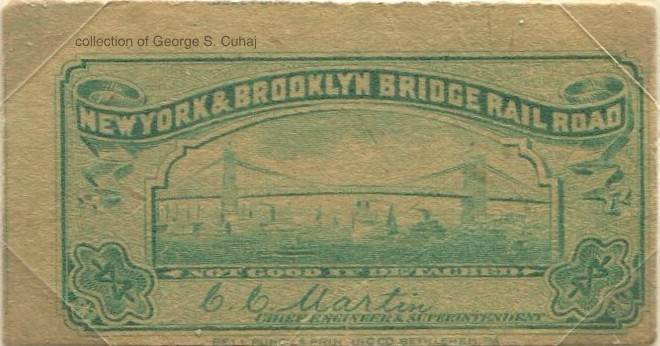 |
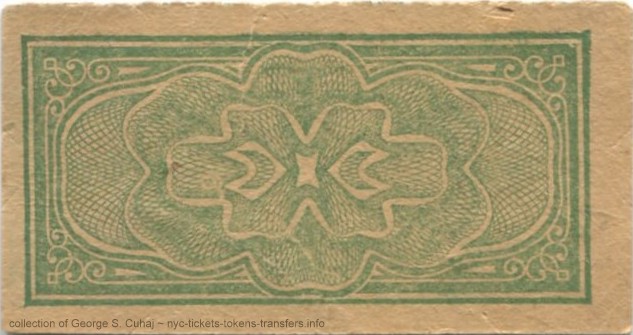 |
| C. C. Martin, Chief Engineer & Superintendant Hamilton Bank Note and Engraving |
C. C. Martin, Chief Engineer & Superintendant Bell Punch & Printing, Bethlehem, PA (1894) |
||
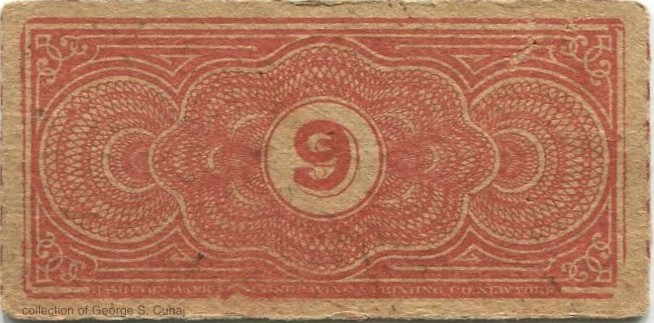 |
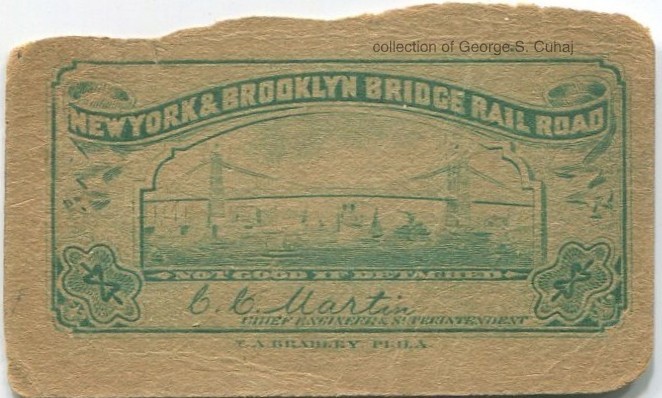 |
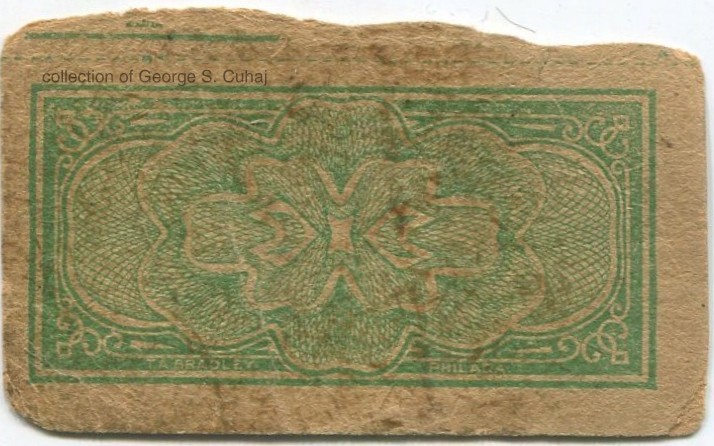 |
|
| C. C. Martin, Chief Engineer & Superintendant New York Bank Note |
C. C. Martin, Chief Engineer & Superintendant .T.A. Bradley, Phila |
||
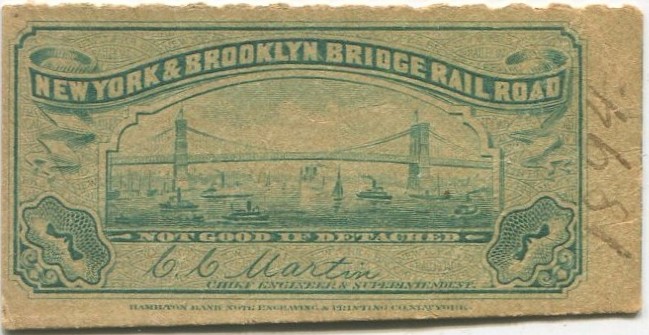
|

|
||
| C. C. Martin, Chief Engineer & Superintendant Hamilton Bank Note and Engraving |
|||
| . | |||
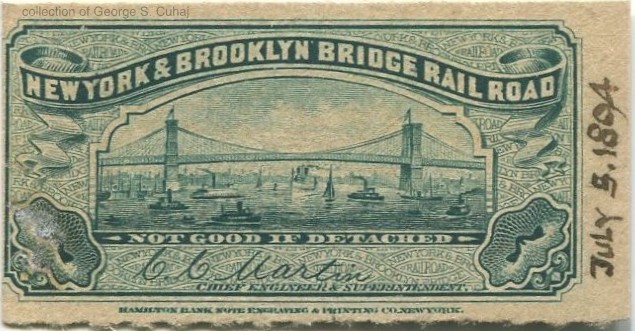 |
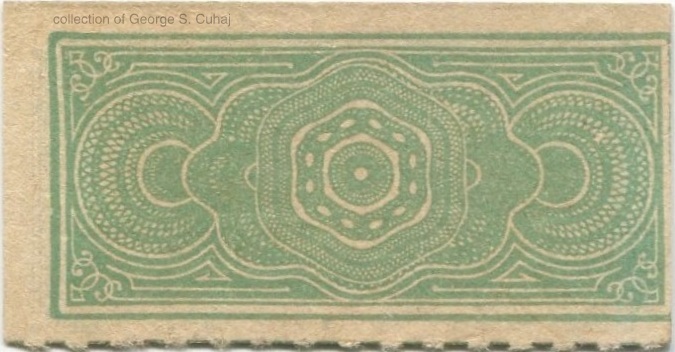 |
||
| C. C. Martin, Chief Engineer & Superintendant Hamilton Bank Note and Engraving |
|||
individual tickets above: common; $10.00 - $15.00. 50% premium for connected "two-fers". A complete unbroken strip of 10 tickets is extremely rare. Worth at least the sum of the individual tickets ($100) plus a 25% premium. |
|||
| .
|
|||
| 3 cent "Strip" ticket | 3 cent "Strip" ticket | ||
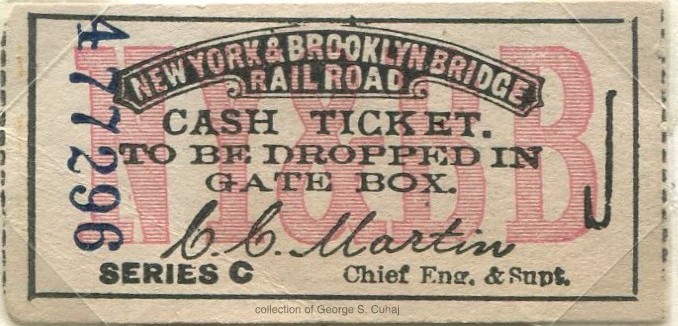 |
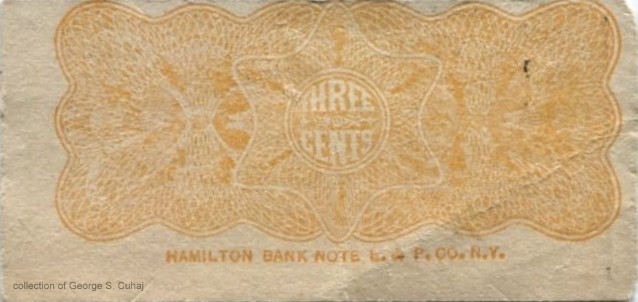 |
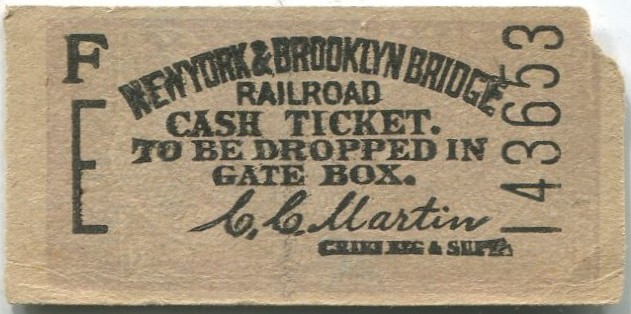 |
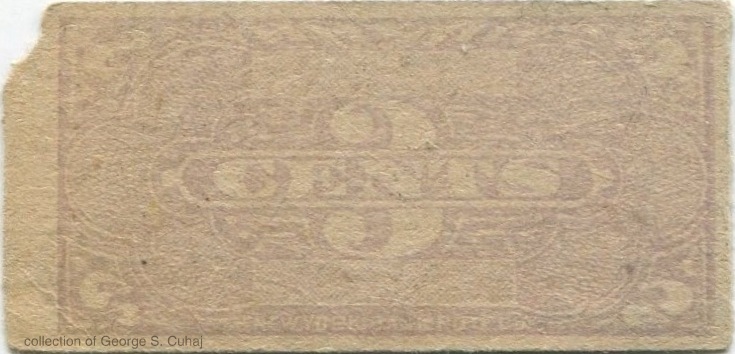 |
| C. C. Martin, Chief Engineer & Superintendant J - Series C (3,000,000) uncommon, $45.00 - $55.00 |
C. C. Martin, Chief Engineer & Superintendant F - Series E (5,000,000) |
||
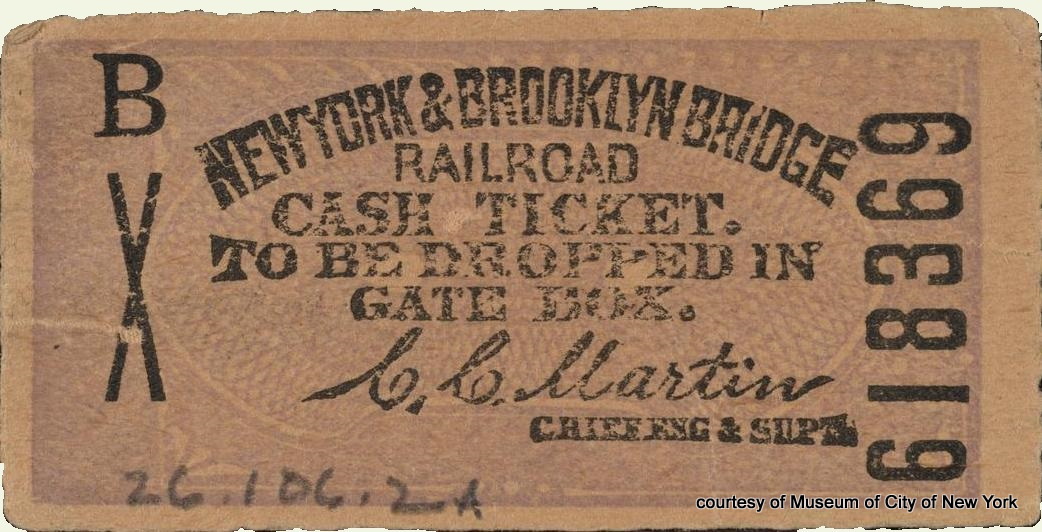 |
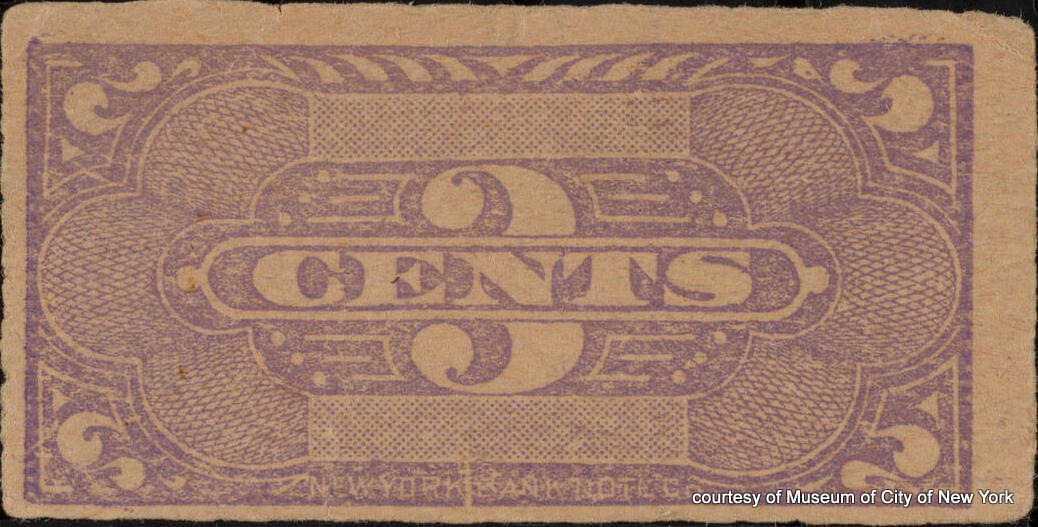 |
||
| C. C. Martin, Chief Engineer & Superintendant B - Series X (24,000,000) New York Bank Note Co. uncommon, $45.00 - $50.00 |
|||
| For passenger convenience,
this is a brass ticket holder marked "BRIDGE AND ELEVATED R.R.
TICKETS", it has a hinged lid and fits the 1880's-1900's 2" x 1" tickets
which were often sold in multiples. This keeps them safe from damage from
other items in a pocket or purse. |
|||
.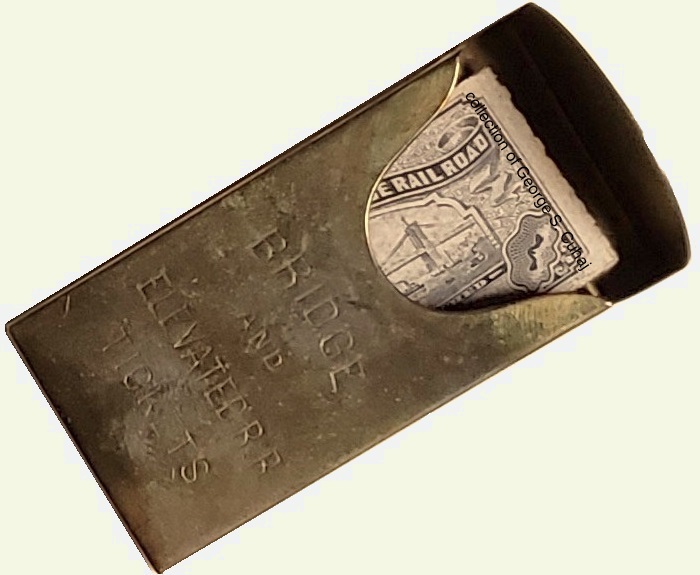 seen in brass and copper nickel plated varieties 1 3/16" wide x 2 3/16" length by 1/4" thick rare: $50.00 - $60.00 |
|||
|
|
|||
Coney Island & Brooklyn Railroad 1883 to 1914 (was incorporated in 1860) Began trolley car operations on Brooklyn Bridge in 1908. |
|||
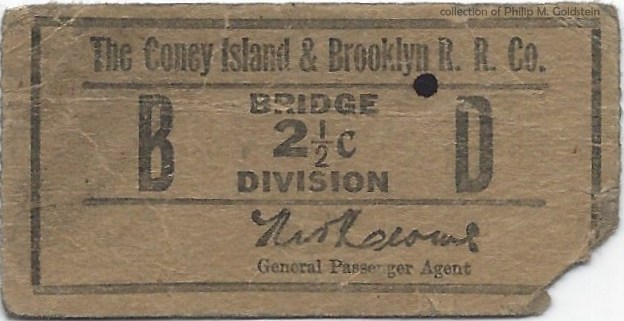 |
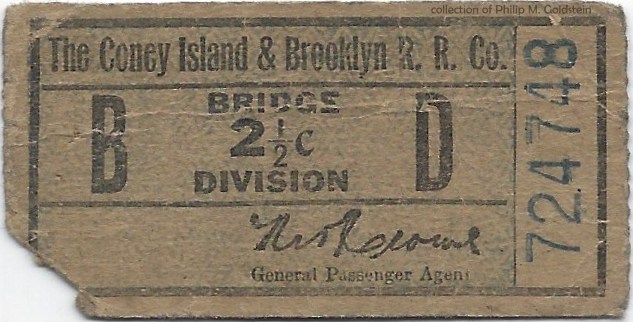 |
||
| Bridge Division 2 1/2 cents H. A. Crowe, General, Passenger Agent rare; $35.00 - $40.00 |
|||
|
|
|||
Brooklyn Elevated Railroad 1885 to 1899 (to be acquired by and merged into BRT Brooklyn Union Elevated in 1899) |
|||
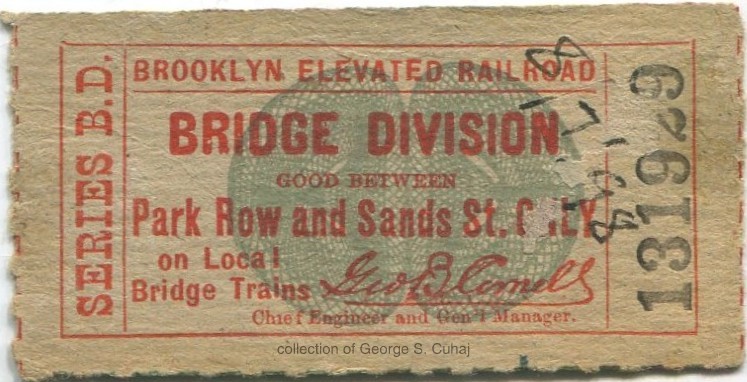 |
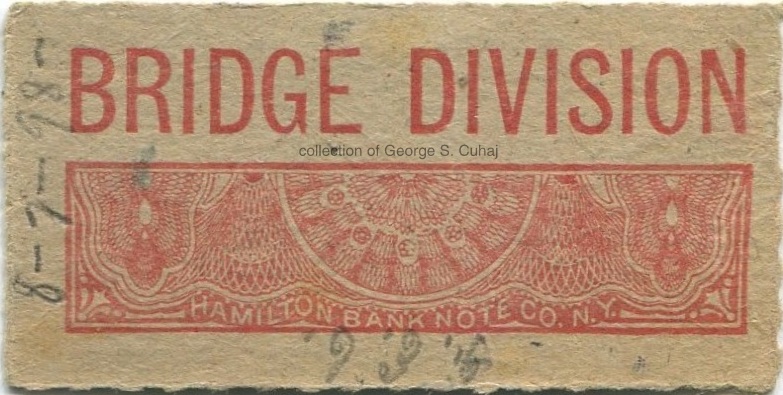 |
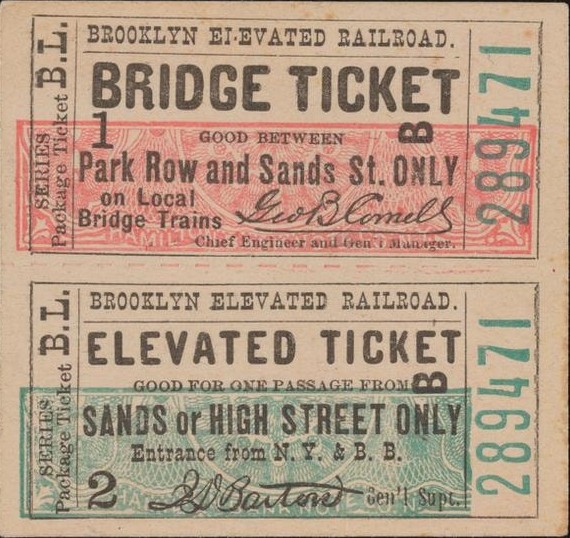 |
|
| between Park Row (Manhattan) and Sands Street (Brooklyn) Geo. B. Cornell, Chief Engineer & Gen'l Manager Hamilton Bank Note Co. 2" x 1" rare; $35.00 - $40.00 |
Bridge ticket with continuing Elevated ticket
Bridge: Park Row (Manhattan) and Sands Street (Brooklyn) Geo. B. Cornell, Chief Engineer & Gen'l Manager (Bridge Ticket) Elevated: Sands or High Street (Brooklyn) enterance from N.Y. & B. B. I. D. Barton, General Superintendant 2" x 2" It is believed, but not confirmed' these were sold at 8 cents for one way travel only. attached pair: extremely rare; $60.00 to $75.00 |
||
| . | |||
|
|
|||
Brooklyn Heights Railroad 1899 to 1907 (Brooklyn Rapid Transit) |
|||
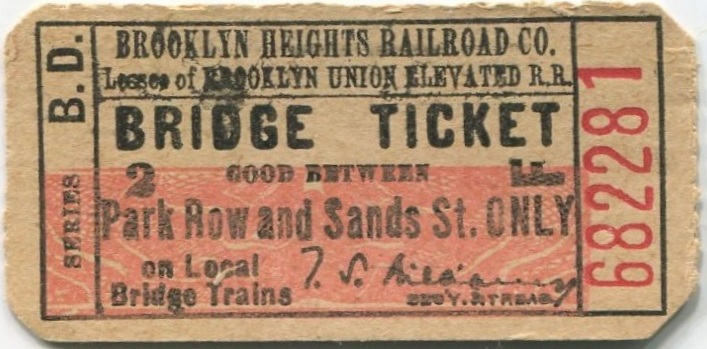 |
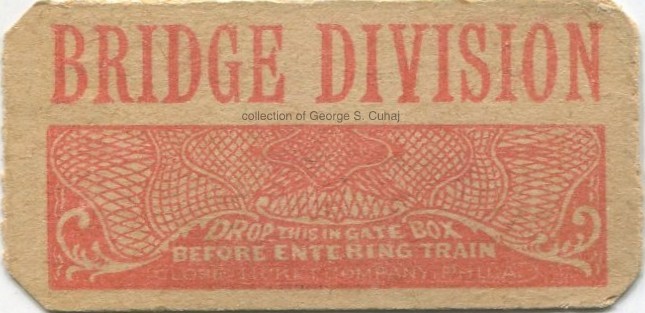 |
||
|
between Park Row (Manhattan) and Sands Street (Brooklyn)
T. S. Williams, Secretary & Treasurer Globe Ticket Co. 2 5/16" x 1 1/4" rare; $35.00 to $40.00 |
|||
|
|
|||
Brooklyn Heights Railroad (Brooklyn Rapid Transit) (Bridge Division) 1899 to 1907 (Brooklyn Rapid Transit) |
|||
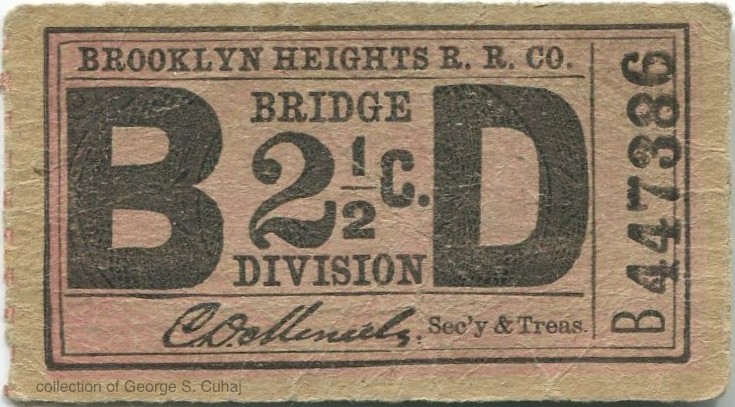 |
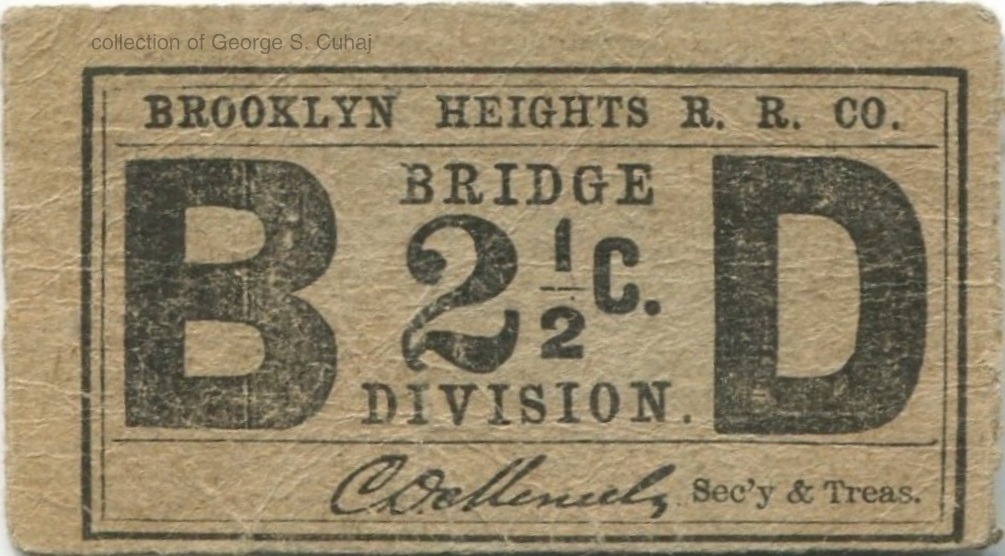 |
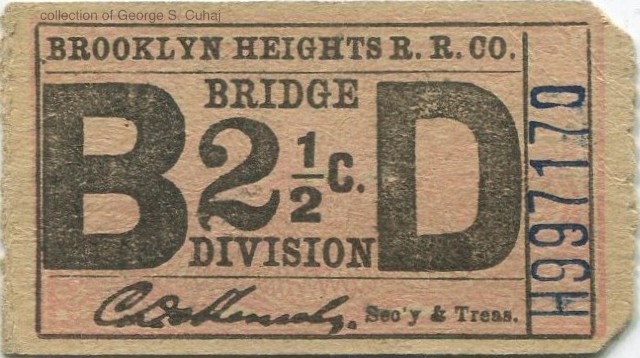 |
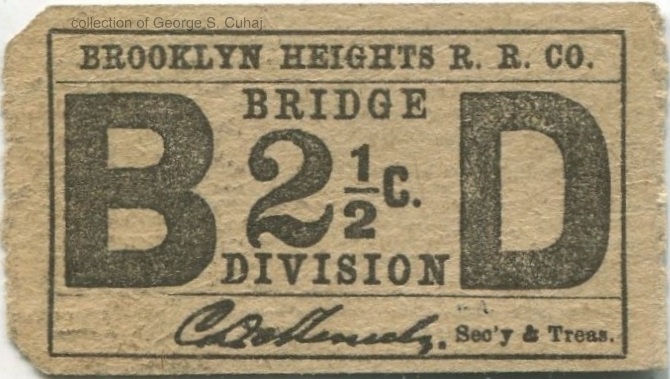 |
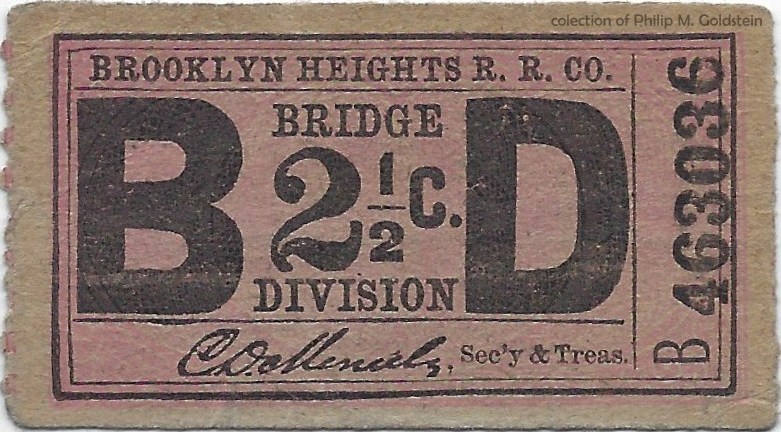 |
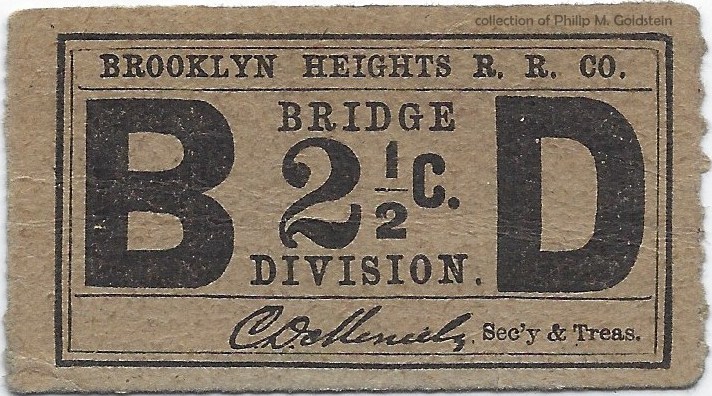 |
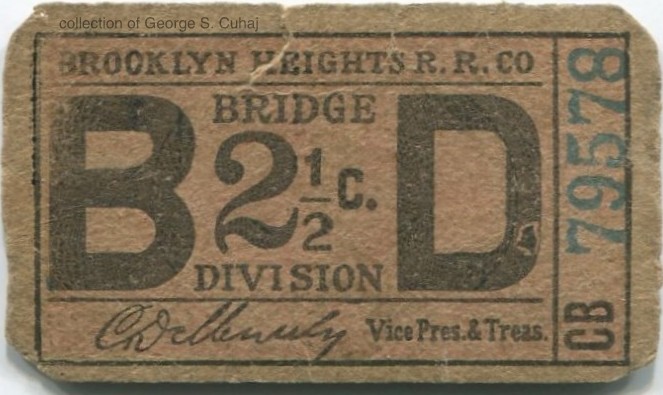 |
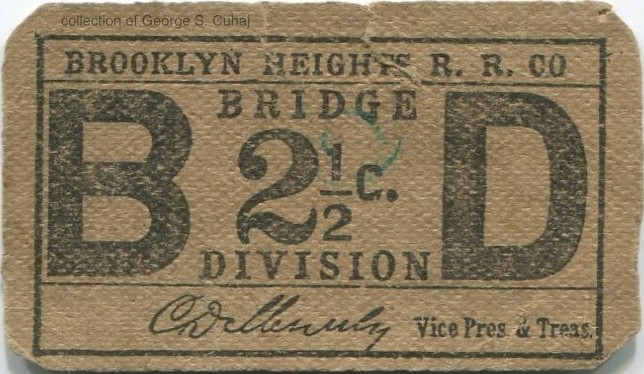 |
| C. D. Meneely, Secretary & Treasurer 2 5/16" x 1 1/4" 1/2 is 5/16" tall, 1 lacks serif |
C. D. Meneely, Secretary & Treasurer 2 5/16" x 1 1/4" 1/2 is 5/16" tall, 1 has serif |
||
| . | |||
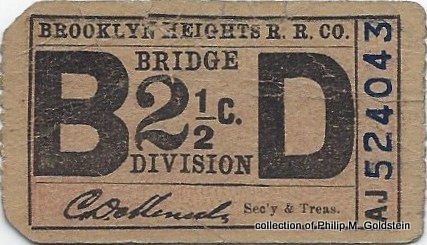 |
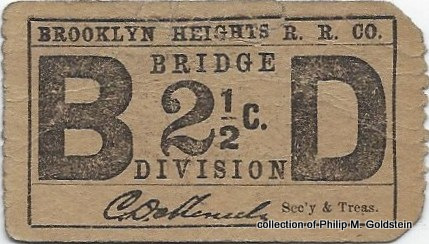 |
||
| C. D. Meneely, Secretary & Treasurer 2 1/6" x 1 3/16" 1/2 is 9/32" tall, 1 has serif (all above showing different prefixes) common; $12.00 - $15.00 |
|||
|
|
|||
Brooklyn Union Elevated (Nassau Electric) (Bridge Division) 1899 to 1912 |
|||
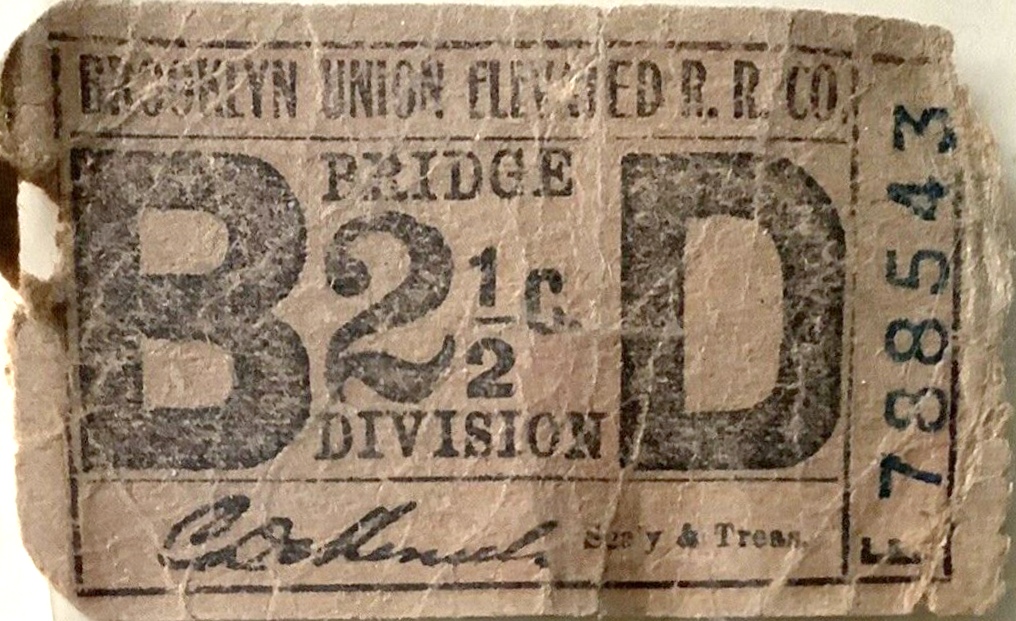 |
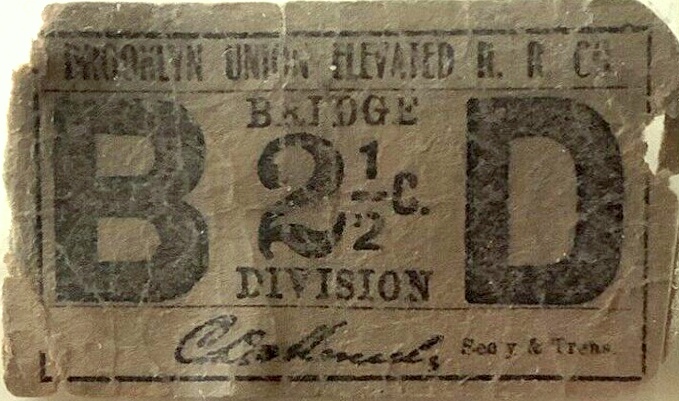 |
||
| C. D. Meneely, Secretary & Treasurer 2 1/6" x 1 3/16" 1/2 is 9/32" tall , 1 has serif uncommon; $20.00 - $25.00 |
|||
| ... . |
|||
|
|
|||
Brooklyn & Queens Transit Corp. (BMT surface lines subsidiary) 1929 to 1940 |
|||
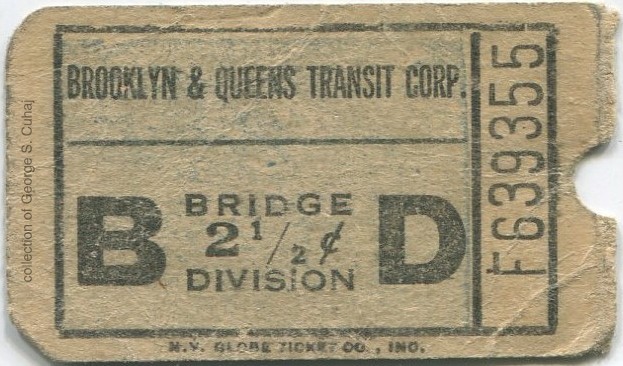 |
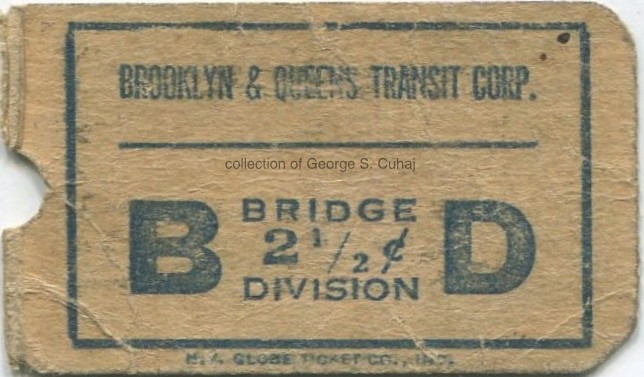 |
||
| Brooklyn & Queens Transit Corp. (Streetcar) Park Row (Manhattan) and Sands Street (Brooklyn) (large) 2 5/16" x 1 1/4" common; $12.00 - $15.00 |
|||
| . | |||
| . . |
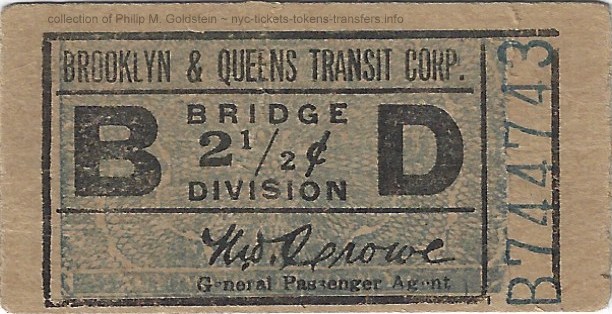 |
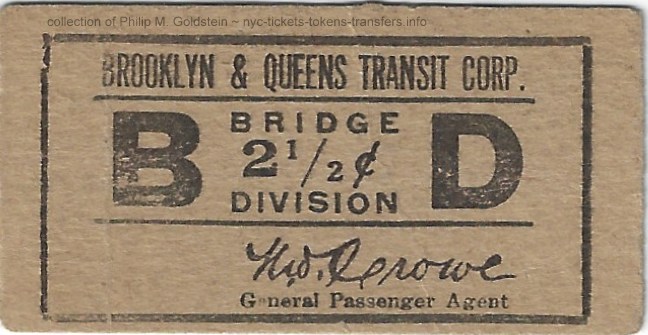 |
|
| Brooklyn & Queens Transit Corp. (Streetcar) Park Row (Manhattan) and Sands Street (Brooklyn) fascimile signature: H. A. Crowe (small) 2" x 1" uncommon; $15.00 - $20.00 |
|||
|
|
|||
| First Unification Brooklyn Bridge Tickets, 1940 to March 6, 1950 |
|||
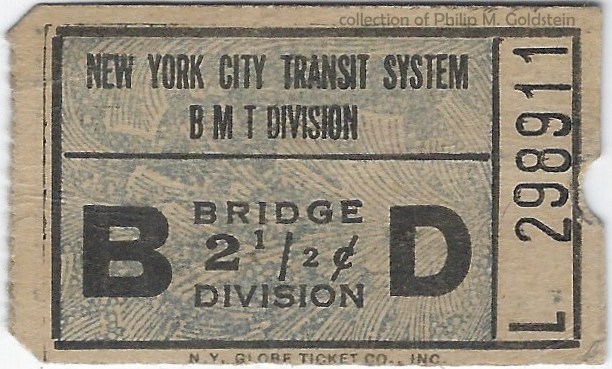 |
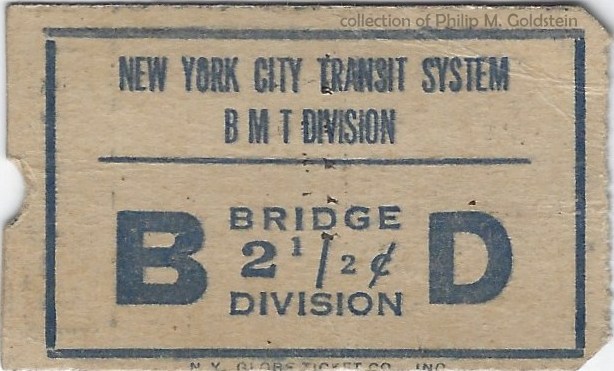 |
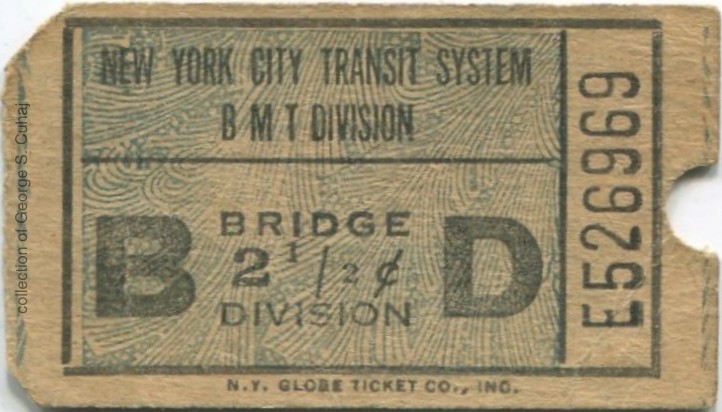 |
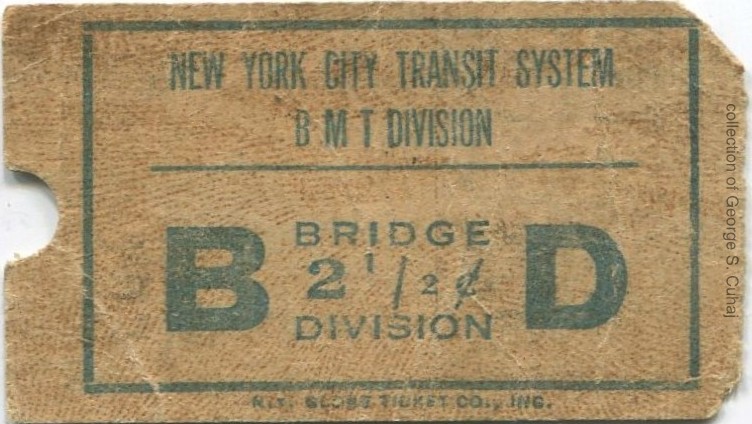 |
| New York City Transit
System - BMT Division Bridge Division B 2 ½¢ D 1 15/16" x 1 3/16" N. Y. GLOBE TICKET CO., INC |
New York City Transit
System - BMT Division Bridge Division B 2 ½¢ D 1 15/16" x 1 3/16" N. Y. GLOBE TICKET CO., INC |
||
| common; $5.00 - $10.00 | |||
| . . With the removal of the elevated lines on the Brooklyn Bridge in December 16, 1944, trolleys crossed the bridge using the elevated tracks (the innermost tracks), and a second lane was made available to automobile traffic. On March 6, 1950, the final trolley PCC #1074, from the Seventh Avenue Line departed from the Park Row terminal at 12:20 am and crossed the Brooklyn Bridge. As such, no second Unification tickets (post 1953) would exist for the Brooklyn Bridge. As far is known, no bus routes crossed the Brooklyn Bridge due to size and weight restrictions on the roadways: (10 feet and 8,000 pounds). |
|||
![]()
"Bridge Local" Tickets & Tokens
November 6, 1904 - December 5, 1948, 5:00 am
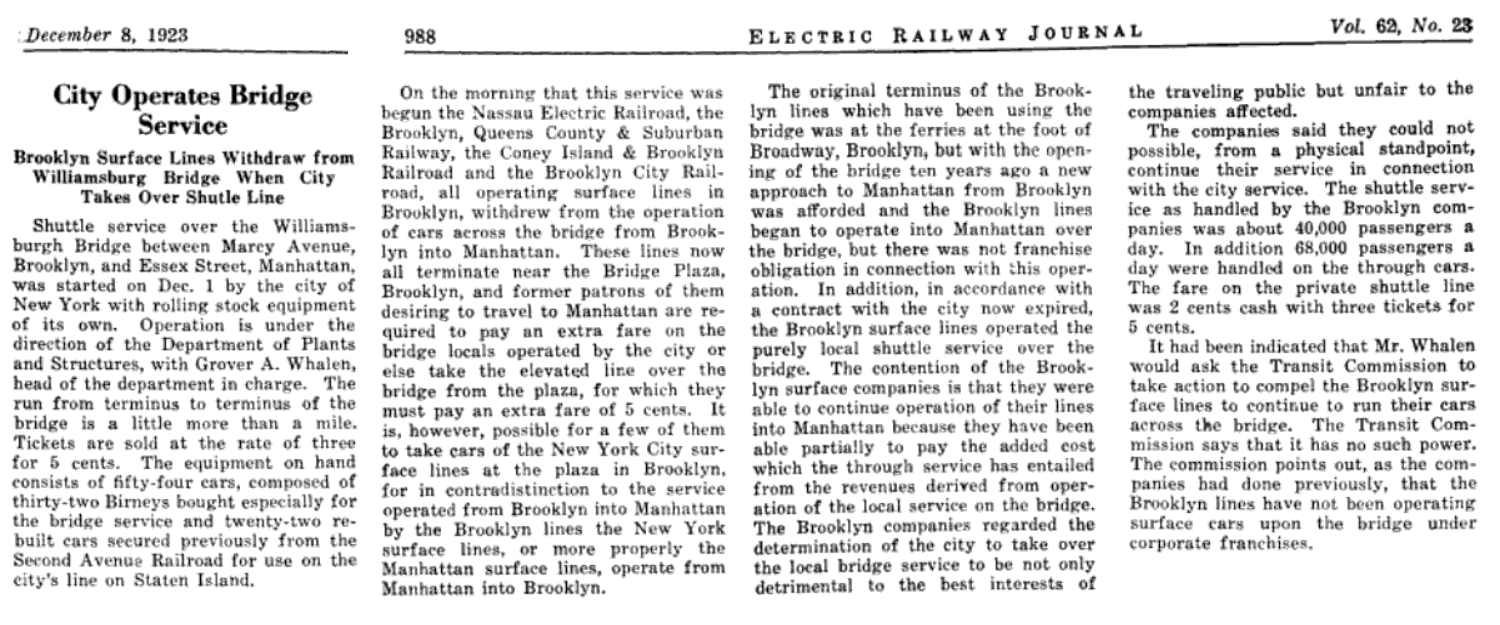
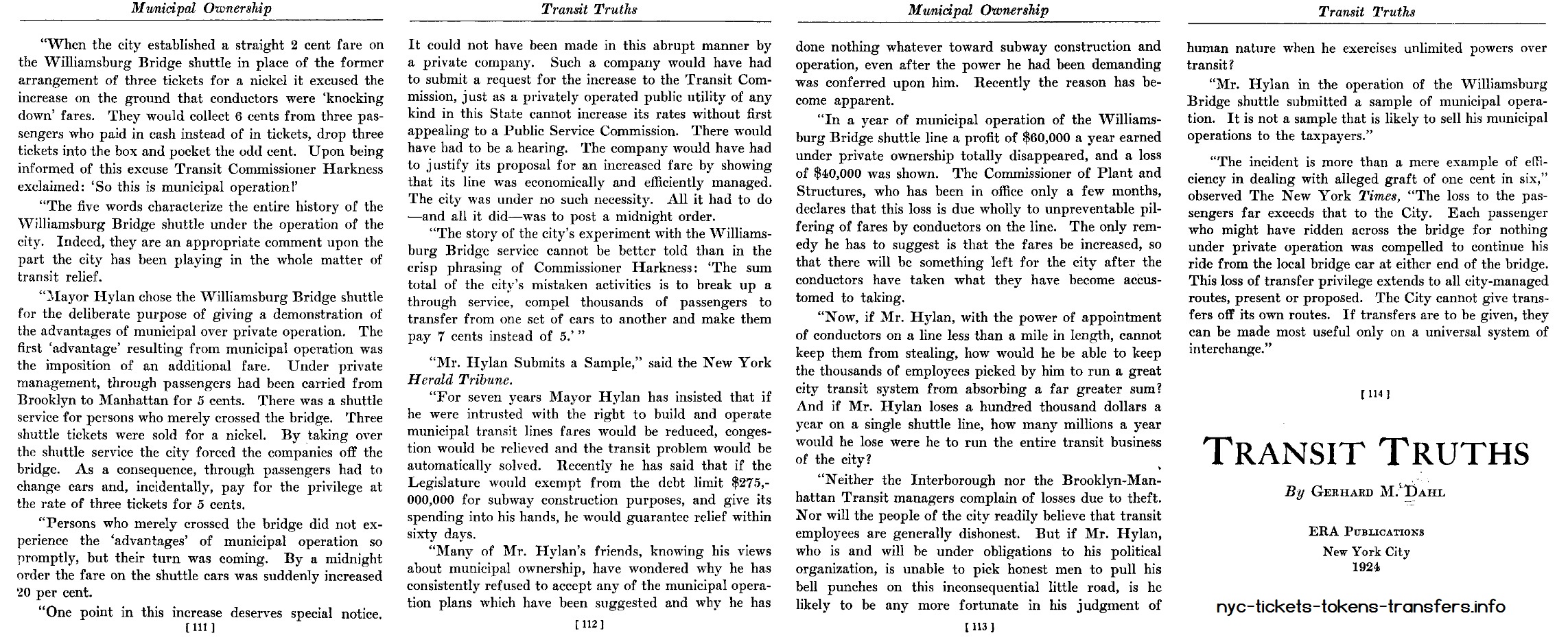
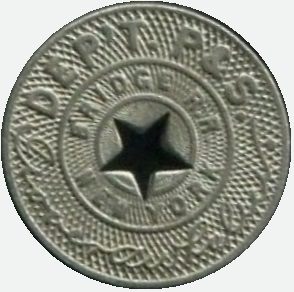 |
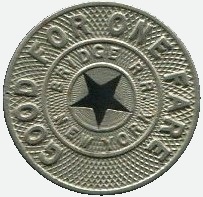 |
December 1, 1923 -1948? 16mm, copper nickel, star punch out at center signature of Lincoln C. Andrews, receiver Atwood-Coffee NY630AE common; $10.00 |
| note: token shown 200% of actual size | ||
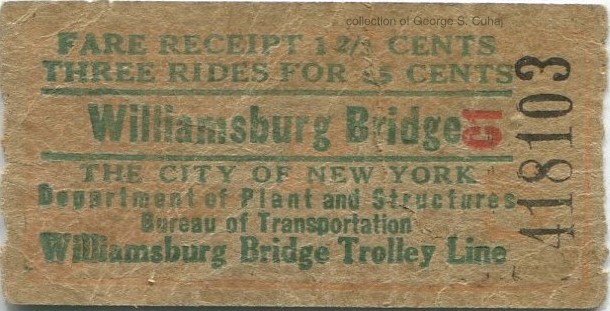 |
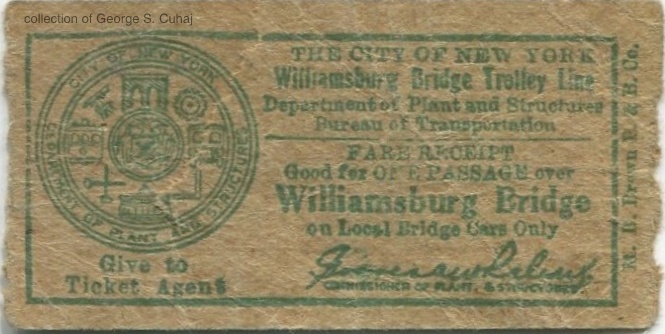 |
||
| Fare
Receipt 1 2/3c - Three Rides for 5c City of New York - Department of Plant & Structures Williamsburg Bridge Trolley Line Grover A. Whalen, Commissioner (1923 - ) M. B. Brown Printing & Binding 2" x 1" |
|||
|
|
|||
| Brooklyn Heights RR 1896 to 1923 |
|||
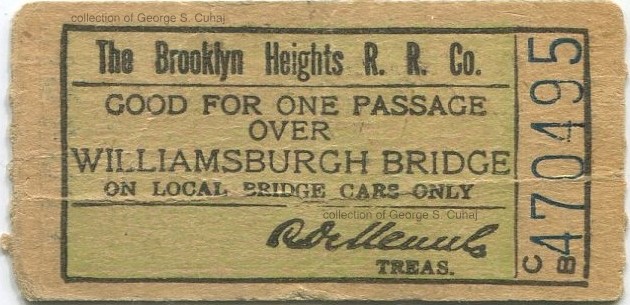 |
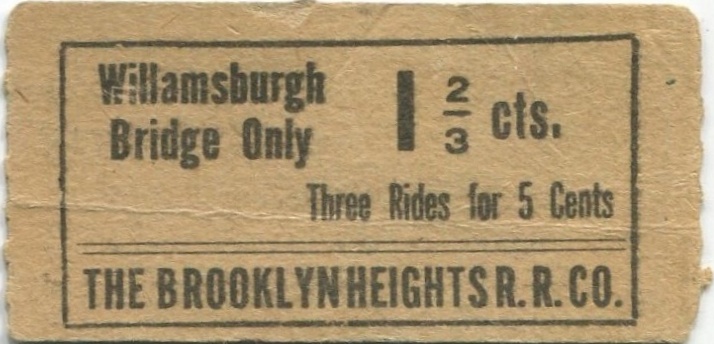 |
||
| Brooklyn
Heights Railroad Good for Passage over Williamsburgh Bridge On Local Bridge Cars Only C. D. Meneely, Treasurer 2" x 1" |
|||
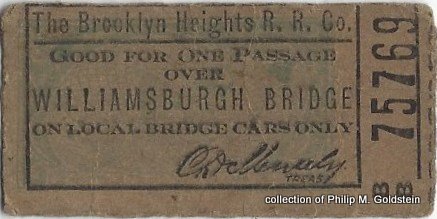 |
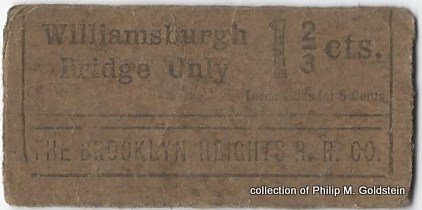 |
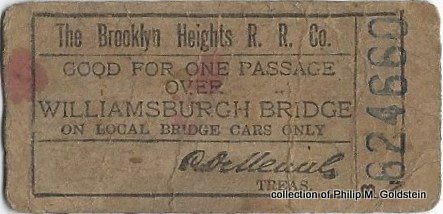 |
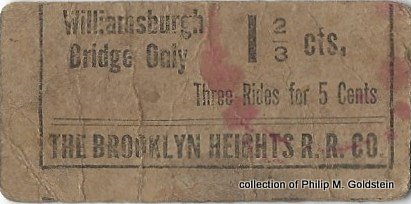 |
| Brooklyn
Heights Railroad Good for Passage over Williamsburgh Bridge On Local Bridge Cars Only C. D. Meneely, Treasurer 2" x 1" |
Brooklyn
Heights Railroad Good for Passage over Williamsburgh Bridge On Local Bridge Cars Only C. D. Meneely, Treasurer 2" x 1" |
||
| .scarce; $25.00 to $50.00 . . |
|||
![]()
"Bridge Local"
Tickets, Tokens & Transfers
November 21, 1909 (September 19, 1909?) - April 7, 1957, 12:32 am
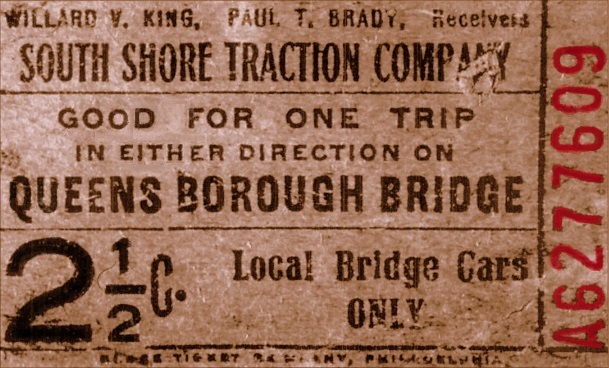
 |
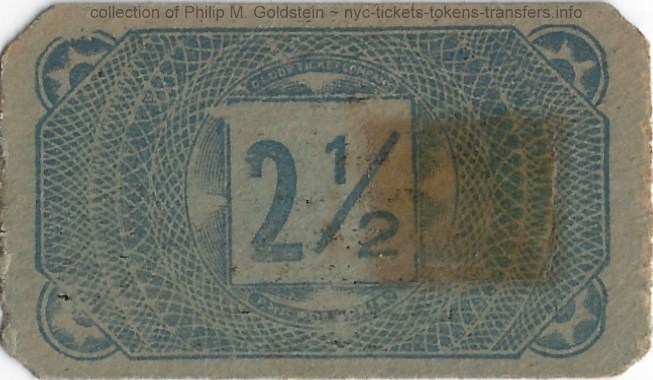 |
| all 2 1/16" x 1 ³⁄₁₆" |
|
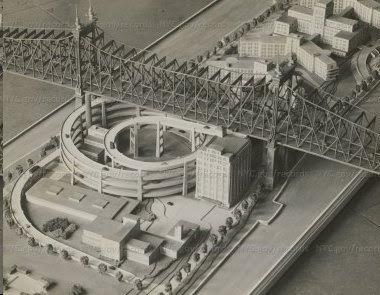
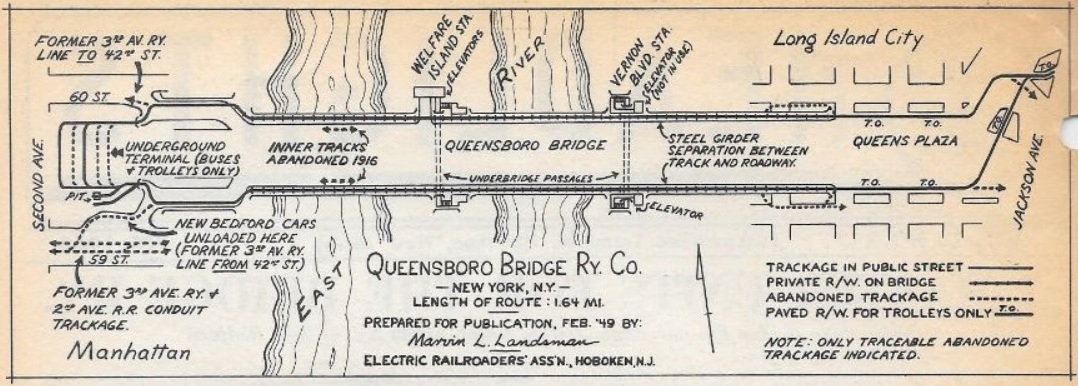
| date | fare | notes |
| August 1944 | 5¢ 3¢ 2 for 5¢ |
Manhattan to Queens or Queens to Manhattan (cash), Manhattan to Welfare Island (cash), tokens (2½¢ - also good for Welfare Island to Queens) |
| December 12, 1948 | 7¢ 5¢ 5¢ 5 for 20¢ 1¢
|
Manhattan to Queens or Queens to Manhattan (cash) Manhattan to Welfare Island (cash) Queens to Welfare Island (cash) tokens (6¼¢ per token) - also good for Welfare Island to Queens transfers to other lines |
| October 31, 1953 | 8¢
5¢
|
Manhattan to Queens or Queens to Manhattan (cash) transfers to other lines |
| April 7, 1957 | 15¢ 24 for $1.50 free |
Manhattan to Queens or Queens to Manhattan: trolley line discontinued, replaced by bus service; tokens for Bird-Coler Employees (6¼¢ per token). tokens no longer accepted at Manhattan Terminal - Queens to Welfare Island only transfers to other lines |
| December 20, 1957 | 15¢ | Manhattan to Queens (cash) |
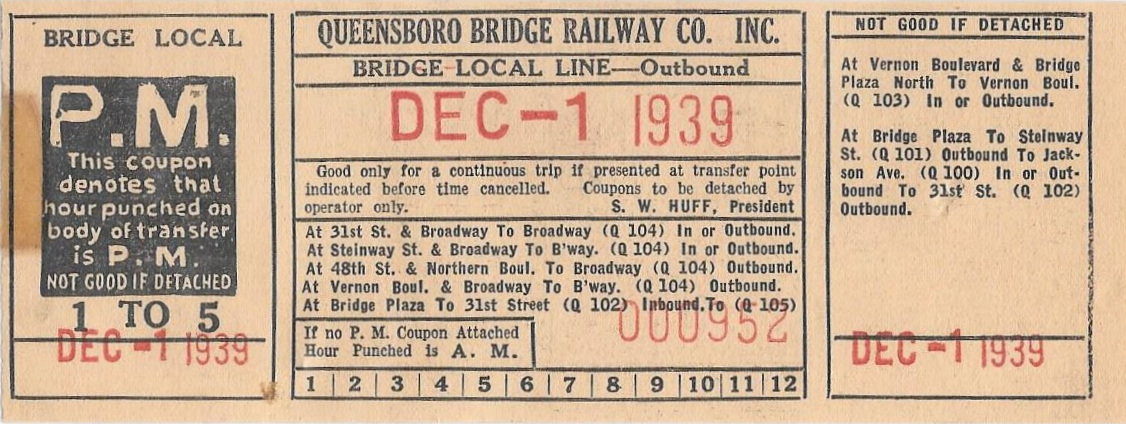
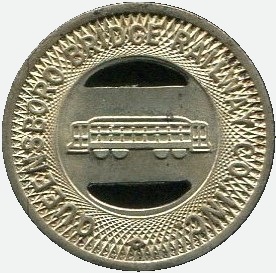 |
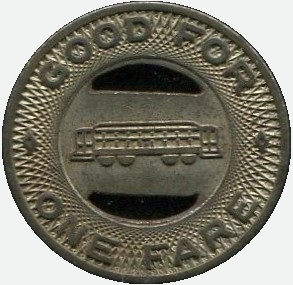 |
1944 23mm, steel, bar center Atwood-Coffee NY631O total struck: 20,000 July 28, 1944 common; $7.00 |
|
|
|
|||
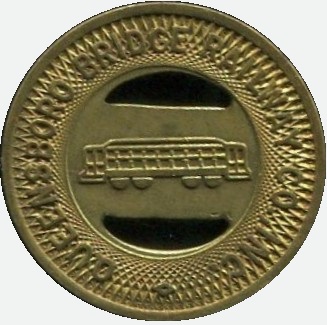 |
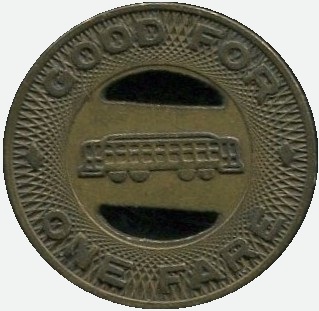 |
1945 23mm, brass, bar center Atwood-Coffee NY631P total struck: 40,000 in five orders beginning March 12, 1945 common; $6.00 |
|
|
|
|||
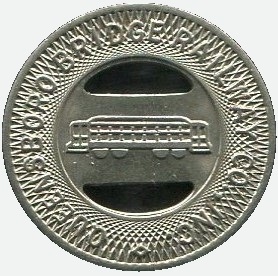 |
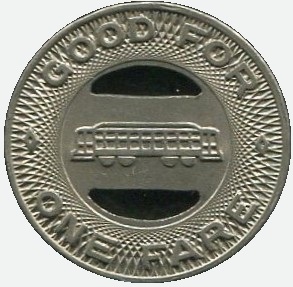 |
1947 23mm, copper nickel, bar center Atwood-Coffee NY631Q total struck: 330,000 over eleven orders beginning April 9, 1947 five varieties: 631Qa, 631Qb, 631Qc, 631Qd, 631Qe, extremely common; $4.00 |
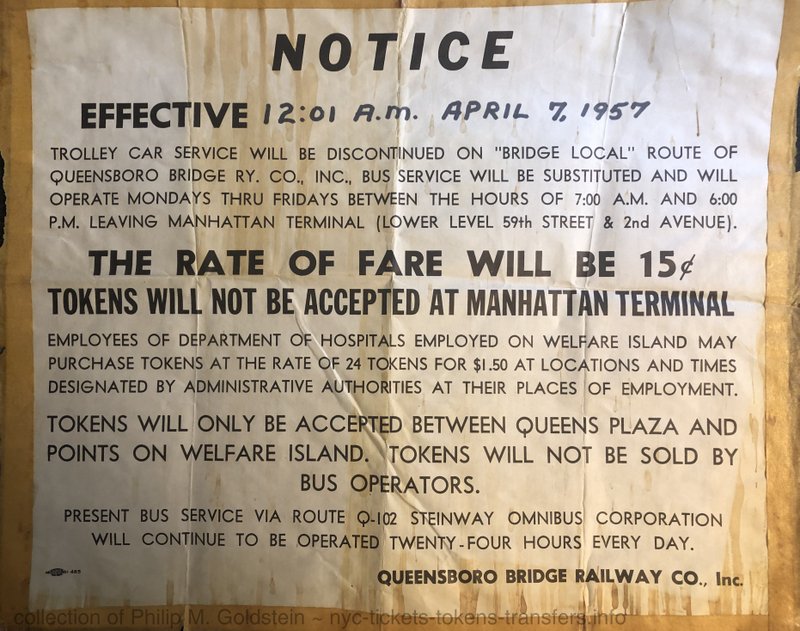 collection of Philip M. Goldstein
|
A bridge connecting Welfare Island to 36th Avenue in Queens would be constructed in 1955 allowing automobiles and buses direct access to Roosevelt Island. Streetcar operations on the Queensboro Bridge would end on April 7, 1957. Of important historical note, is the Queensboro Bridge trolley line was the very lasttrolley line to operate in the City of New York with service ending April 7, 1957, and as Brooklyn trolley / streetcar operations ended prior to this date on October 31, 1956 (and of which have been misstated to have been the last streetcar operation in New York City.)
Also on this date, Steinway Omnibus Route Q-102 replaced trolley service and the following tokens issued. This brass 16mm token was sold to employees and volunteers at the Coler - Goldwater Memorial Hospital at the rate of 24 tokens for $1.50 which equated to 6¼¢ per token. Although used on the Steinway Transit Company bus serving Welfare Island, it used the name of the corporate owner: Queensboro Bridge Railway. |
|||
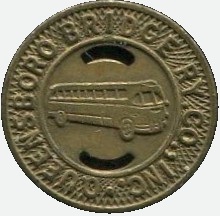 |
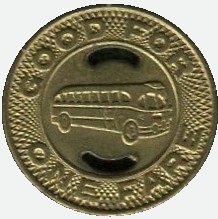 |
1970 16mm, brass, ball center Atwood-Coffee NY631T total struck: 150,000 over four orders from March 5, 1970 through January 13, 1971 common; $5.00 |
Ordered and issued so as not to be used as a slug in place of the large 'Y' cutout NYCTA subway token. |
Steinway Transit
This next issue of token were sold at the Hospitals on Roosevelt Island at a half fare discount. They were valid for use only on the Steinway Transit route serving Welfare Island, which was the Q102 route, and replaced the 16mm brass employees token issued by Queensboro Bridge Railway..
Steinway Transit descended from Steinway Omnibus, which in turn descended from Steinway Railway. In 1938, the Queensboro Bridge Railway purchased Steinway Railway and organized "Steinway Omnibus" as a subsidiary to operate those lines as they were converted from electric streetcars to internal combustion powered buses.
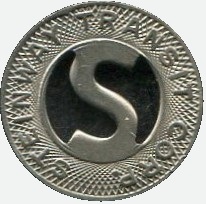 |
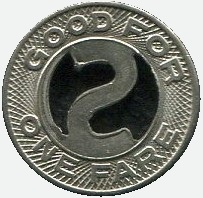 |
1976 16mm, white metal, S Atwood-Coffee NY631W two varieties: 631Wa, 631Wb common; $4.00 |
| note: token shown 200% of actual size | ||
Contrary to the Transit Museum's claim in repeated Facebook posts that; "in 1920, the NYC Subway discontinued the use of paper tickets." Therefore, these next examples prove otherwise.
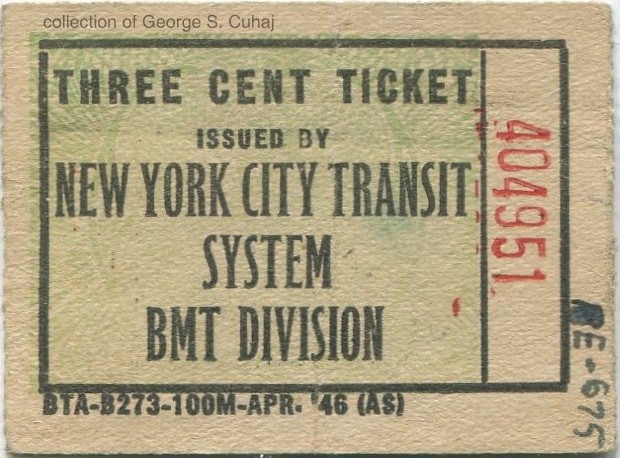 |
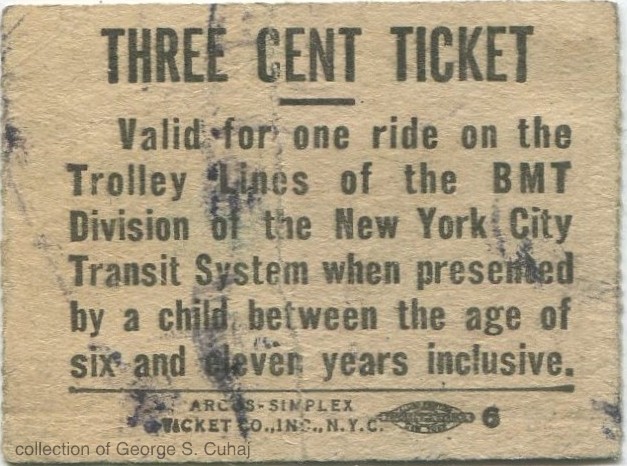 |
||
| BMT Division (Surface) Children's Three Cent Ticket April 1946 scarce; about $25.00 - $40.00 |
|||
|
|
|||
| . | |||
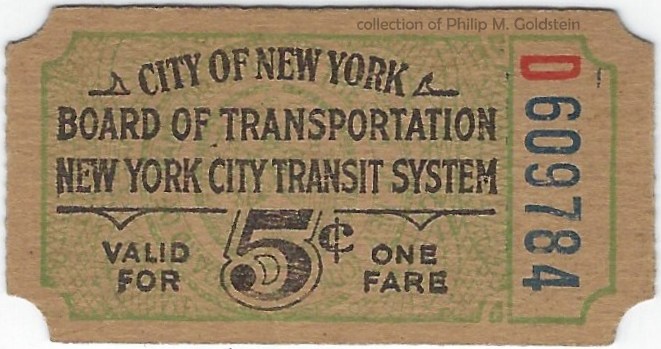
|

|
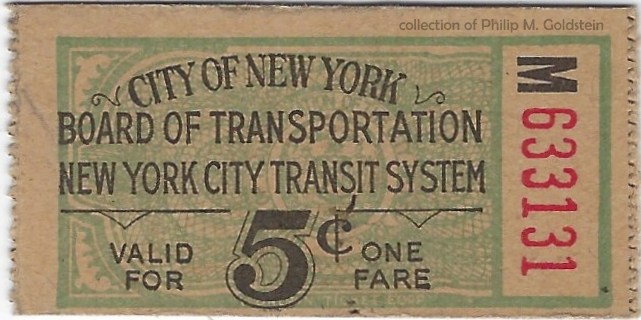
|
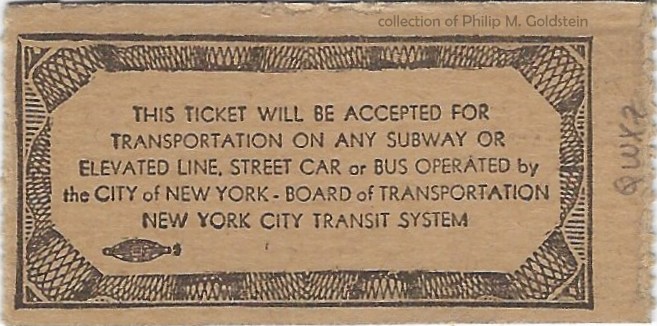
|
| notched corners, red prefix letter - with "not valid after" date on back 2" x 1" uncommon, $10.00 - $15.00 |
square corners, black prefix letter - without not valid date on back many single and double letter prefix letters seen 2" x 1" common, individuals $3.00 to $7.00; strips of tickets: 10% premium |
||
| . | |||

strip of 5 Tickets |
|||
In 1950, the fare for the transit system rose to 10 cents and likewise, paper tickets were printed accordingly. These 10 cent denomination tickets are somewhat rarer, as these were only used for three years: 1950 through 1953.
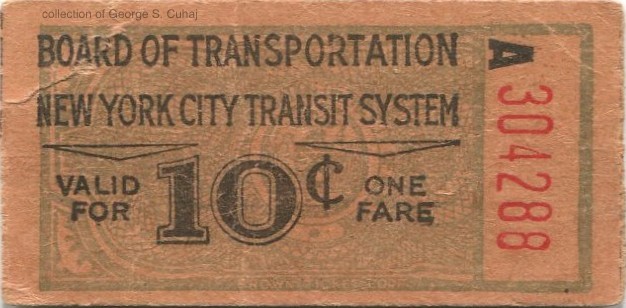
|
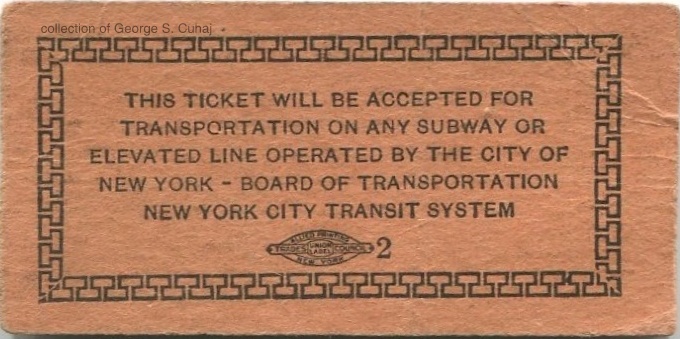
|
..... |
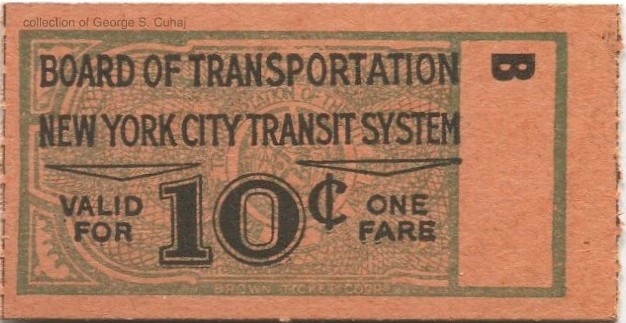 |
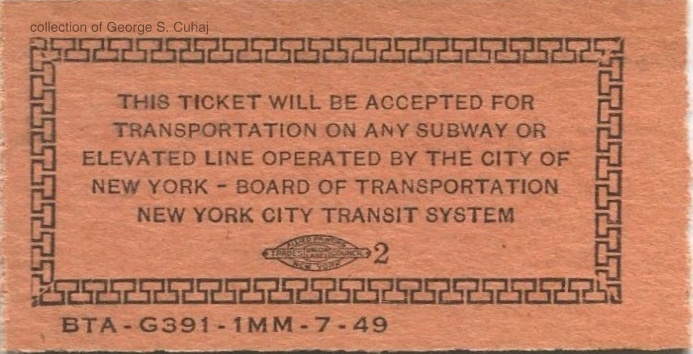 |
| A prefix square corners, black prefix letter, red tint 2" x 1" |
BTA-G891-1MM-7-49 B prefix - 7/1949 square corners, black prefix letter (unnumbered), red tint 2" x 1" |
|||
| . | ||||
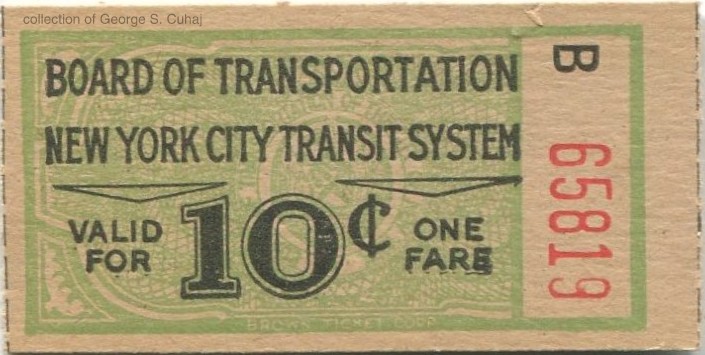 |
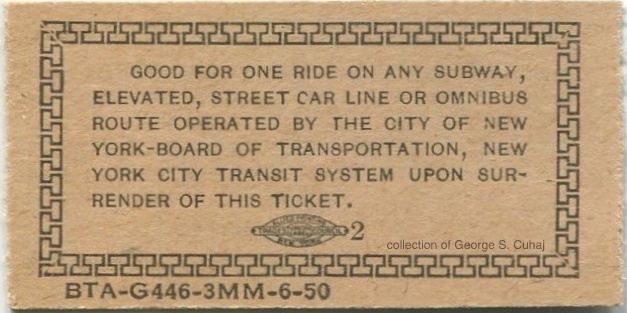 |
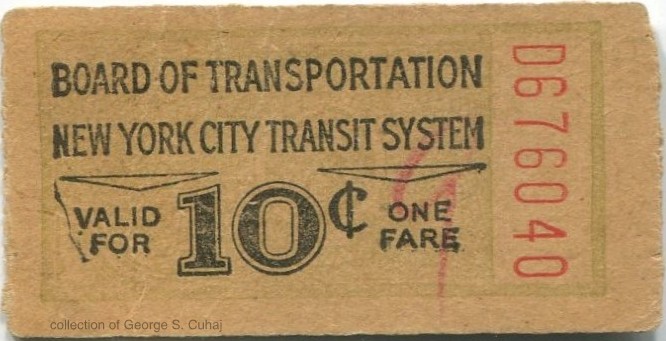
|
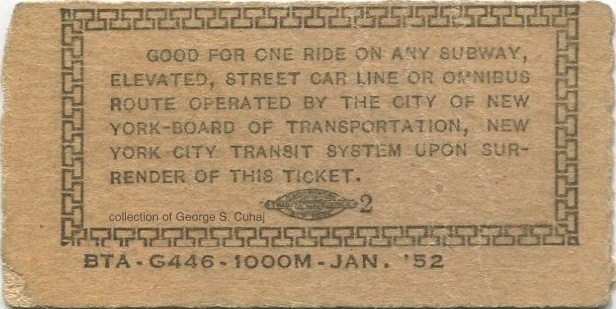
|
|
| BTA-G446-3MM-6-50 B prefix - 6/1950 (also seen with BTA G446-1000M - Jan.'52) square corners, black prefix letter, no tint 2" x 1" |
BTA-G446-1000M-JAN, '52 D prefix - January 1952 square corners, red prefix letter printed with serial number, no tint 2" x 1" |
|||
uncommon; $20.00 - $25.00
|
||||
.
.
|
First
Unification; Vending & Advertising Employees Tickets This series of tickets appear to have used solely the letter X or XX as a prefix letter. |
|||
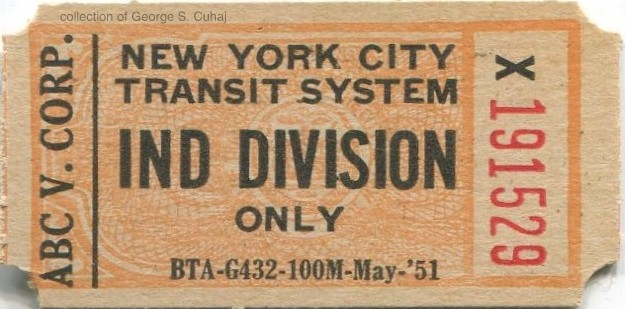
|
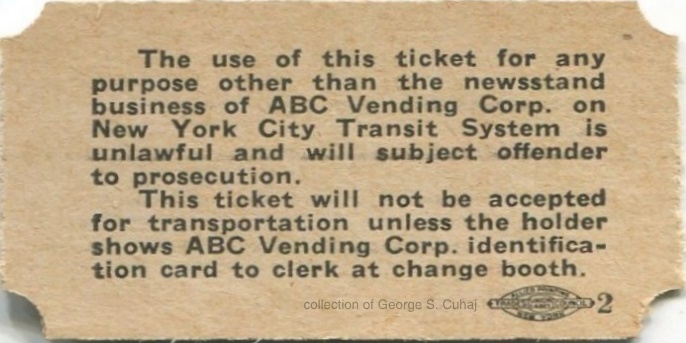
|
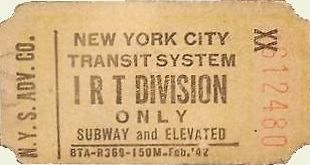 |
back not known |
| BTA-G432-100M-May-'51 Courtesy ticket to allow employees of ABC Vending to enter the IND Division Subway & Elevated to service the gum vending machines (Chicklets or Beeman's anyone?) and the "weigh yourself scales". X prefix |
BTA-R368-150M-Feb.'42 Courtesy ticket to allow employees of New York State Advertising to enter the IRT Division Subway & Elevated (presumably to post and change the various advertisments mounted on station walls and in the subway cars.) XX prefix |
||
| . | |||
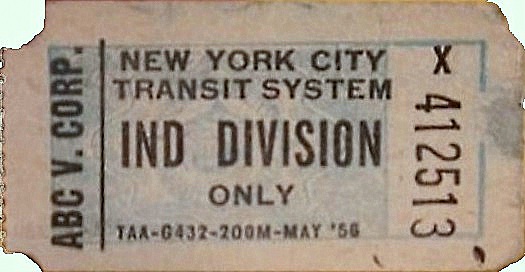 |
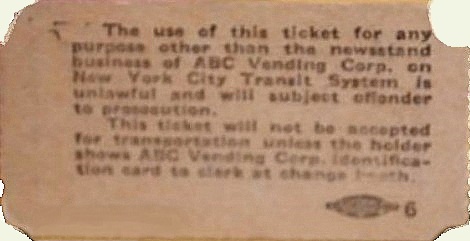 |
intentionally left blank | |
| TAA-G432-200M-May '56 Courtesy ticket to allow employees of ABC Vending to enter the IND Division Subway & Elevated to service the gum vending machines (Chicklets or Beeman's anyone?) and the "weigh yourself scales". X prefix |
|||
| scarce, $30.00 - $35.00 | |||
.
.
| First Unification Tickets with unknown purpose | |
|
|
|
| square corners, no prefix letter, no tint for surface lines & routes 2" x 1" uncommon, $35.00 - $40.00 |
|
![]()
Second Unification Tickets - New York City Transit Authority
1953 to present
This next ticket were issued under the auspices of the New York City Transit Authority, which was formed as New York State public-benefit corporation to replace the city operated Board of Transportation.In short, what this did was removed the transit policy (including fare making decisions) from the City of New York politics.
Its exact purpose is not yet known, but obviously it was for general fare acceptance at the full rate of 15 cents.
As the printing date on the back of the ticket is 6-56 (June 1956), it should therefore be noted that this ticket circulated alongside tokens, which had already been in circulation since July 25, 1953.
This ticket again disproves the Transit Museum's posts that "tickets stopped being used in 1920".
|
Second Unification Tickets with unknown purpose |
|
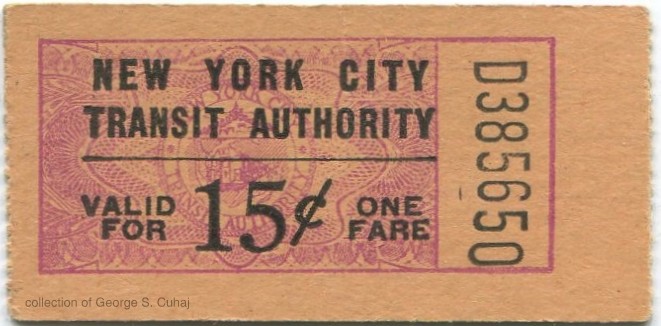 |
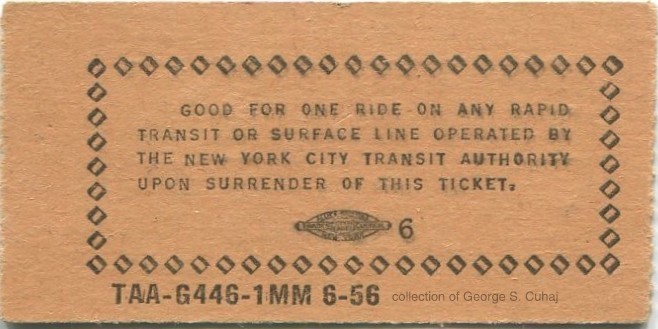 |
| TAA-G446-1MM 6-56 June 1956 2" x 1" rare; $35.00 - $50.00 |
|
![]()
(one thing I've always found peculiar was the old plural spelling of employee's: employe's!) |
||||
| Manhattan Railway (as its own entity) - Elevated Division 1879 - 1903 |
||||
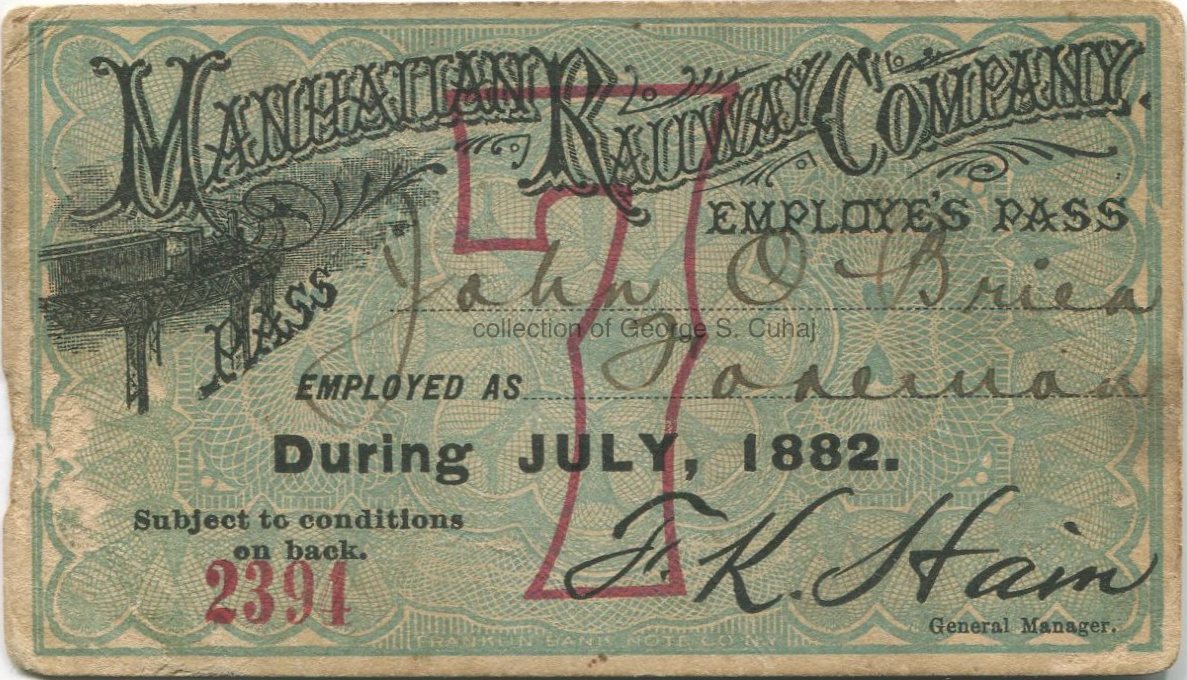 |
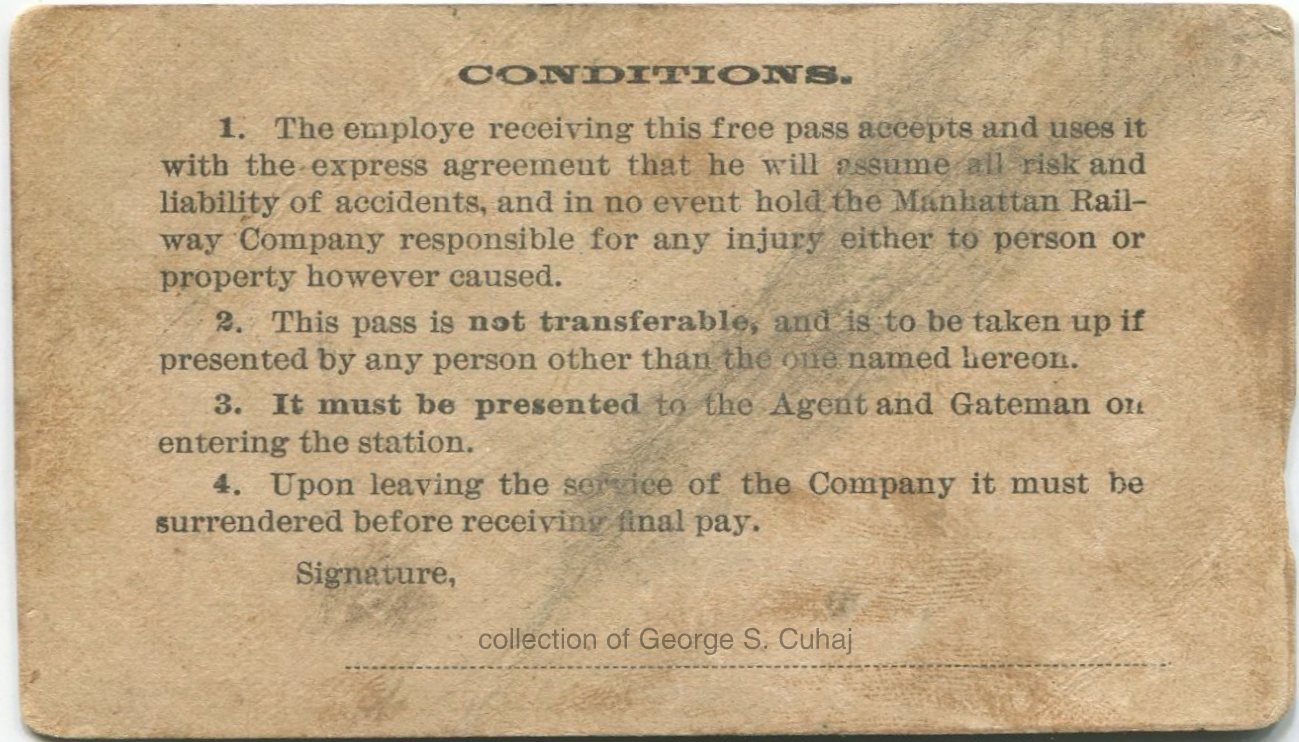 |
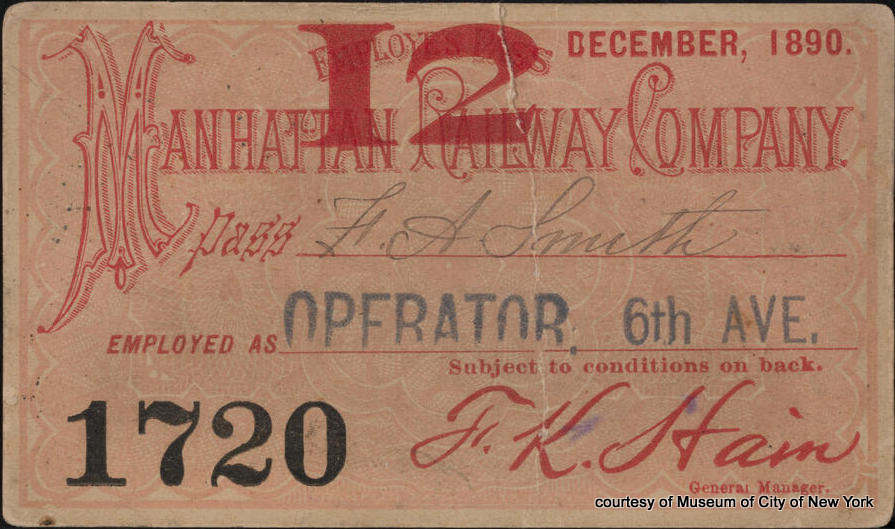 |
intentionally left blank |
|
| Employee's Monthly Pass - July 1882 | Employee's Monthly Pass - December 1890 | |||
| . . |
||||
| New York & Sea Beach Railway 1883 - 1896 |
||||
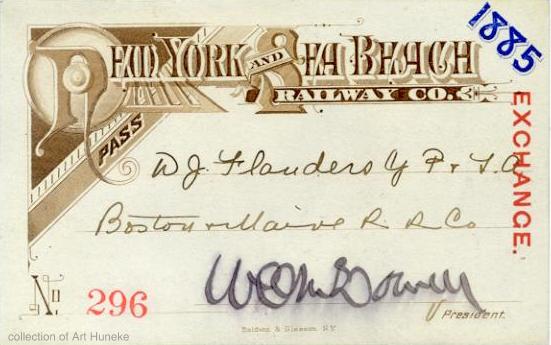 |
intentionally left blank | 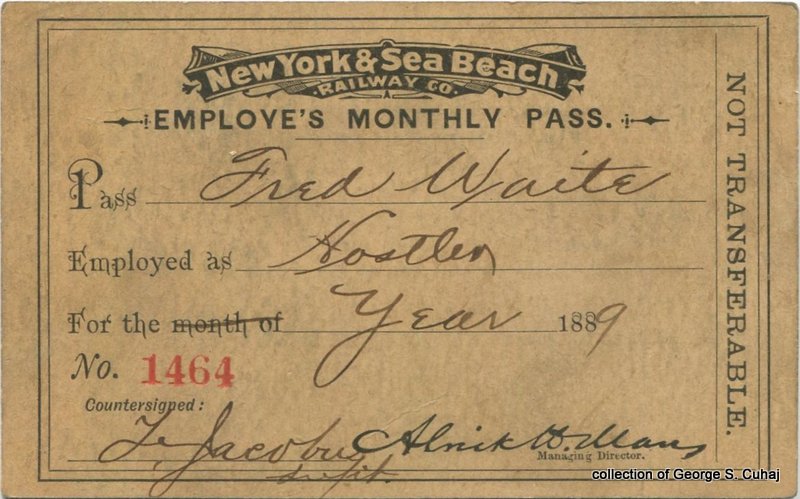 |
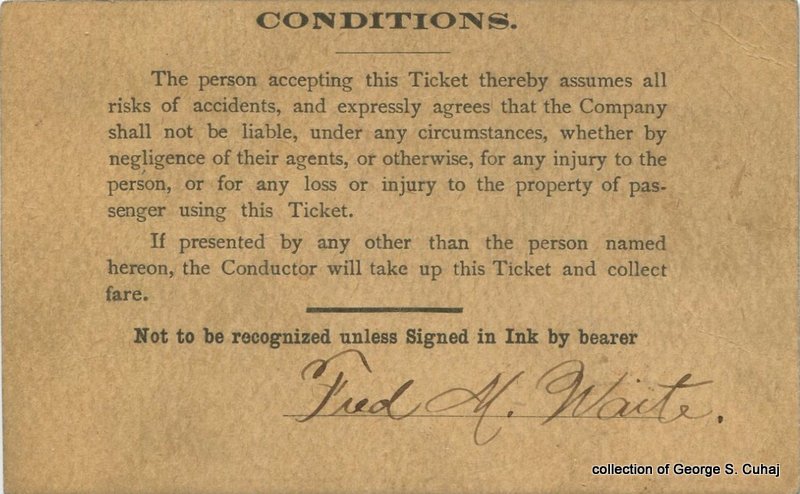 |
|
|
1885
|
Employee's |
|||
| Brooklyn Heights Railroad 1896 - 1907 |
||||
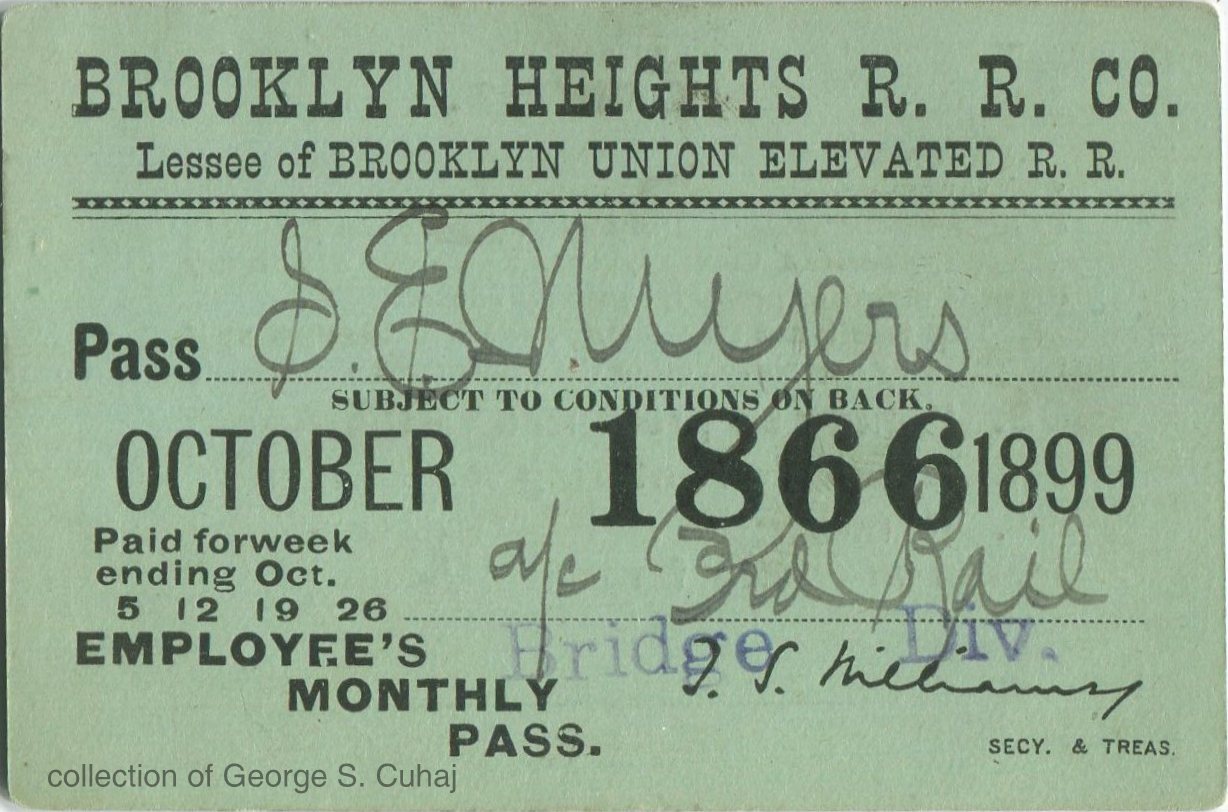 |
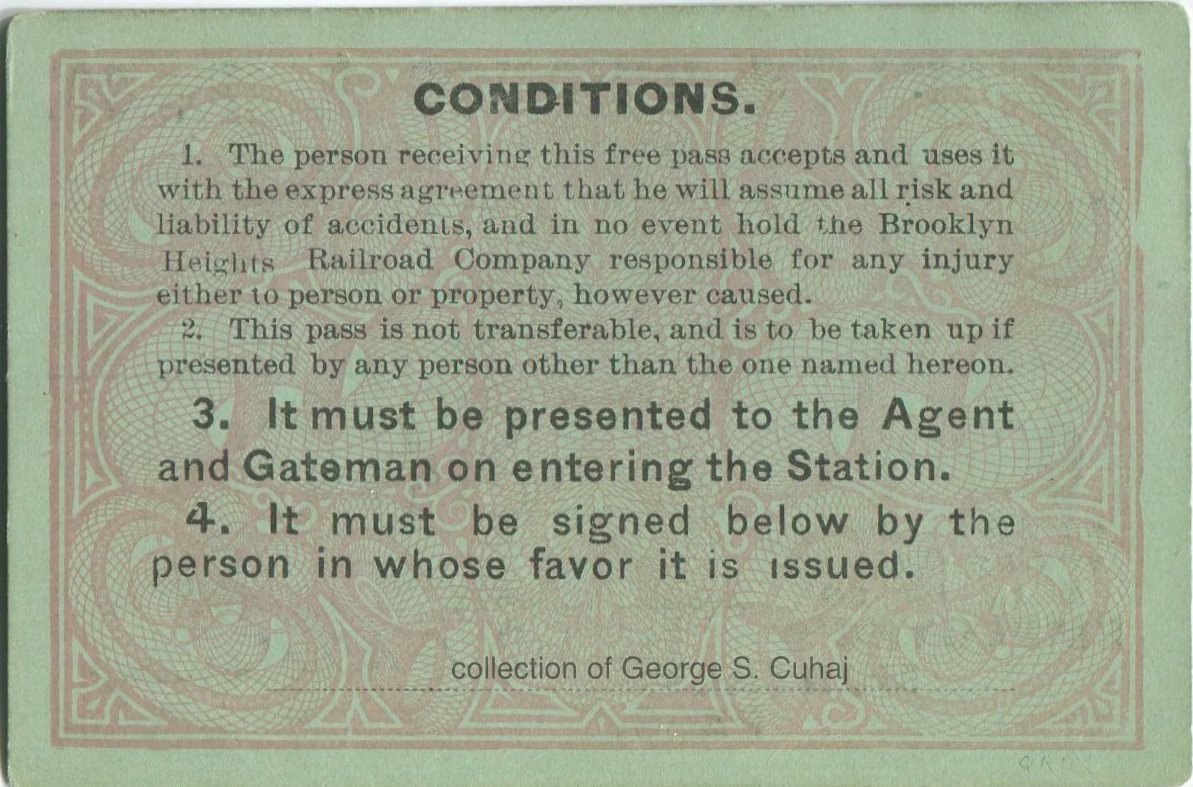 |
..... | 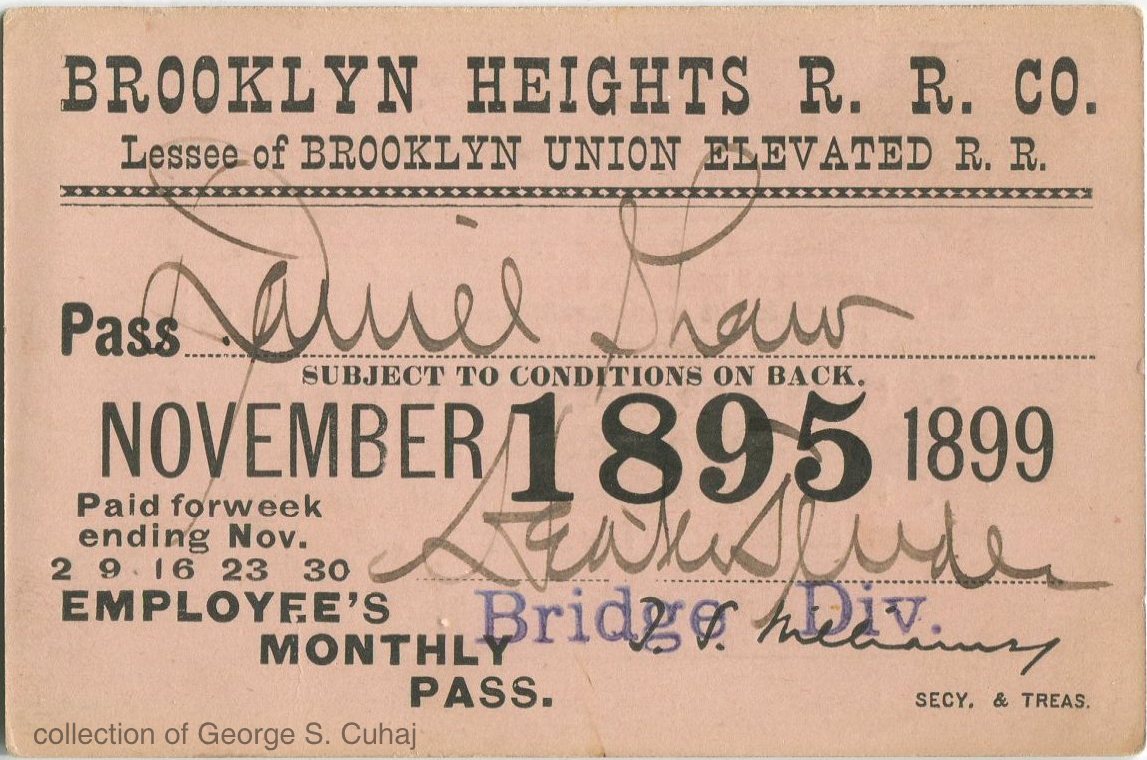 |
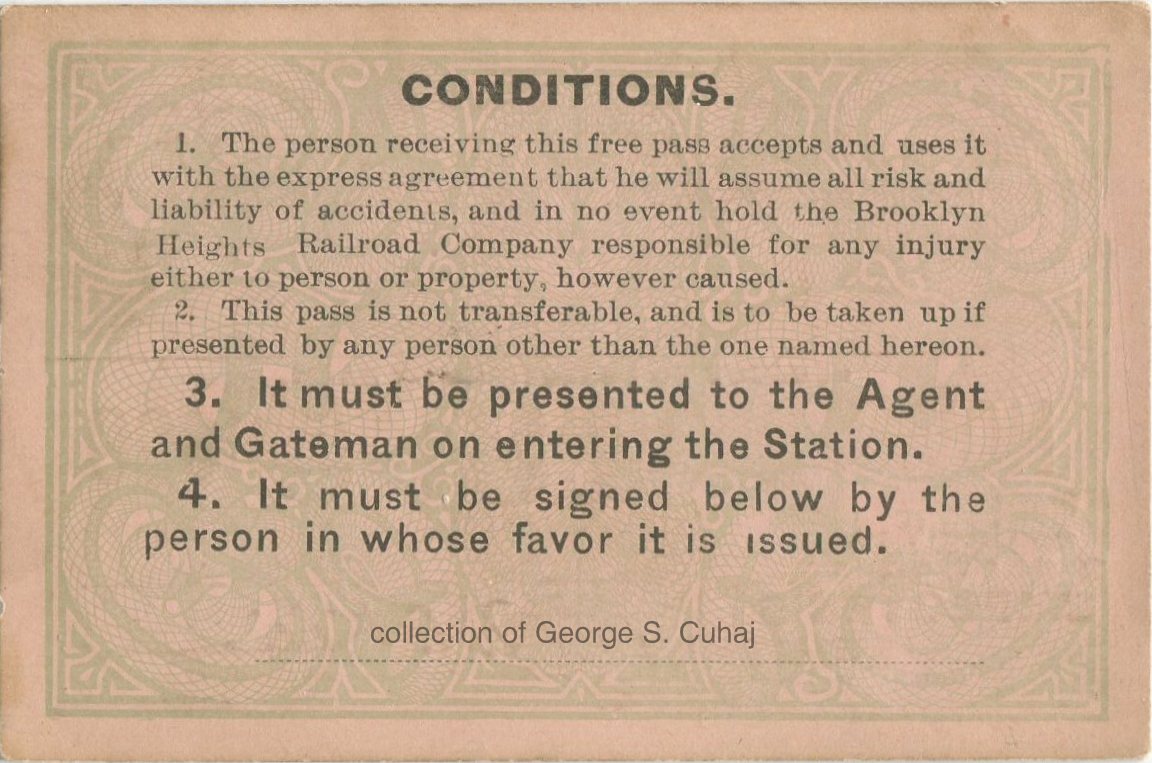 |
| Employee's Monthly Pass - October 1899 | Employee's Monthly Pass - November 1899 | |||
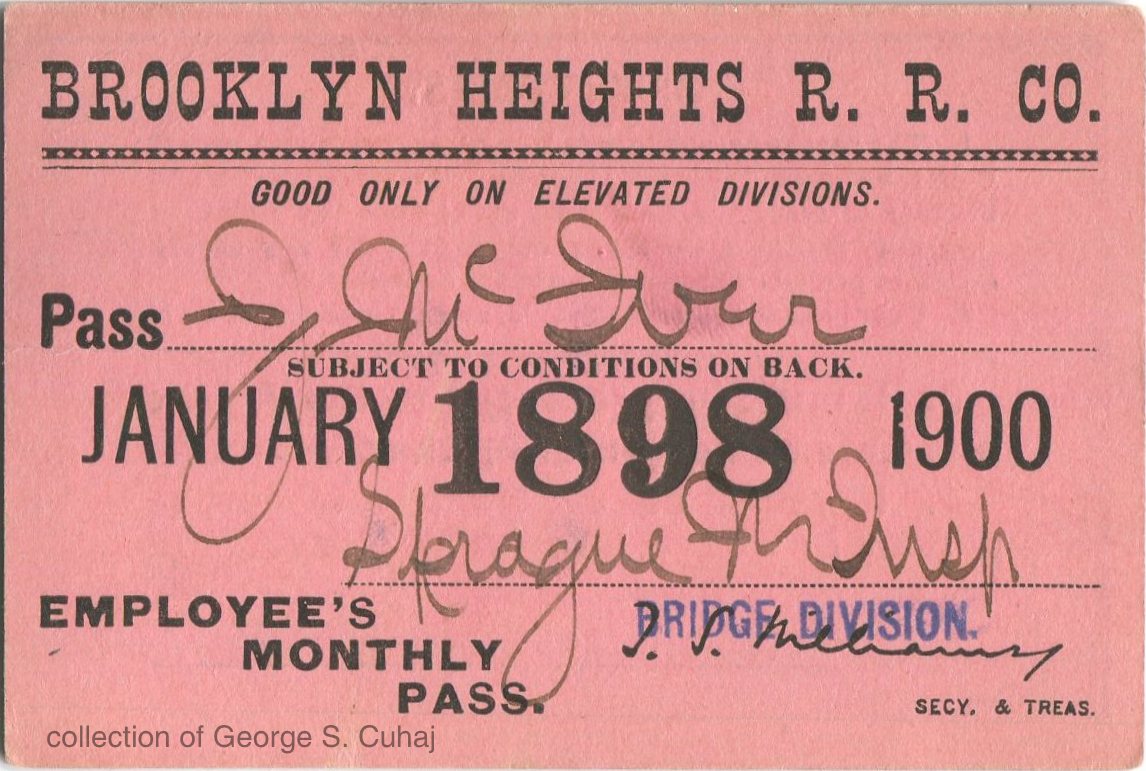 |
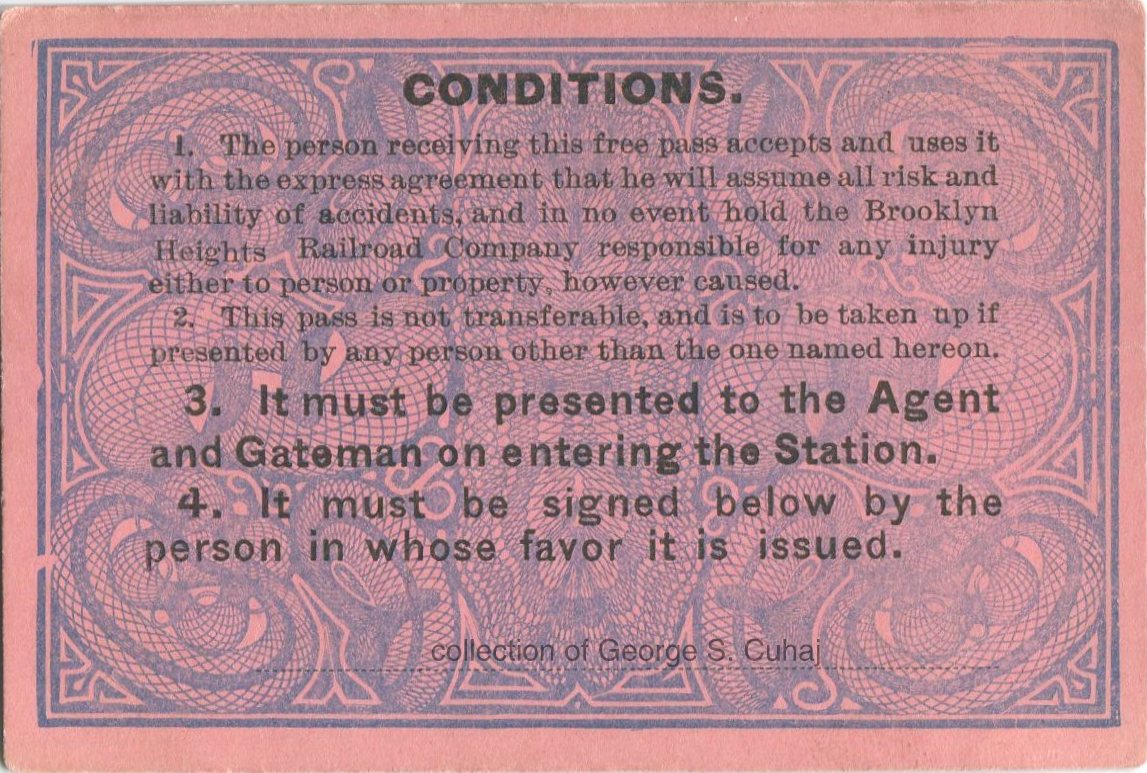 |
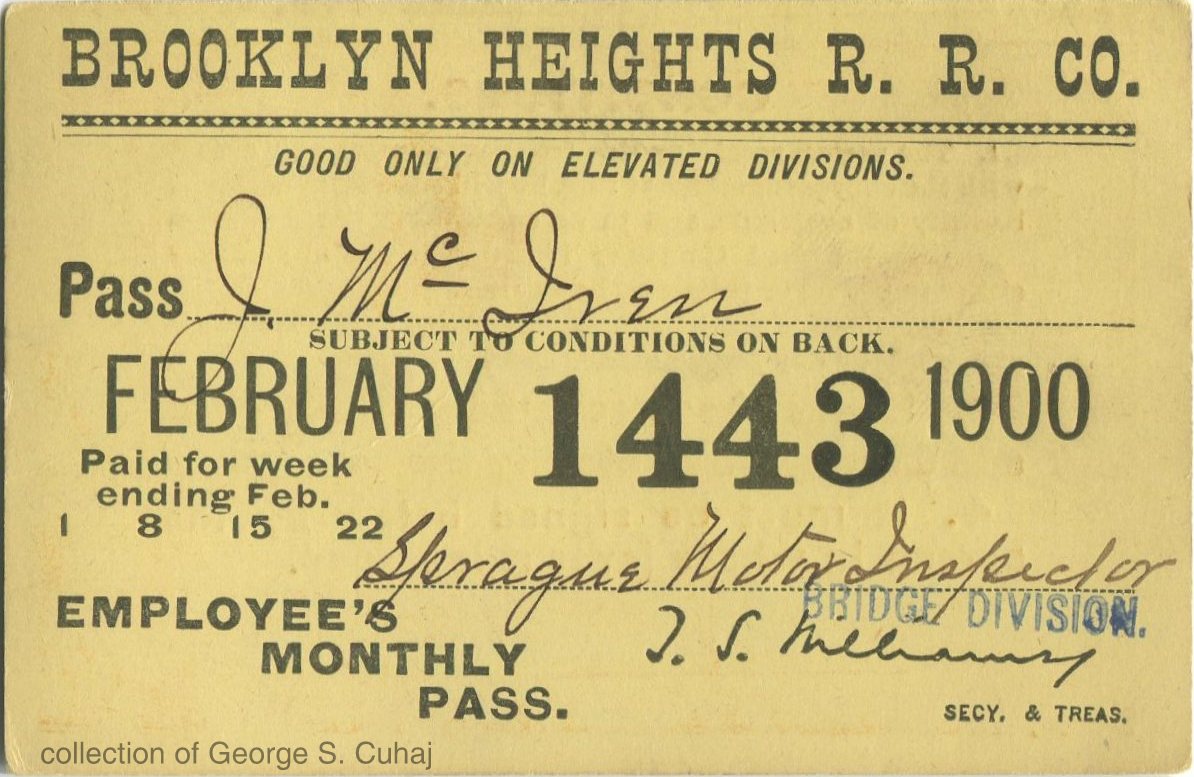 |
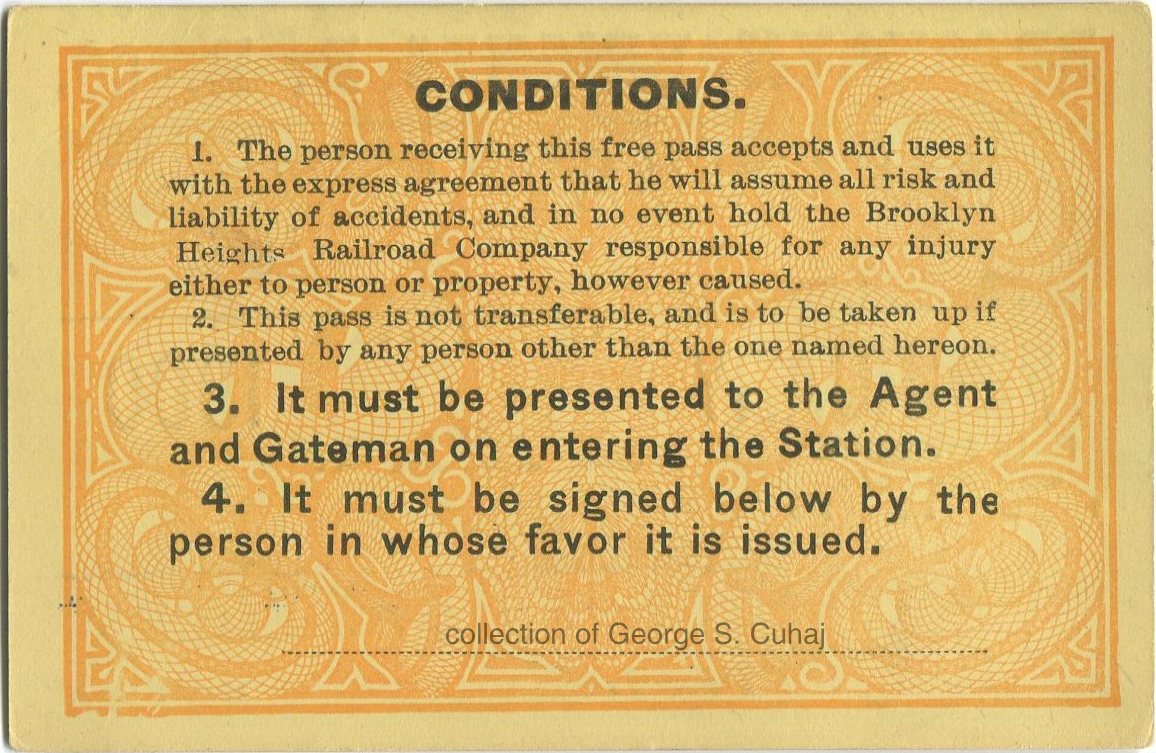 |
|
| Employee's Monthly Pass - January 1900 | Employee's Monthly Pass - February 1900 | |||
| . . |
||||
| Interborough Rapid Transit 1903 - 1940 |
||||
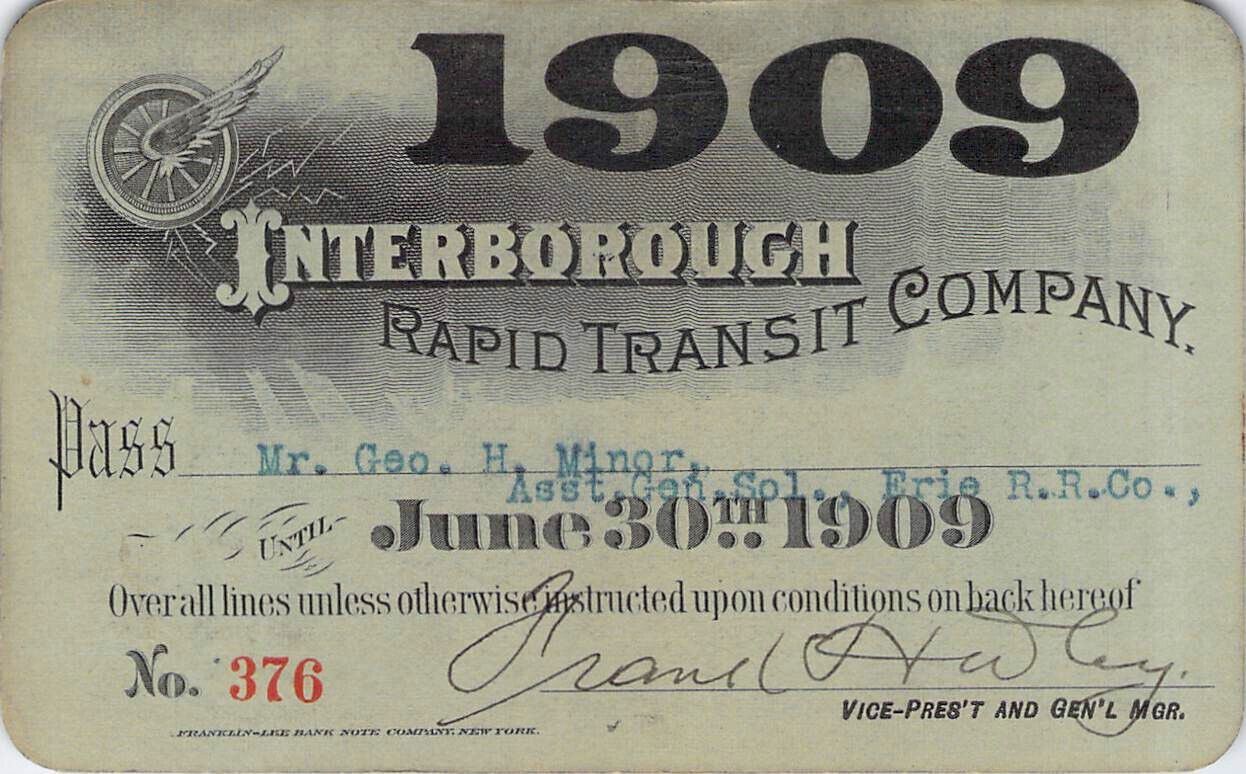 |
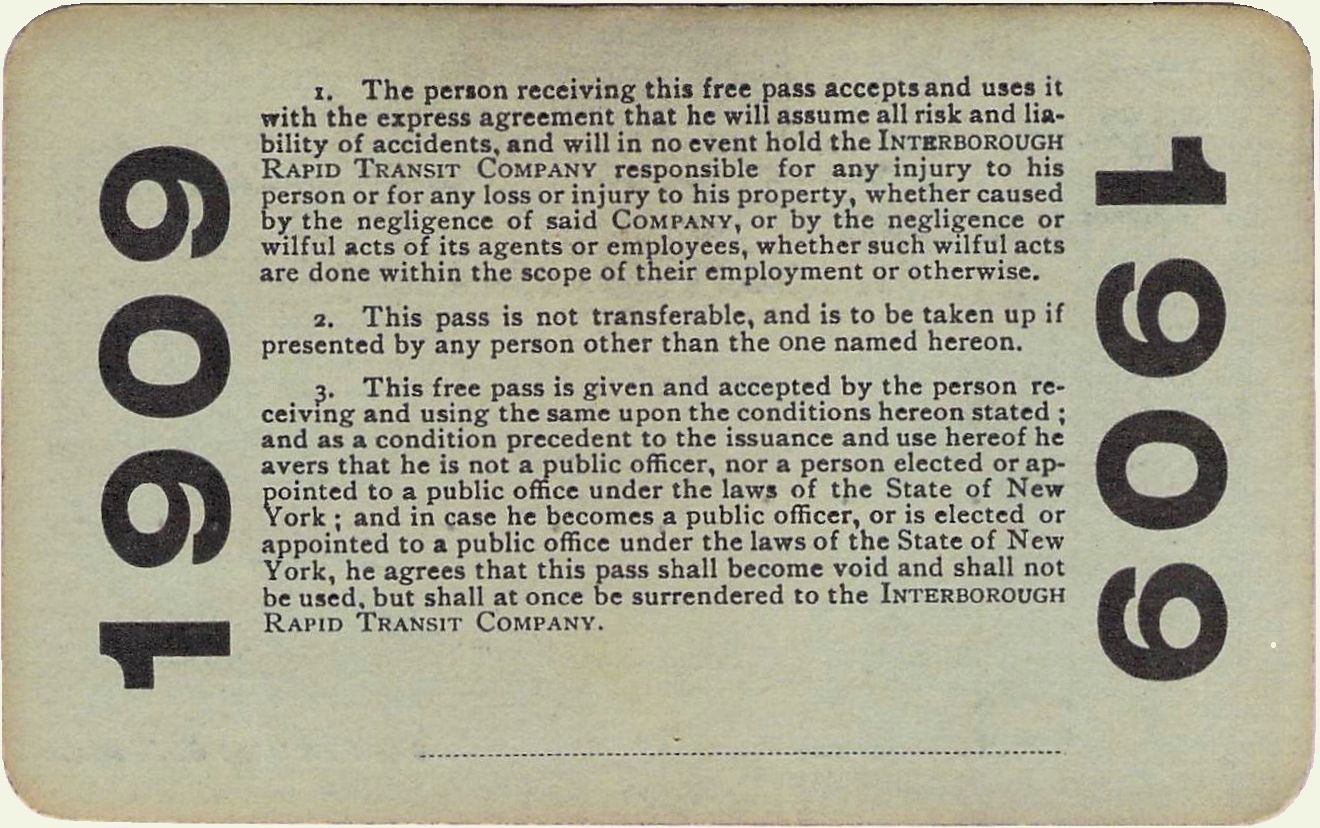 |
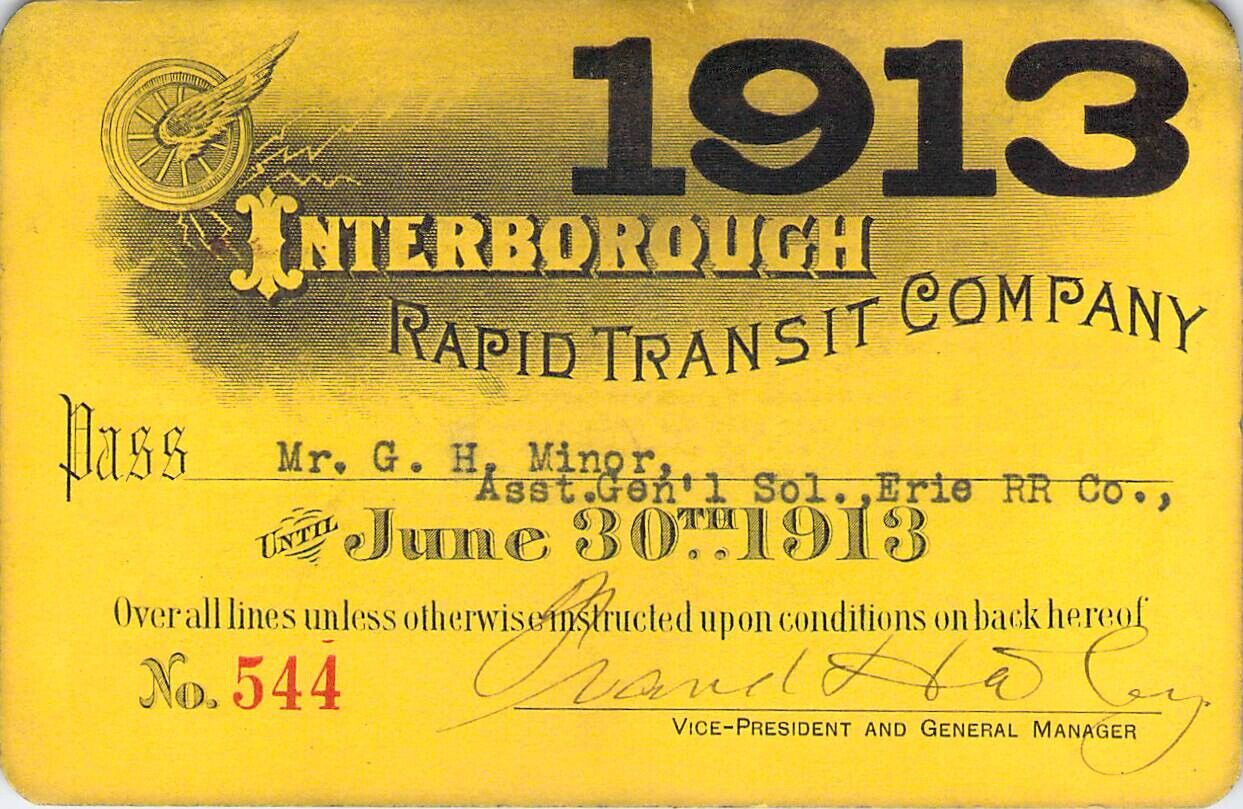 |
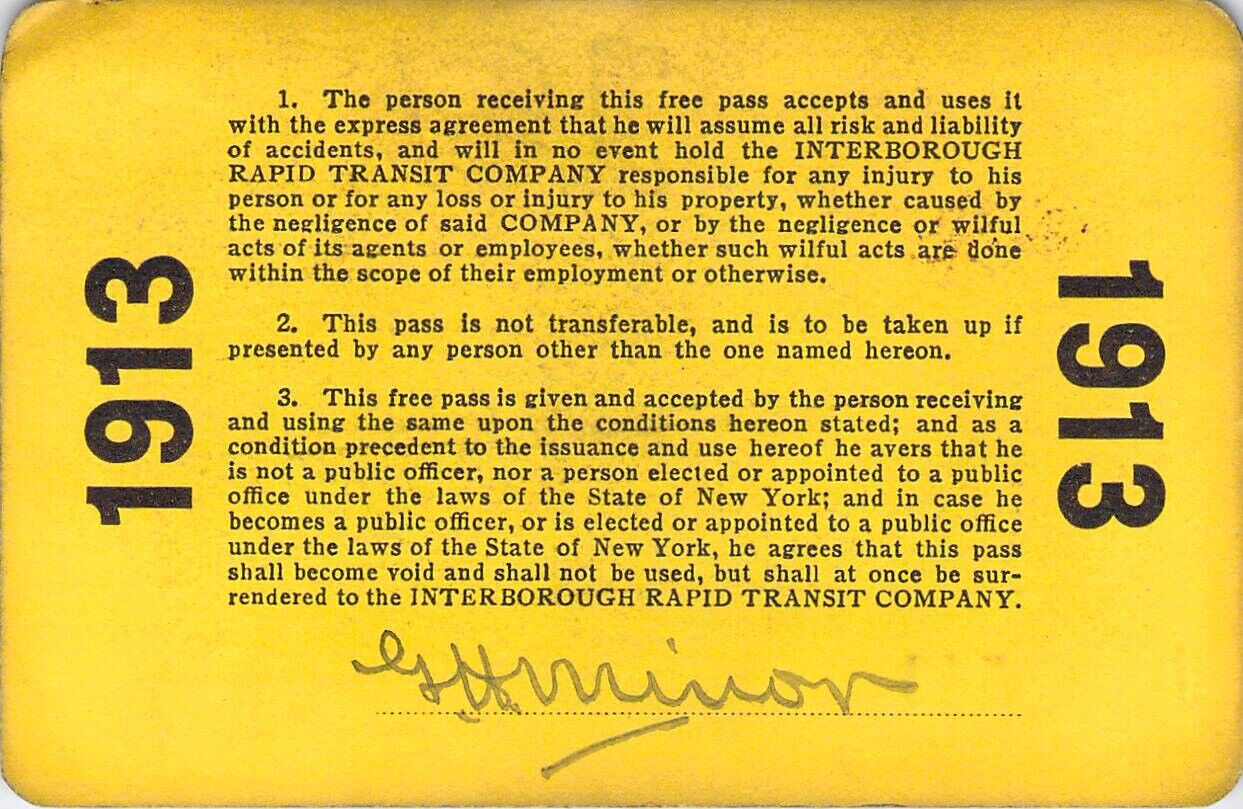 |
|
| Six Month General Pass - June 30, 1909 | Six Month General Pass - June 30, 1913 | |||
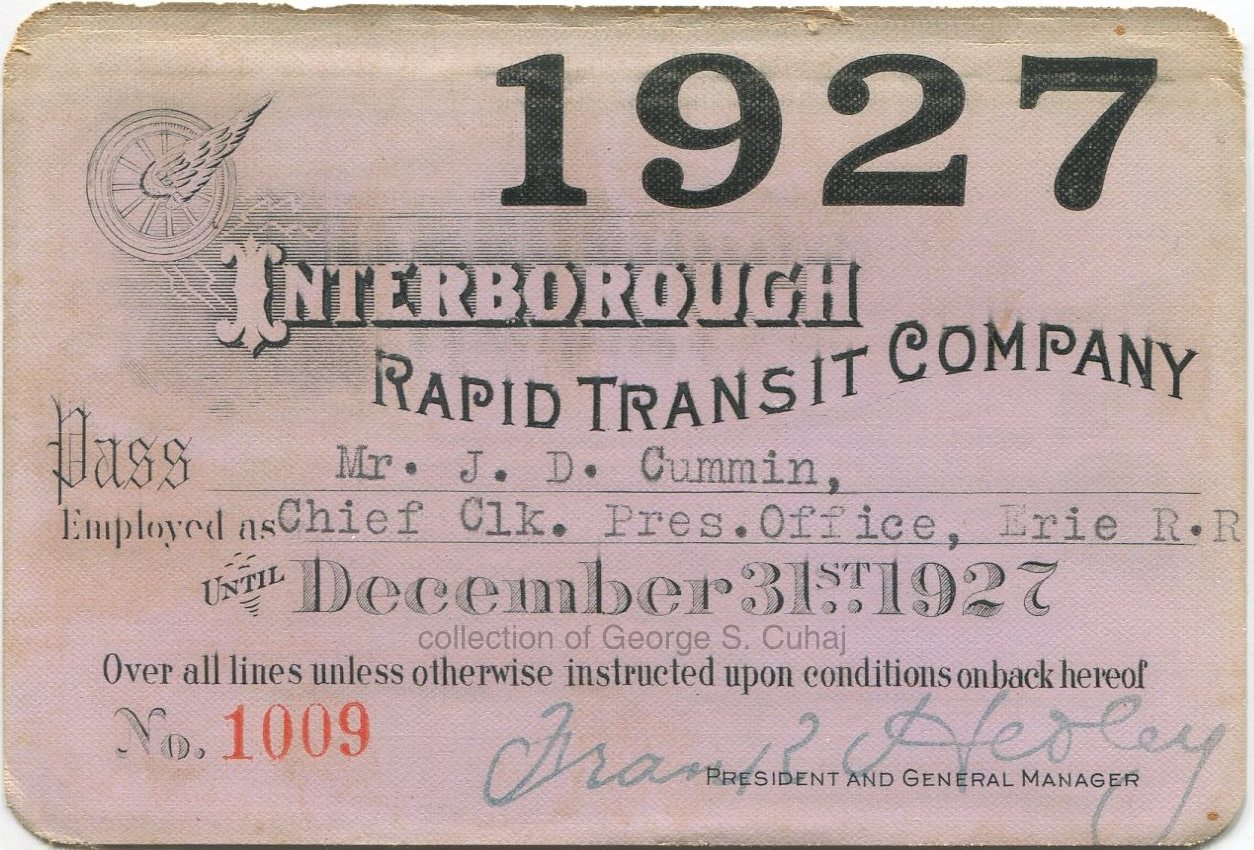 |
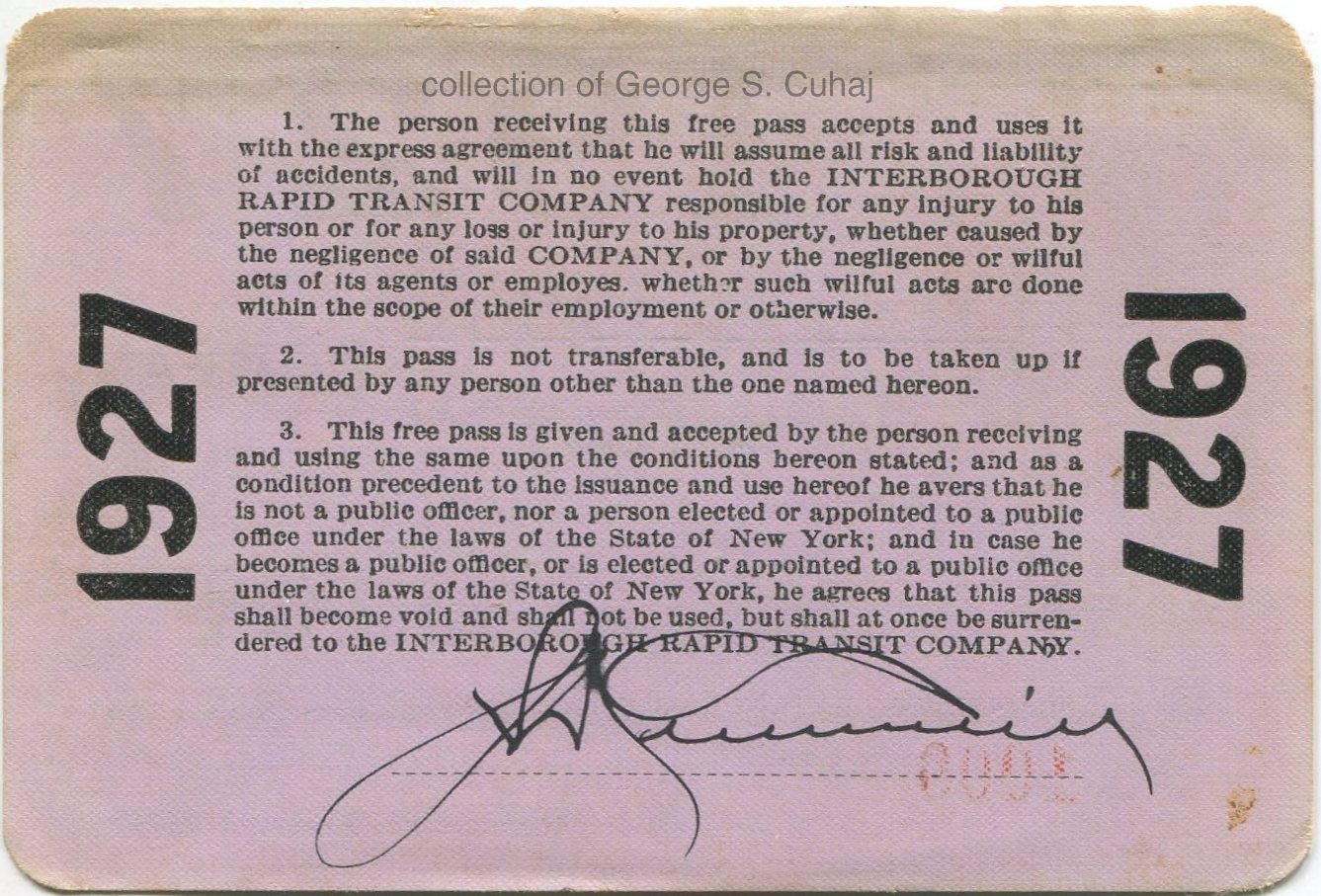 |
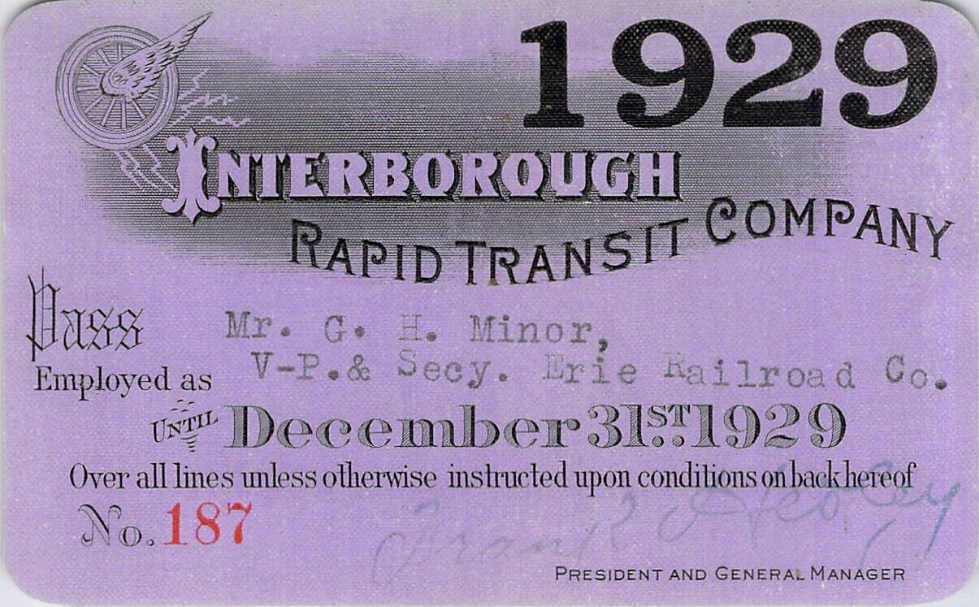 |
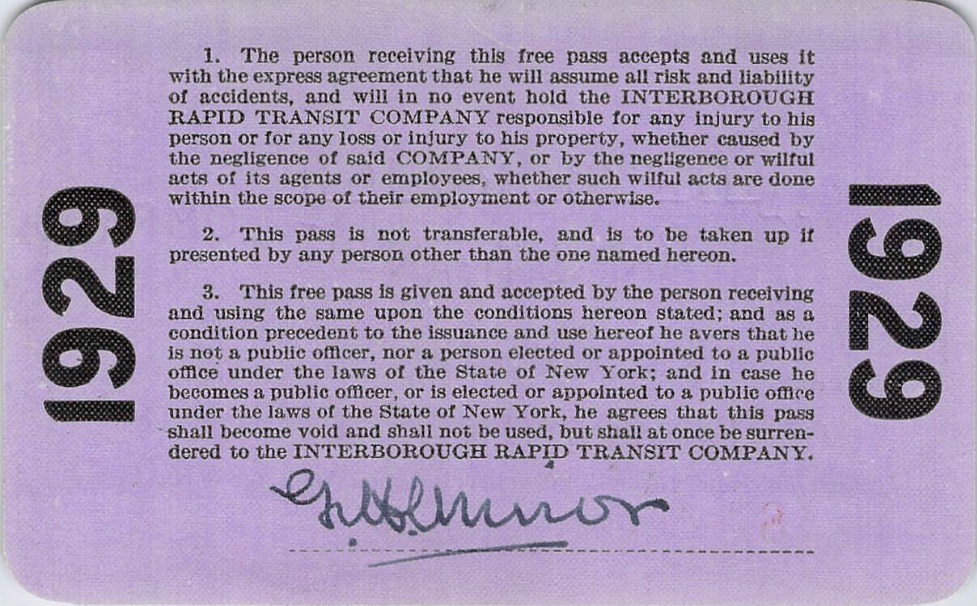 |
|
| Six Month General Pass - December 31, 1927 | Six Month General Pass - December 31, 1929 | |||
| . . |
||||
| Independent System 1932 - 1940 |
||||
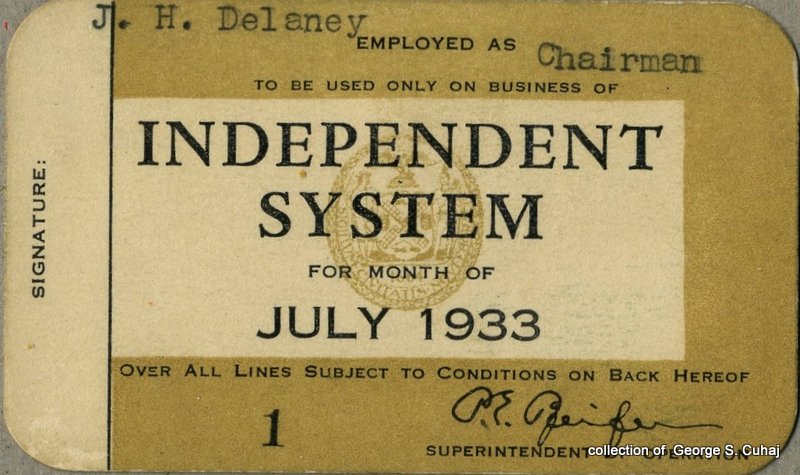 |
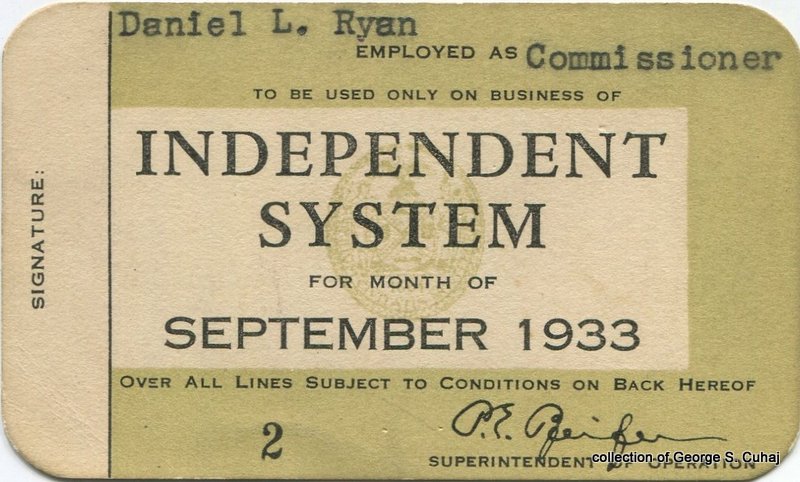 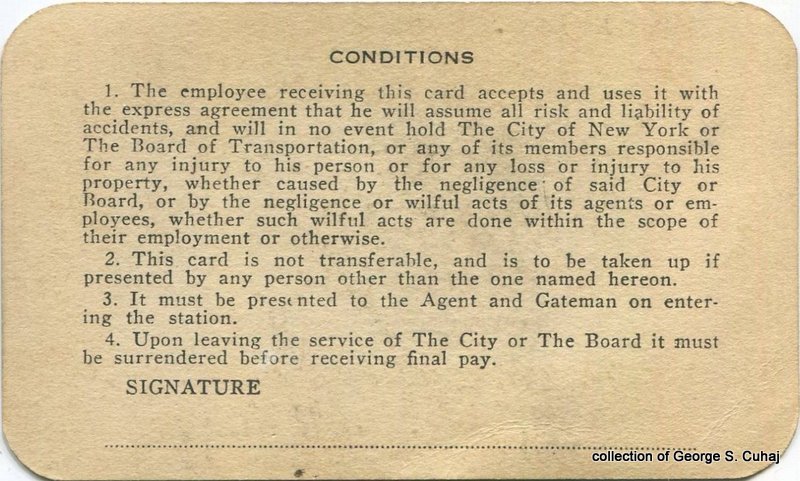 |
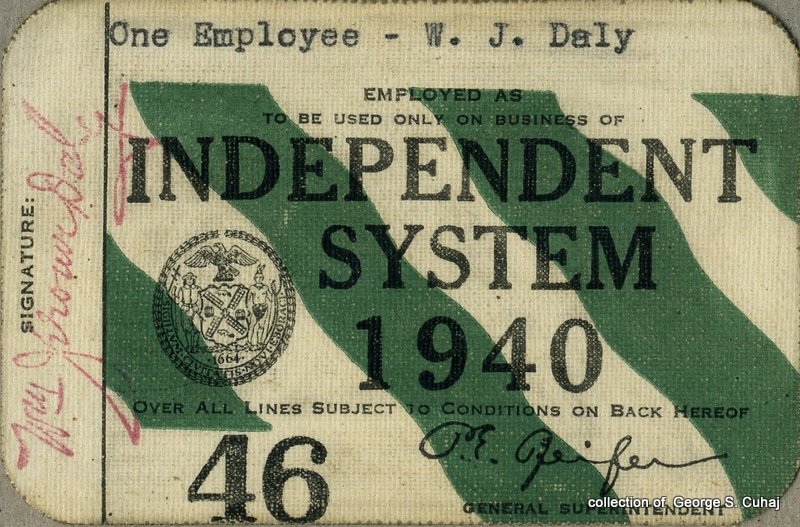 |
||
| Employee's Monthly Pass - July 1933 | Employee's Monthly Pass - September 1933 | Employee's Annual Pass - 1940 | ||
| . . |
||||
| Brooklyn Manhattan Transit 1923 - 1940 |
||||
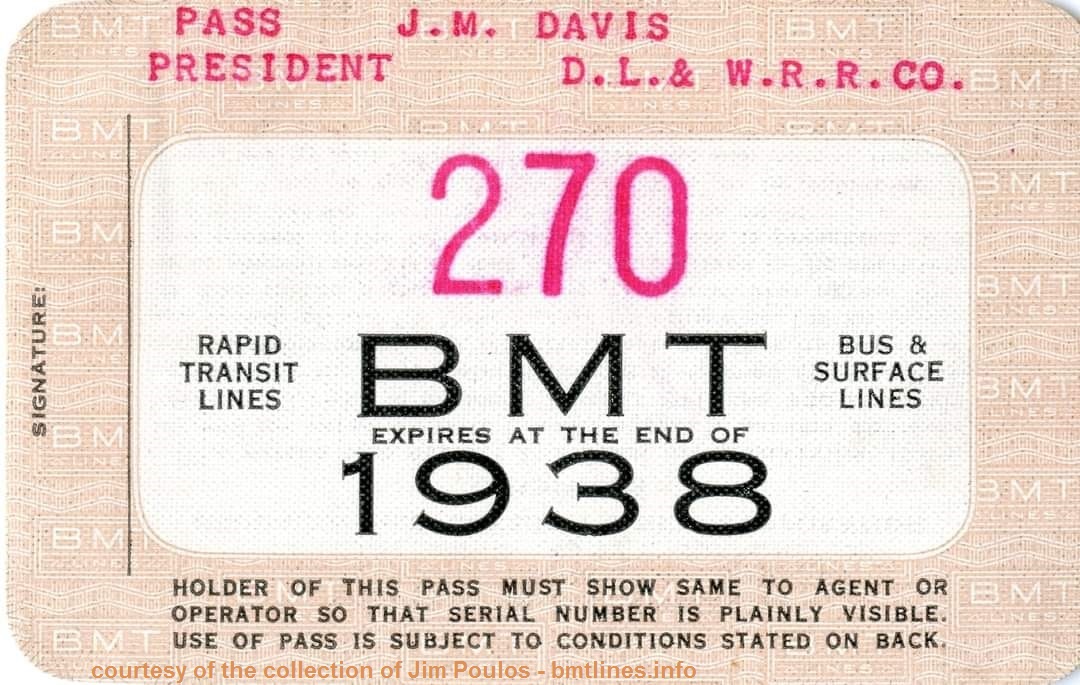 |
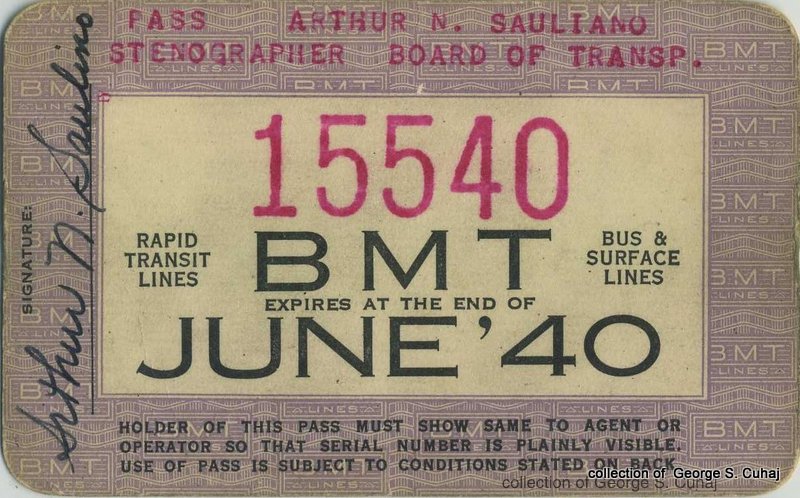 |
|||
| General Annual Pass - 1938 | General Semi-Annual Pass - June 1940 | |||
|
Railroad Passes in general are highly collectible, not only by transit collectors but from general railroad collectors as well. You
can expect to pay $25.00 and up per pass for mid 20th century issues and $50.00
and up per pass or more, for turn of century passes. For pre-1900
passes, add another 25-50%.
. . |
||||
| Brooklyn Rapid Transit (Rapid and Surface) | ||||
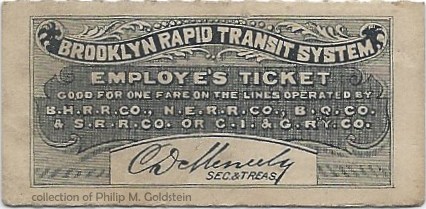 |
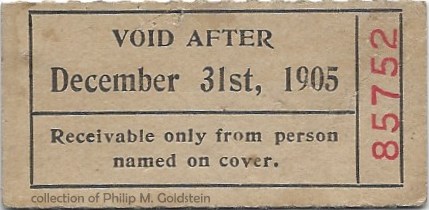 |
|||
| Employe's Ticket Void after December 31, 1905 2" x 1" |
||||
| . | ||||
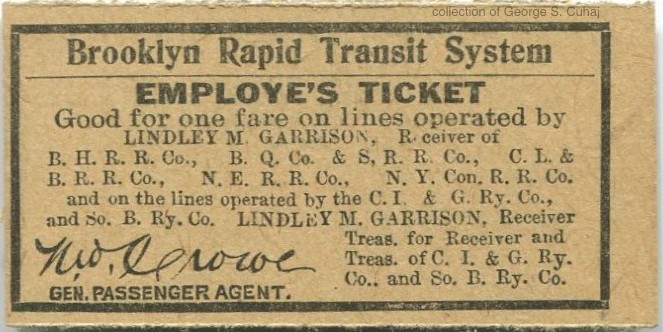 |
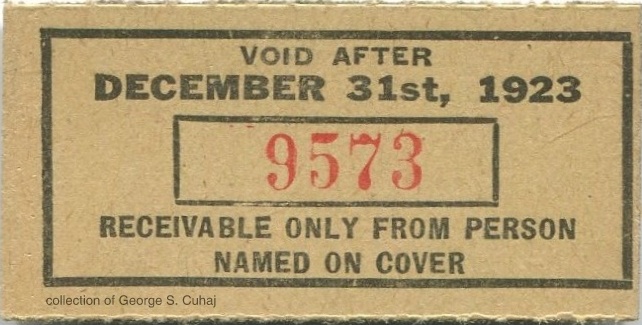 |
|||
| Employe's Ticket Void after December 31, 1906 2" x 1" |
Employe's Ticket Void after December 31, 1923 2" x 1" |
|||
| . | ||||
| Brooklyn Bus, Brooklyn & Queens Transit, New York Rapid Transit & South Brooklyn Railway (Rapid and Surface) | ||||
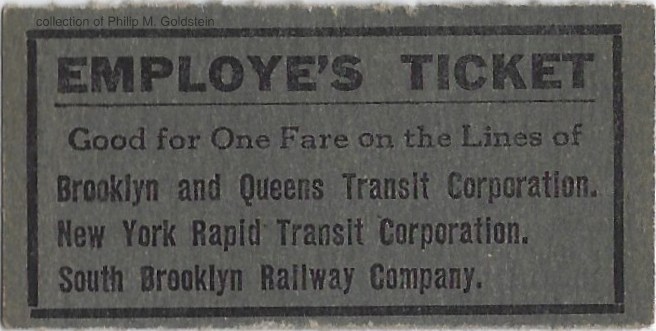 |
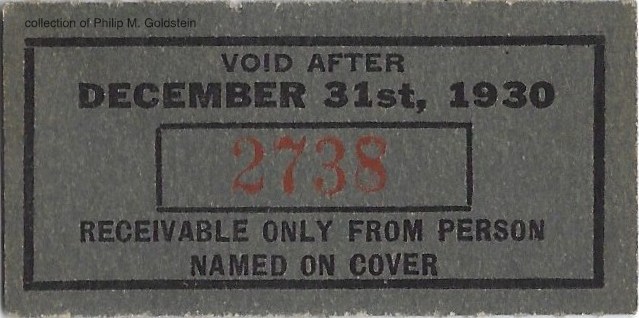 |
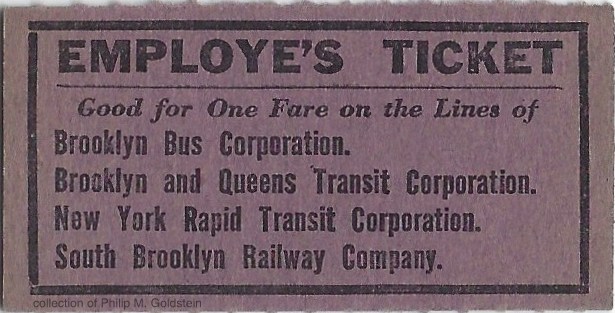 |
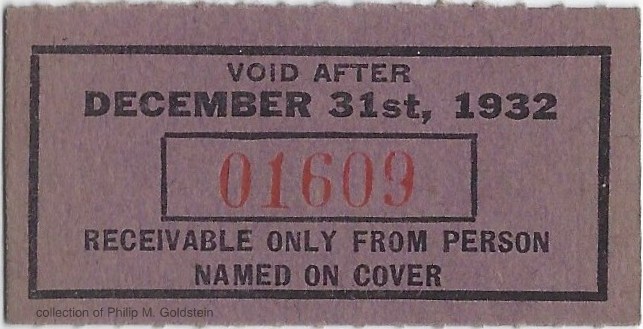 |
|
| Void after December 31, 1930 2" x 1" |
Void after December 31, 1932 2" x 1" |
|||
| uncommon; $12.00 to $17.00 | ||||
|
Steinway Railways
(owned by New York and Queens County) |
||||
....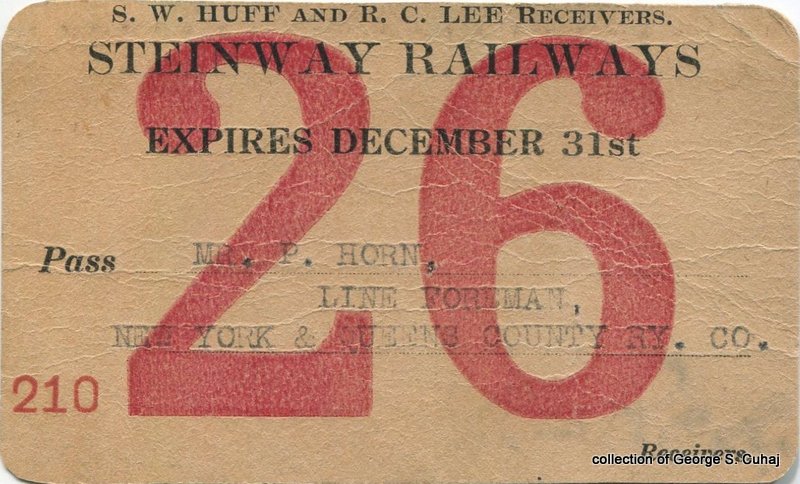 . . |
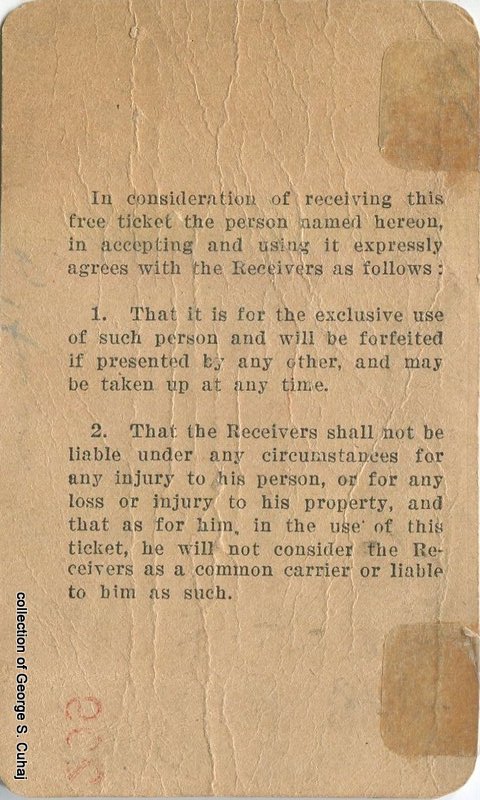 |
|||
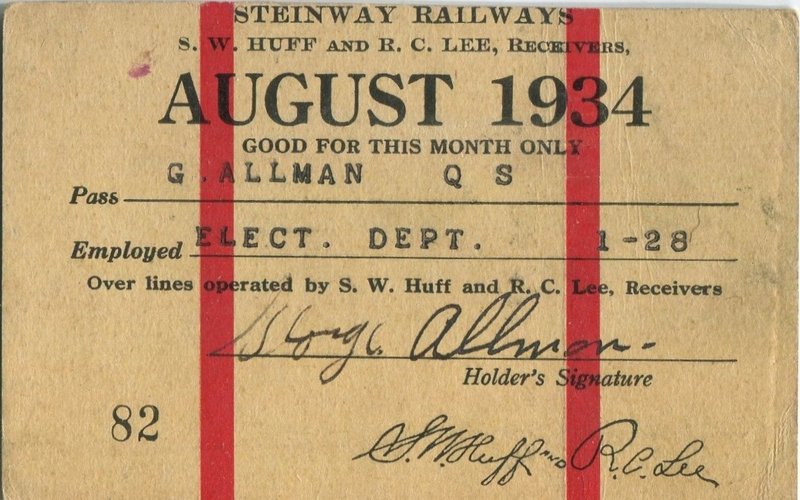 |
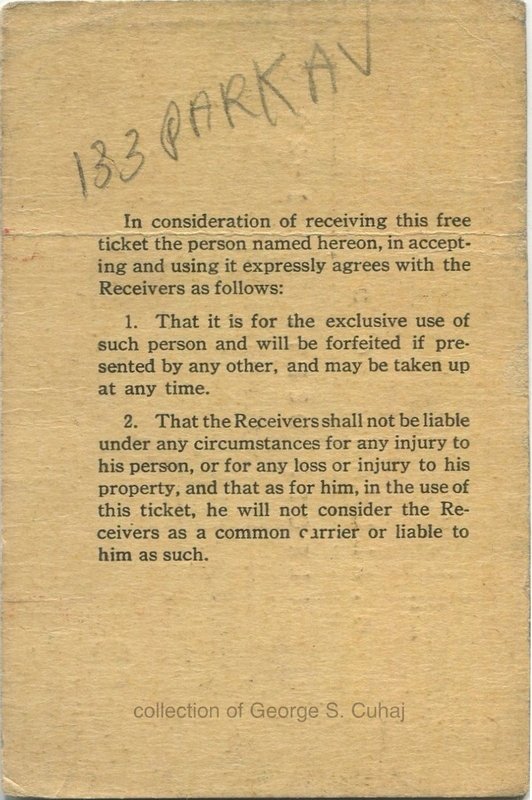 |
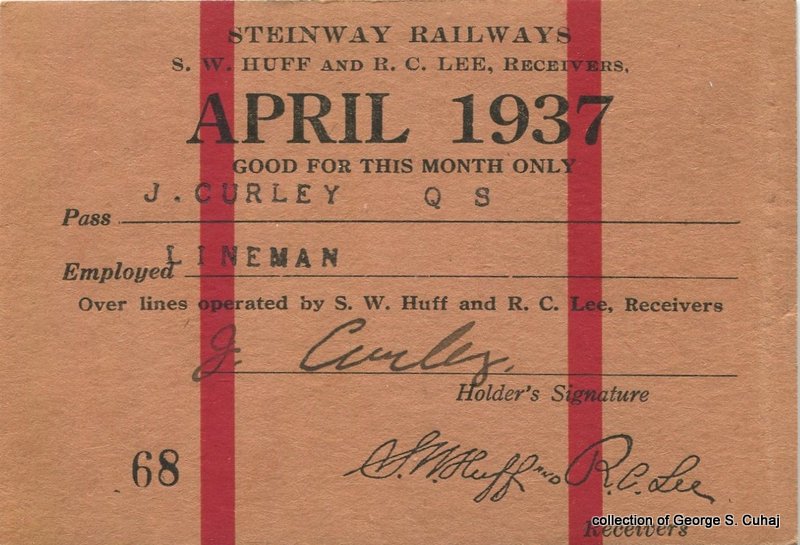 |
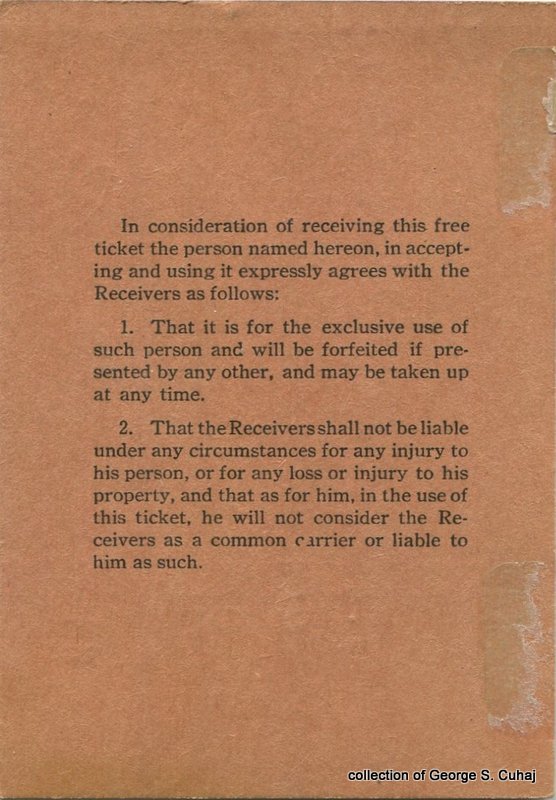 |
|
| uncommon, but several are known $15.00 - $20.00 |
||||
| . . |
||||
|
Triboro Coach Corp
|
||||
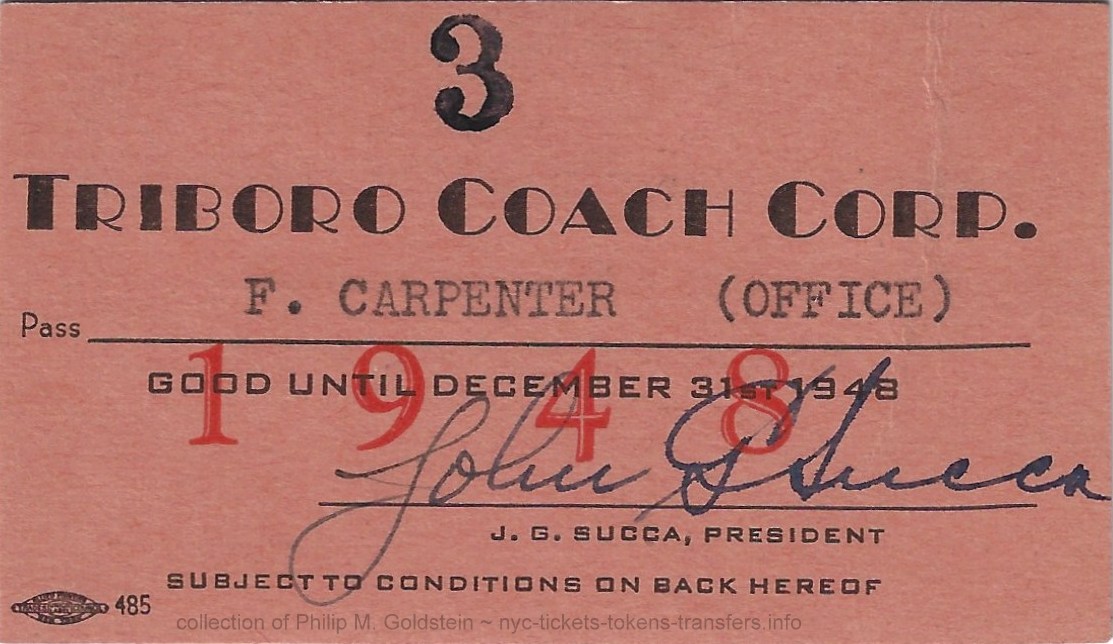 3 5/8" x 2 1/8 (shown actual size) |
||||
Many of the passes seen below are unissued production samples from the Rand McNally company records. These were almost always cancelled with a punch, carried a Rand McNally stamp on the back, and were affixed into an album. At some point in recent past; these albums were acquired, the passes removed from the pages, and sold off to collectors. Very rarely are issued passes encountered.
Another interesting factoid, is Rand McNally used a bat shaped logo for a short period, to which I (PMG) have not encountered before on any of the Rand McNally printed items I have collected to date:
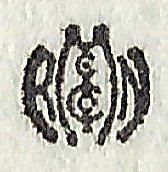
Some issues below have them, yet others do not.
| Fifth Avenue Coach Employees quarterly format Rand McNally 4" x 2 1/2" (shown actual size)
(reduced 25%) |
||||||
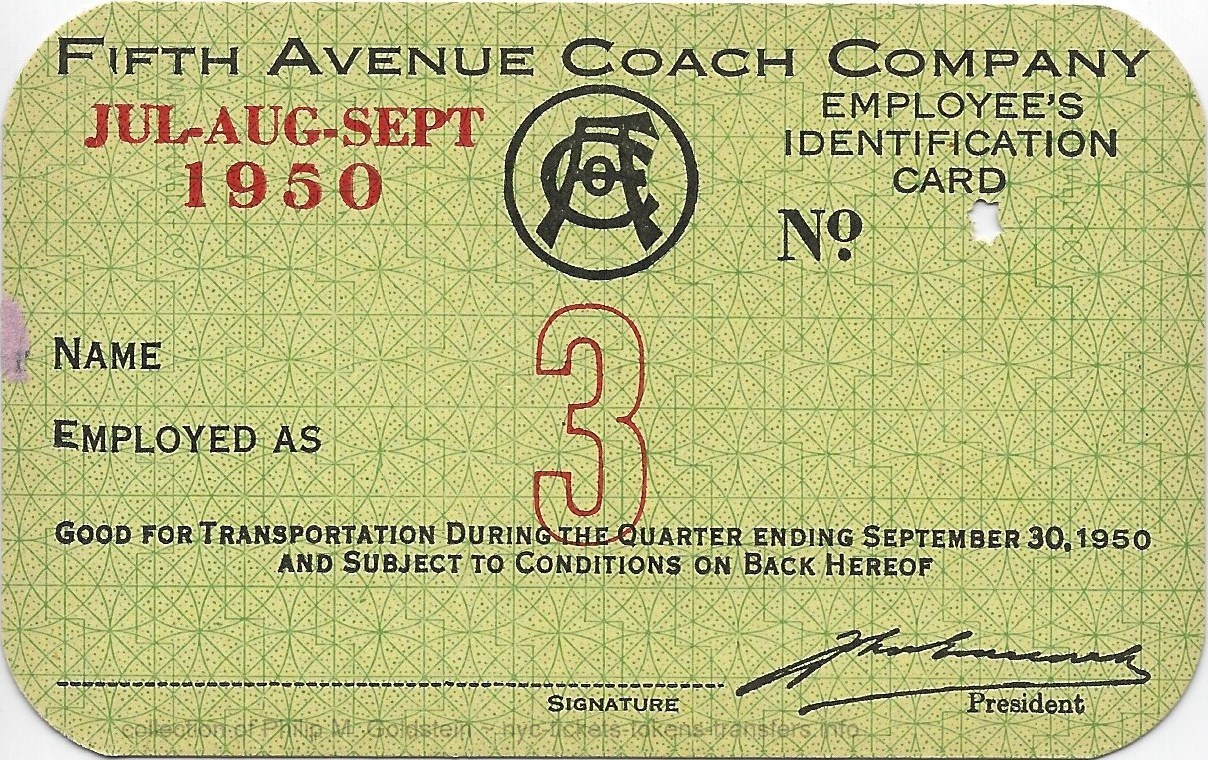 |
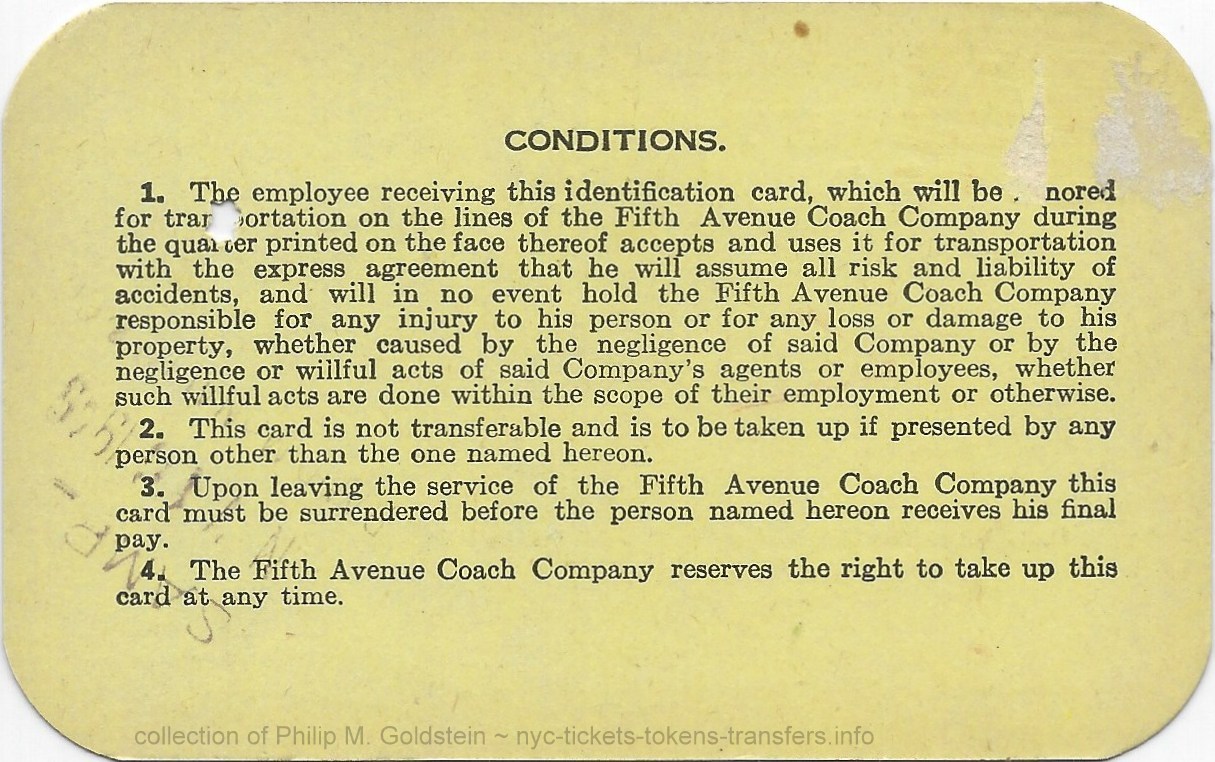 |
..... | 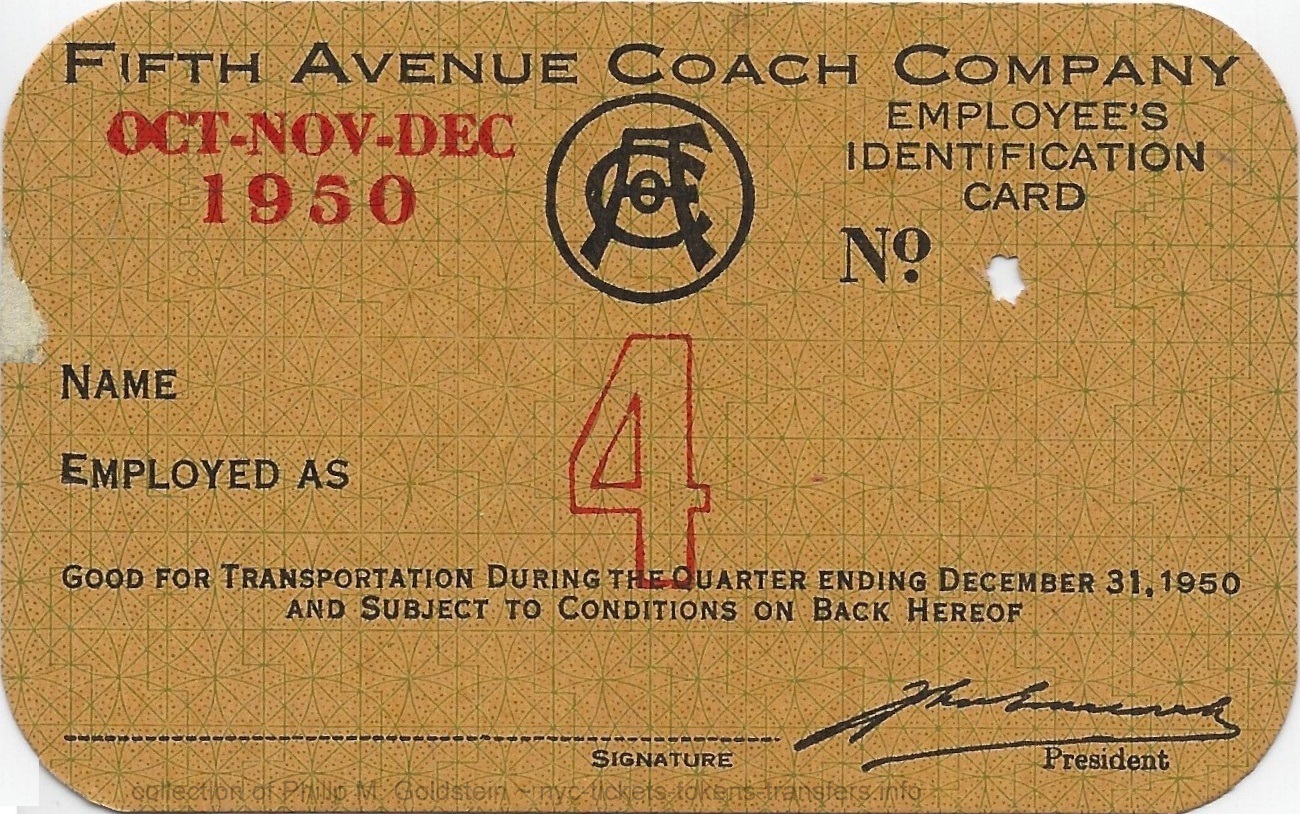 |
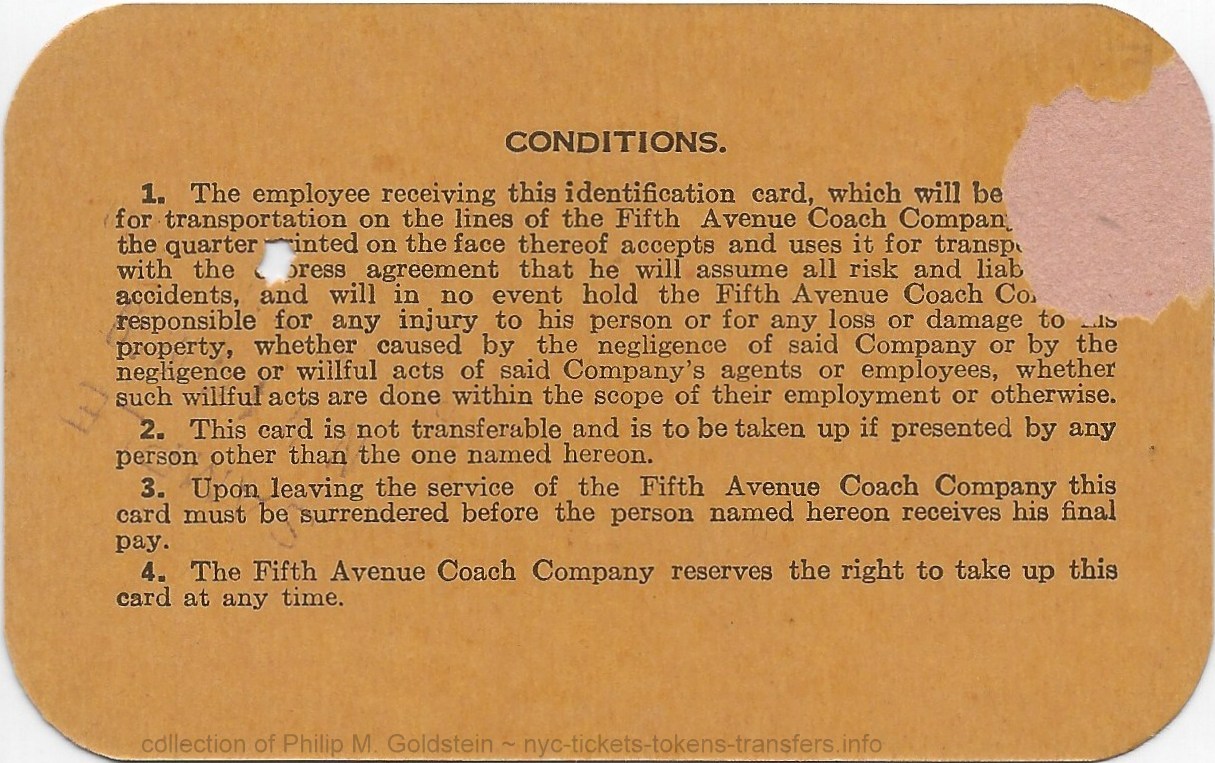 |
||
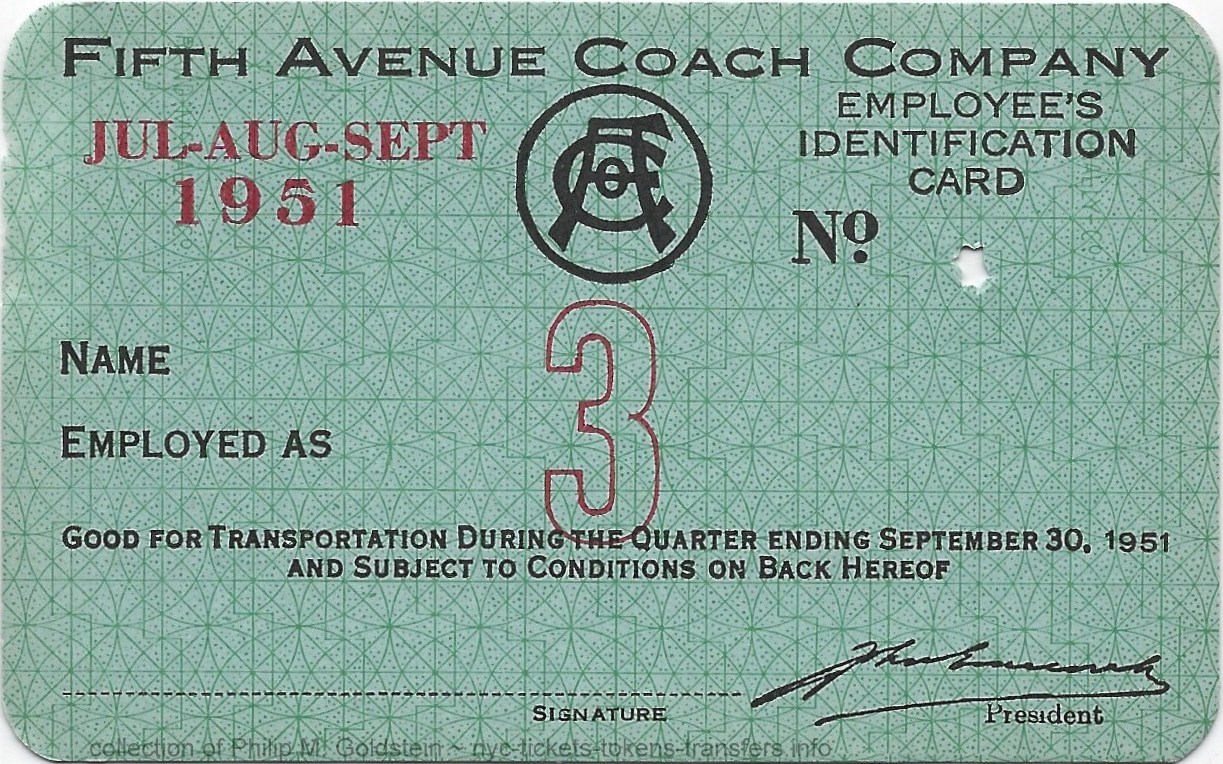 |
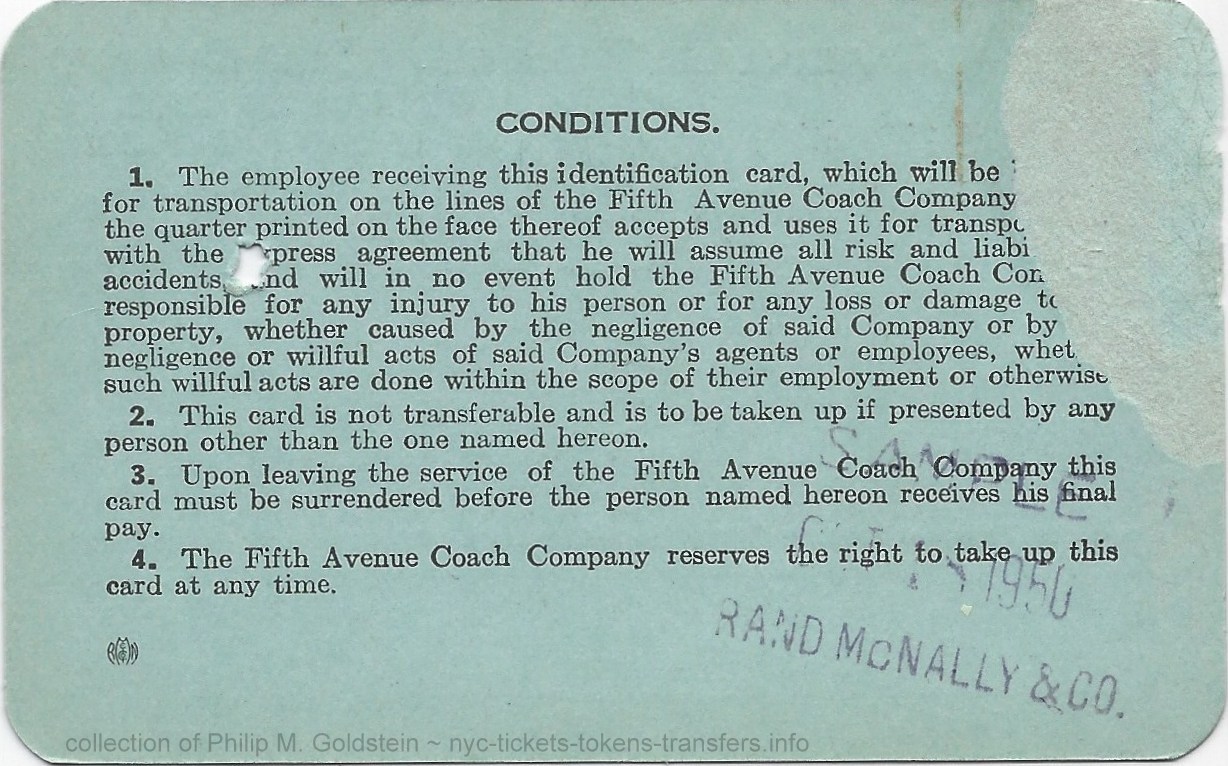 |
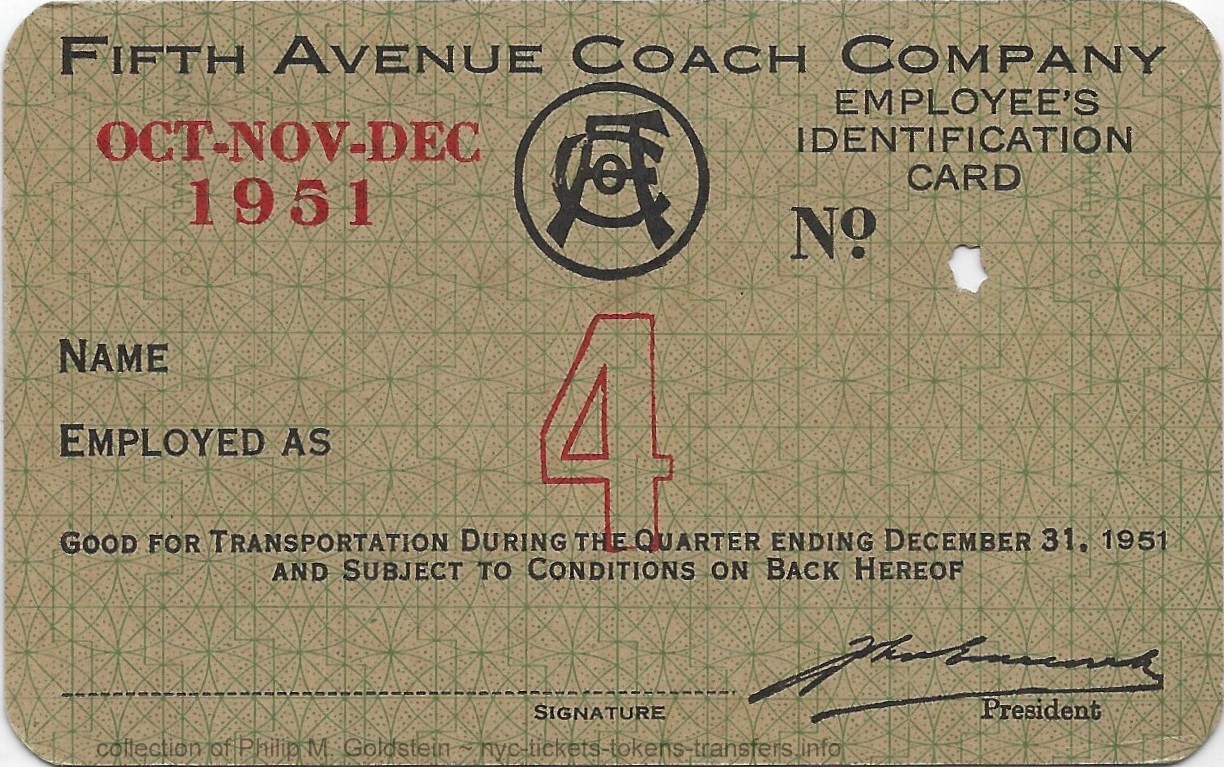 |
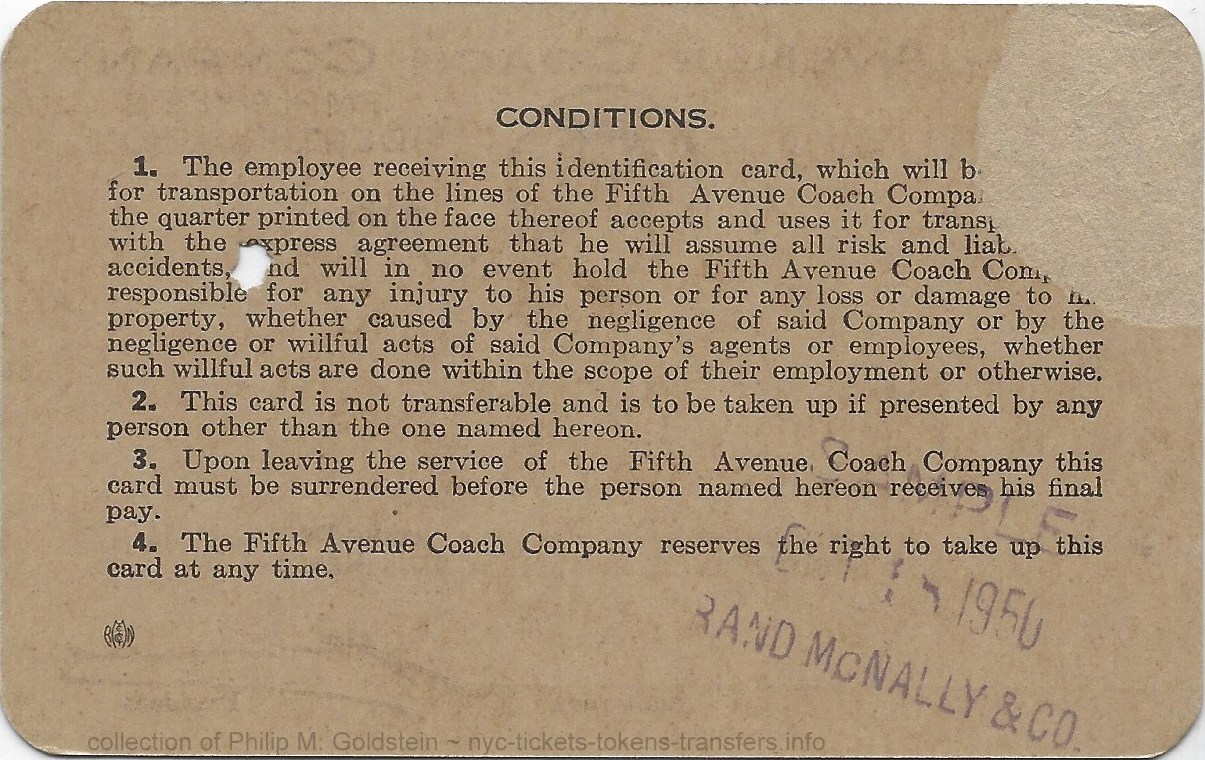 |
|||
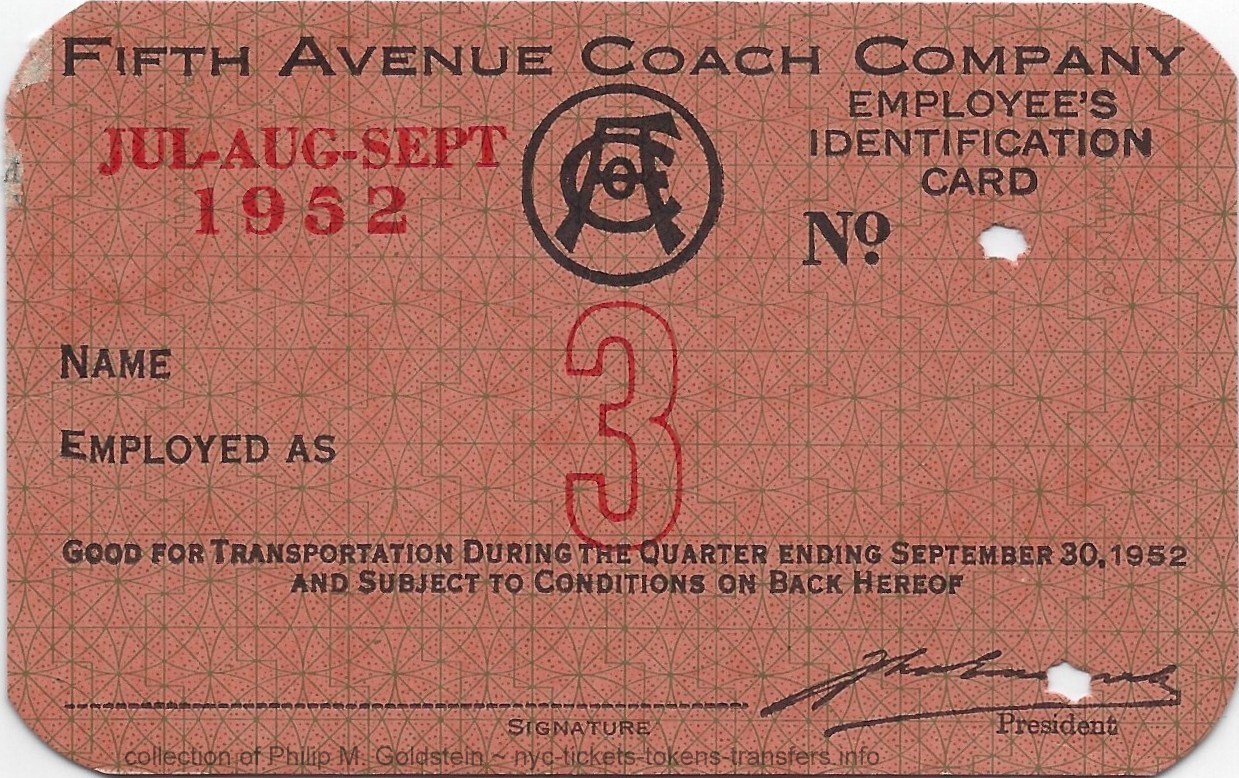 |
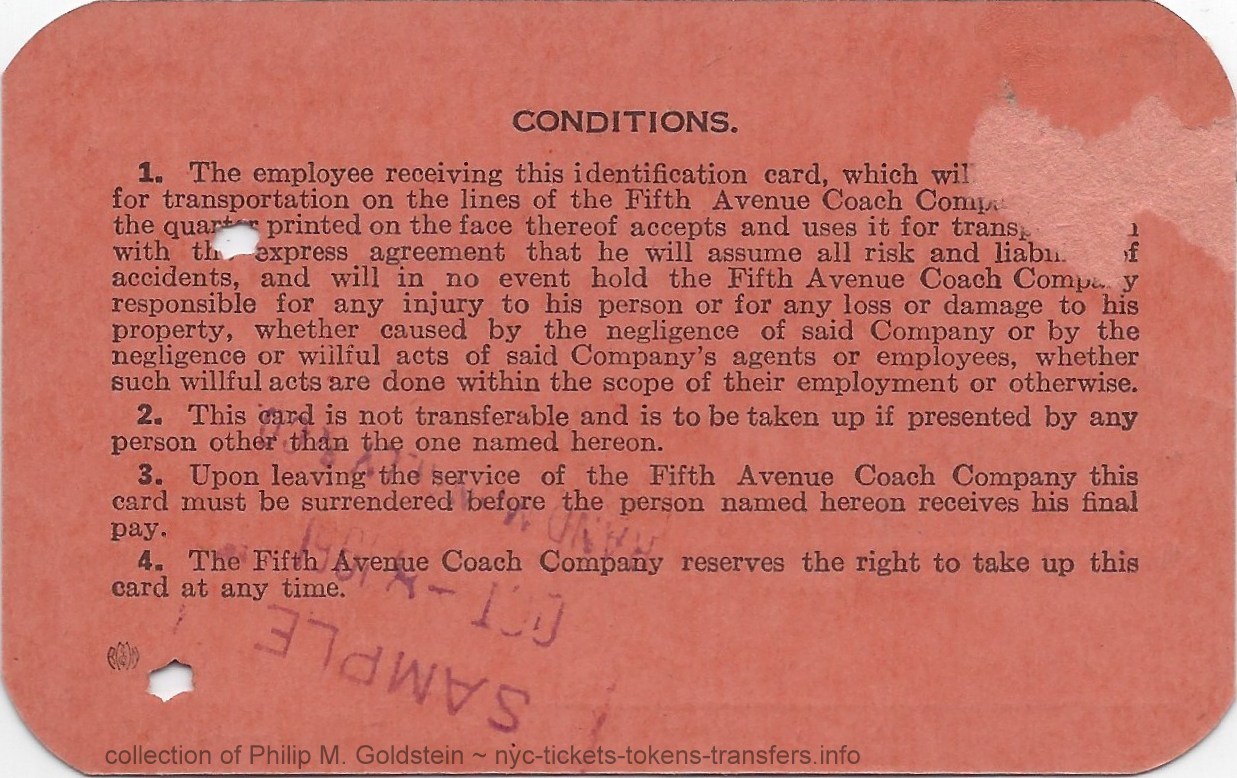 |
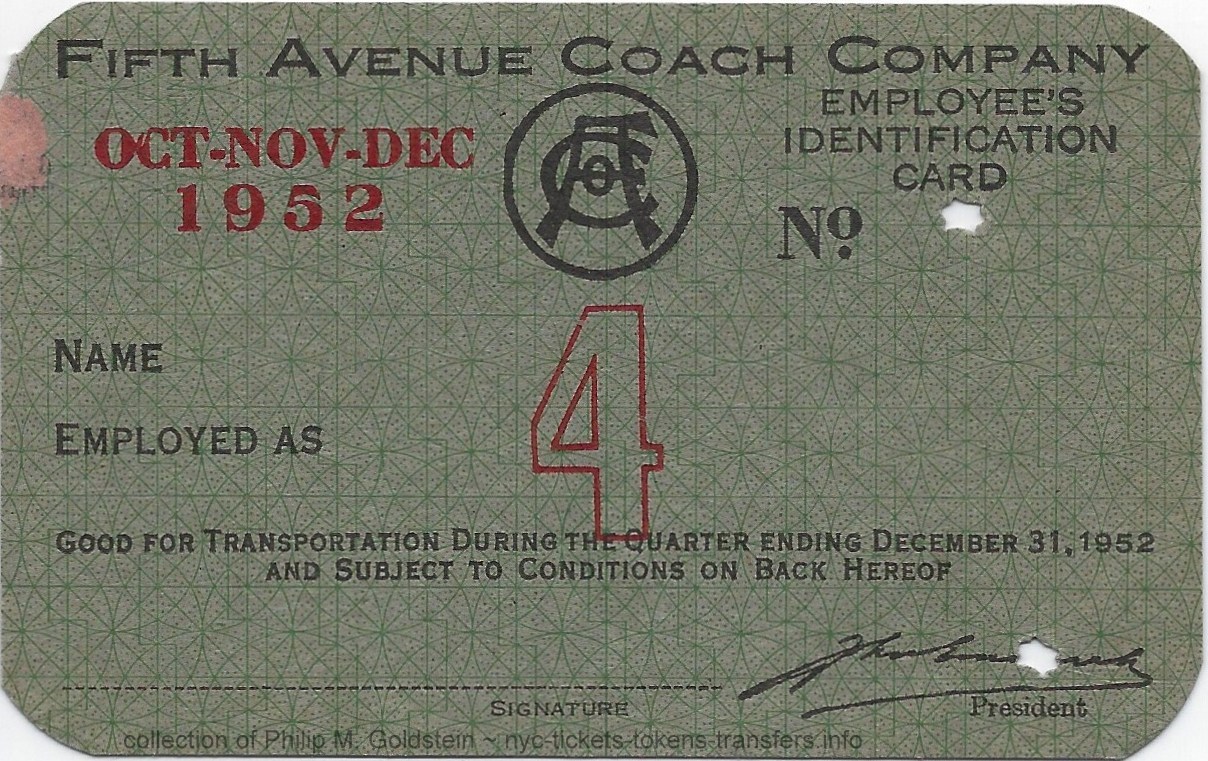 |
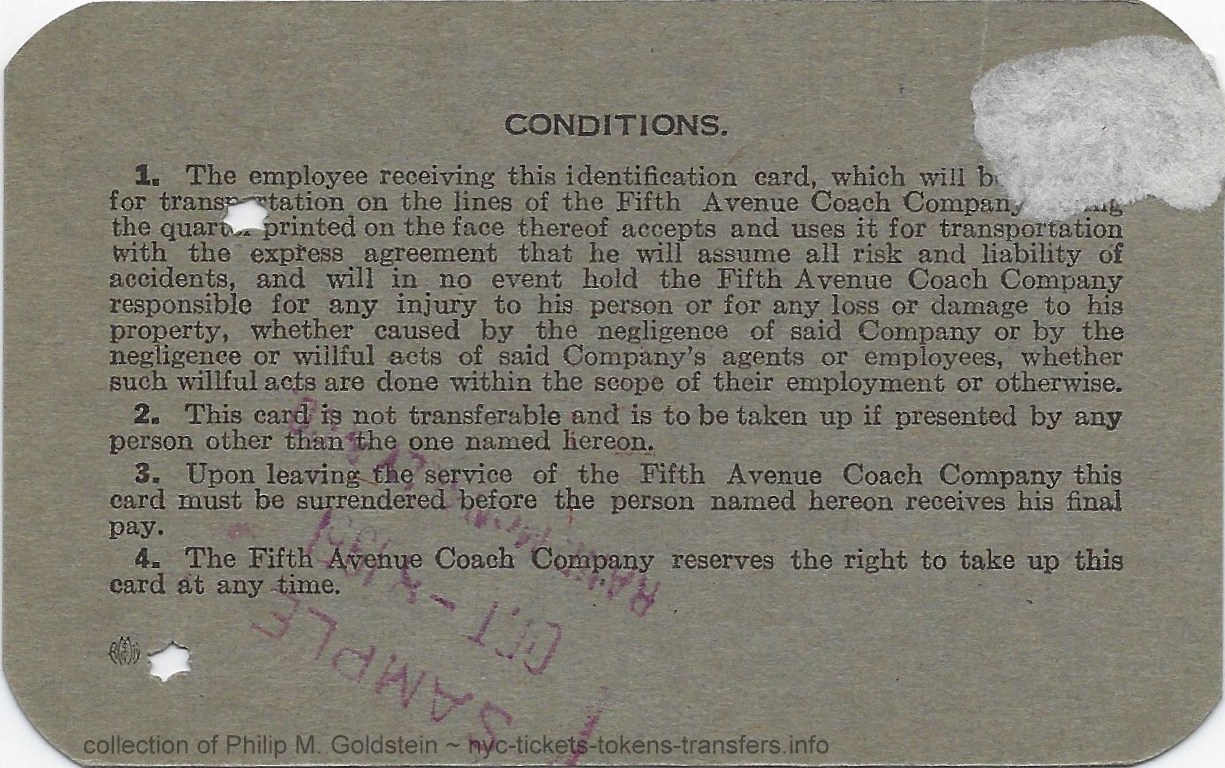 |
|||
Police Department - City of New York annual Rand McNally 4" x 2 1/2" (reduced 25%) |
||||||
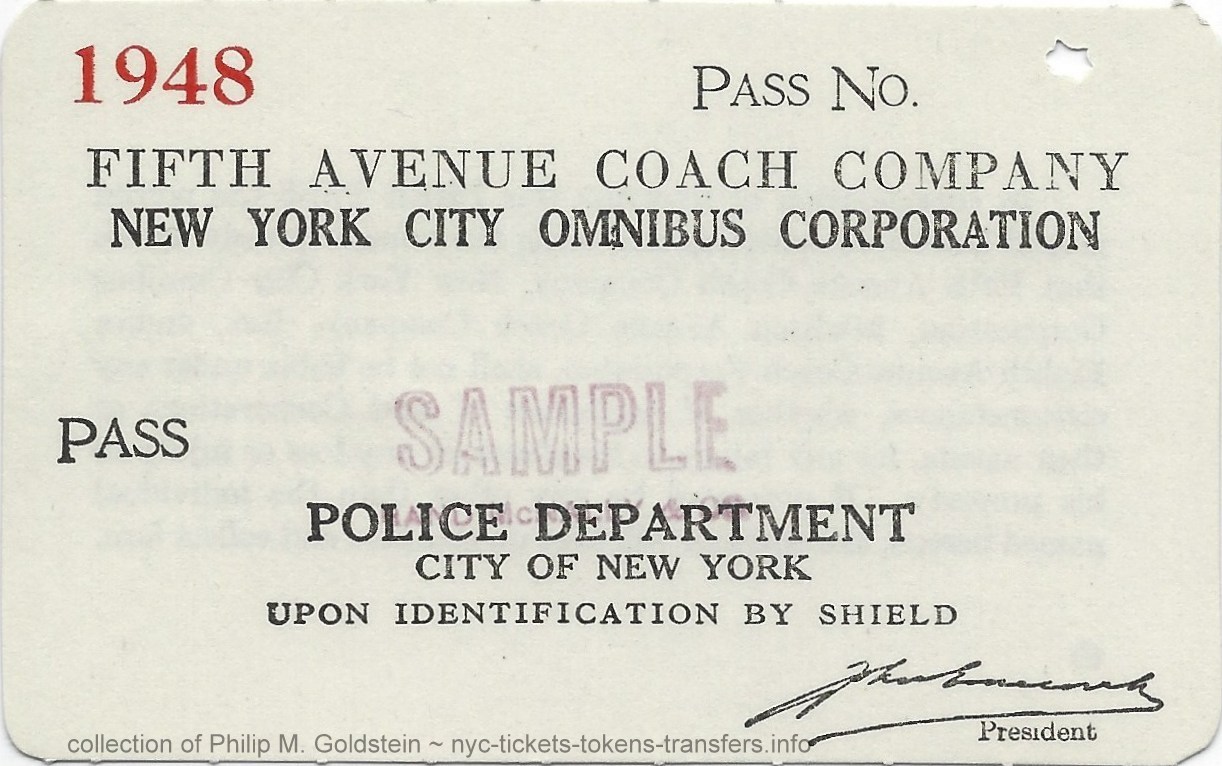 |
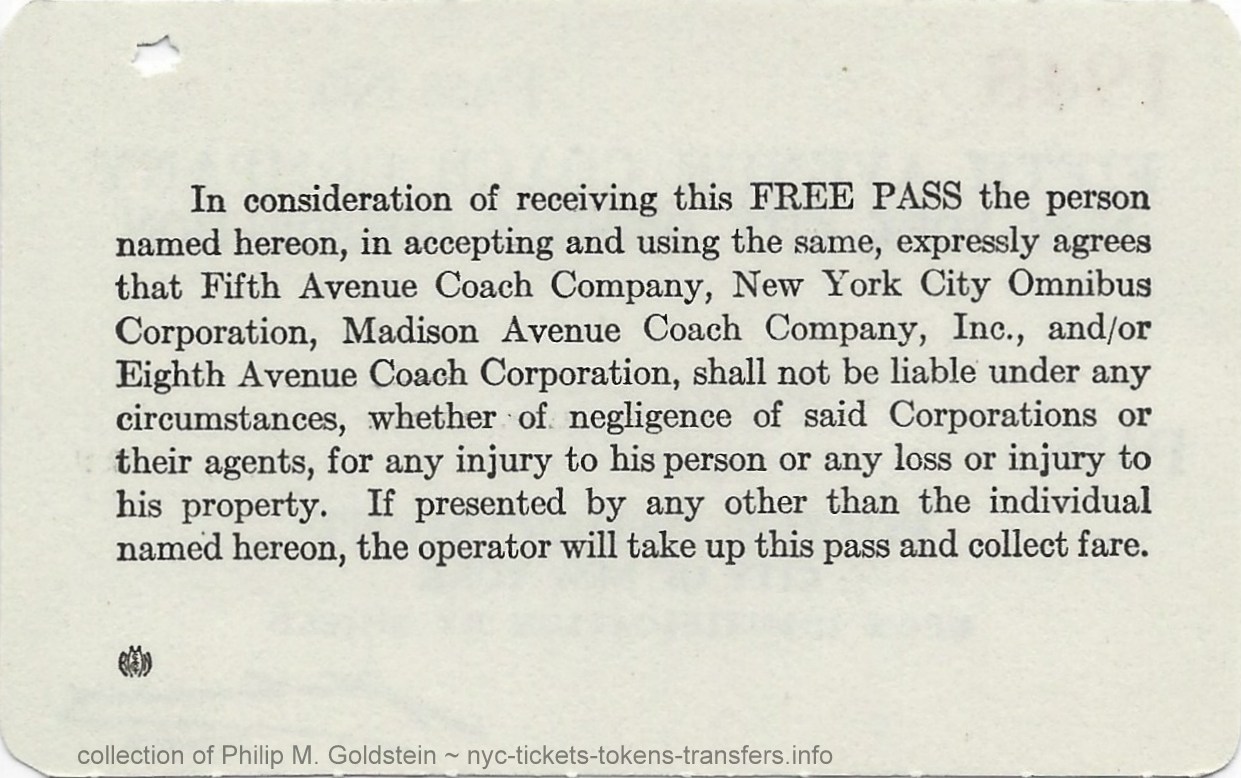 |
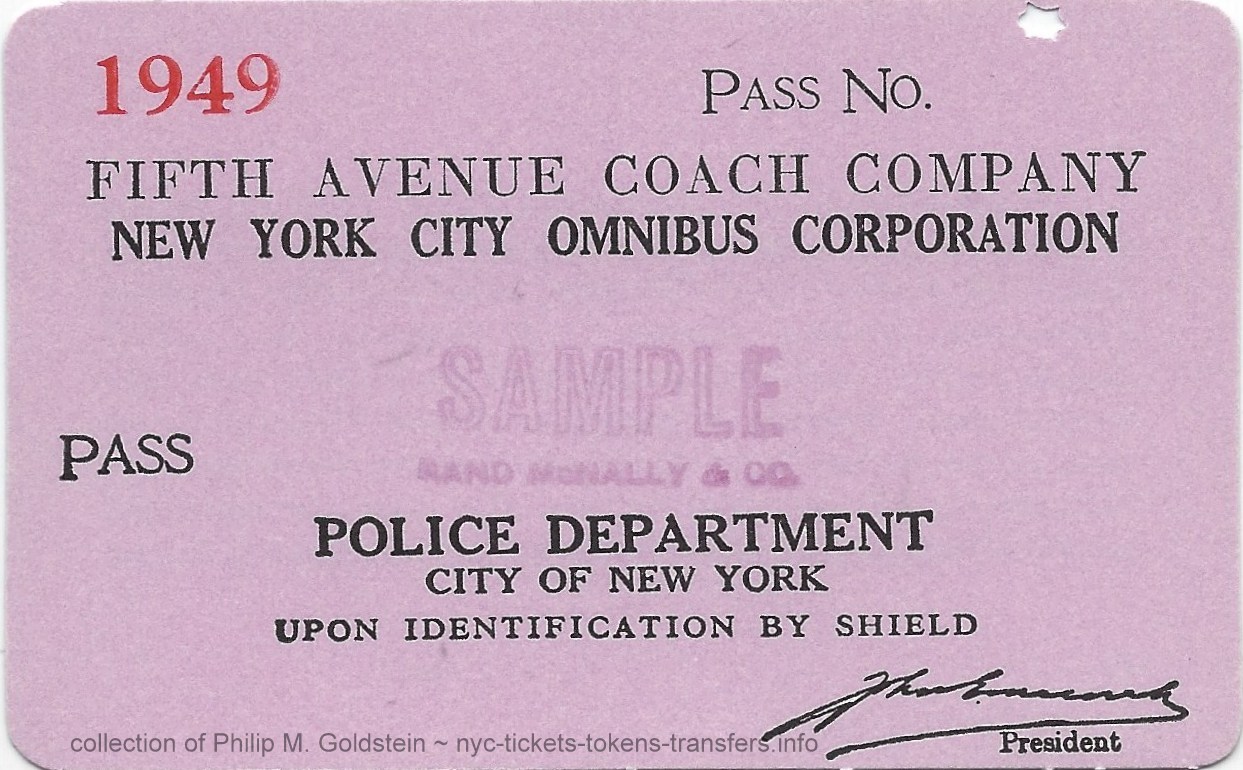 |
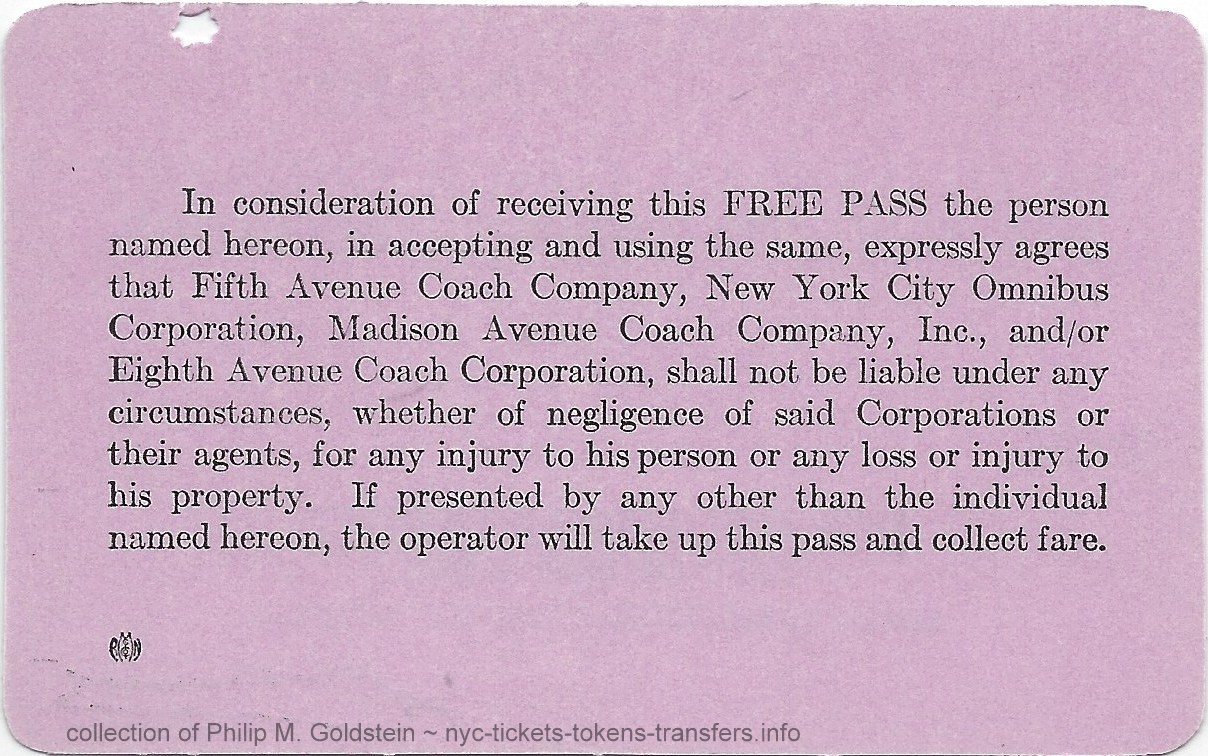 |
|||
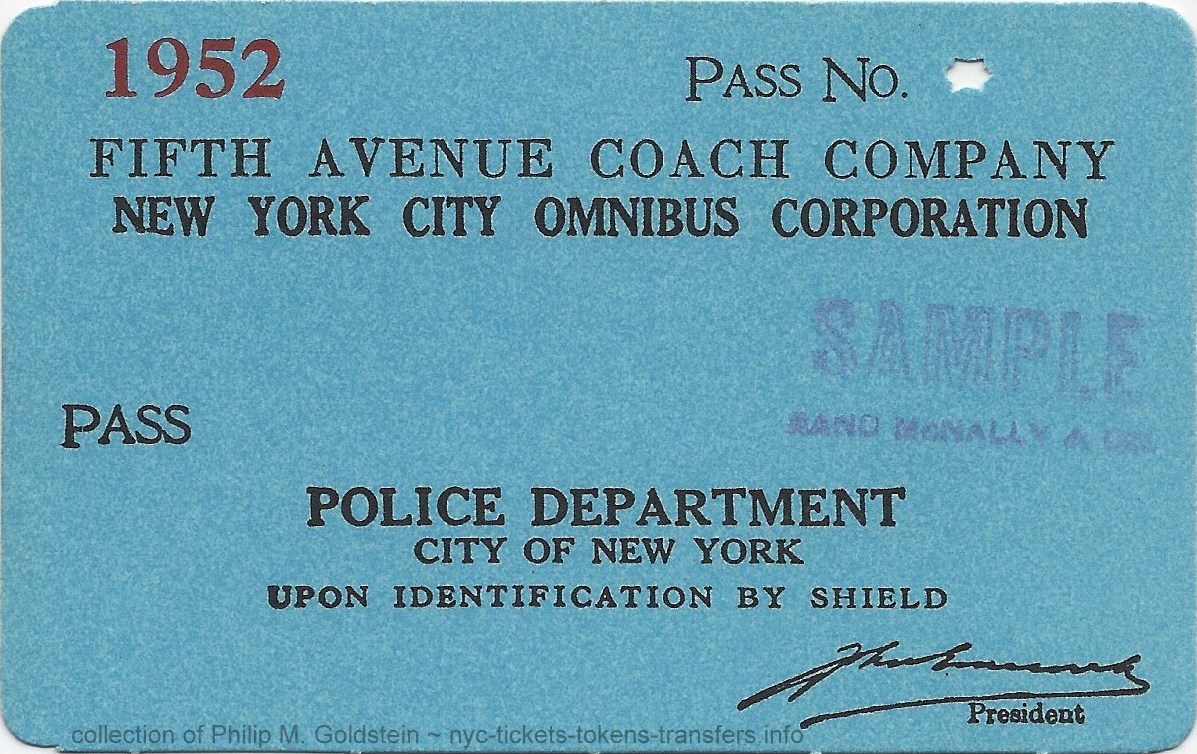 |
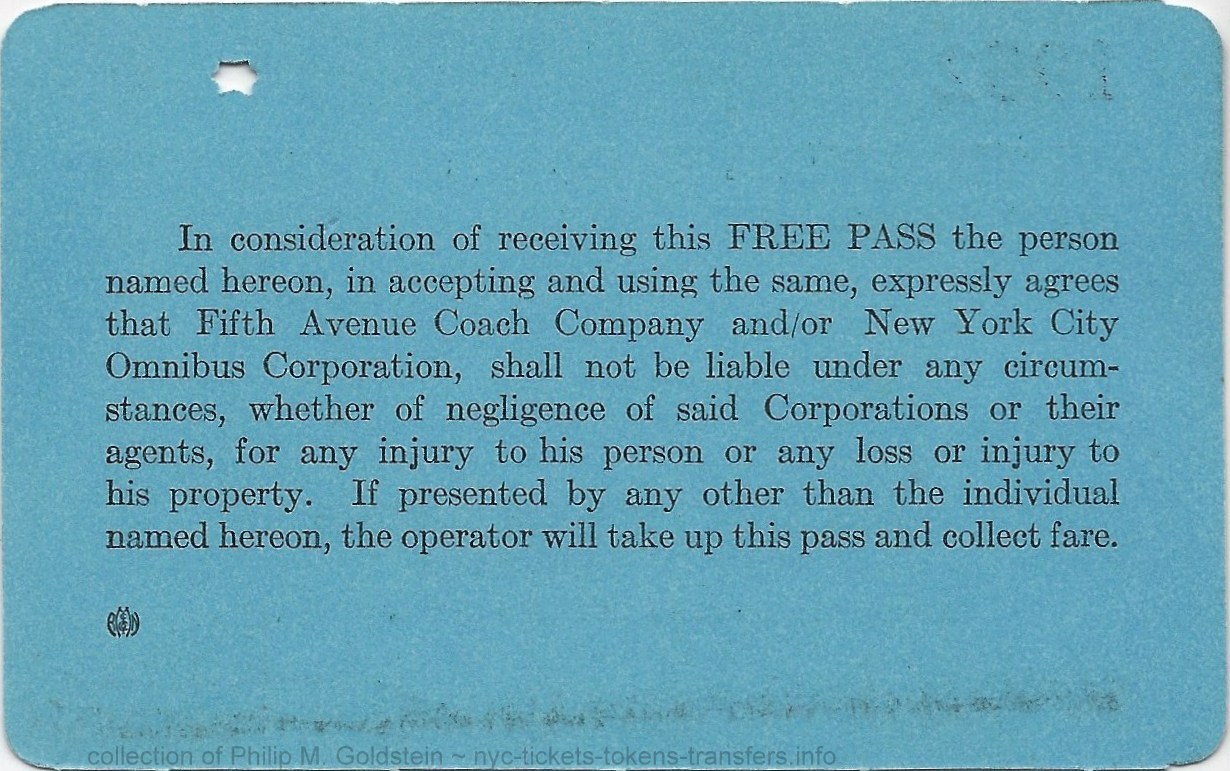 |
intentionally left blank | intentionally left blank | |||
| . . |
||||||
| Employees Wives Passes quarterly Rand McNally 4" x 2 1/2" (reduced 25%) |
||||||
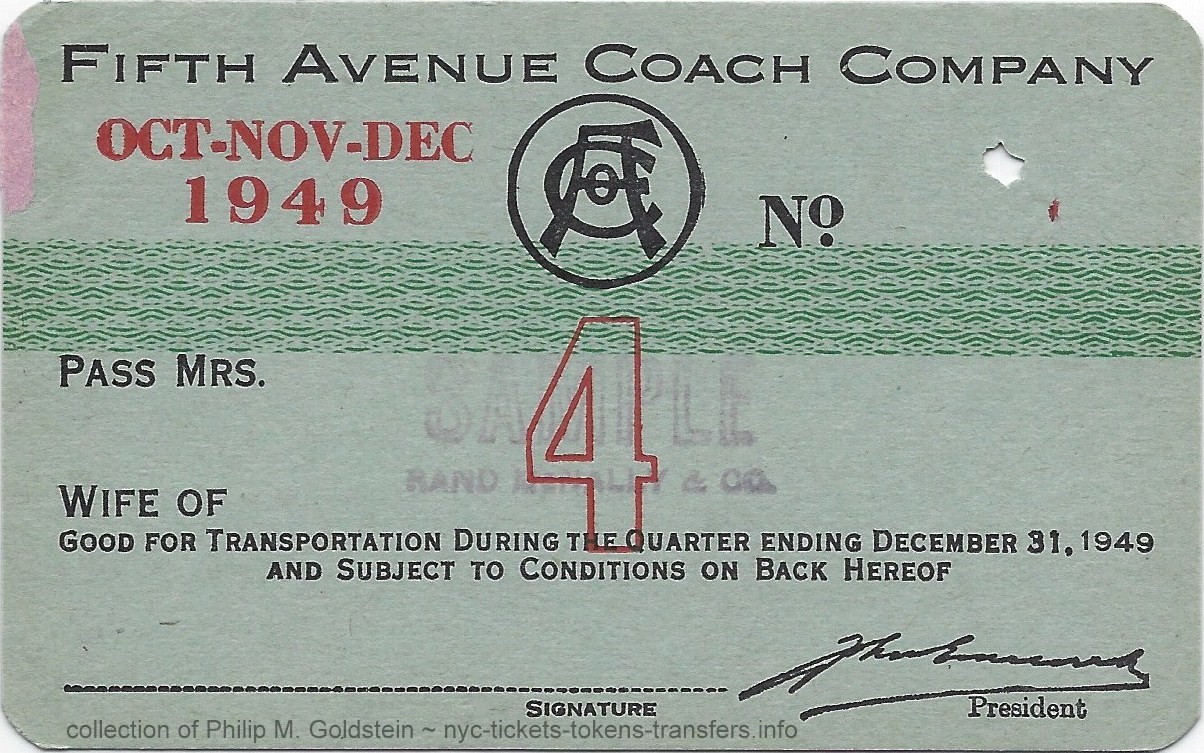 |
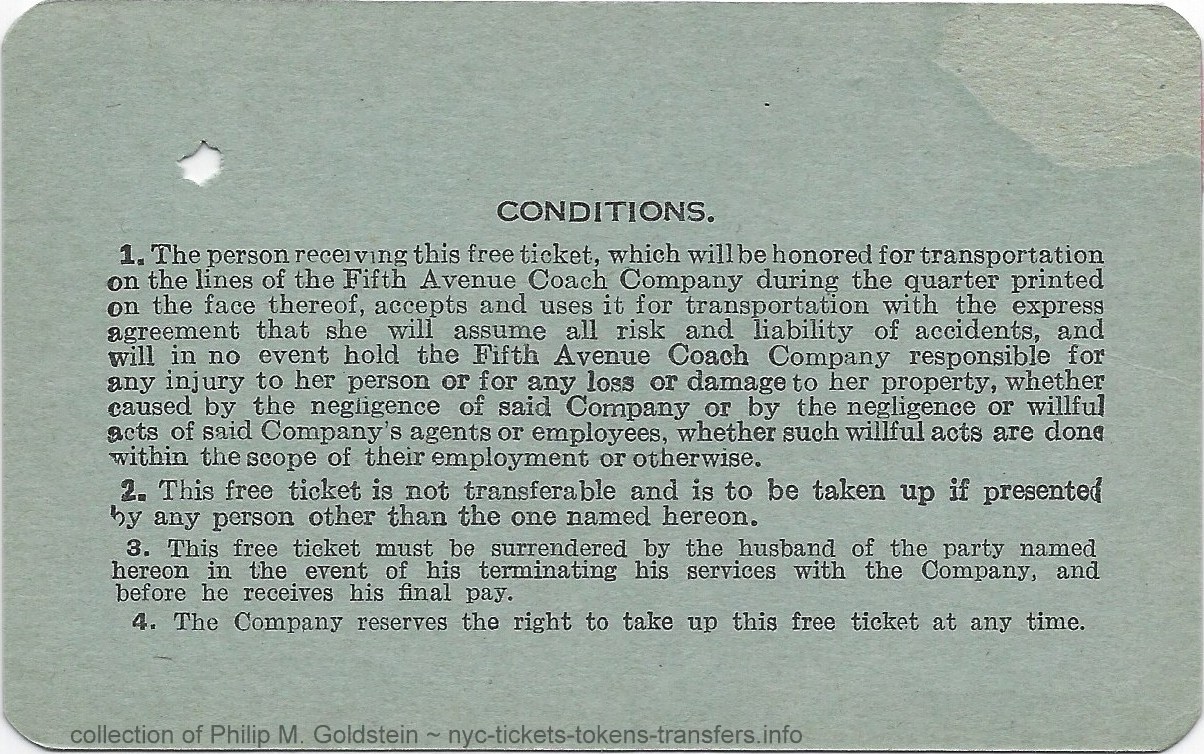 |
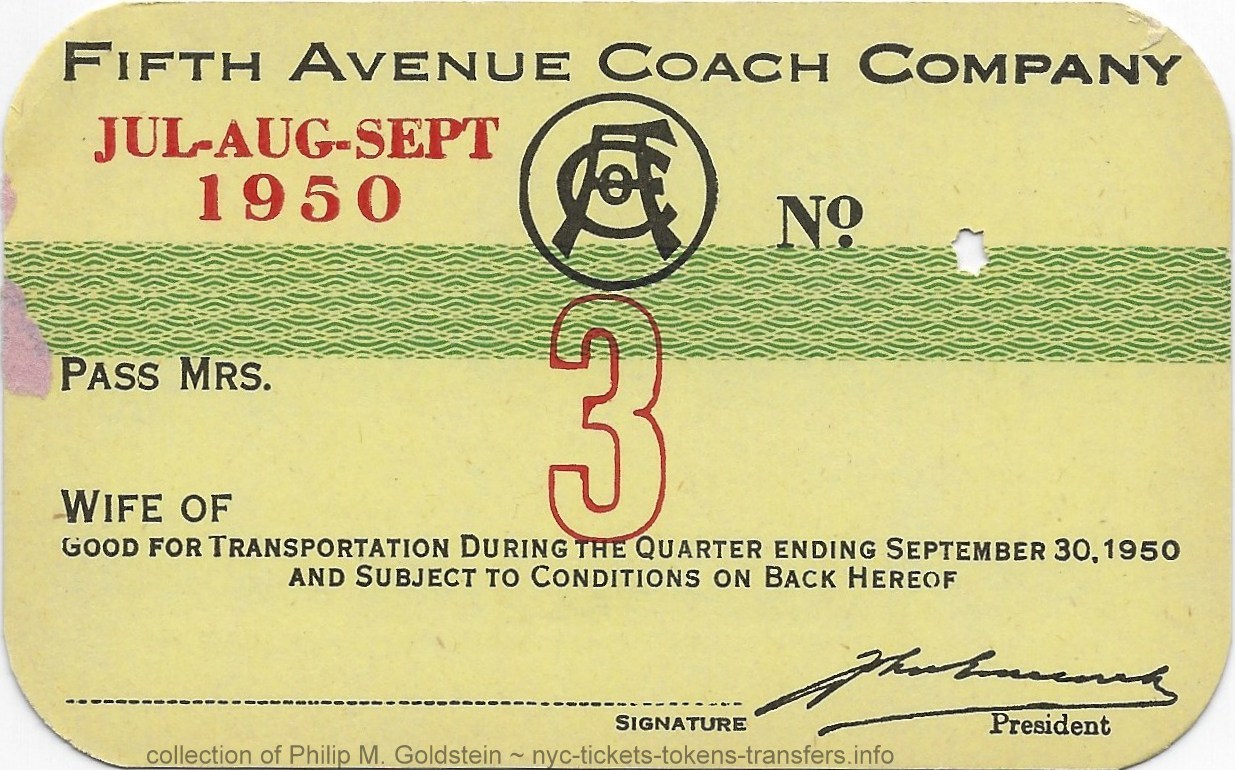 |
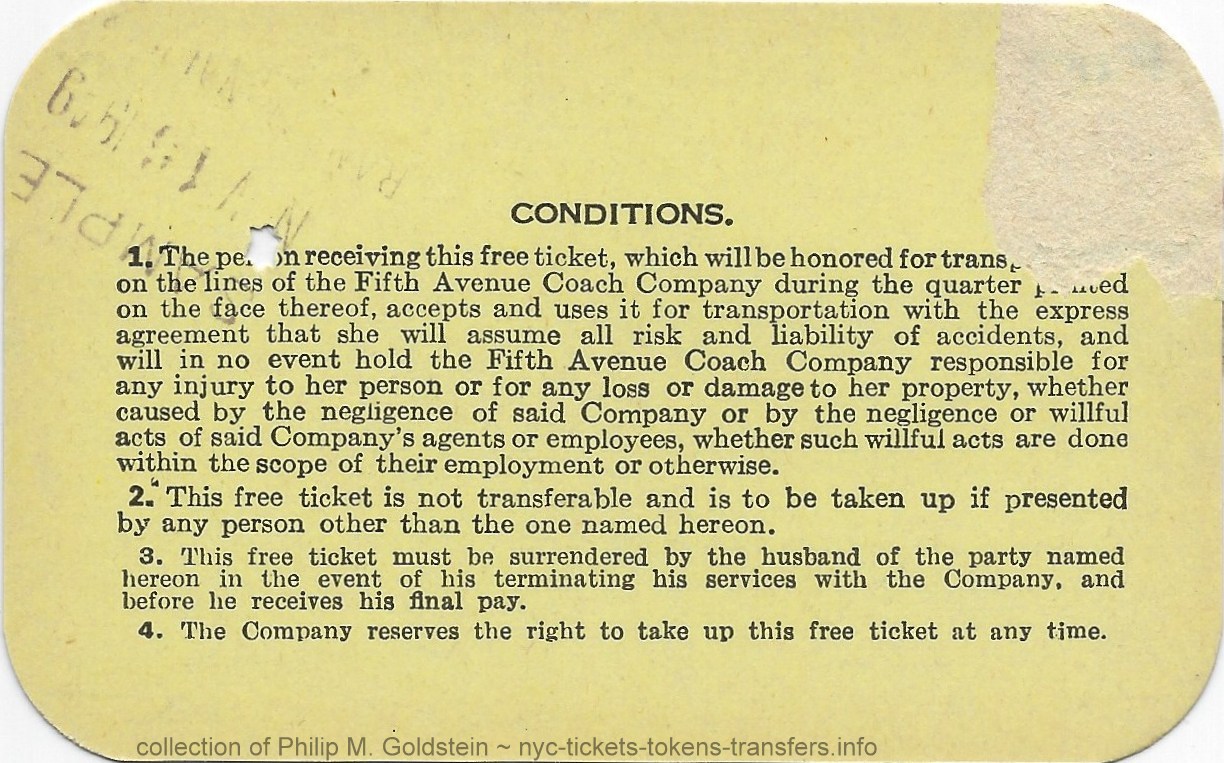 |
|||
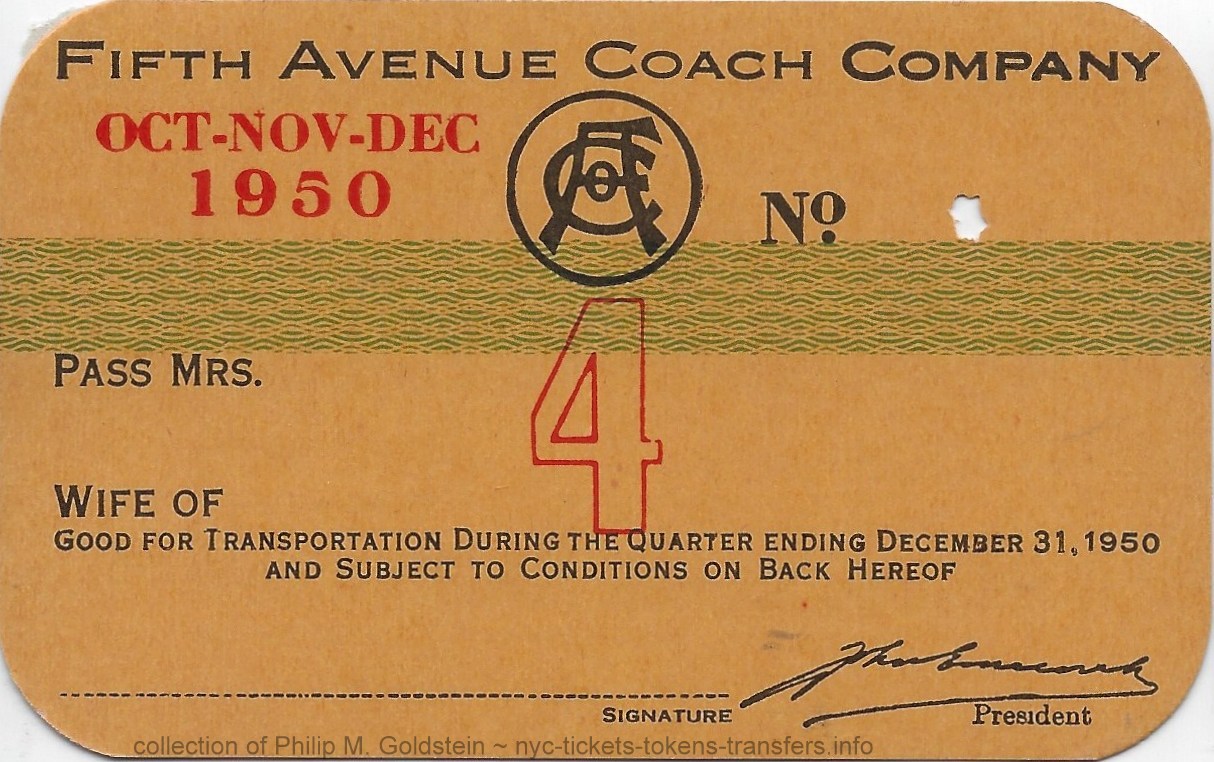 |
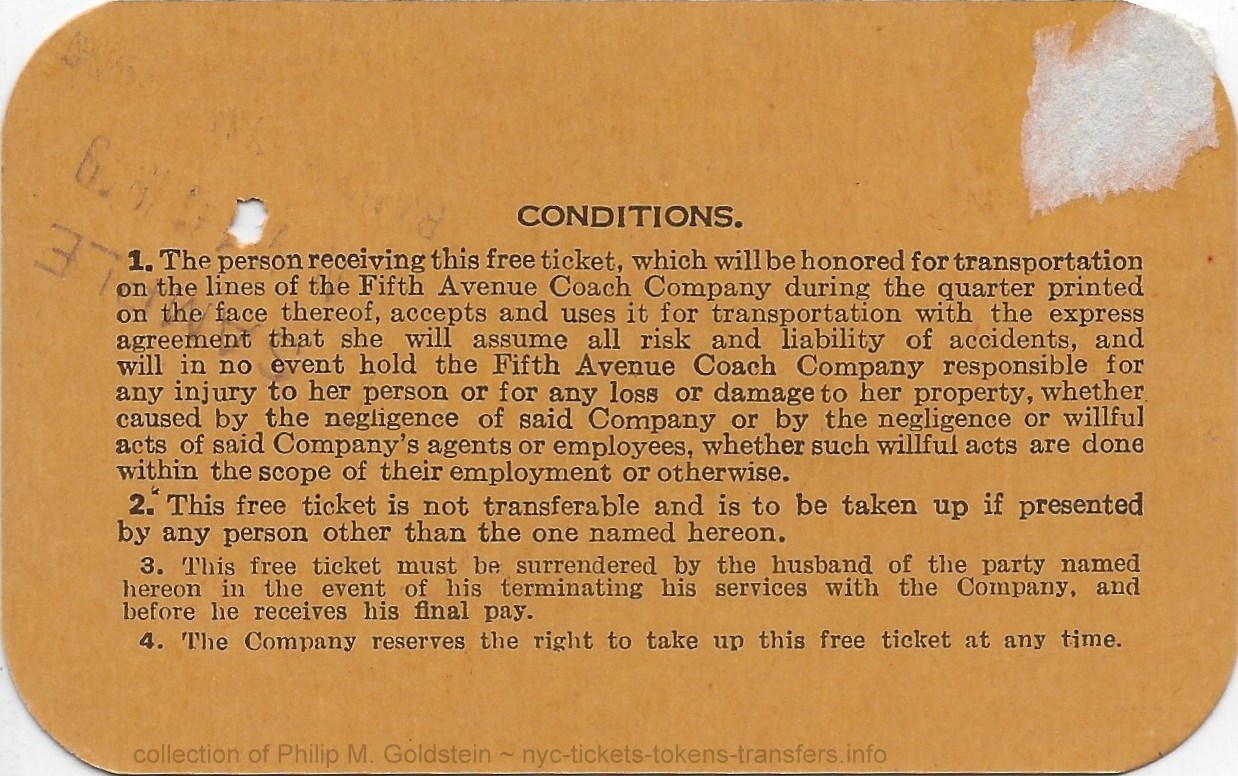 |
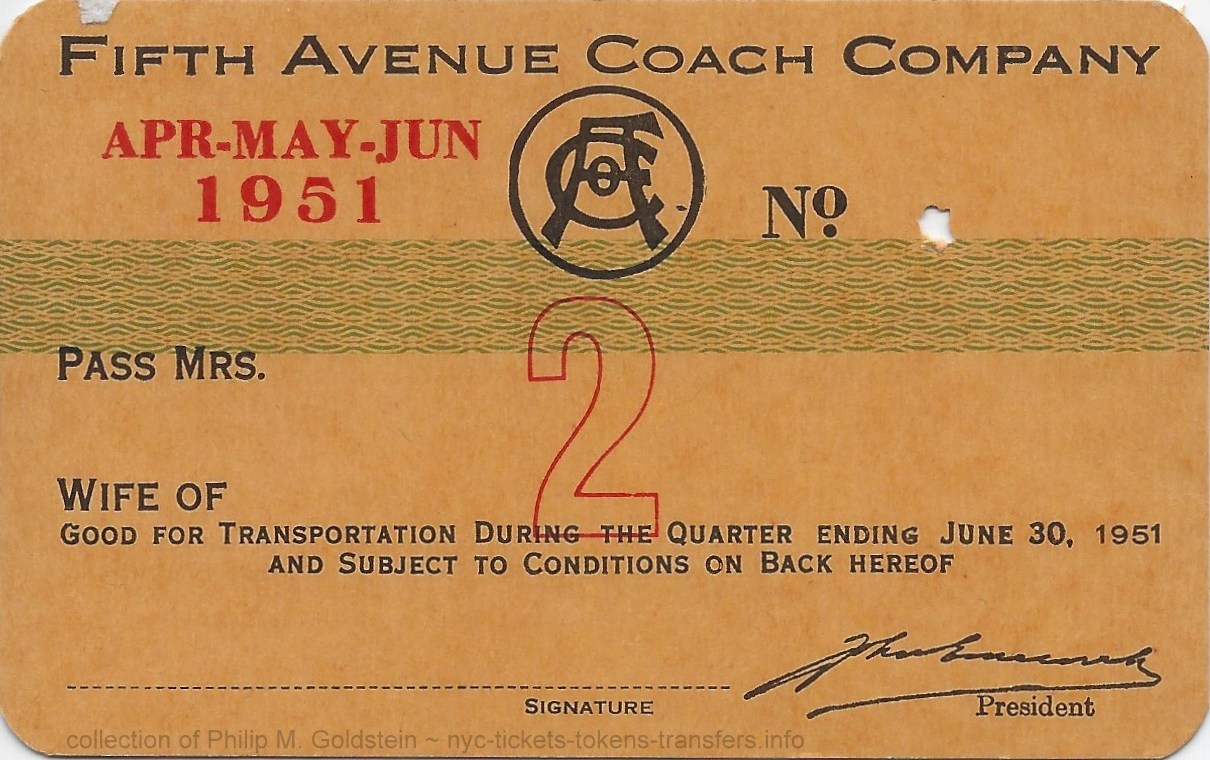 |
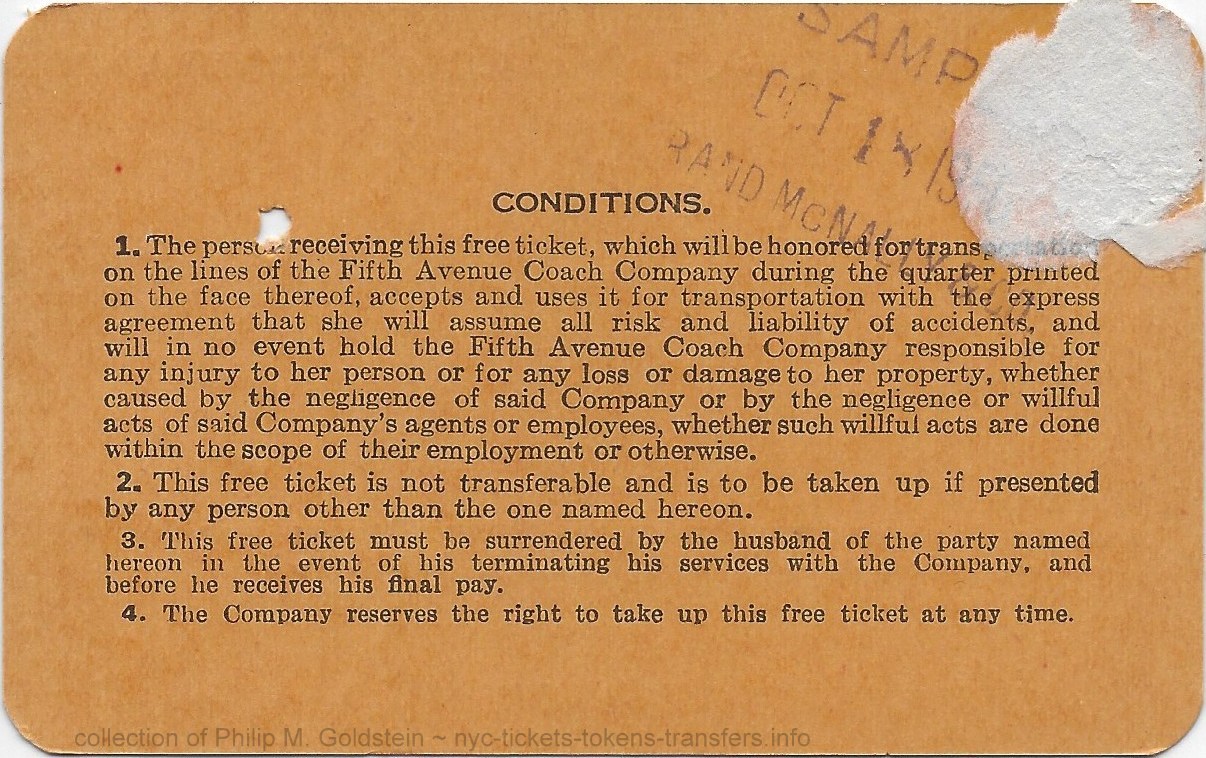 |
|||
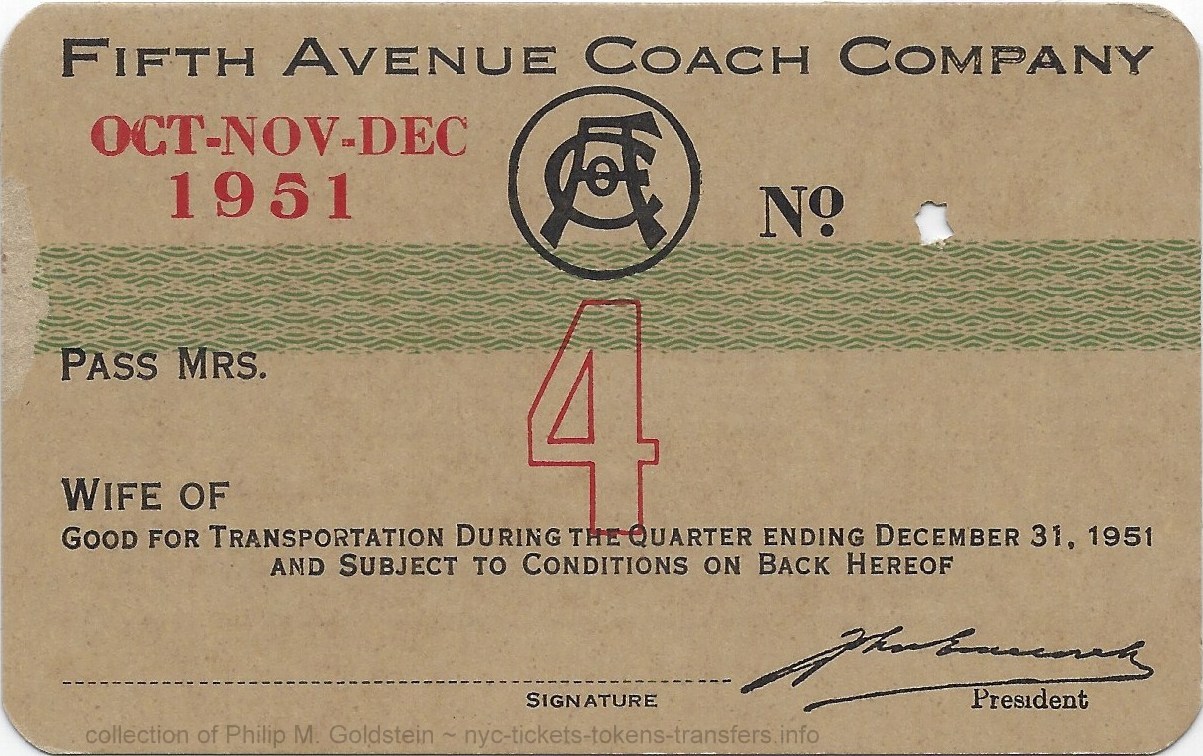 |
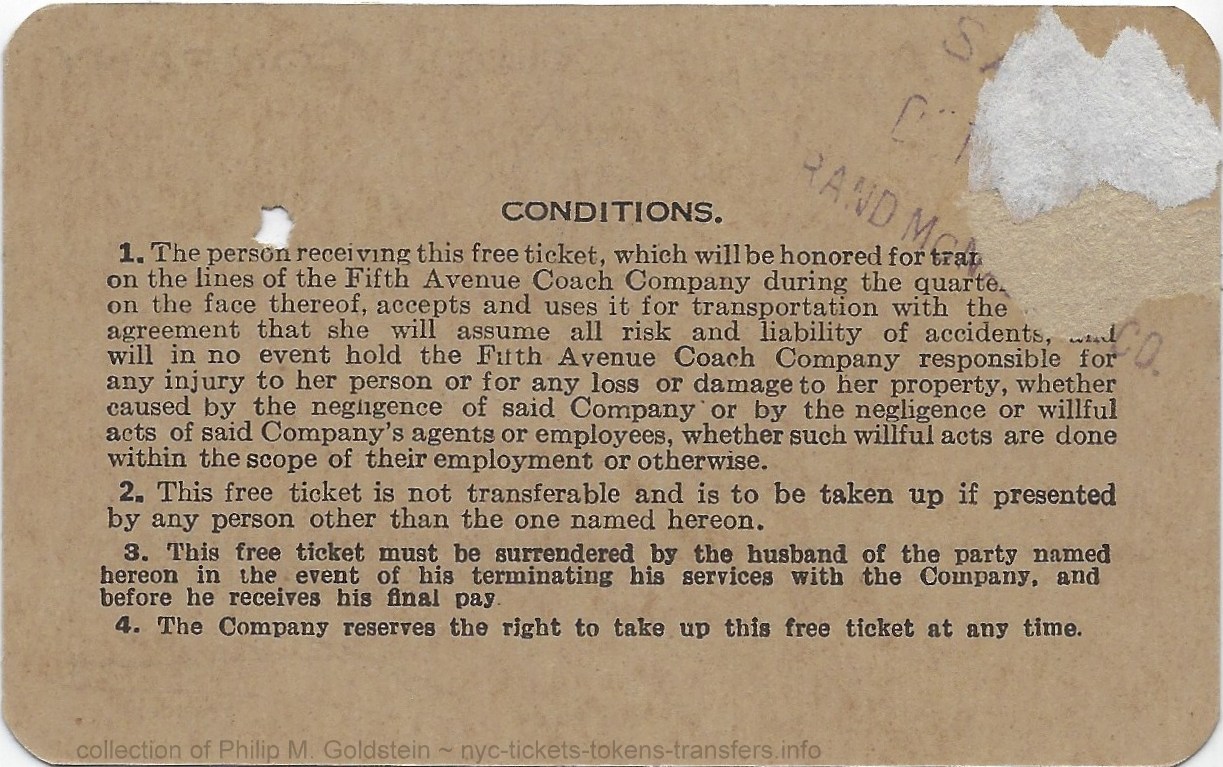 |
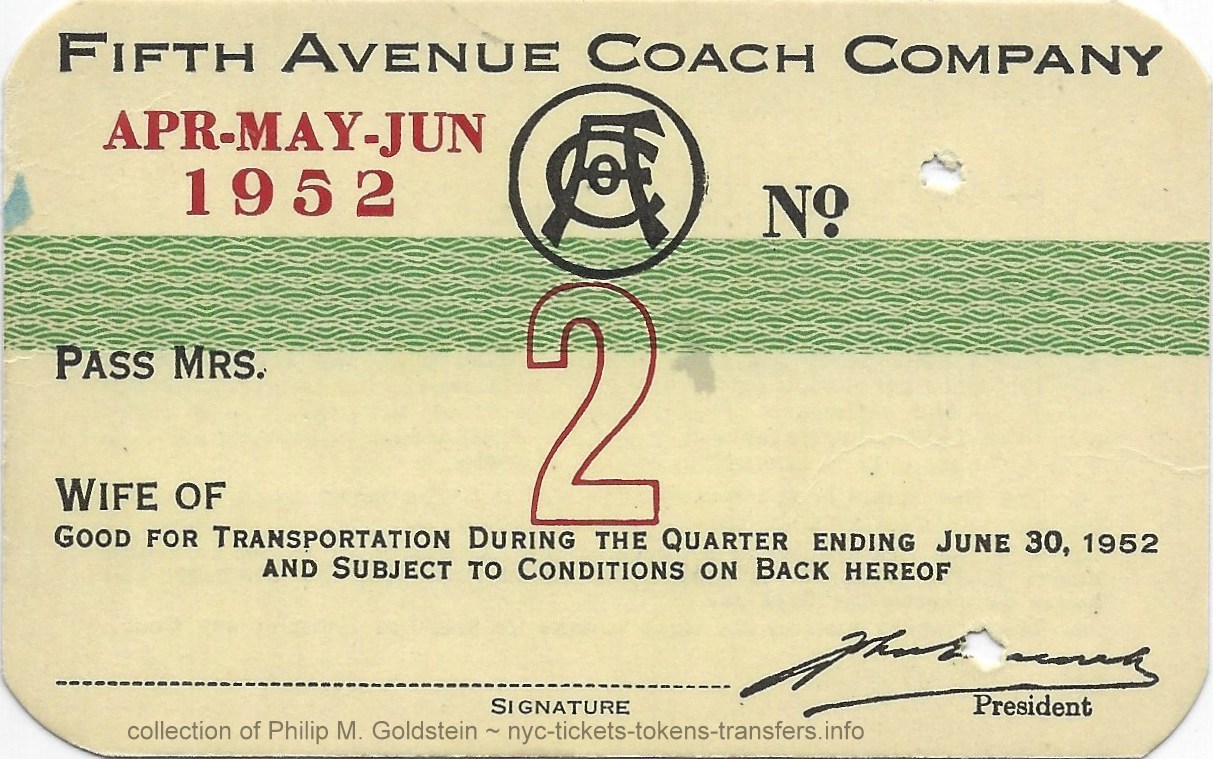 |
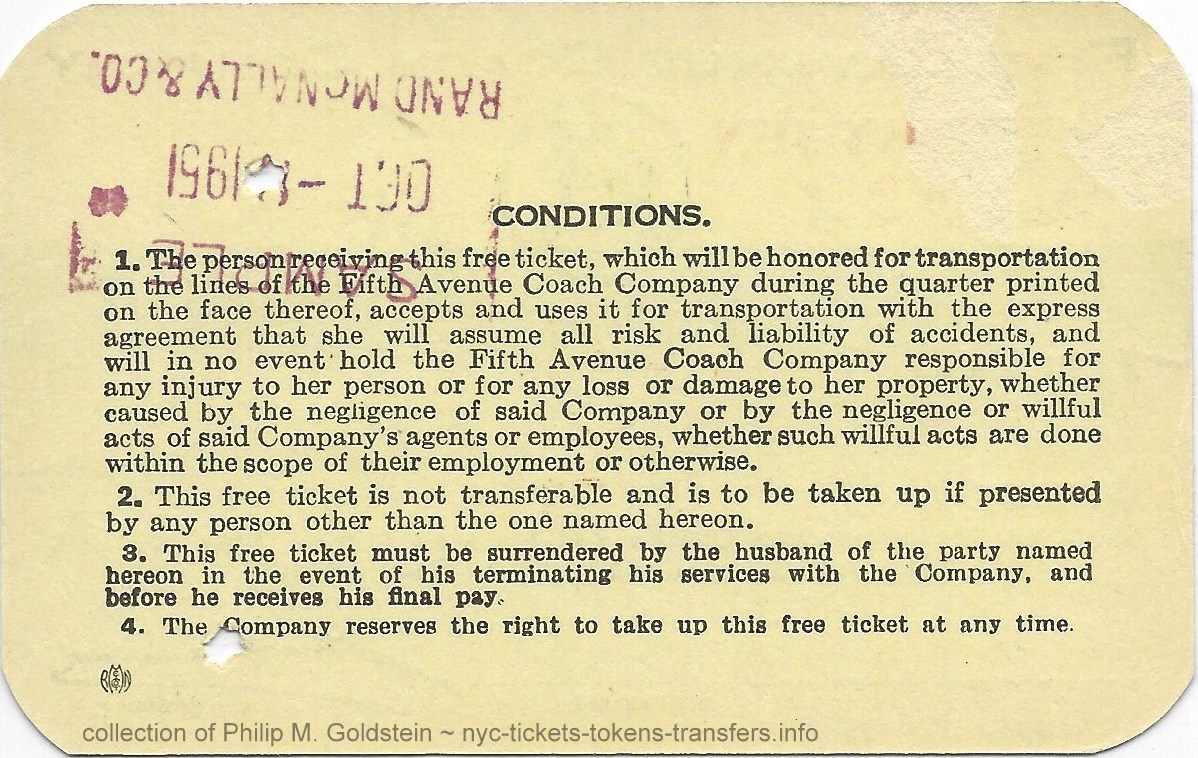 |
|||
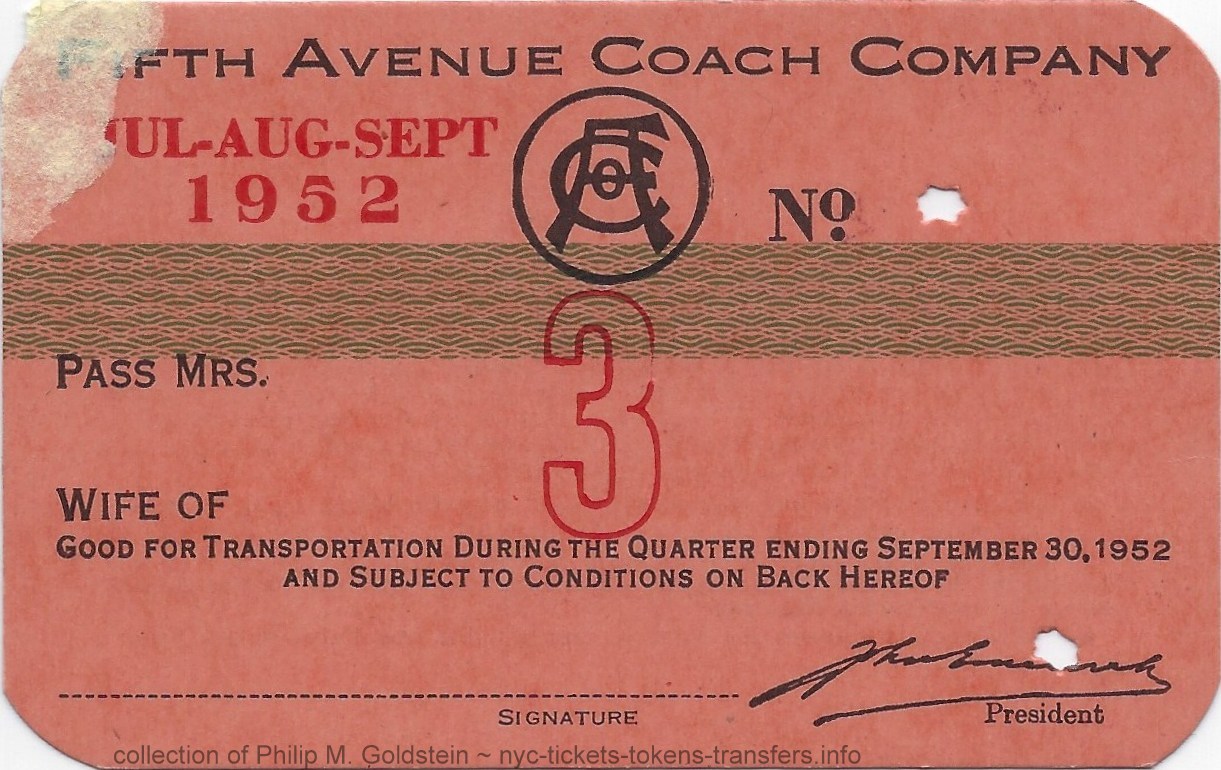 |
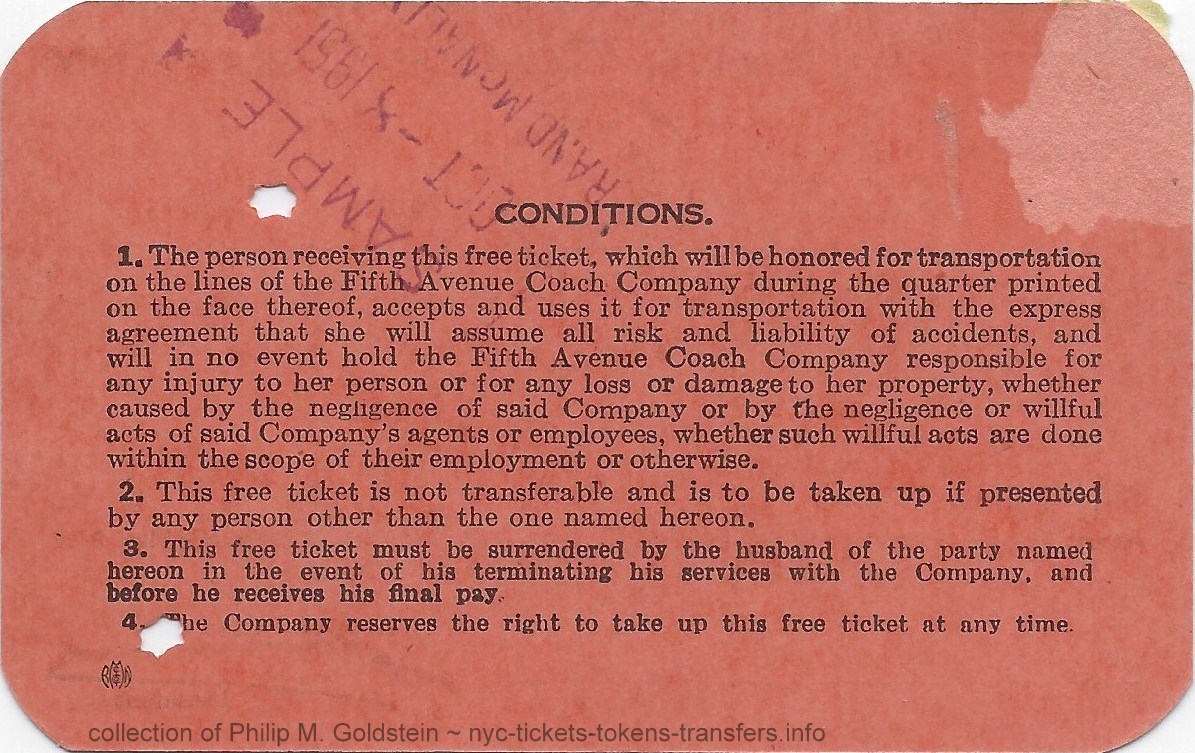 |
intentionally left blank | intentionally left blank | |||
| New York Omnibus Corp. The New York City Omnibus operated bus services in New York City between 1926 and 1962. It expanded in 1935 and 1936 with new bus routes to replace the New York Railways Corporation streetcars when these were dismantled. It further expanded with the acquisition of the Fifth Avenue Coach Company in 1954 for a total of 20 routes. NYCO was renamed the Fifth Avenue Coach Lines, Inc. in 1956; filed for bankruptcy in 1962, after which operations were taken over by the Manhattan and Bronx Surface Transit Operating Authority (MaBSTOA). |
||||
| annual Rand McNally 4" x 2 1/2" (reduced 25%) |
||||
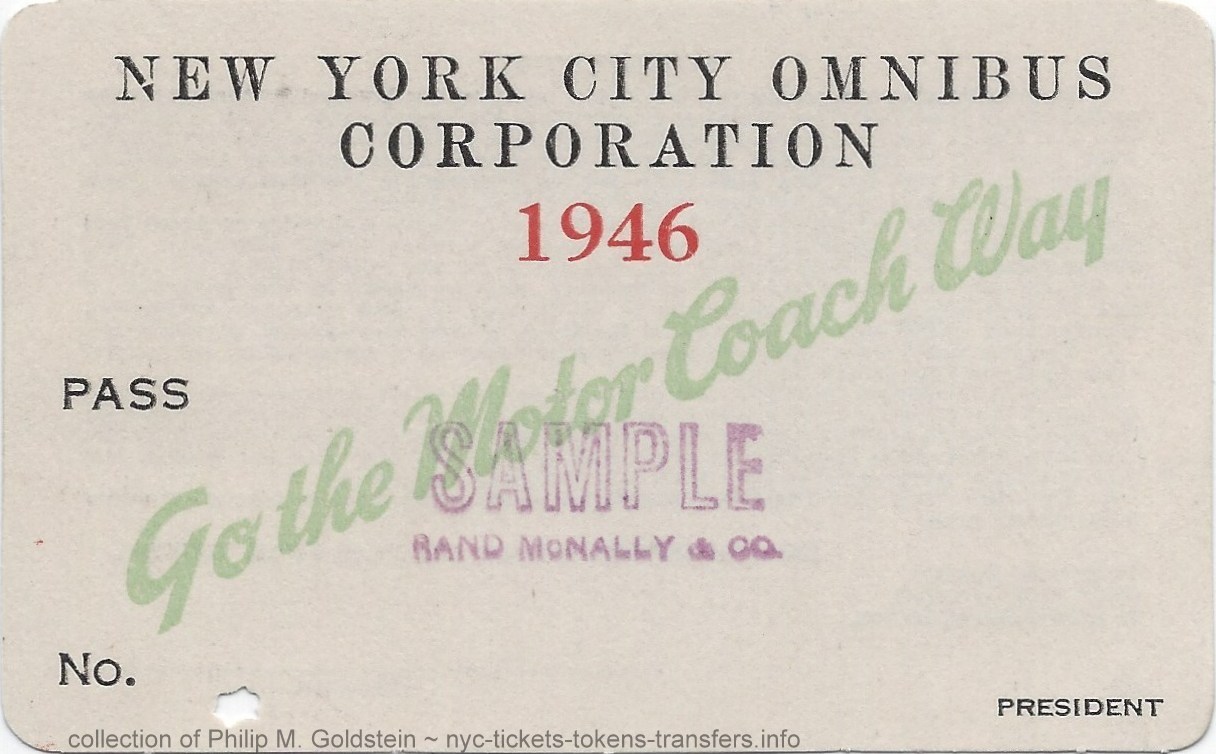 |
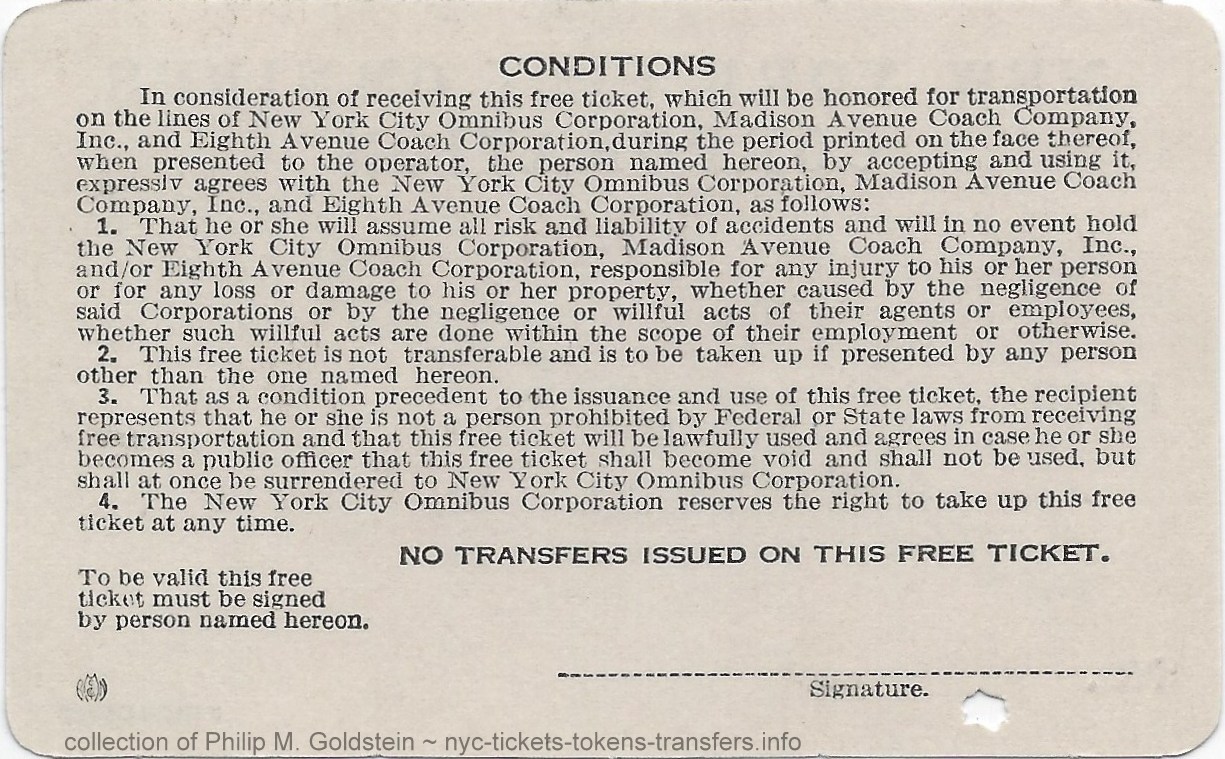 |
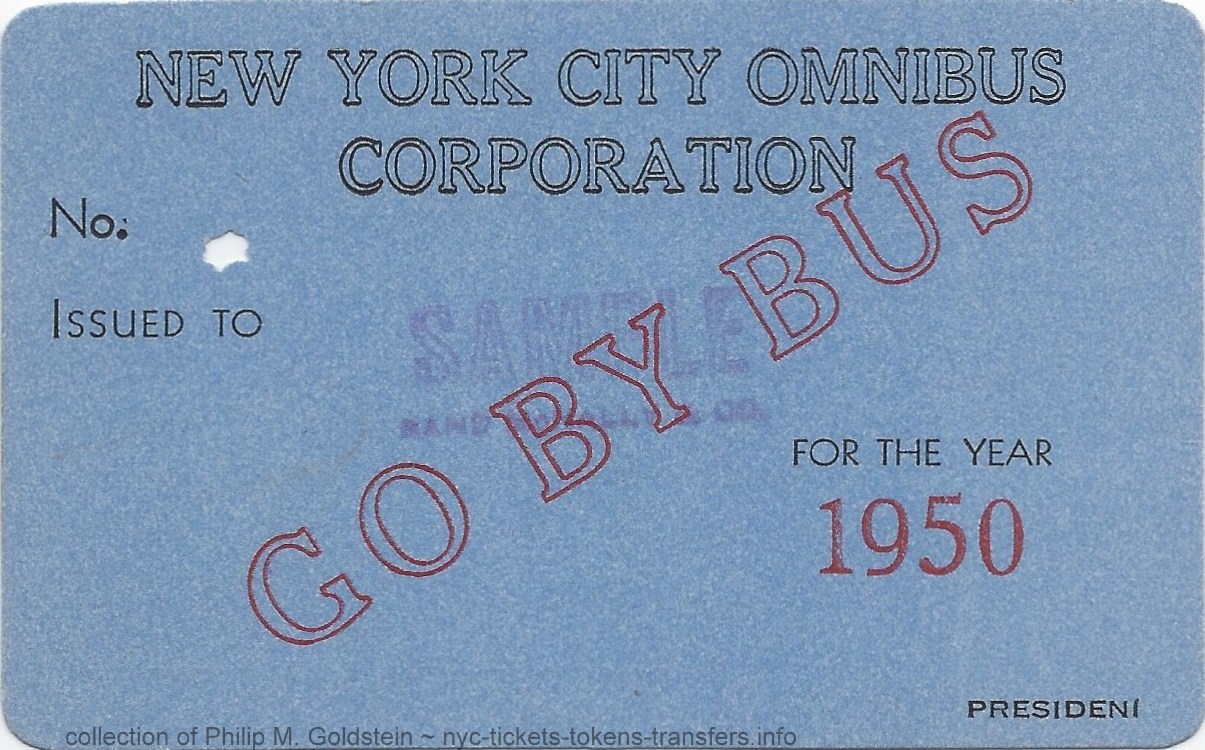 |
 |
|
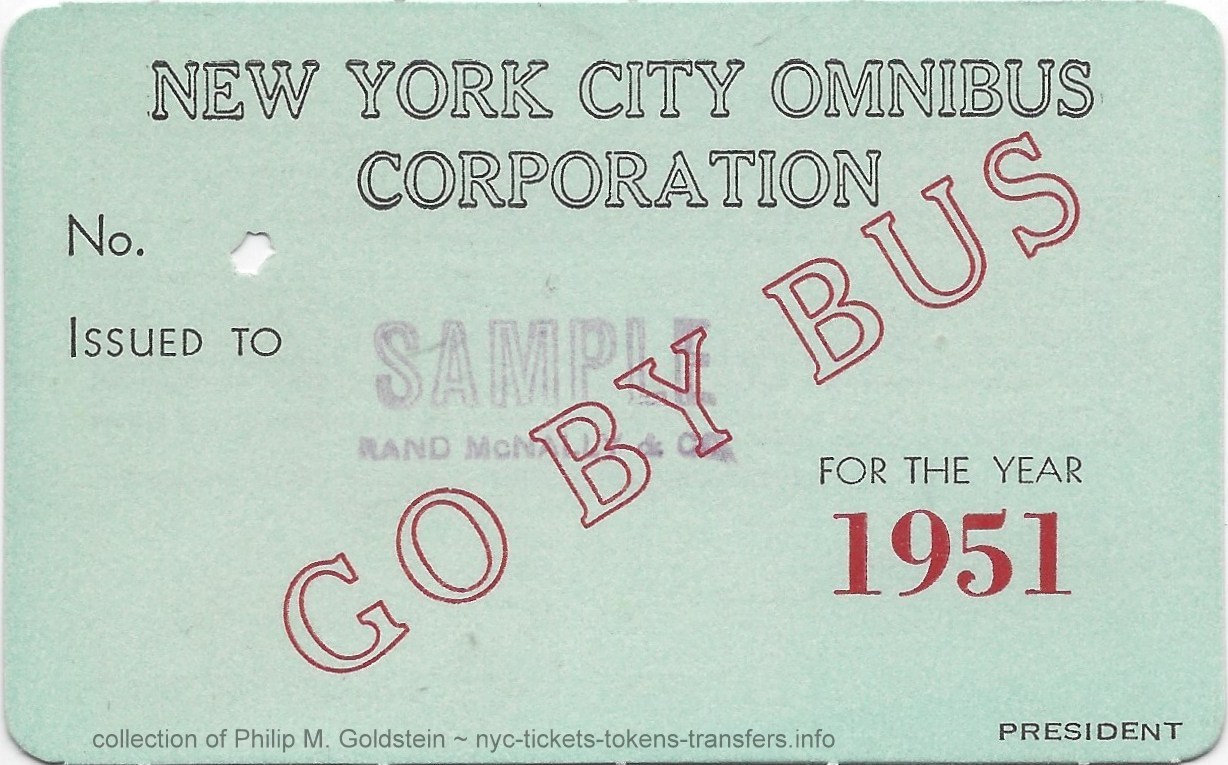 |
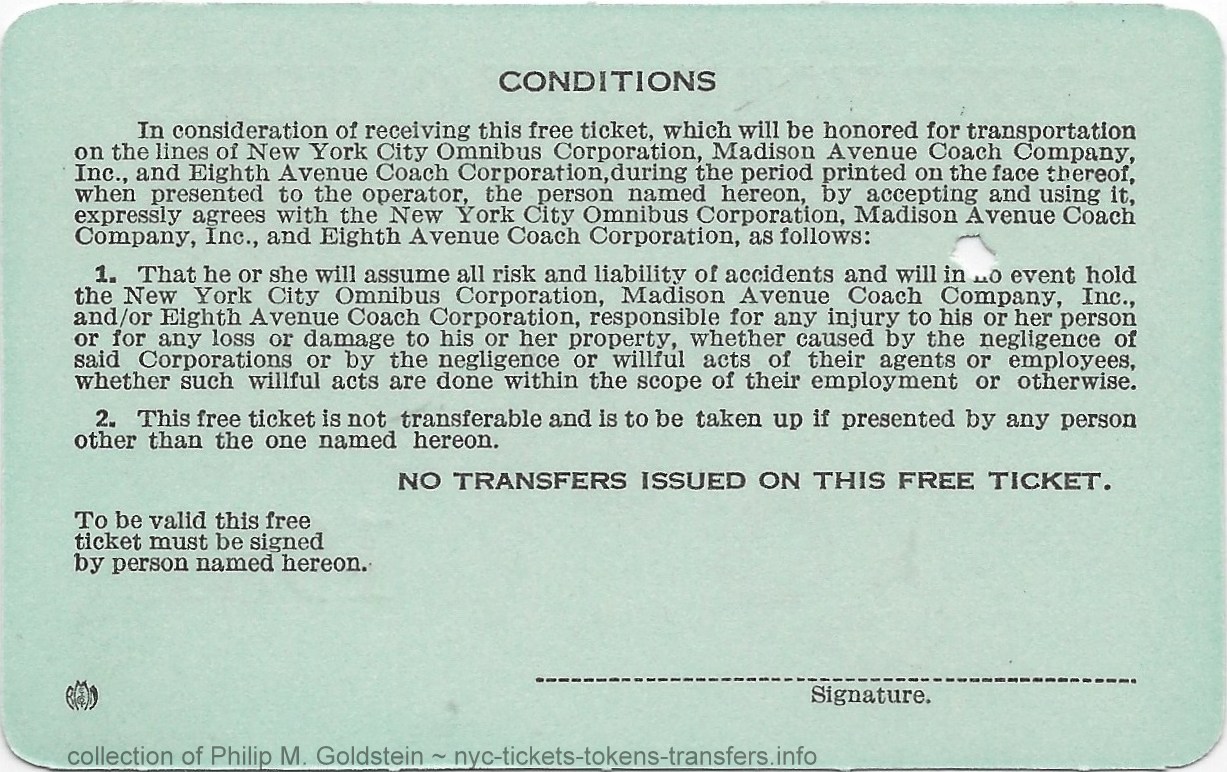 |
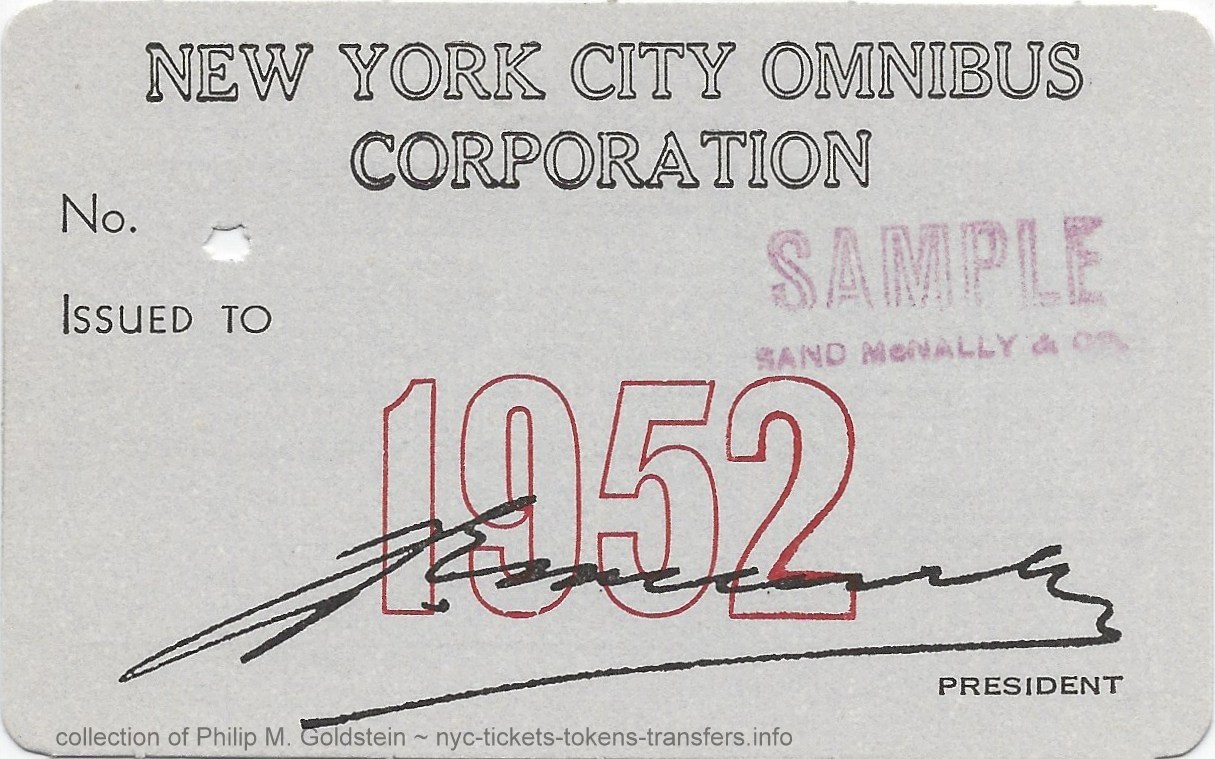 |
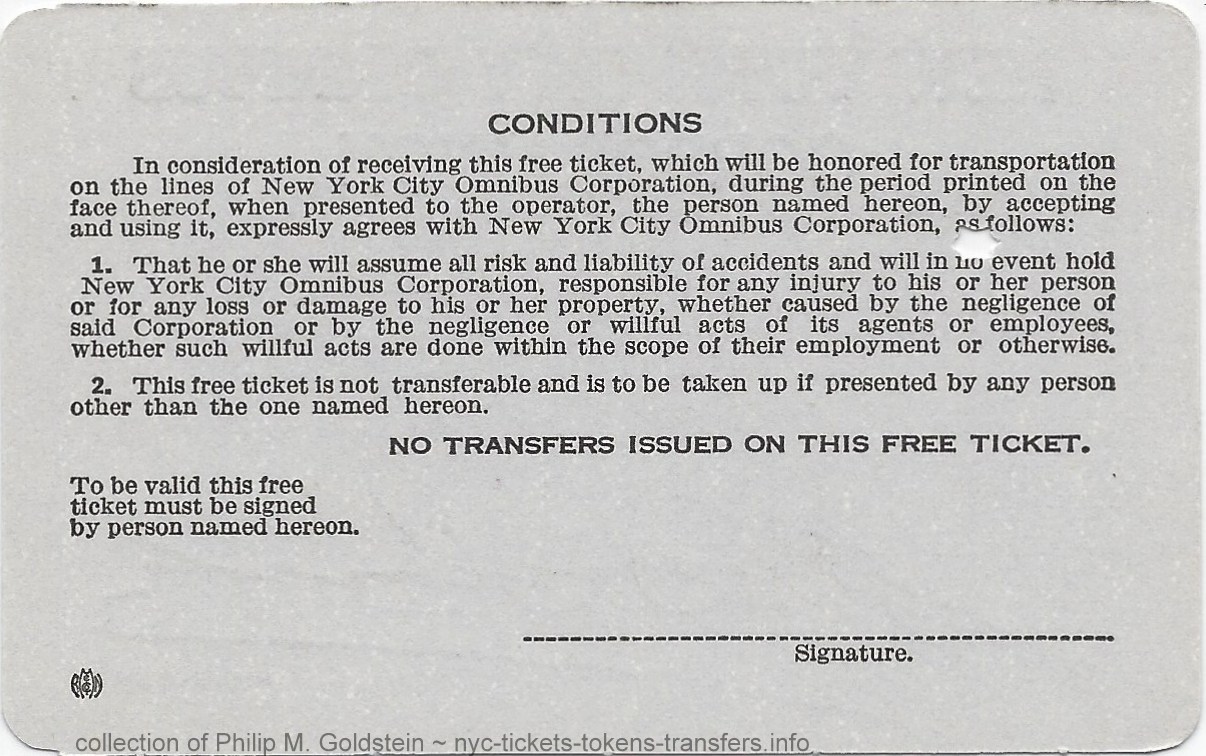 |
|
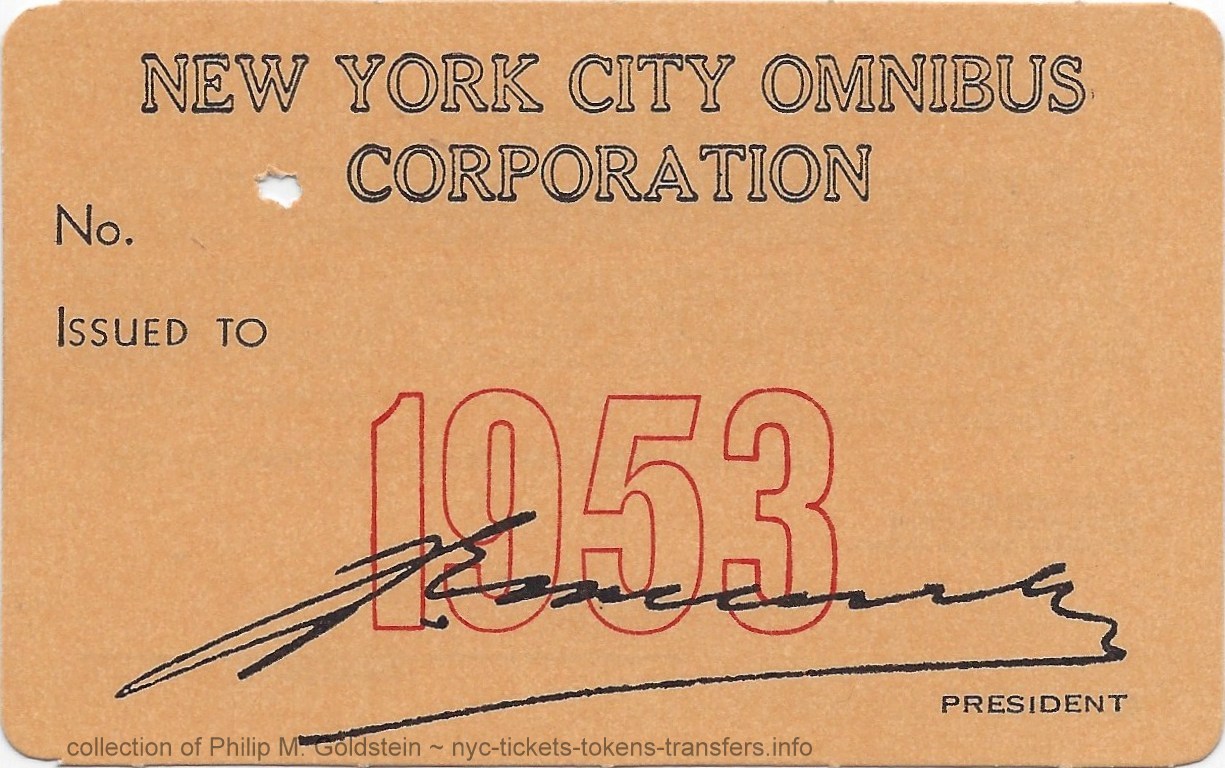 |
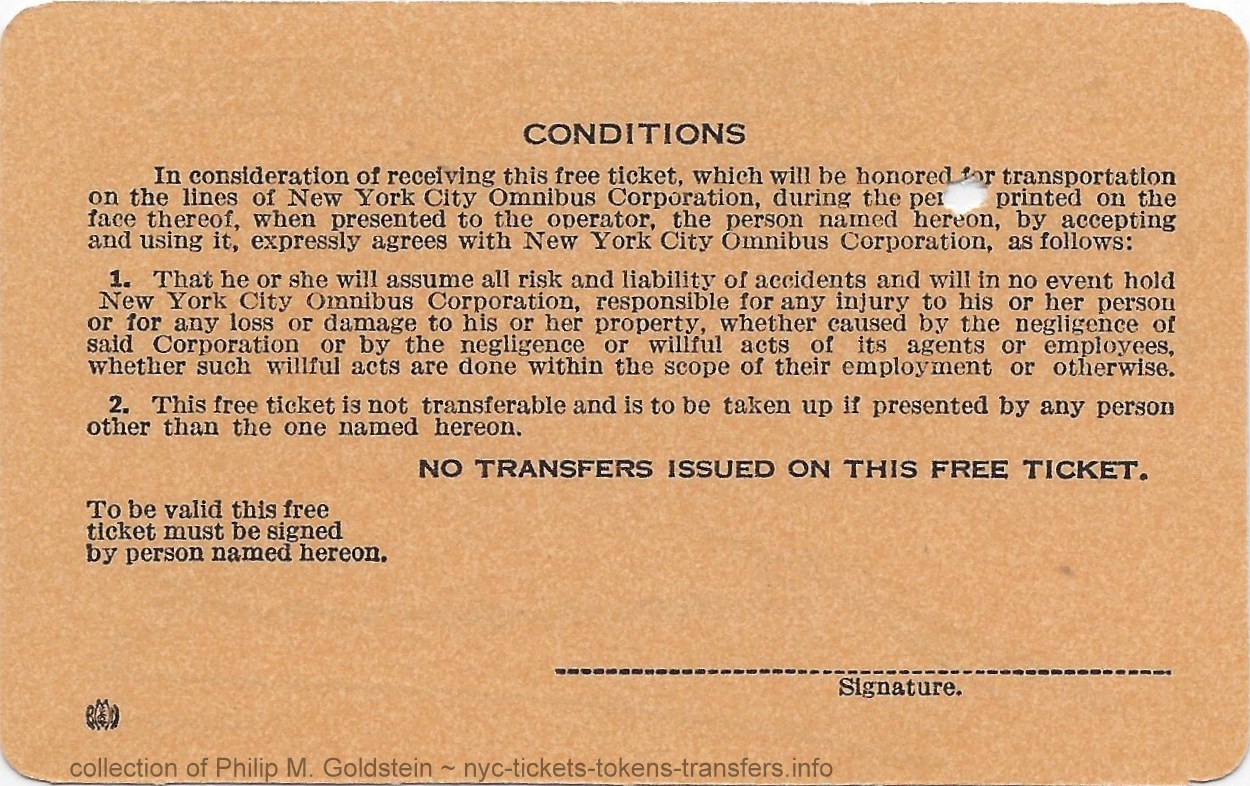 |
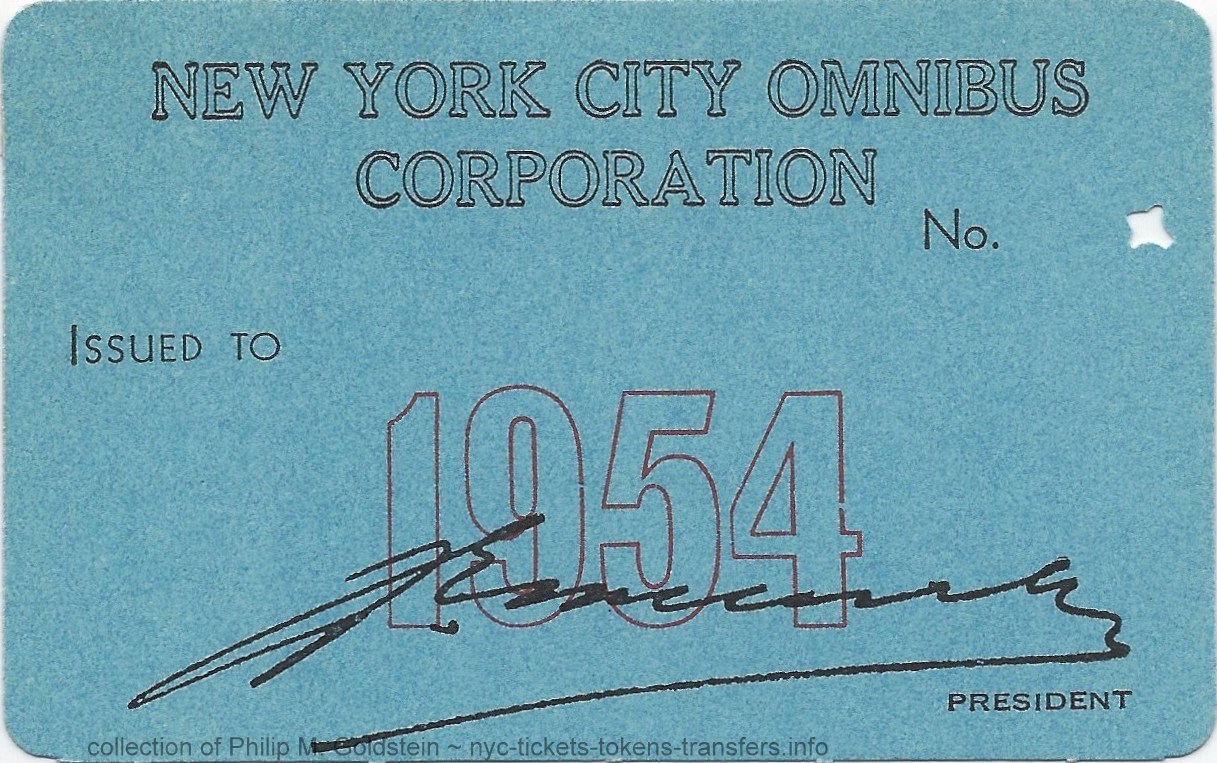 |
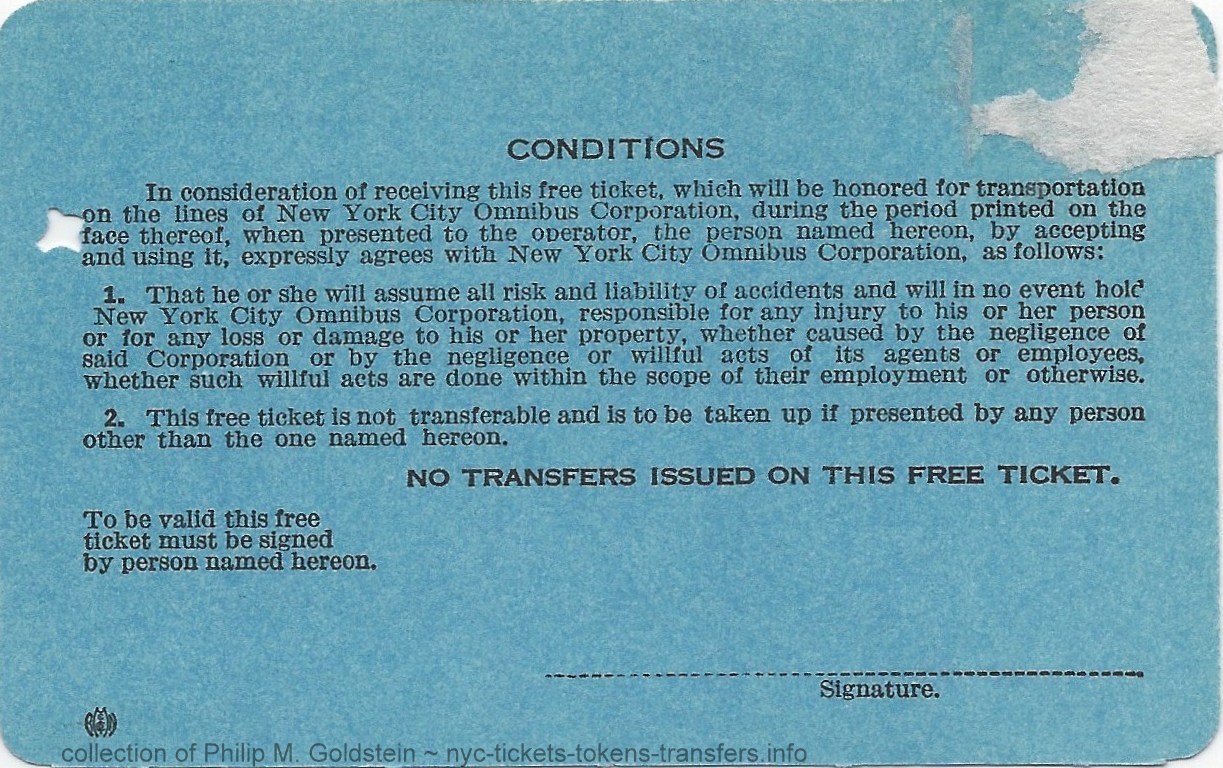 |
|
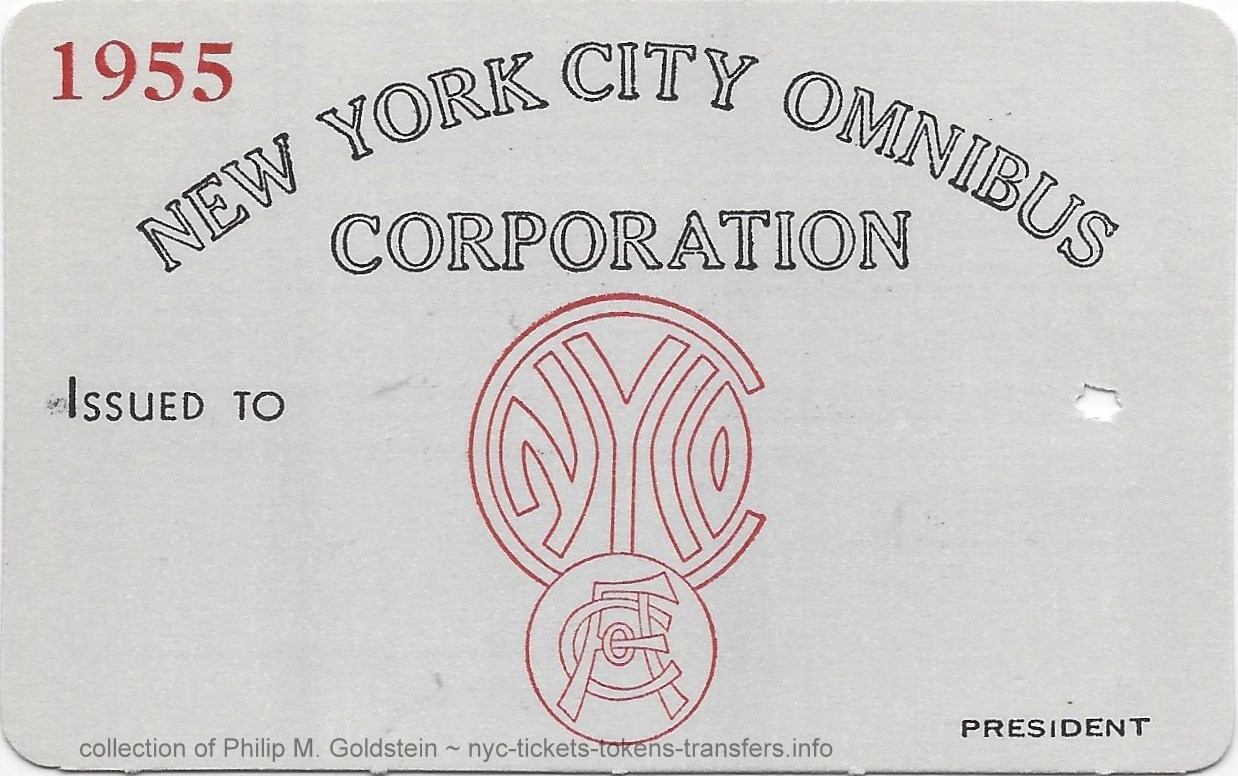 |
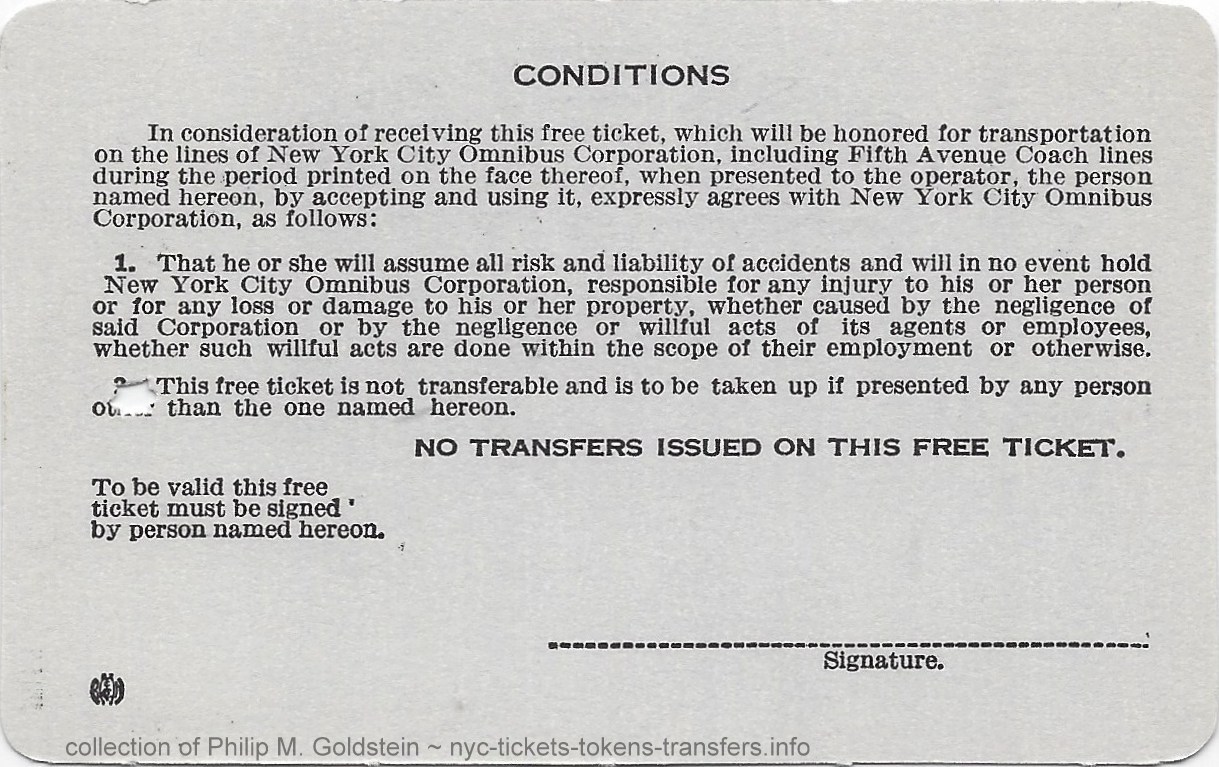 |
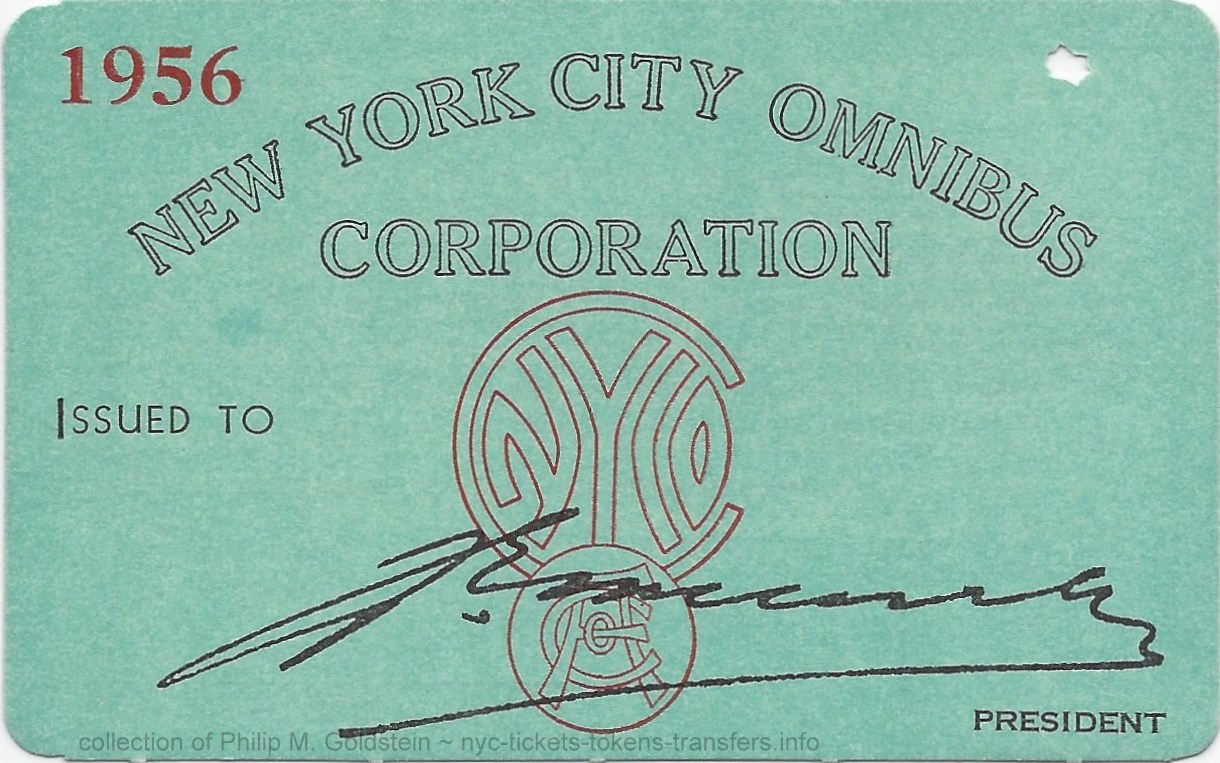 |
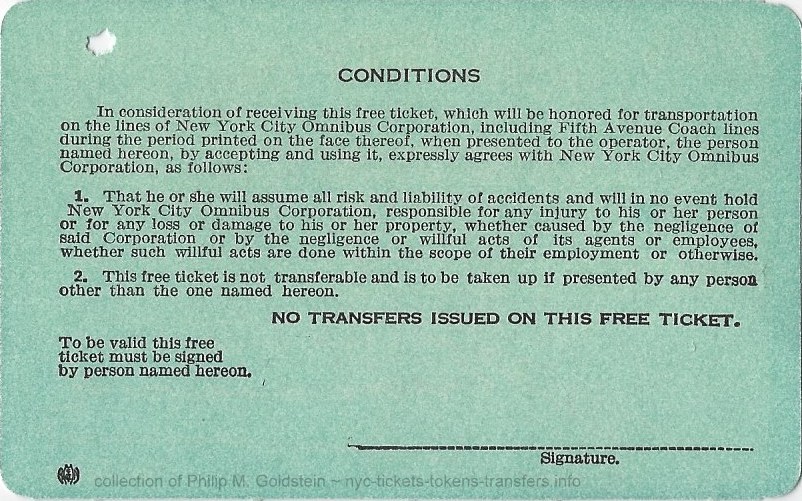 |
|
| . . |
||||
| Police Department - City of New York annual Rand McNally 4" x 2 1/2" (reduced 25%) |
||||
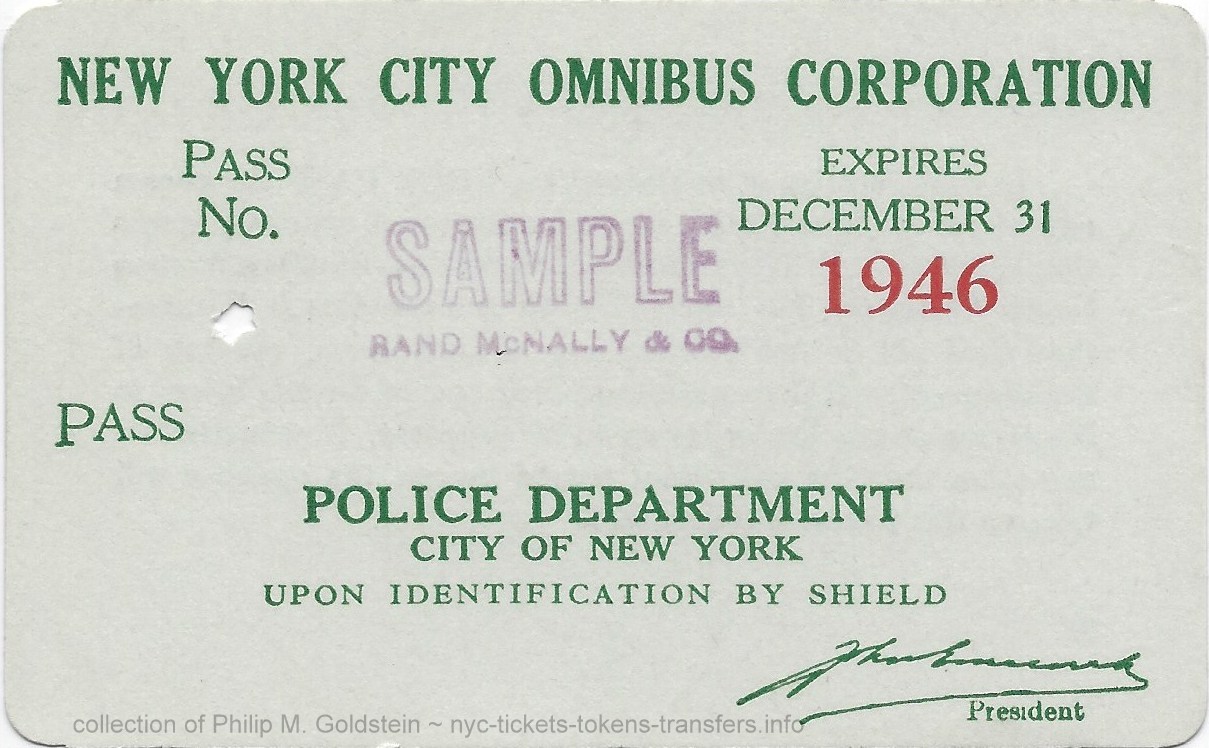 |
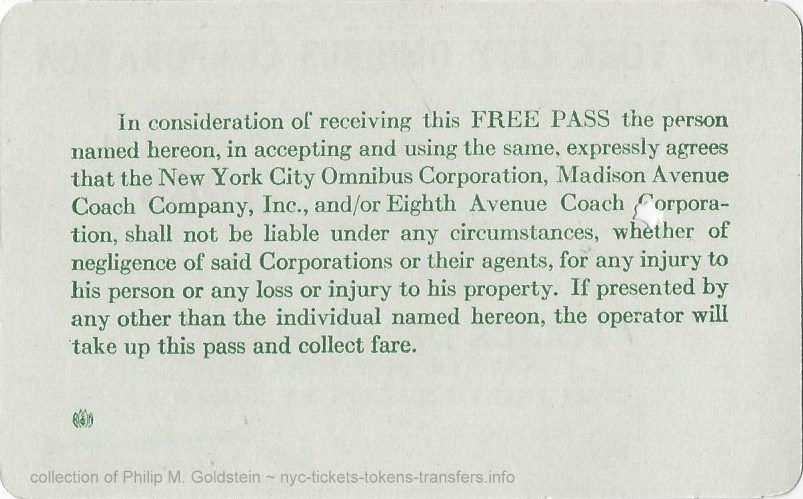 |
|||
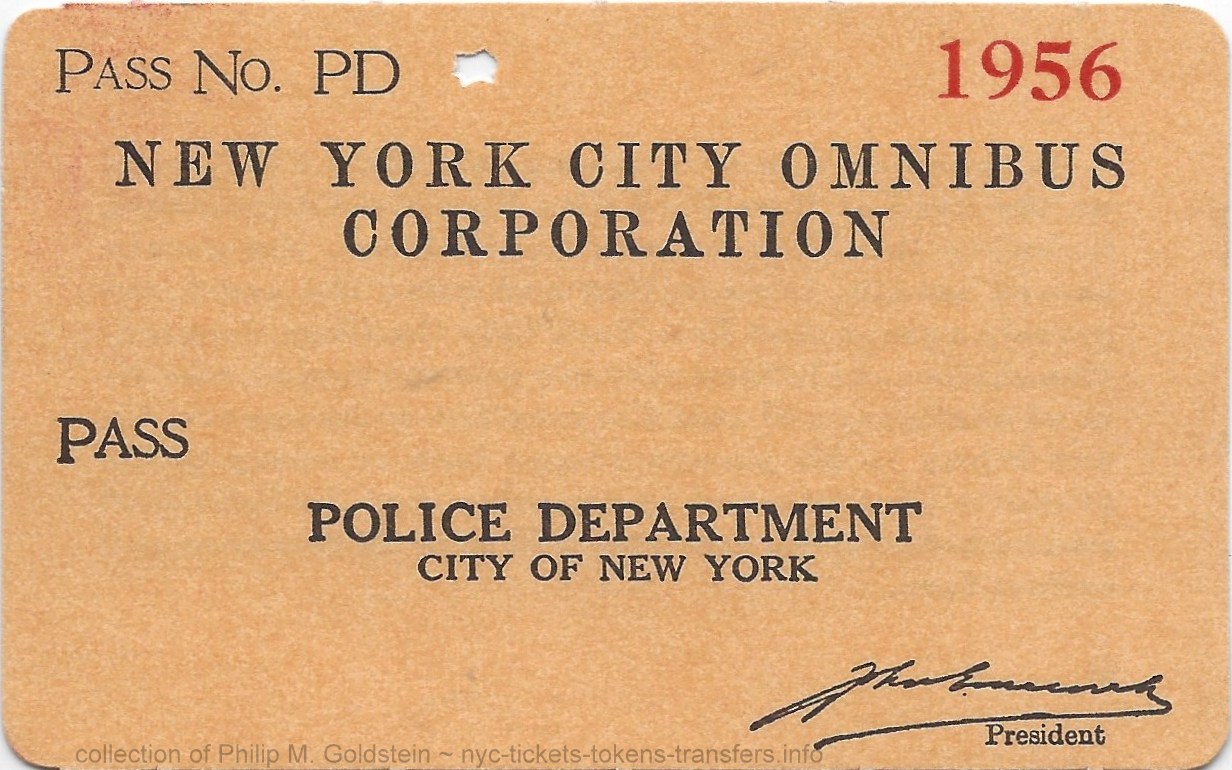 |
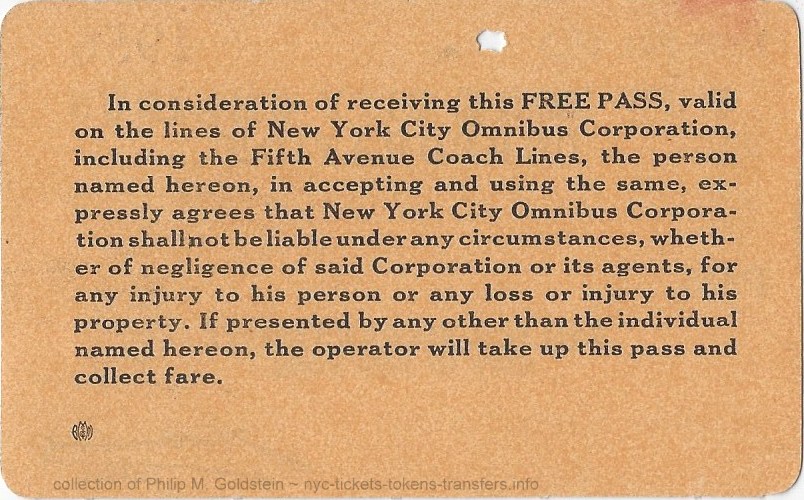 |
intentionally left blank | intentionally left blank | |
| . . |
||||
| Employees Identification quarterly format Rand McNally 4" x 2 1/2" (reduced 25%) |
||||
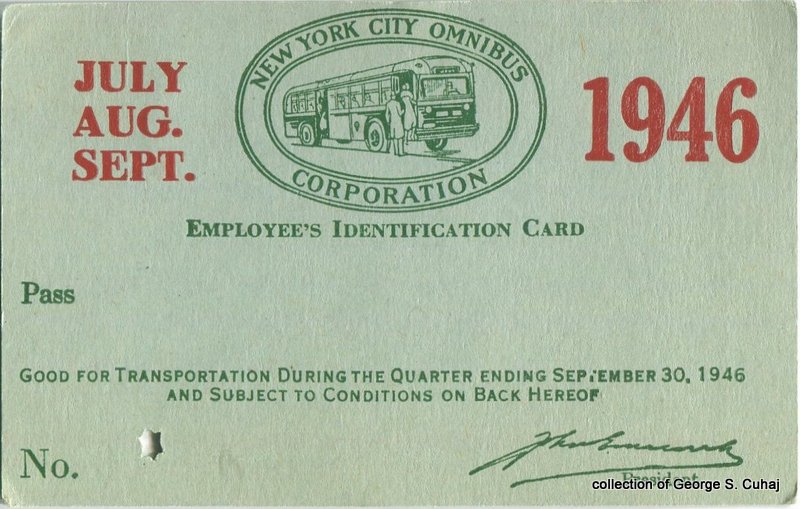 |
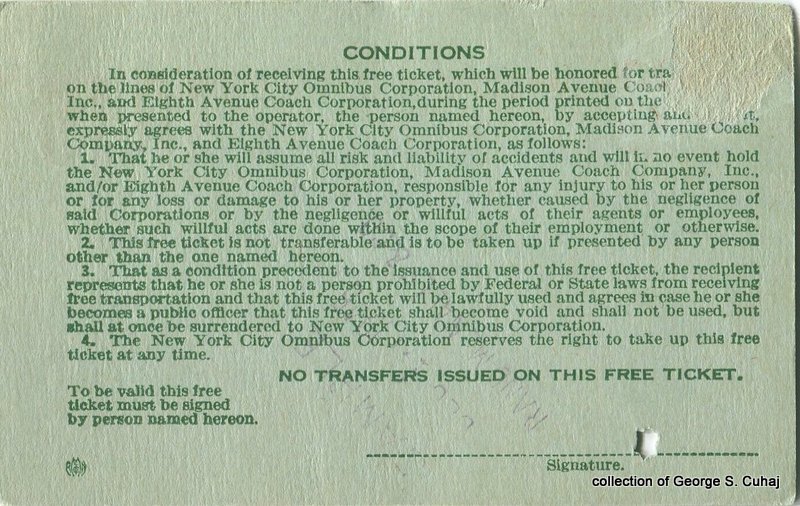 |
intentionally left blank | intentionally left blank | |
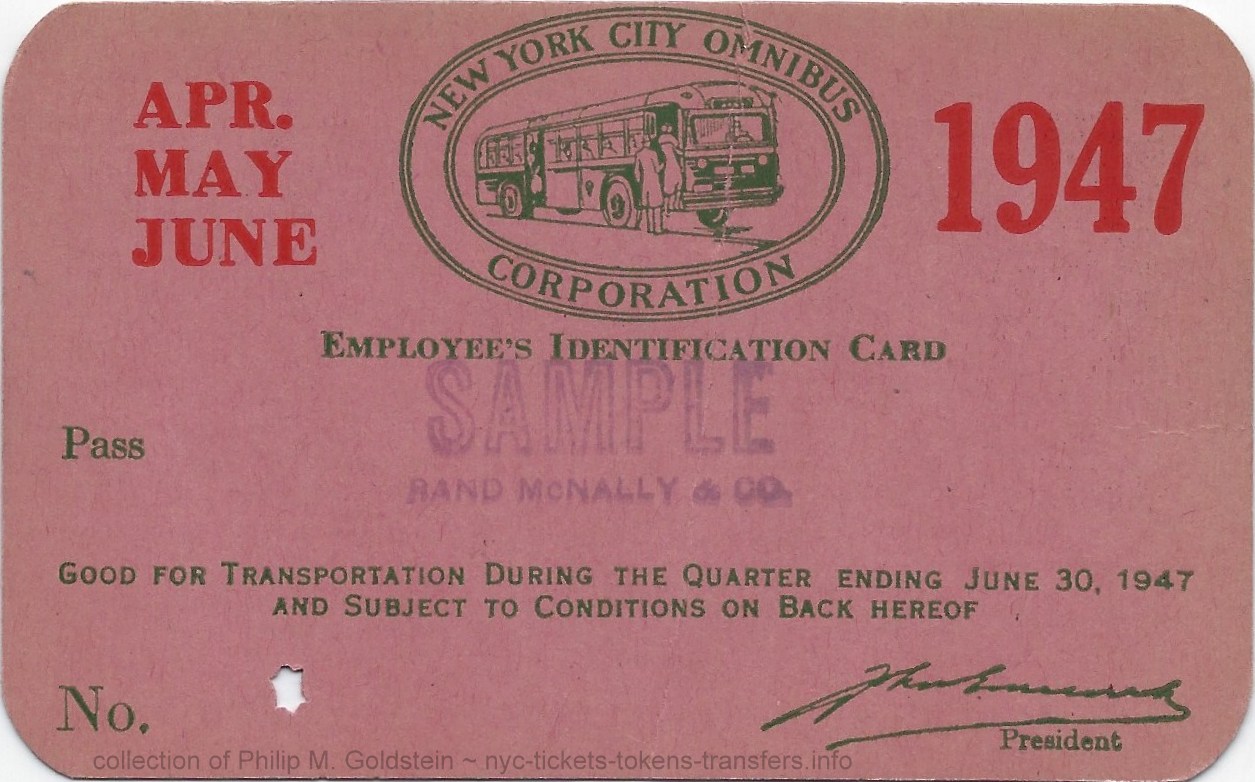 |
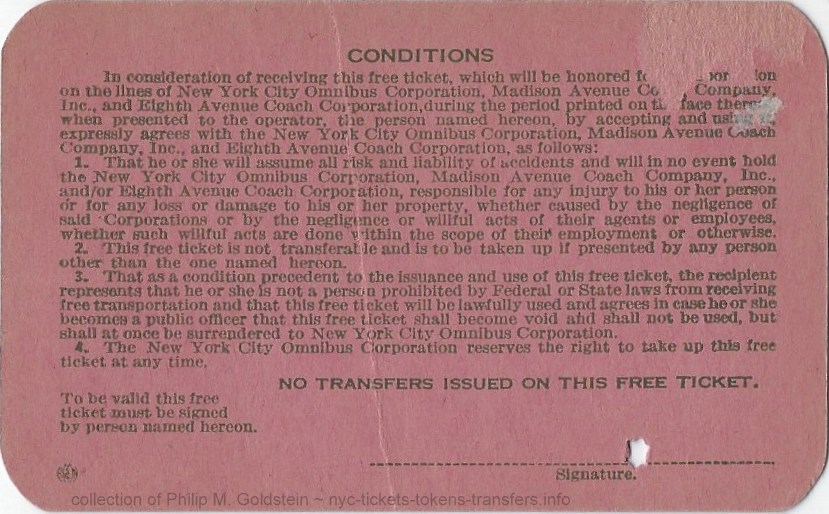 |
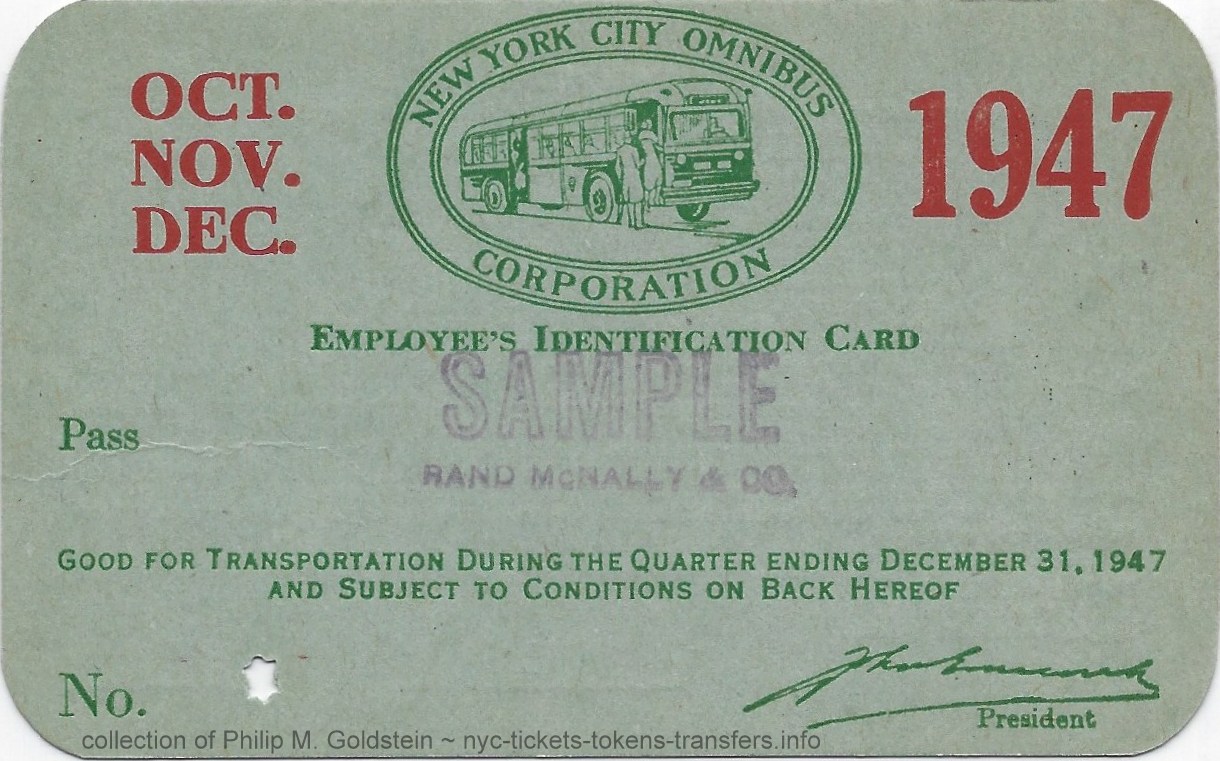 |
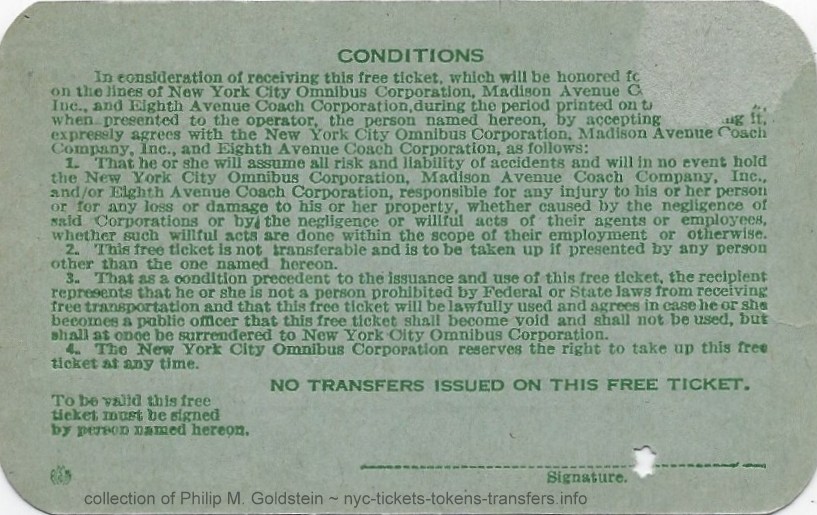 |
|
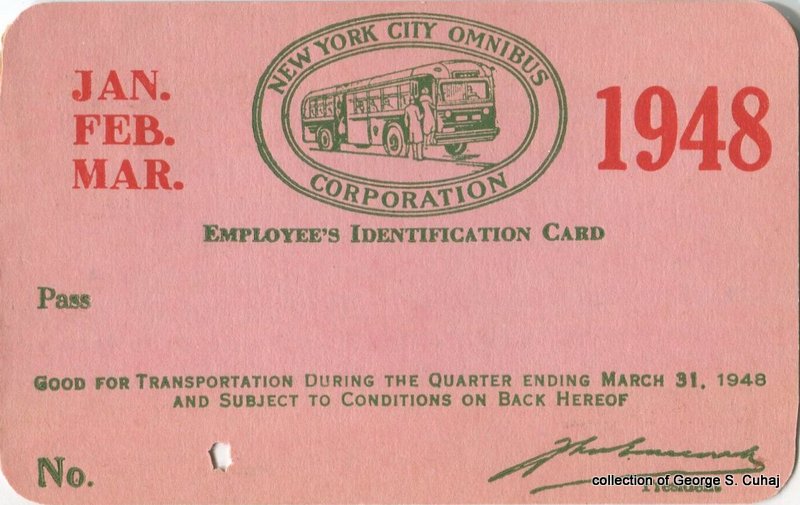 |
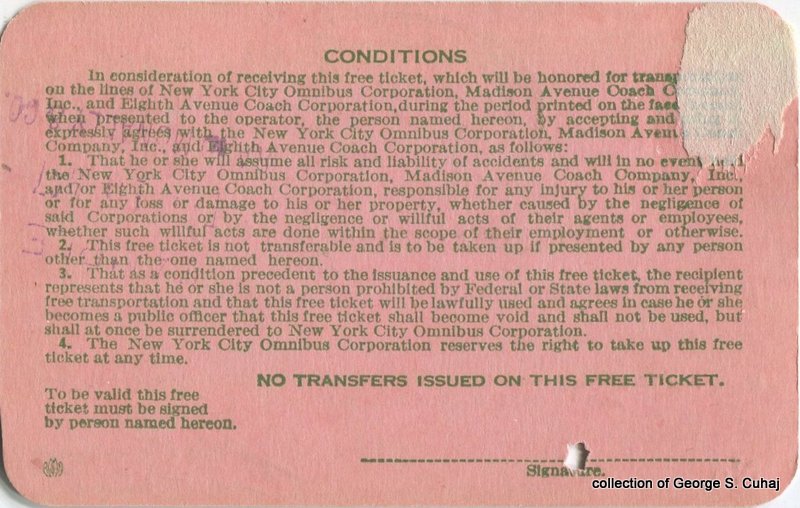 |
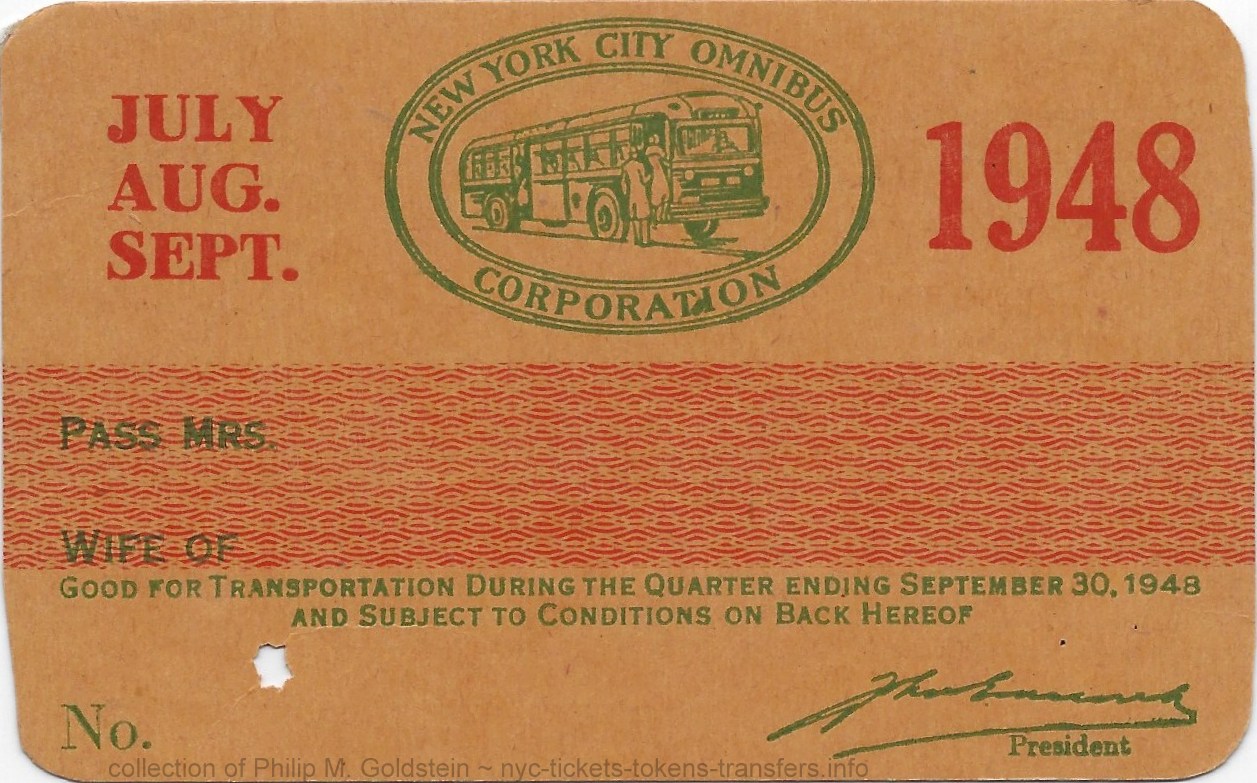 |
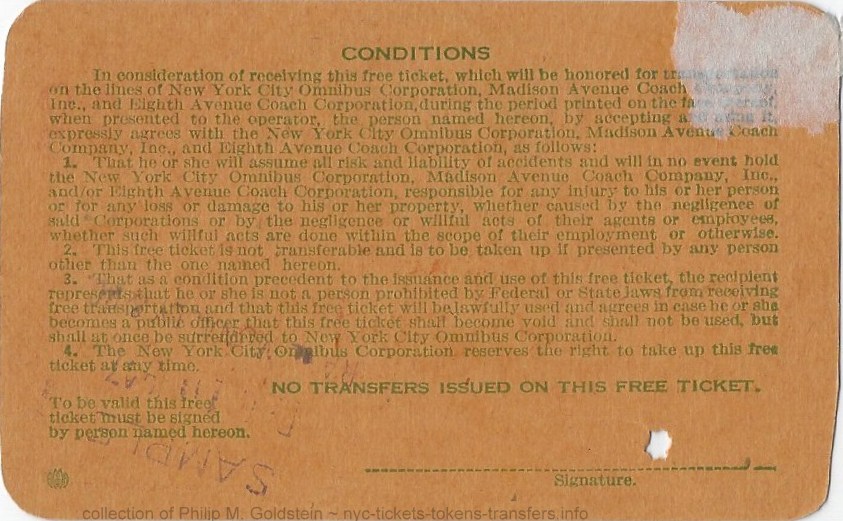 |
|
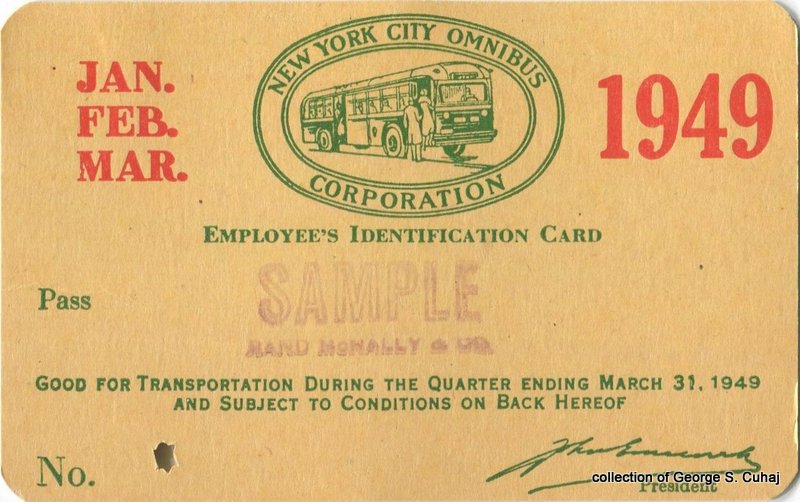 |
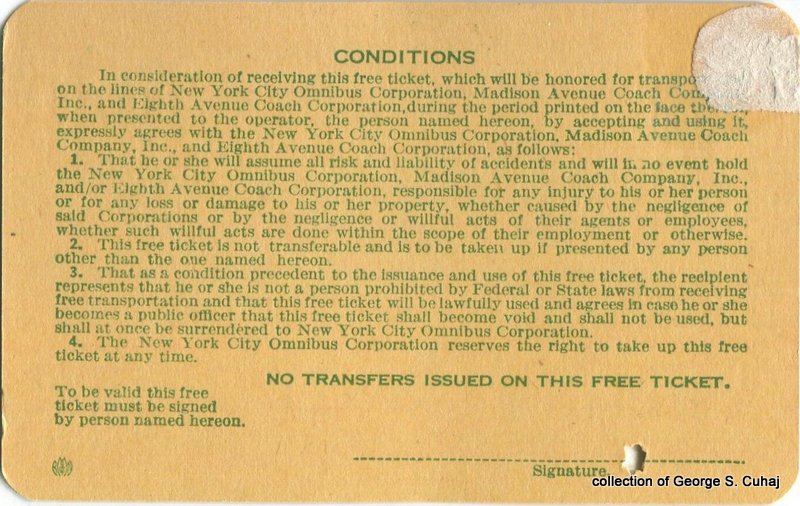 |
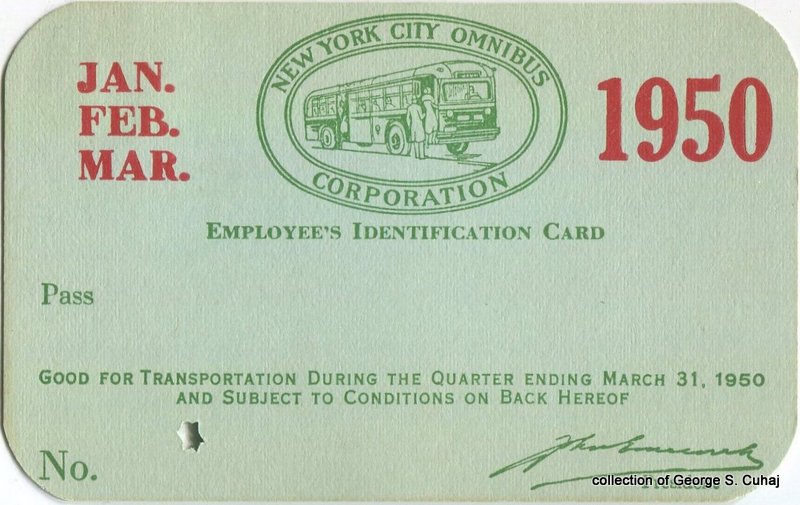 |
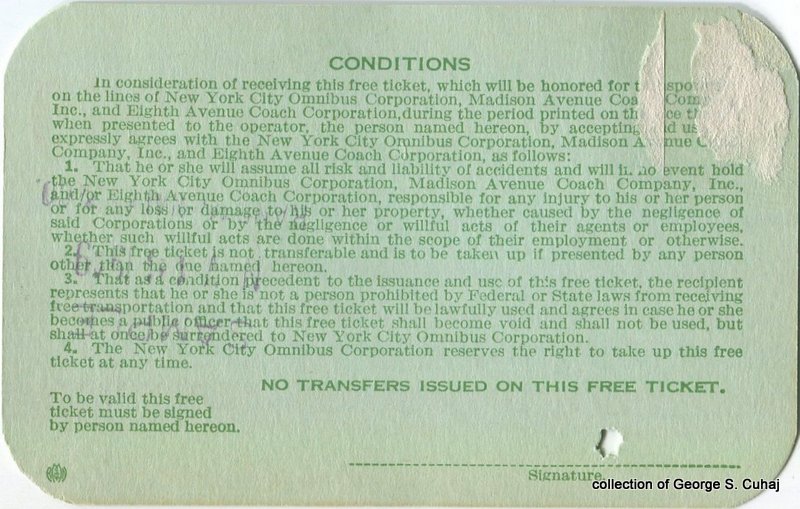 |
|
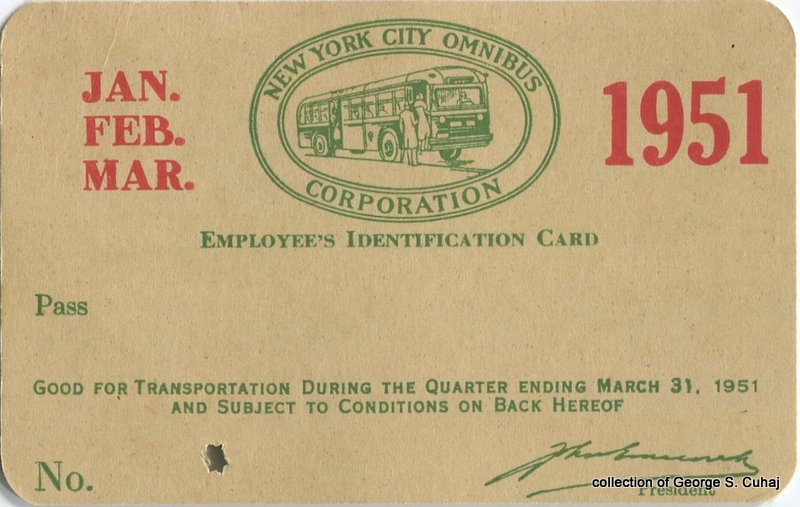 |
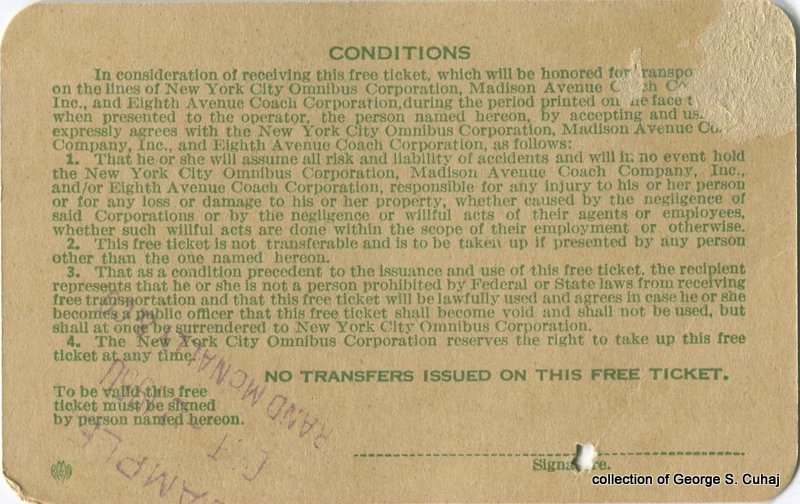 |
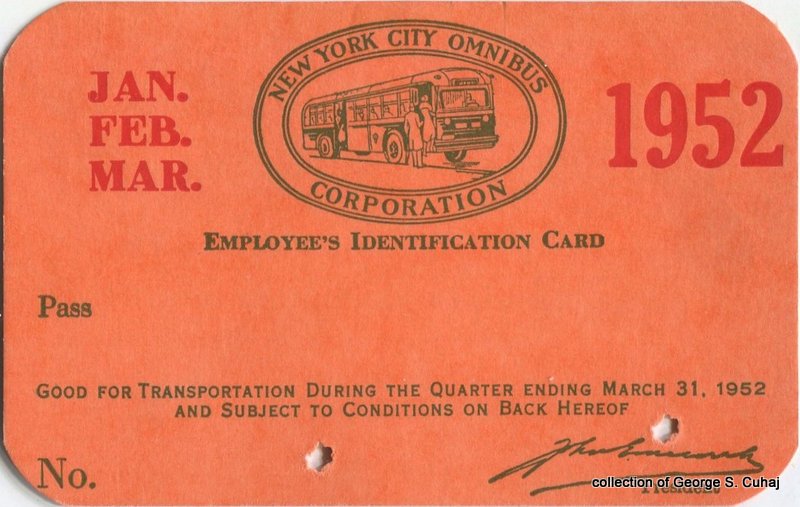 |
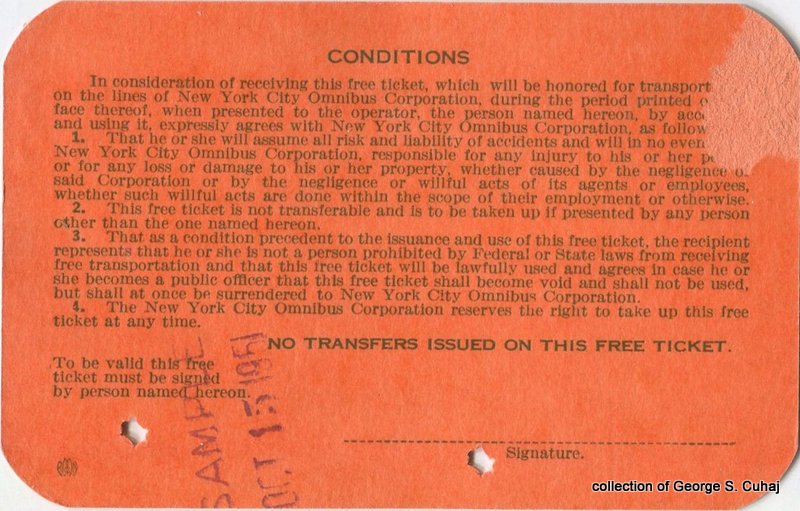 |
|
| . |
||||
| bi-annual format Rand McNally 4" x 2 1/2" (reduced 25%) |
||||
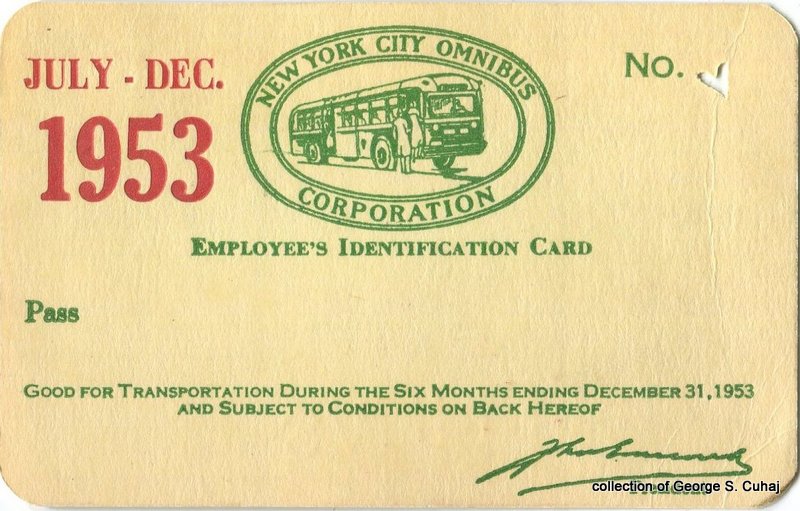 |
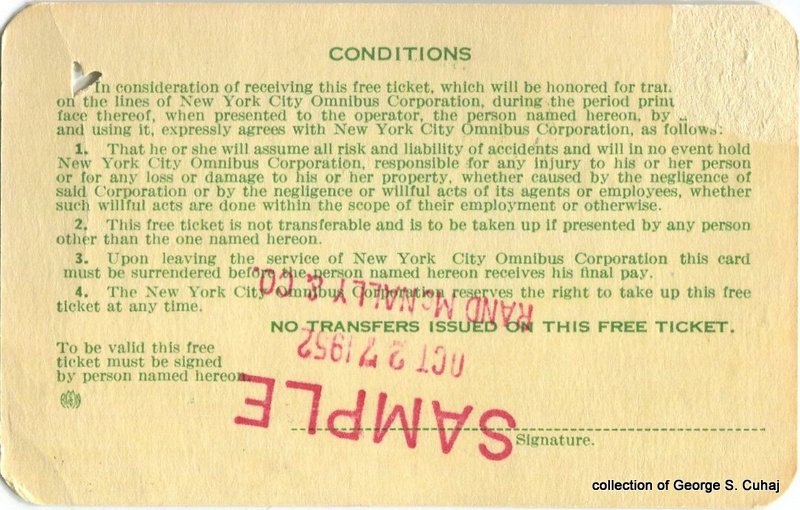 |
..... | 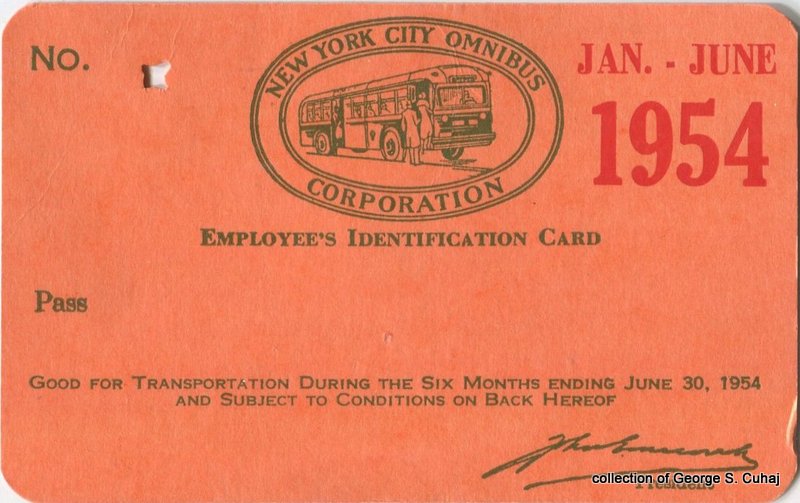 |
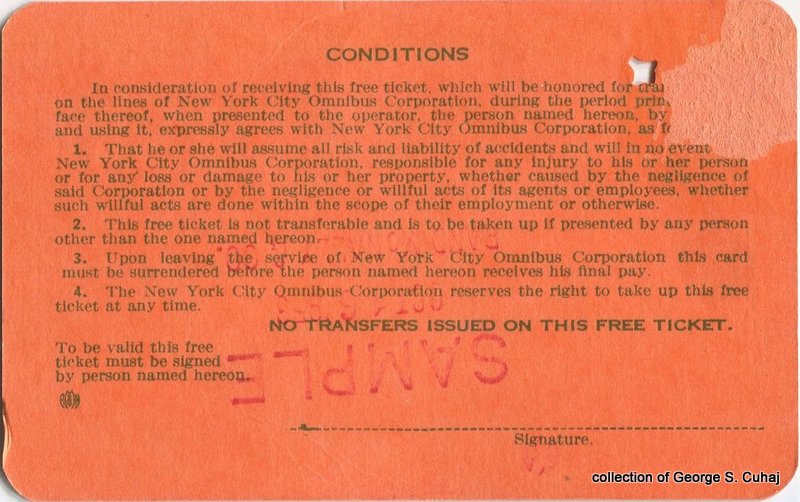 |
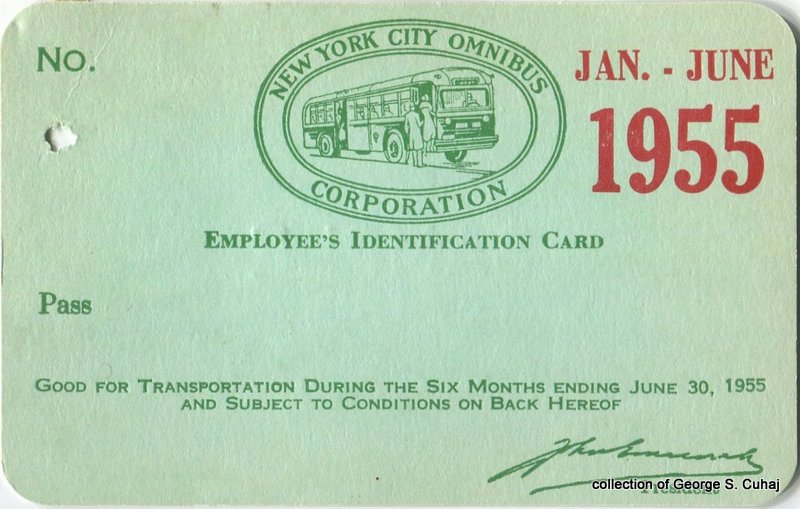 |
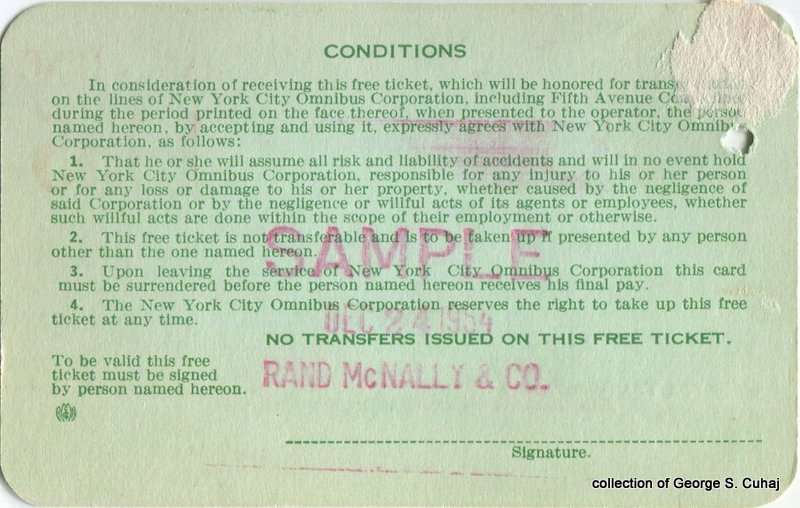 |
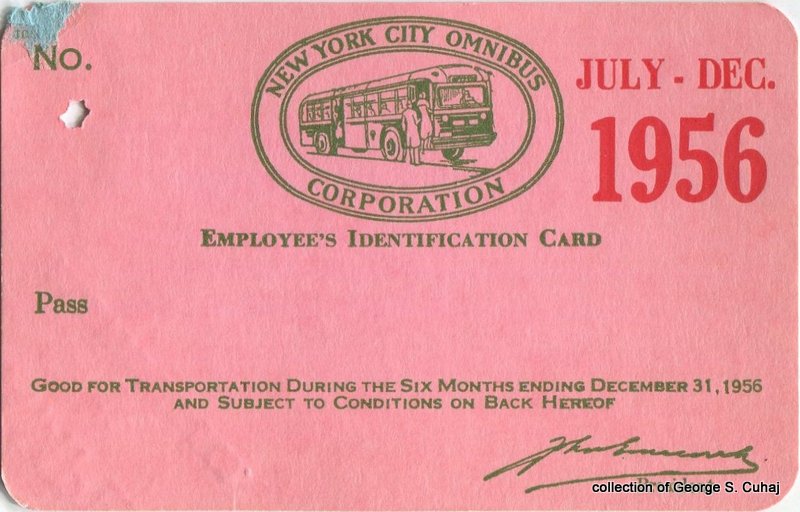 |
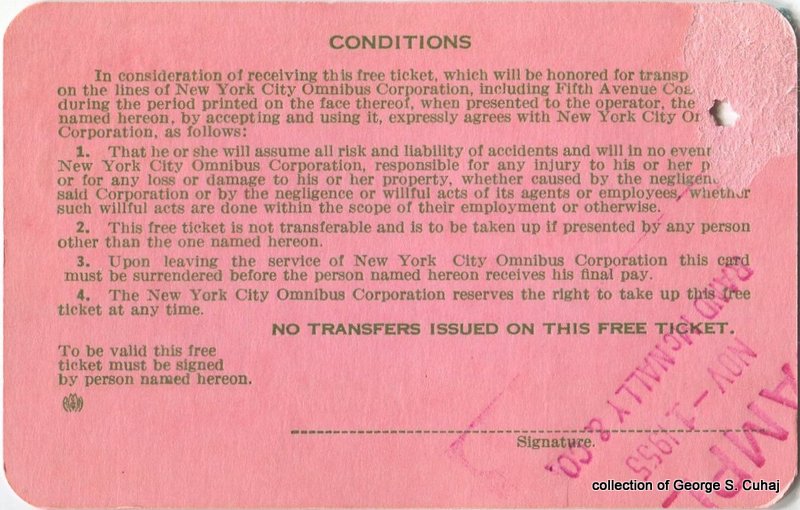 |
|
One of the benefits of being the spouse of a railroad employee, was being eligible for free travel. Obviously, the New York City Ominbus Corp thought it appropriate to continue this privilege.
| Employees Wives Passes quarterly format Rand McNally 4" x 2 1/2" (reduced 25%) |
||||
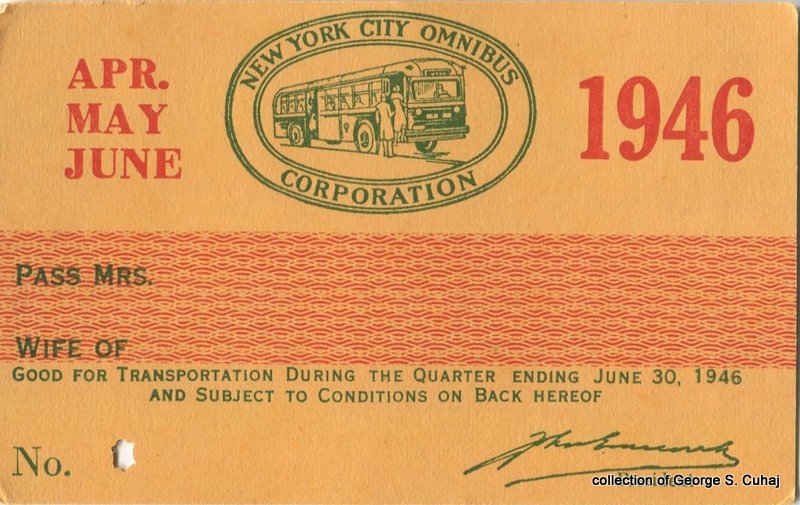 |
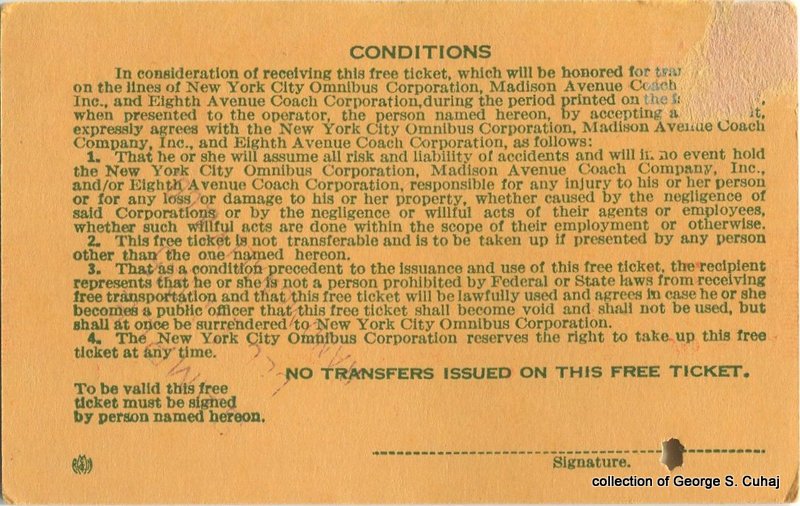 |
..... | 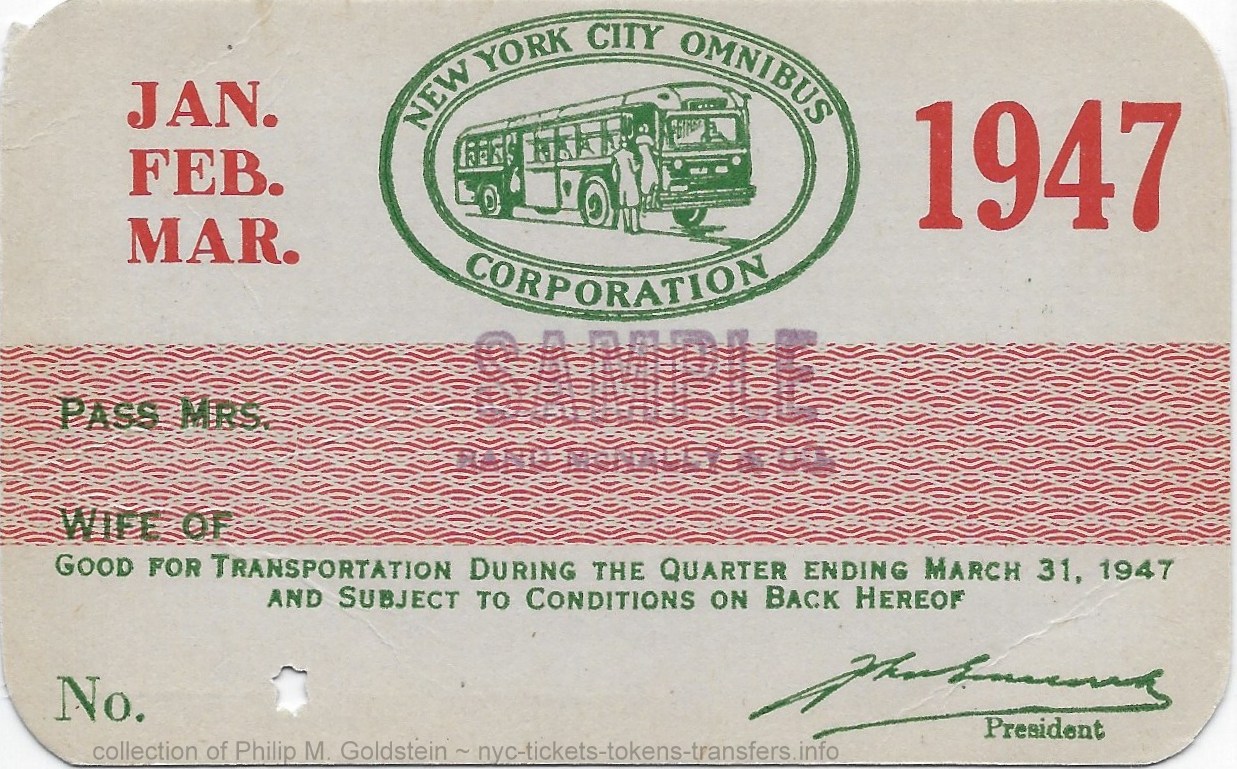 |
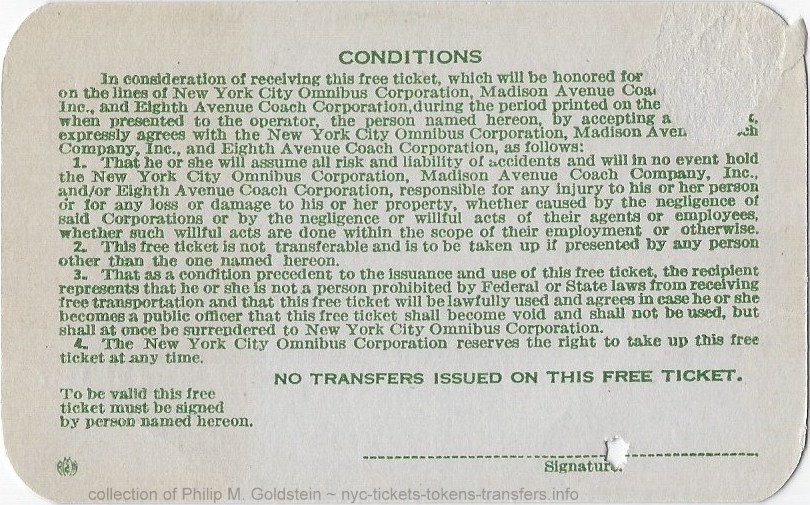 |
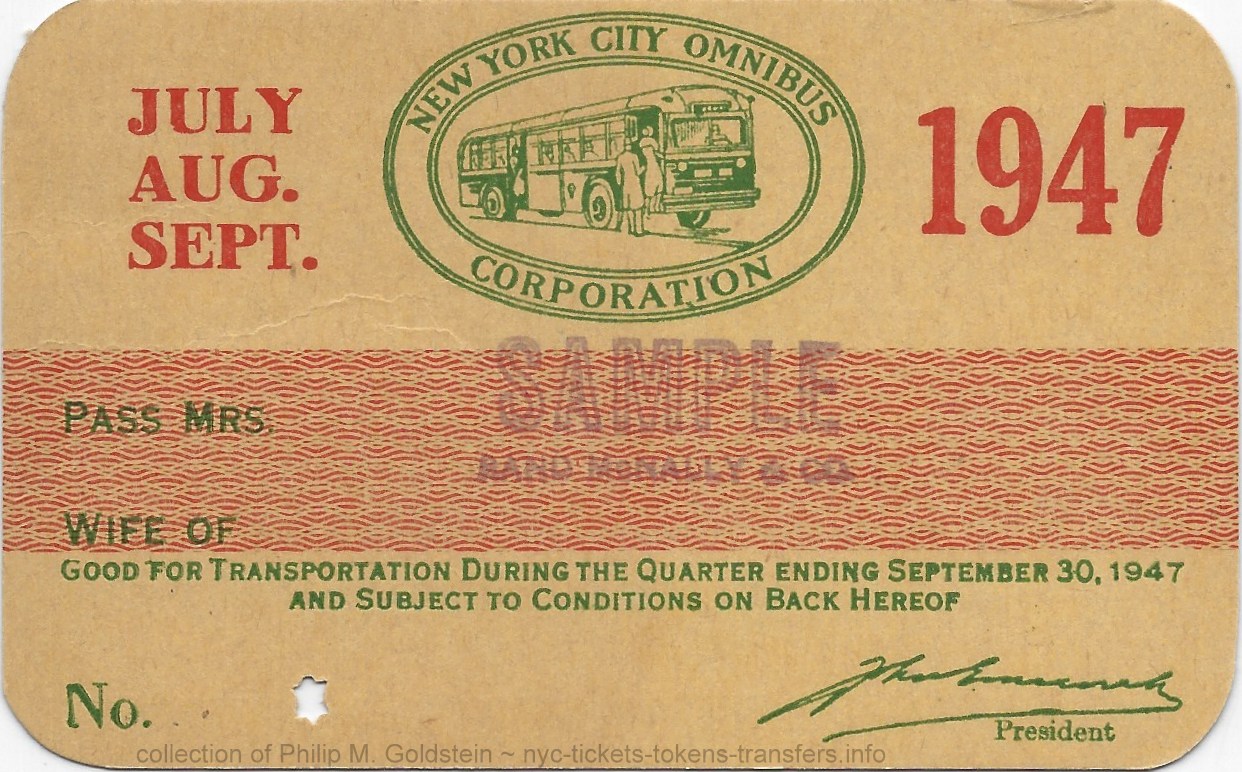 |
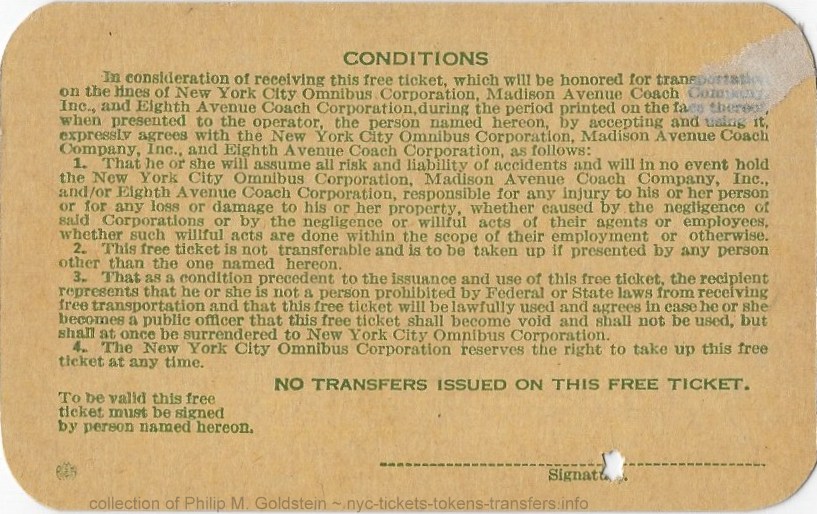 |
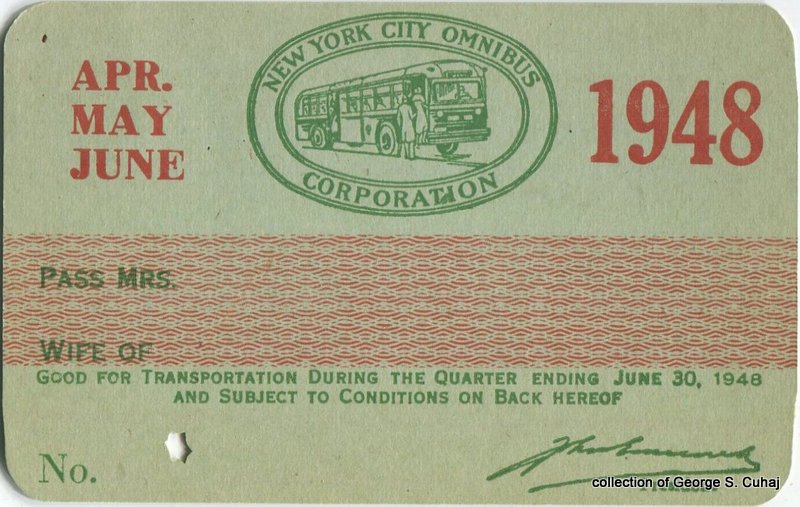 |
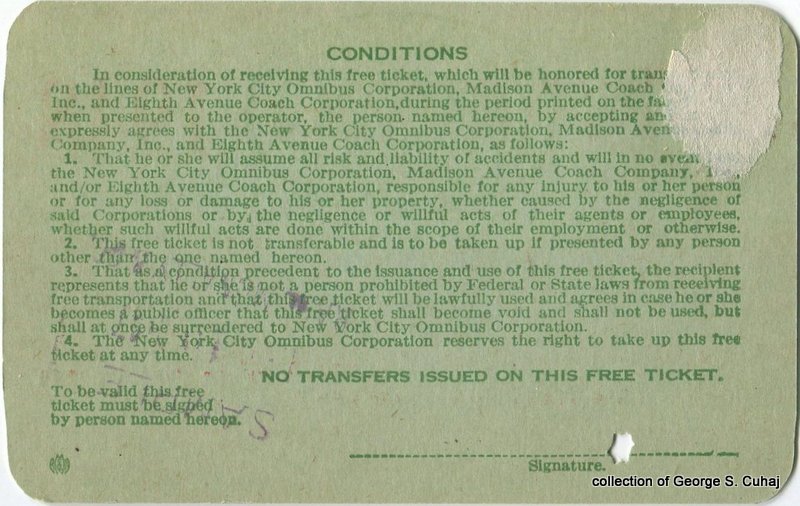 |
|
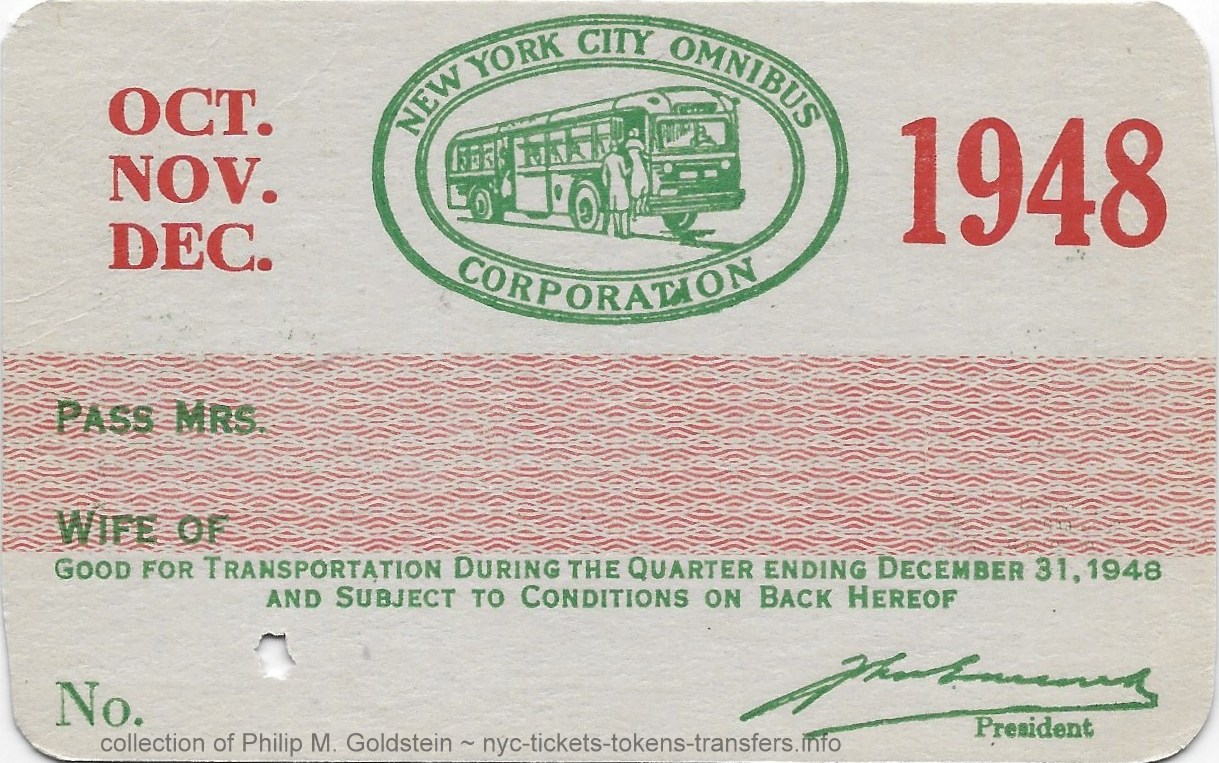 |
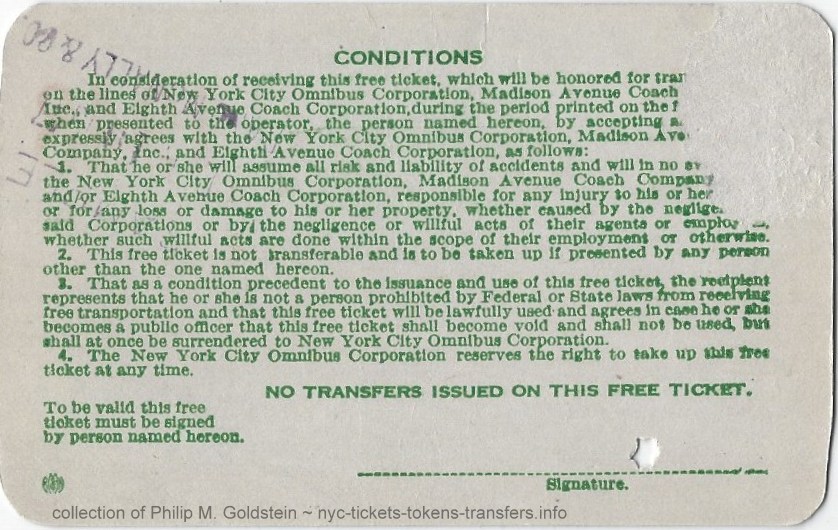 |
|||
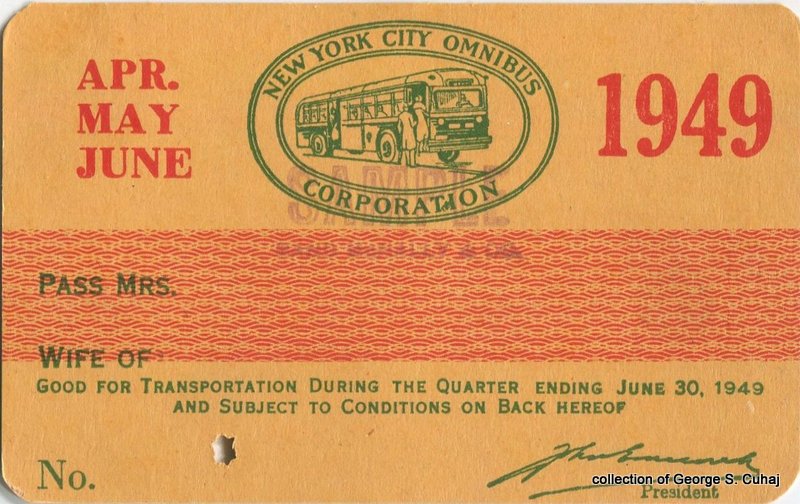 |
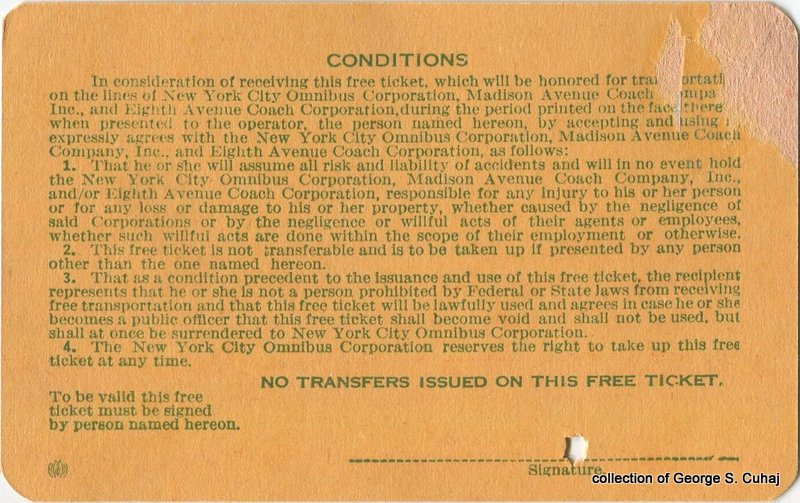 |
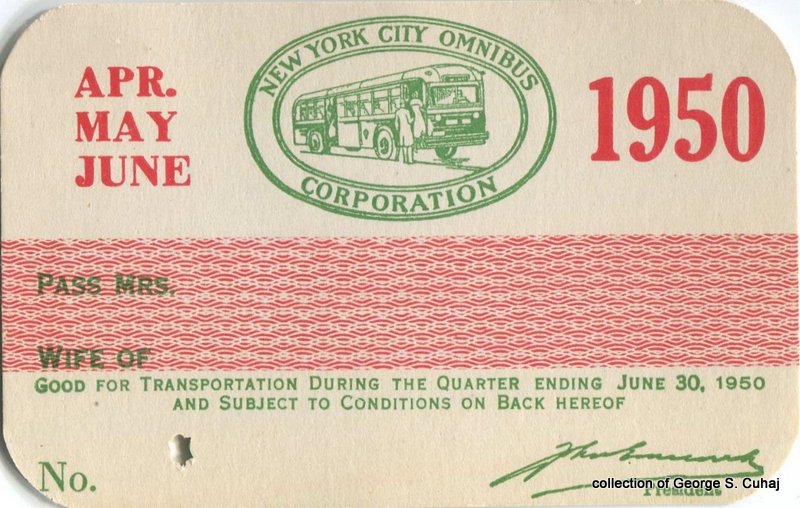 |
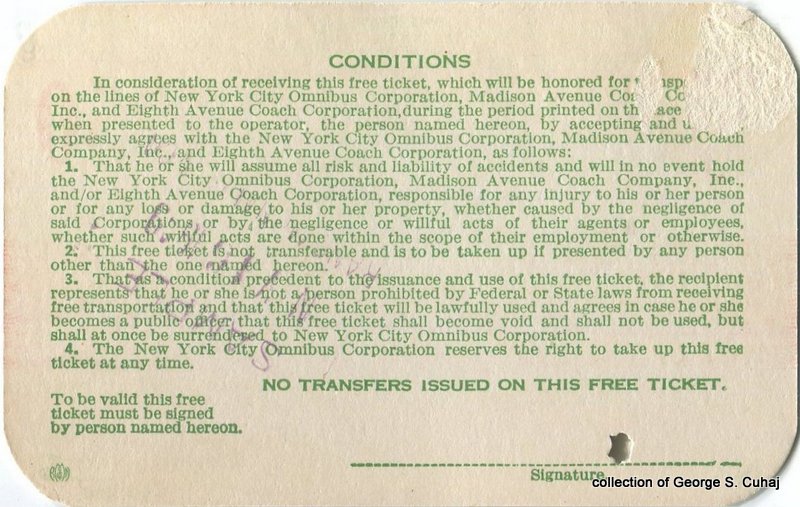 |
|
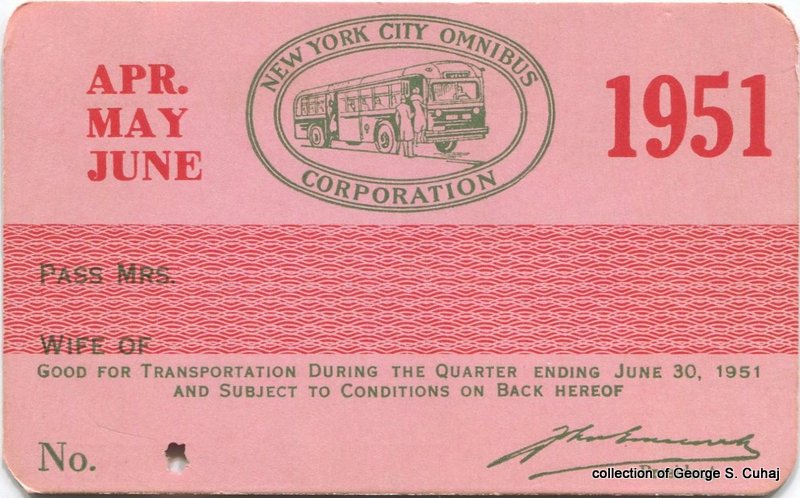 |
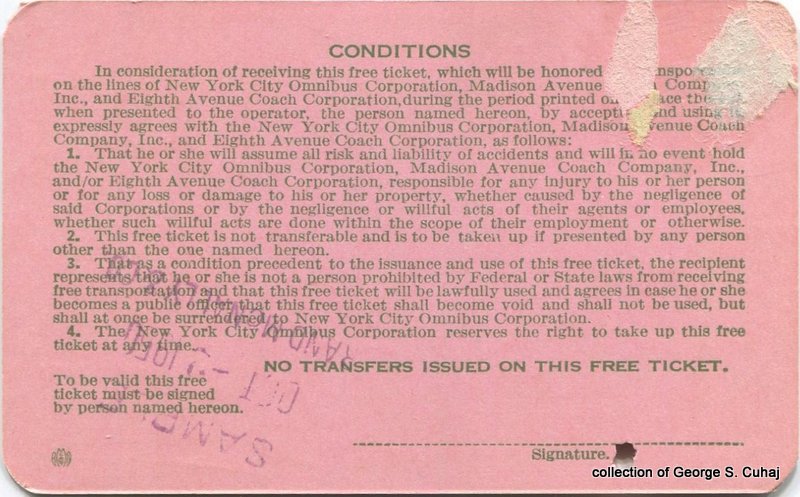 |
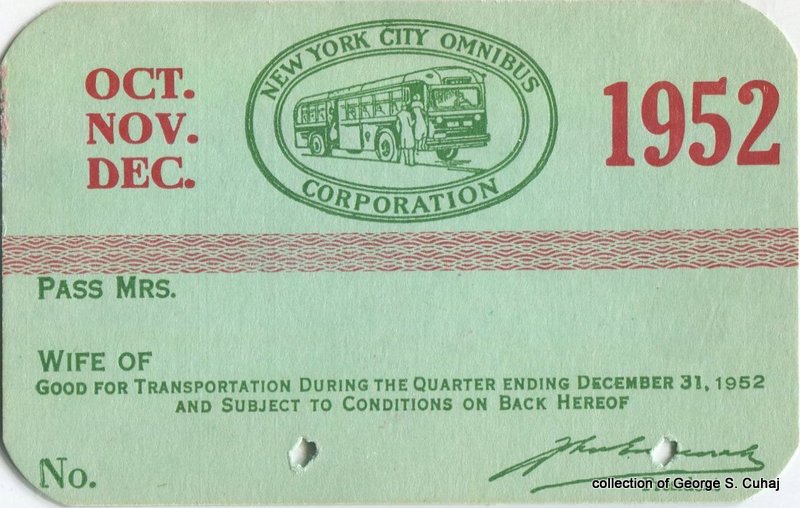 |
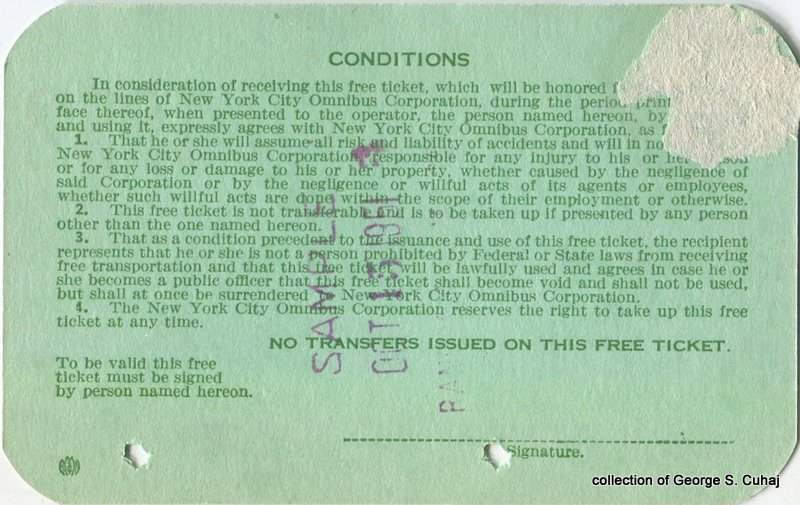 |
|
| . bi-annual format |
||||
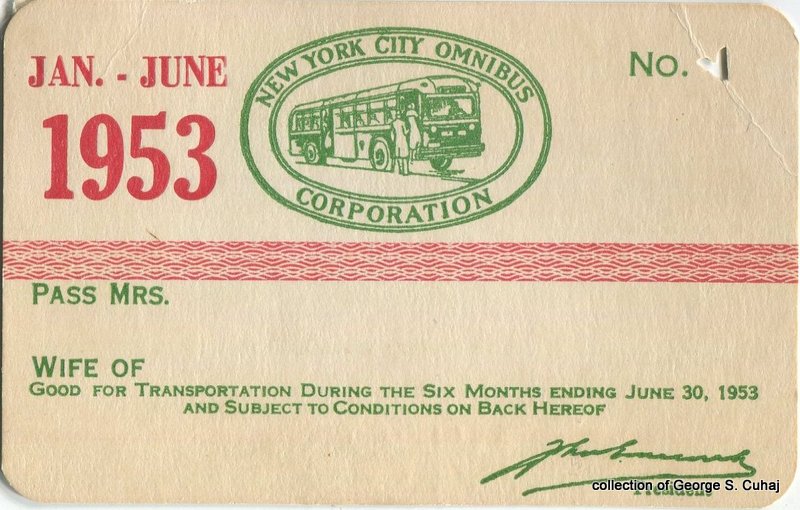 |
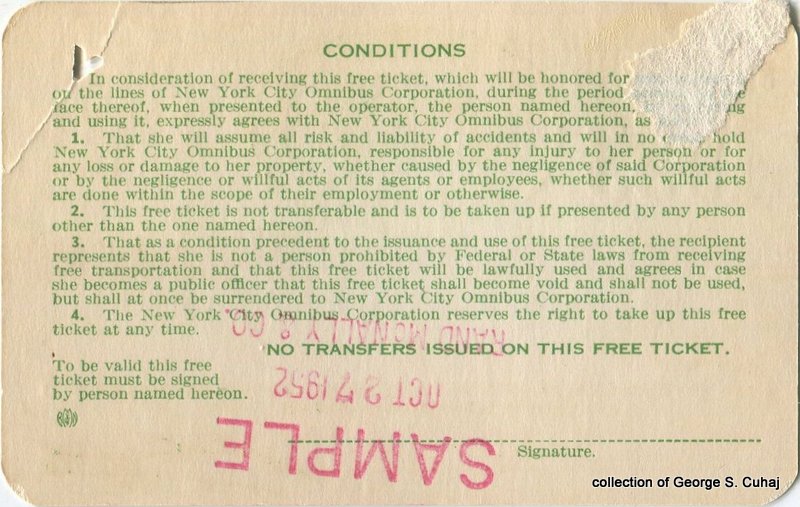 |
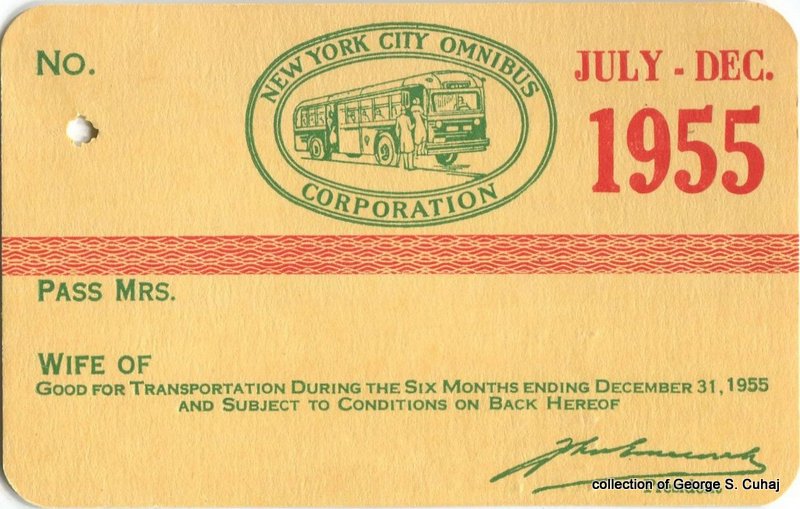 |
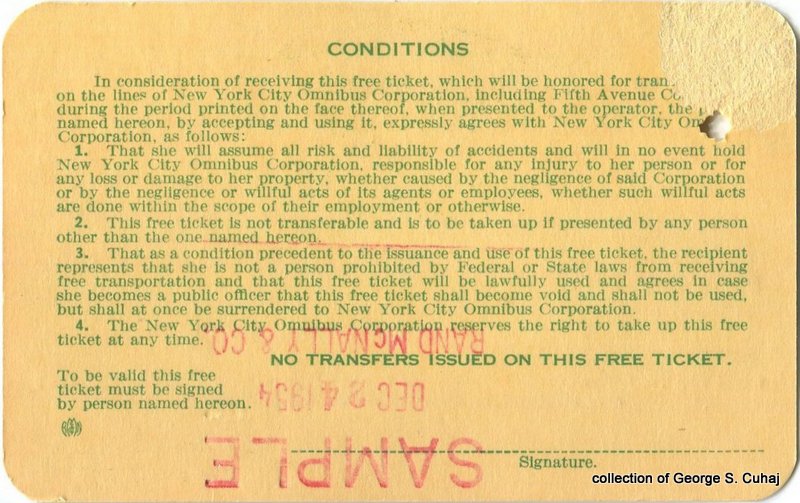 |
|
..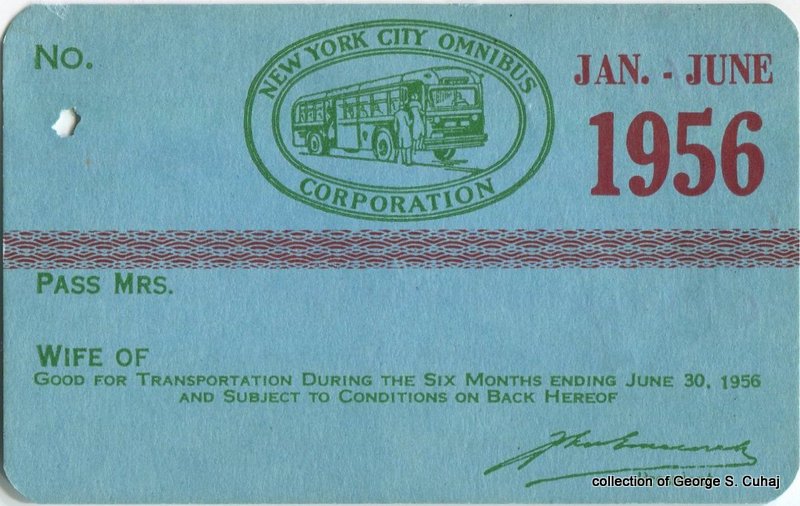 .. ..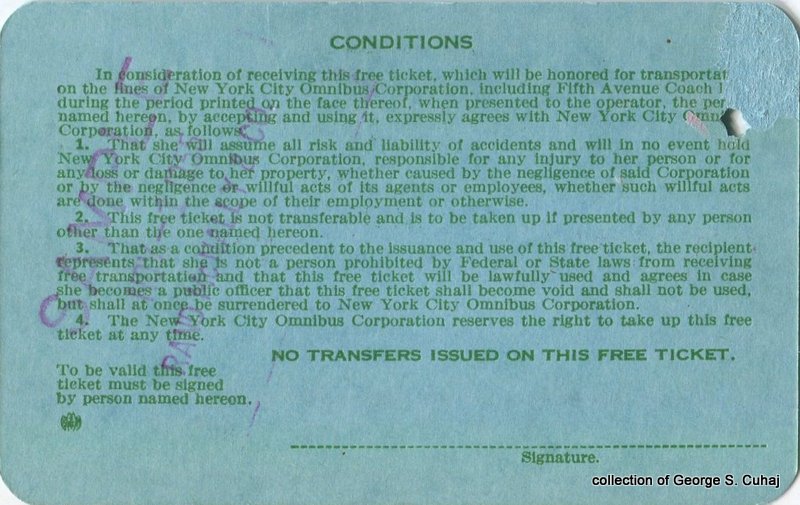 |
||||
These New York City Omnibus passes above are known as samples from Rand McNally.
Many
years and varieties are known. Most are seen with damage in upper right
corner of reverse, presumably from being detached from a salesmen's
catalog or portfolio.
$6.00 - $7.50 each
.
New York City Transit Authority - Official Use Passes
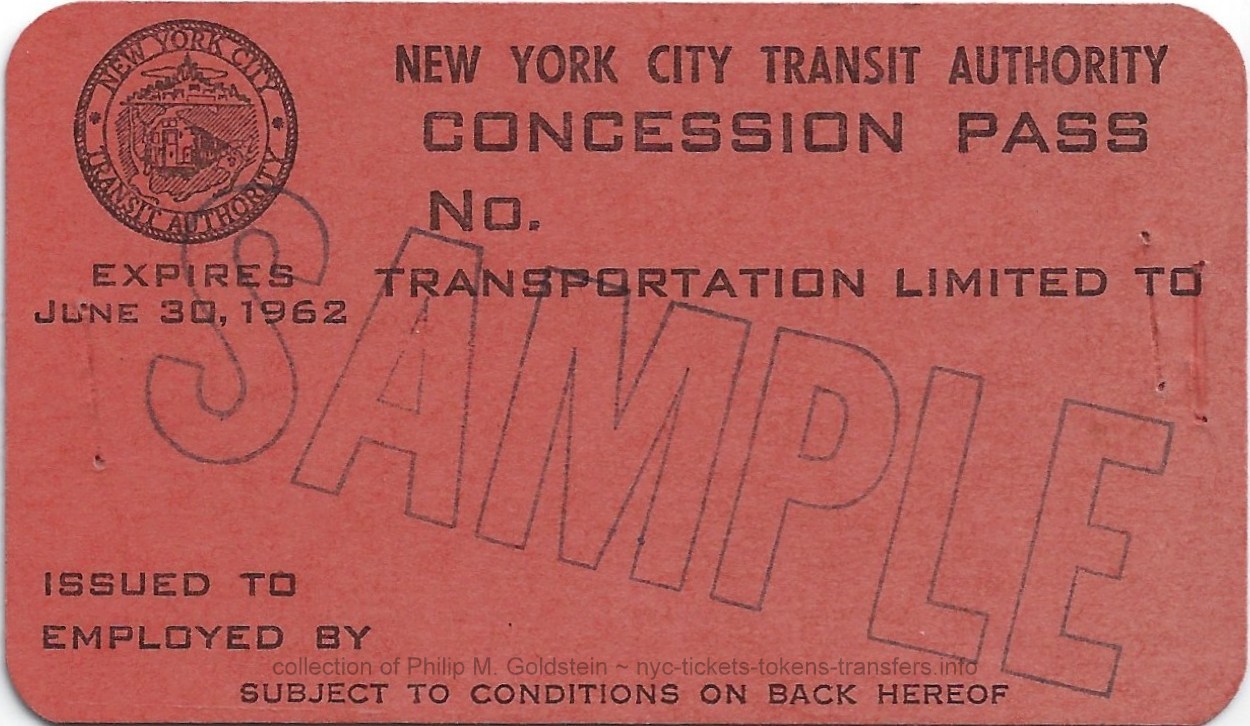 |
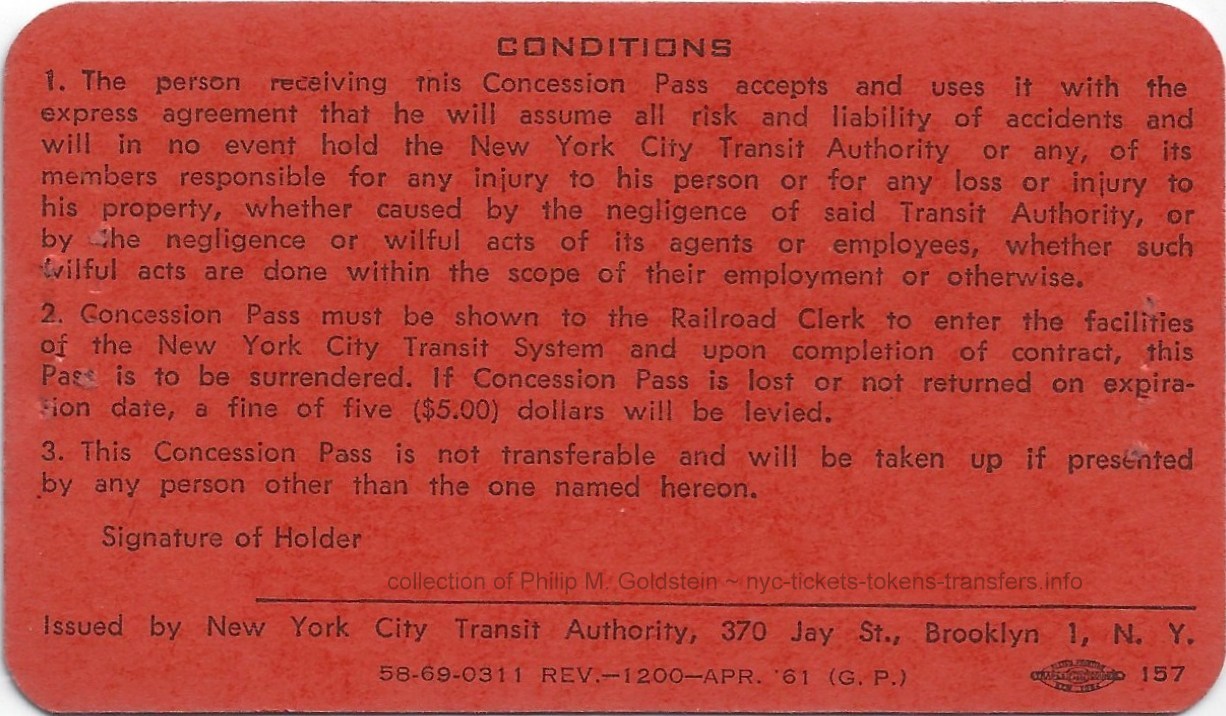 |
| Concession Pass - expires June 30, 1962 58-69-0311-REV.-1200-APR. '61 (G. P.) 4" x 2 3/8" |
|
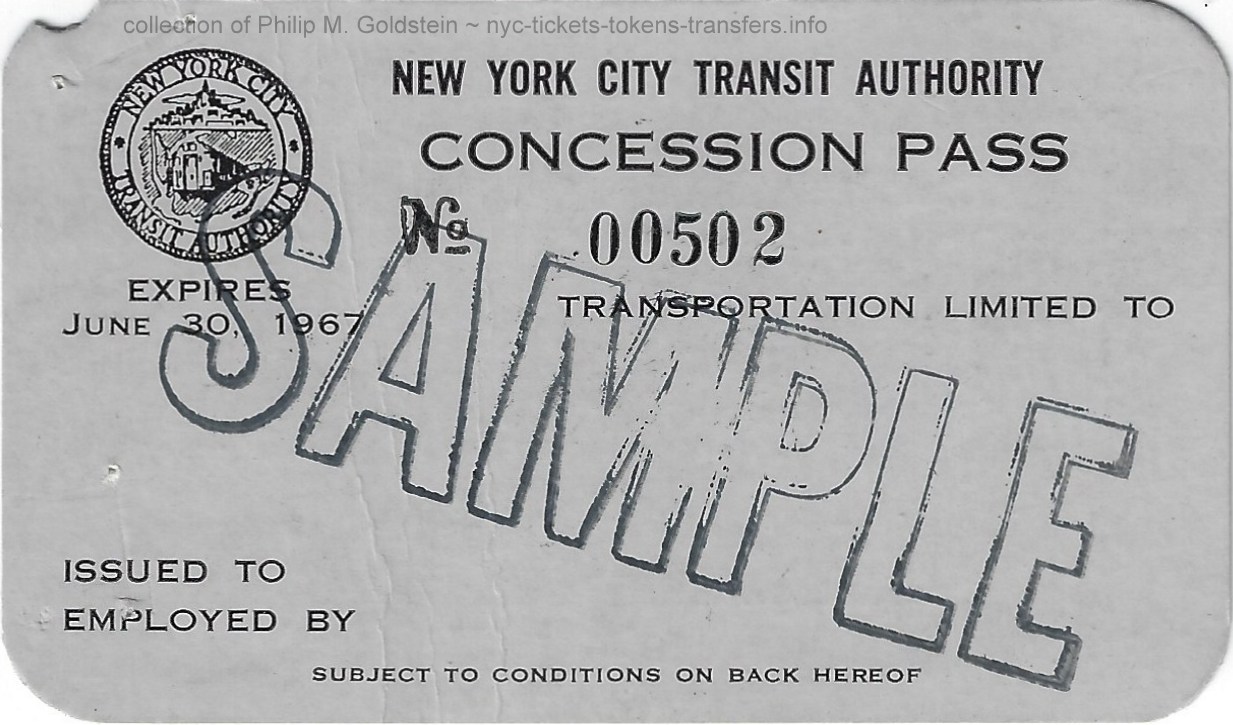 |
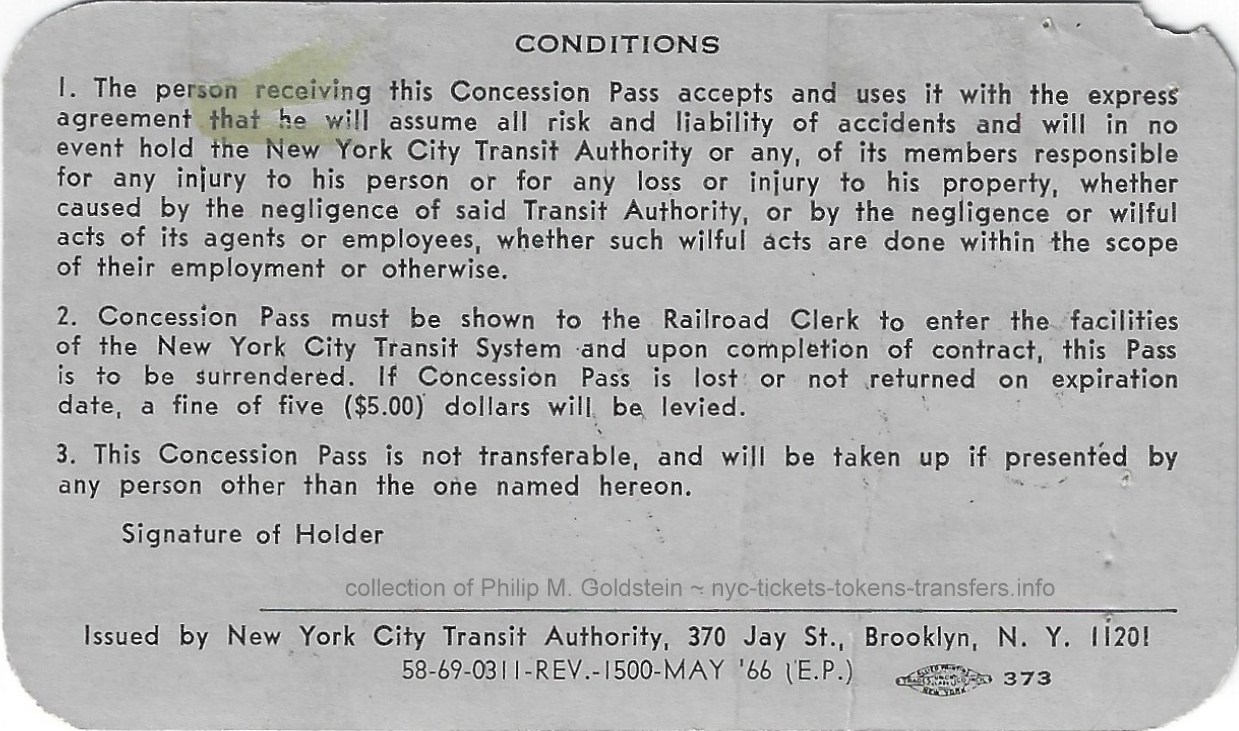 |
| Concession Pass - expires June 30, 1967 58-69-0311-REV.-1500-MAY-'66 (E.P.) 4" x 2 3/8" |
|
| . . |
|
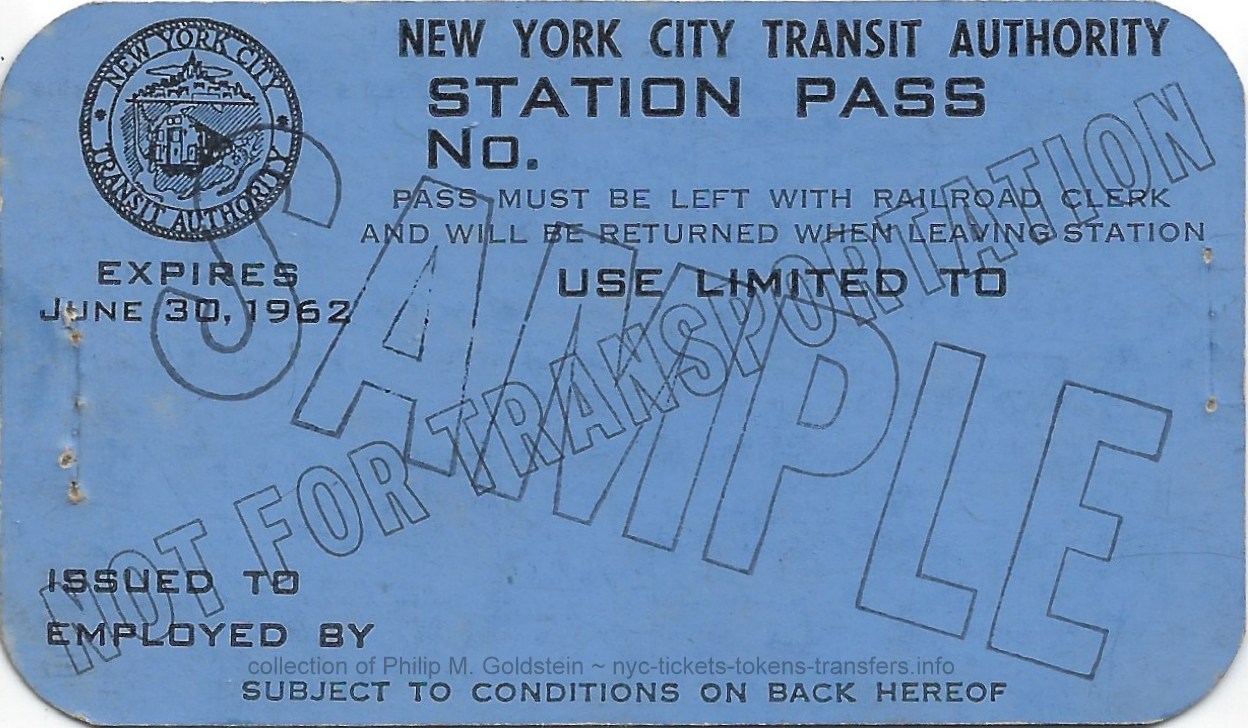 |
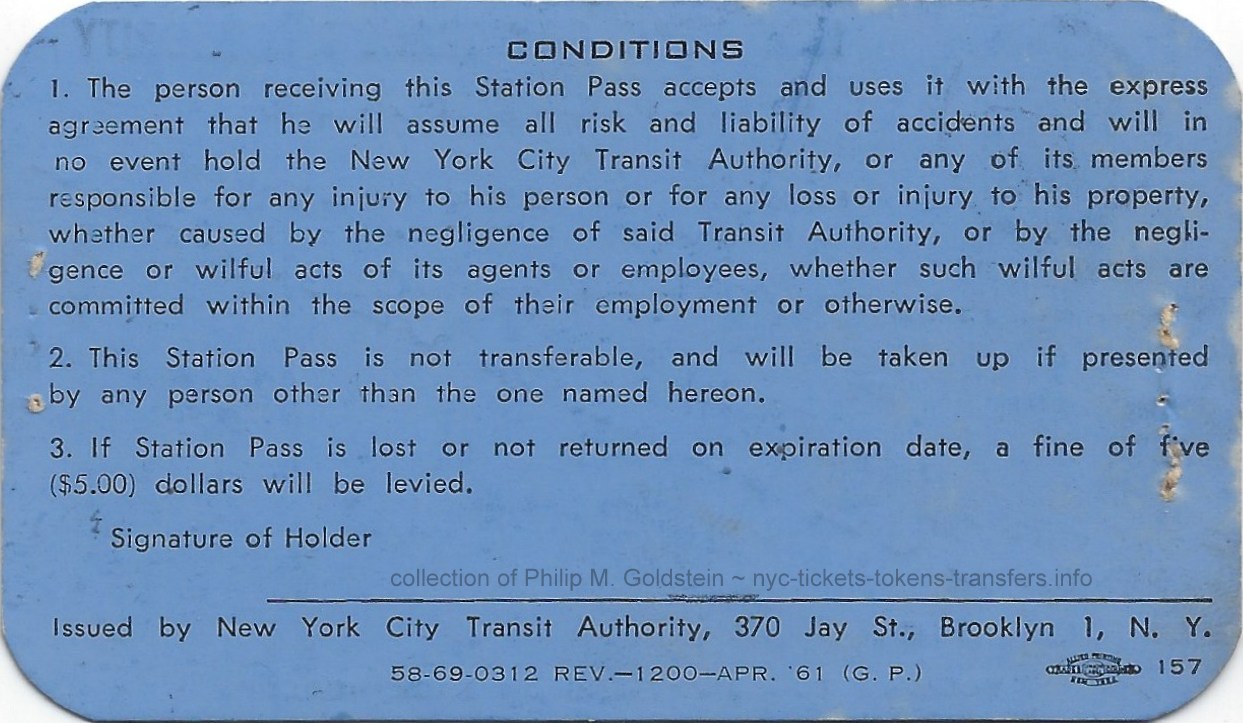 |
| Station Pass - expires June 30, 1967 NOT FOR TRANSPORTATION (note that this pass stipulates it must be left with clerk and wil be returned upon leaving station.) 58-69-0311-REV.-1200-APR. '61 (G. P.) 4" x 2 3/8" |
|
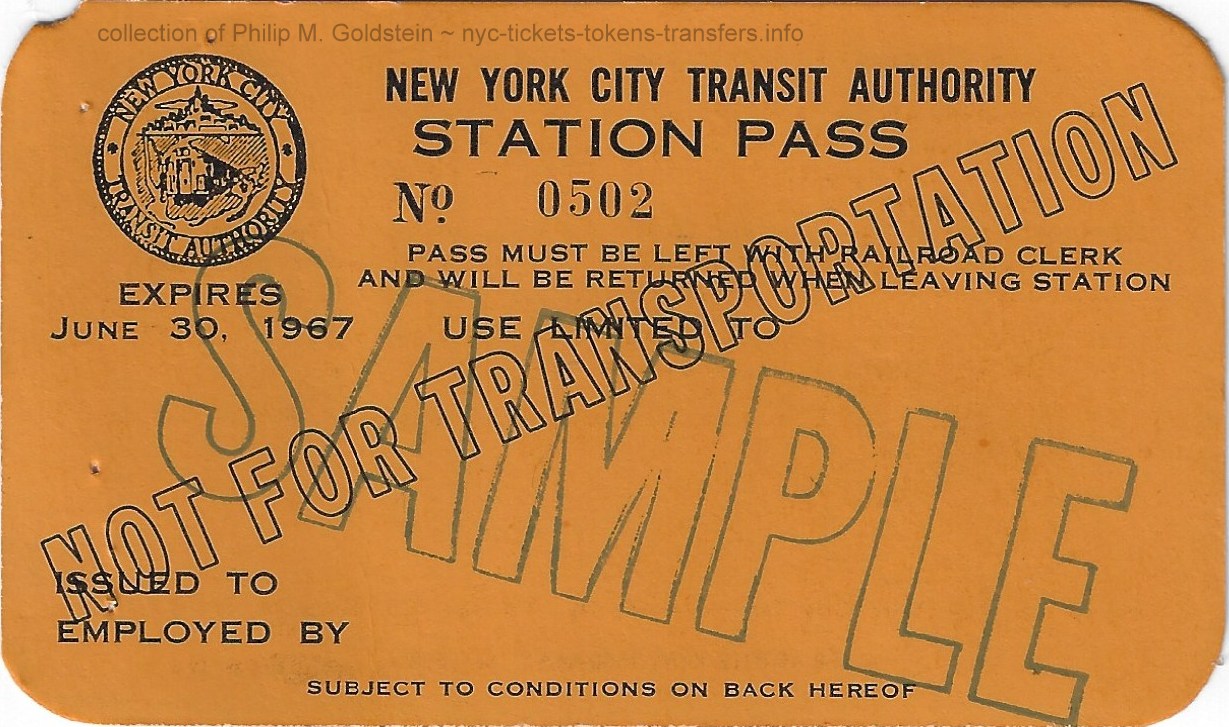 |
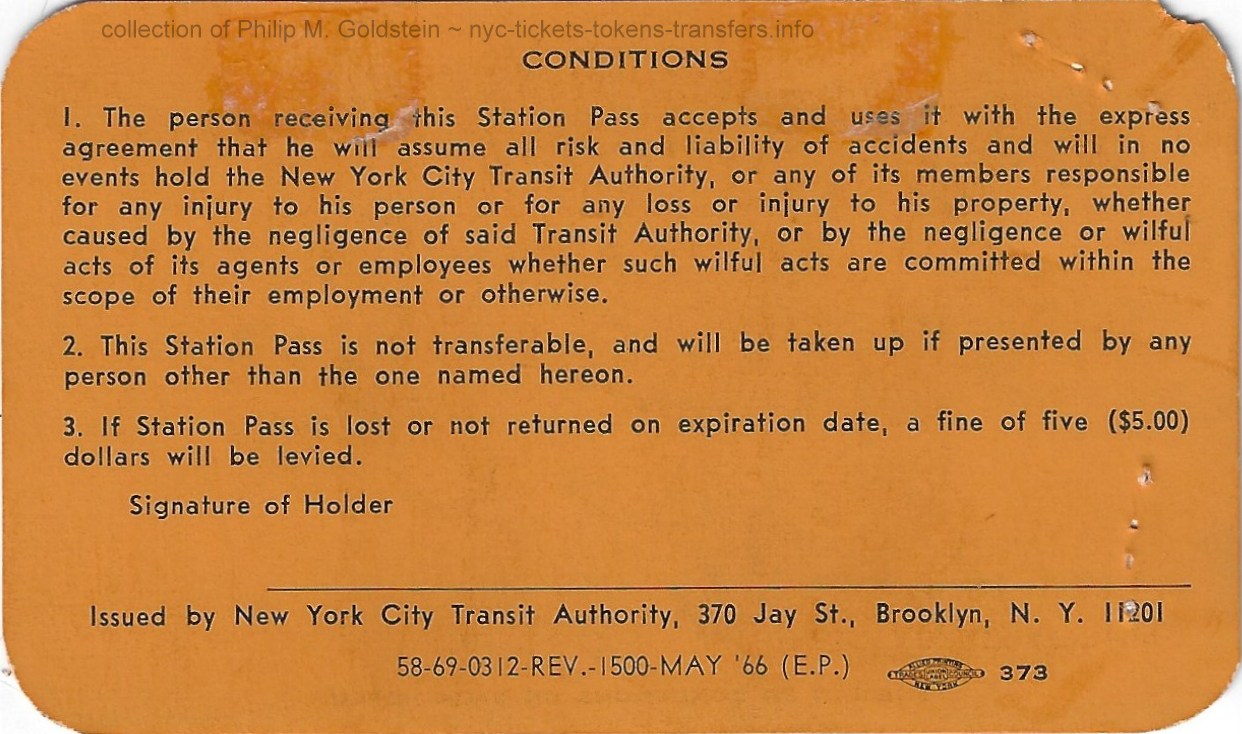 |
| Station Pass - expires June 30, 1967 NOT FOR TRANSPORTATION (note that this pass stipulates it must be left with clerk and wil be returned upon leaving station.) 58-69-0312-REV.-1500-MAY-'66 (E.P.) 4" x 2 3/8" |
|
New York City Transit Authority - Employee Identification
.
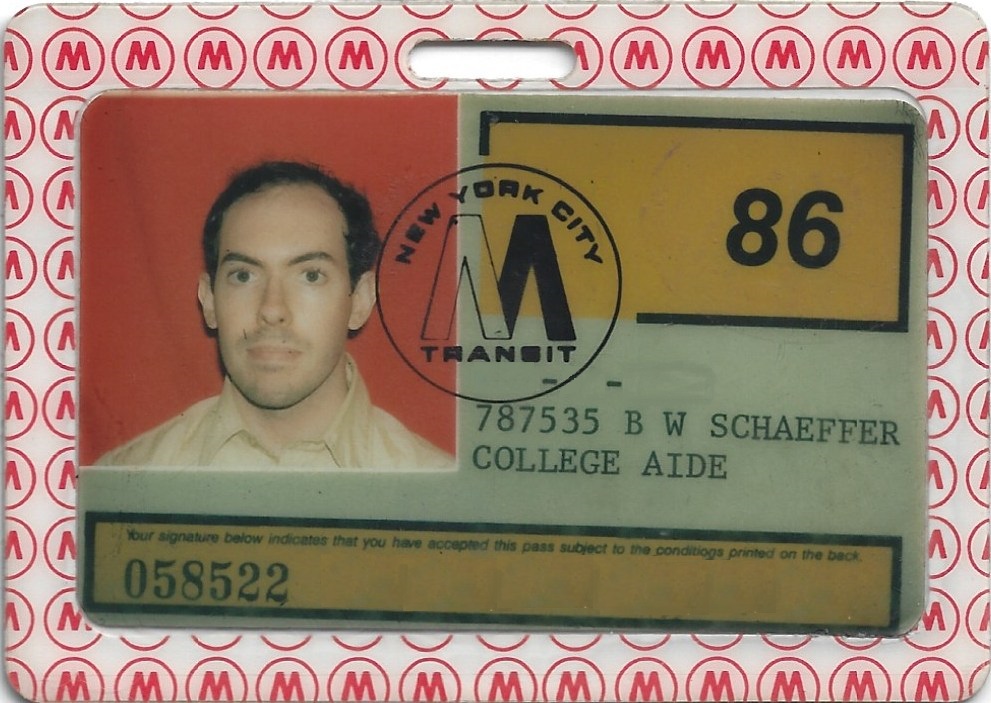 |
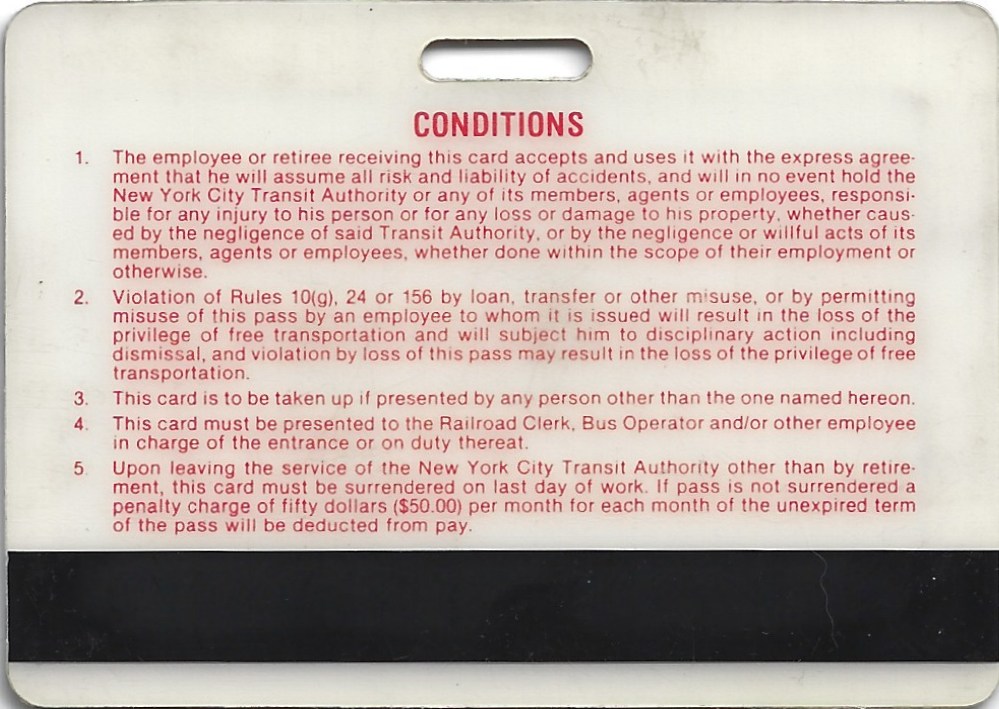 |
| Employees Pass - 1986 3 1/4" x 2 5/16" |
|
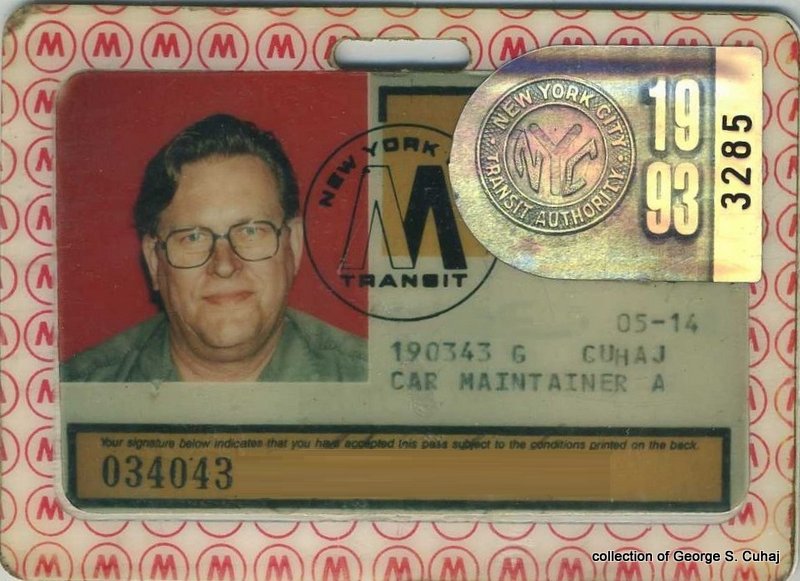 |
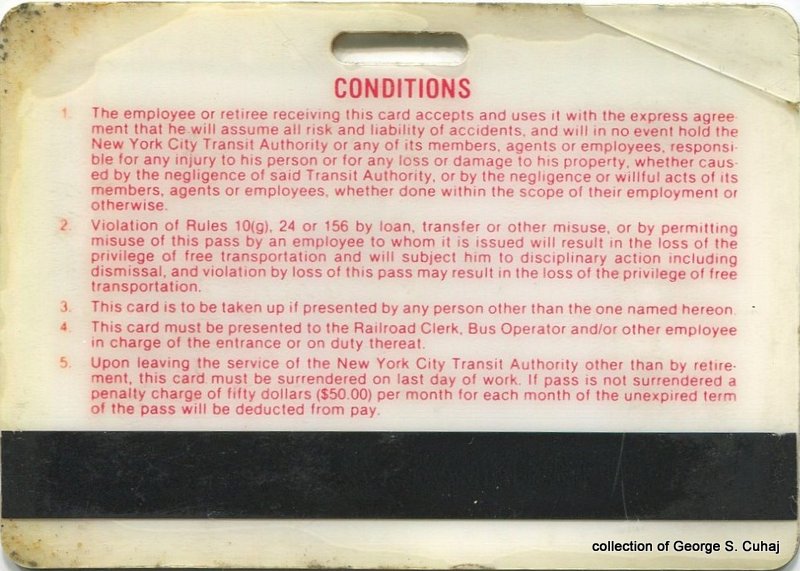 |
| Employees Pass - 1993 w/ security hologram 3 1/4" x 2 5/16" |
|
![]()
.
|
||||||||||
![]()